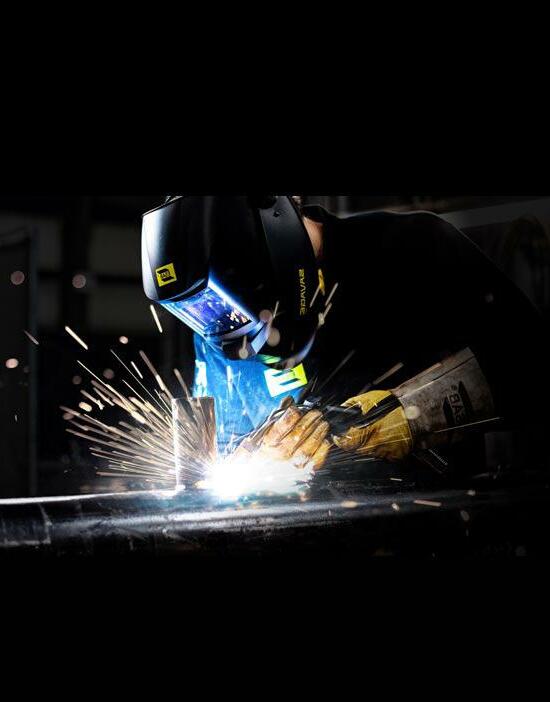ISSUE 9

INSIDE:
BUILD MORE AND BUILD BETTER
Developing Nigeria’s —and Africa’s— infrastructure for gas-to-power projects requires the right kind of vision
GIVE IT THE GREEN LIGHT
Africa’s competitive edge as a clean hydrogen hub

ISSUE 9

INSIDE:
Developing Nigeria’s —and Africa’s— infrastructure for gas-to-power projects requires the right kind of vision
GIVE IT THE GREEN LIGHT
Africa’s competitive edge as a clean hydrogen hub
RSA R45.00

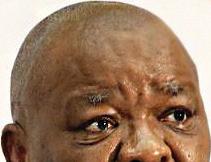
The Department of Mineral Resources & Energy believes a well-managed Just Energy Transition can be a strong driver for new and better jobs, social justice and poverty eradication

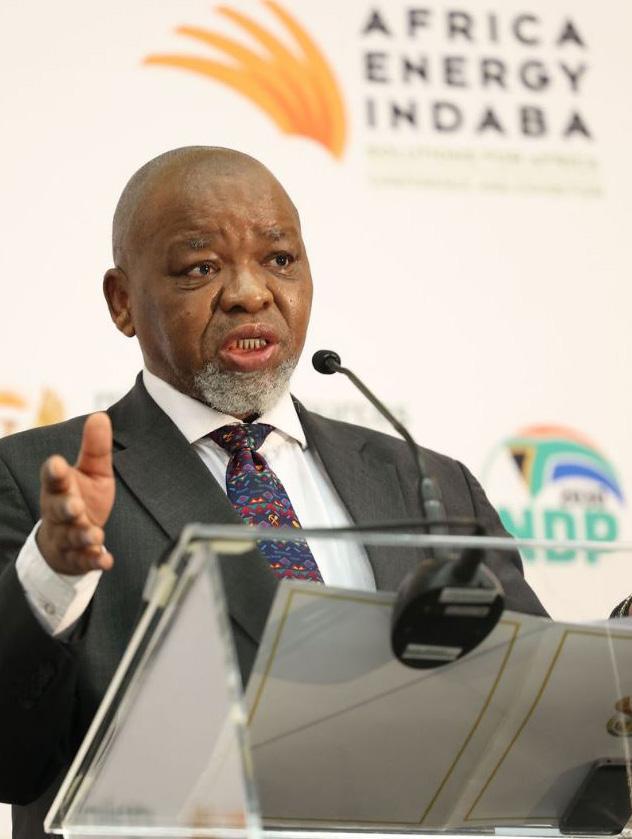
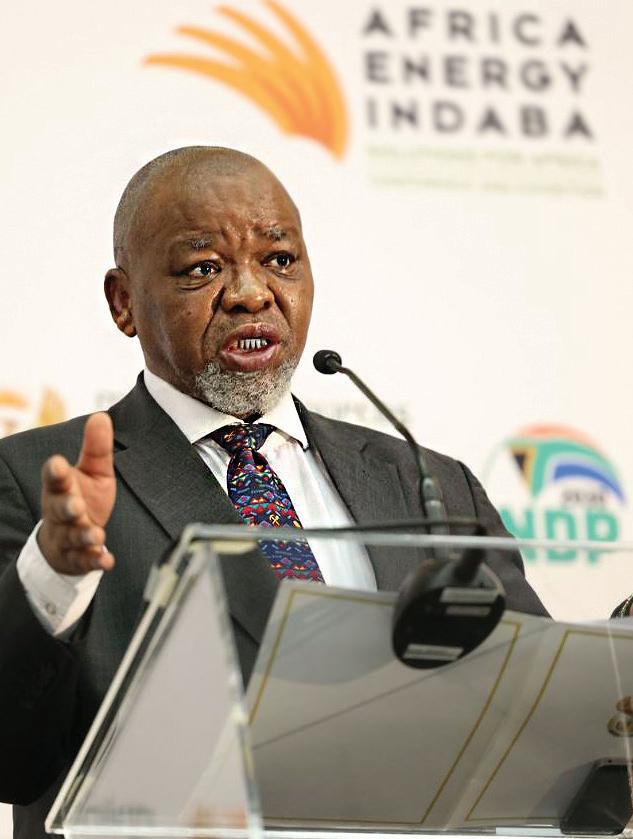

During this time, the Gautrain has carried 126 million train passengers and 38 million bus passengers safely and with almost perfect reliability. Just like the rest of the world, Tthe Gauteng Province is facing, global warming through unsustainable carbon emissions. The transport sector plays an important role in this matter and it is responsible for 18% of all man-made greenhouse gas emissions.


The International Association of Public Transport estimates that by 2025, 60% of the world population will live in cities and there will be 6.2 billion private motorised trips made every day in cities worldwide.
The end result will be gridlock, pollution, road traffic accidents and time wasted. The current trajectory is unsustainable, and public transport solutions are needed. Earlier in the year, the MEC for the Gauteng Department of Roads and Public Transport, Jacob Mamabolo, made an announcement determining the Phase 1 route of the proposed extension of the rapid rail line from Sandton to the north-western areas of Gauteng. A plan which will support the greening of the Province’s economy. In 2014, the CSIR did a study that calculated the impact of people moving out of their cars and onto rail – specifically the Gautrain. The institute calculated that by 2020 over 70,000
It has been 12 years since Gautrain first opened its doors to passengers on 8 June 2010. Since then, it has become a system
embedded in the public transport infrastructure and economy of Gauteng.
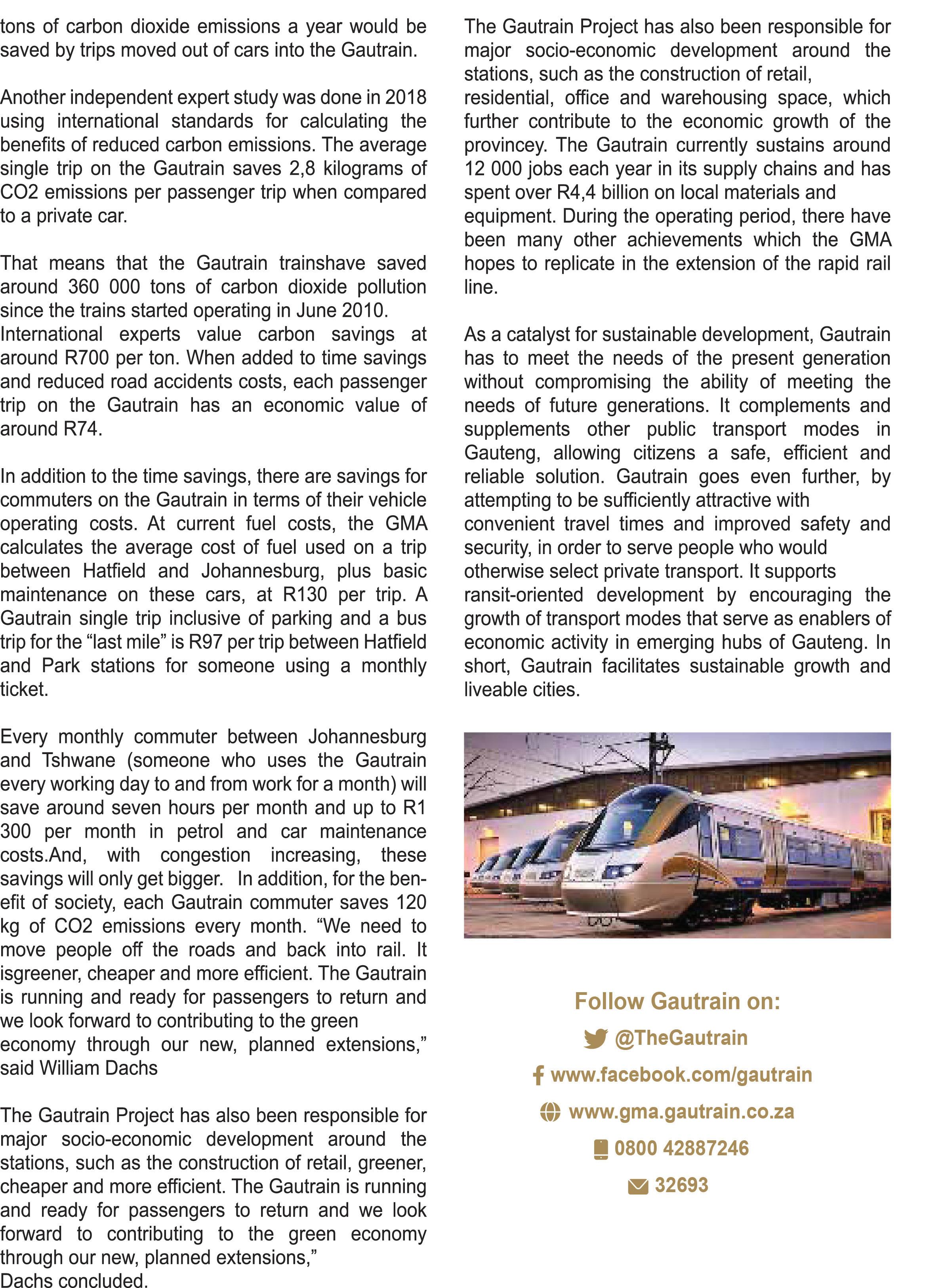
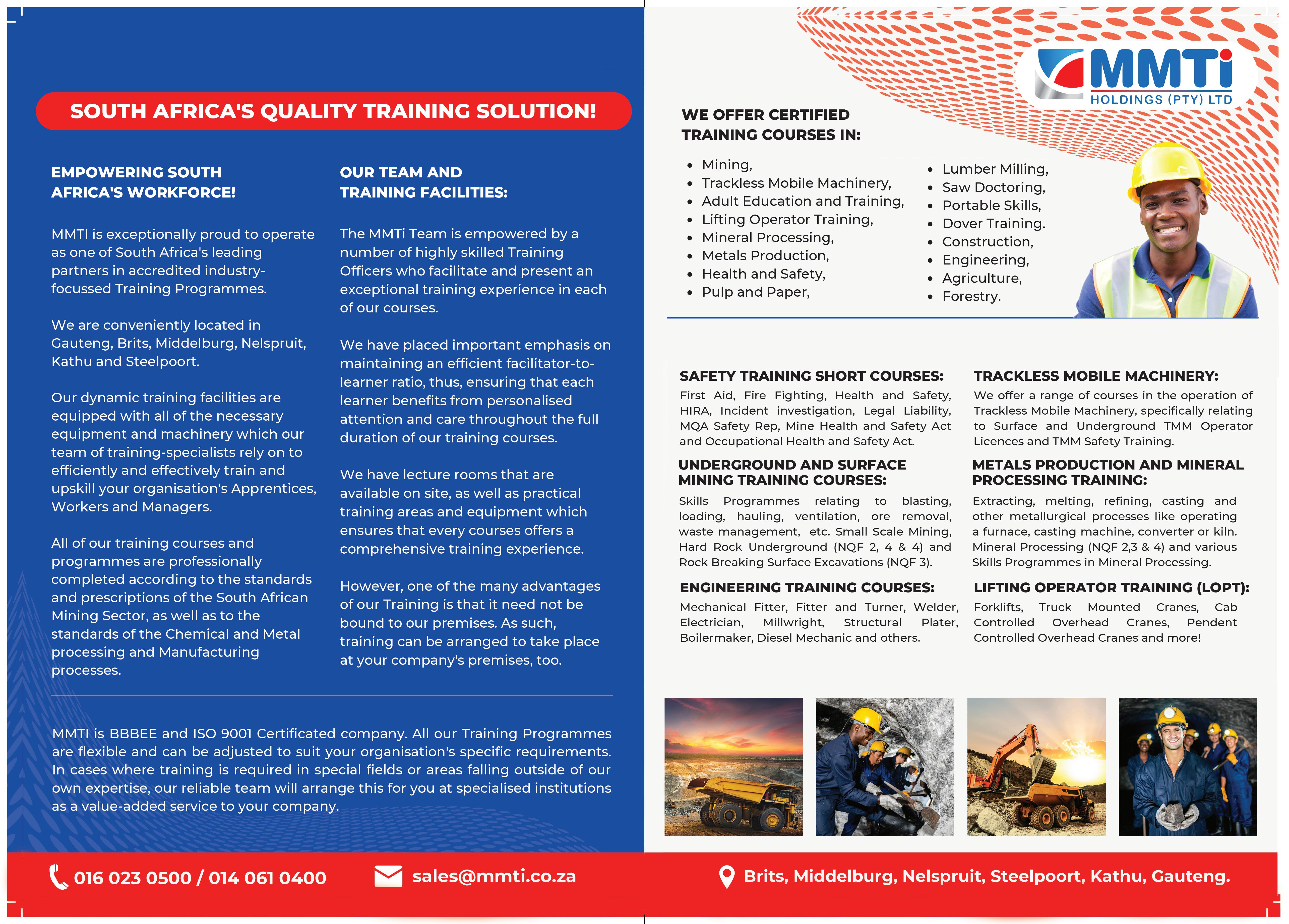

ISSUE #9
The Department of Mineral Resources & Energy believes a well-managed Just Energy Transition can be a strong driver for new and better jobs, social justice and poverty eradication
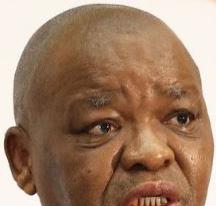
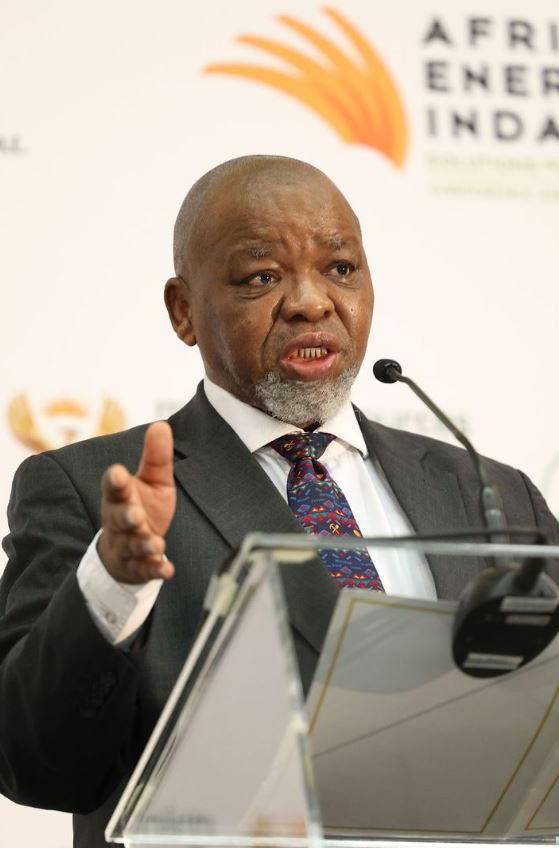
14 MINERALS
How Africa can capitalise on its mineral wealth to develop an electric vehicle value chain
20 ENVIRONMENT
How metal-munching microbes help the rare, toxic element tellurium circulate in the environment

26 HEALTH
A new project in Uganda aims to reduce toxic mercury use in artisanal and small-scale gold mining

32 RENEWABLE ENERGY
Africa’s competitive edge as a clean hydrogen hub PLUS a look at the “Africa’s Extraordinary Green Hydrogen Potential” report
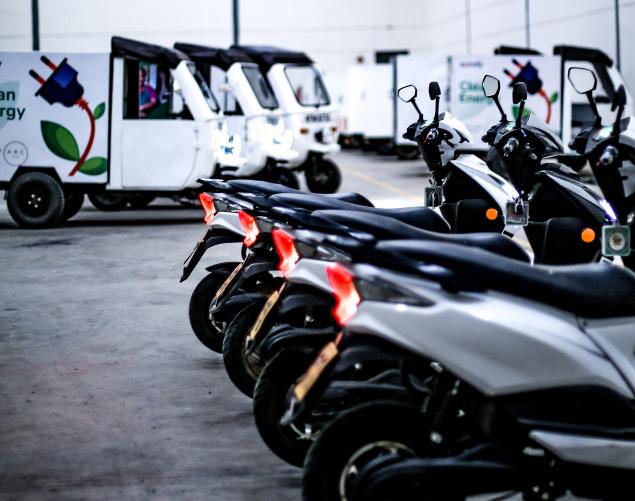
42 INFRASTRUCTURE
Developing Nigeria’s—and Africa’s—infrastructure for gas-to-power projects requires the right kind of vision
REGULARS
42
10 FROM THE EDITOR
Connecting with Africa
12 EVENTS
Conferences and meetings for the African mining industry
14
20
26
Africa’s natural gas export infrastructure has the potential to be repurposed to transport hydrogen across Africa and to Europe

Through YES, integrate youth job creation into the Mining Charter and your social and labour plans (SLPs). Create jobs outside the mining industry to build communities that thrive.

Join over 2,200 businesses transforming their companies and communities.
Don’t get left behind.
#SayYES
Go to www.yes4youth.co.za or mail corporatesupport@yes4youth.co.za to find out more about our YES mining turnkey solution.
Anglo American updates on carbonneutrality, biodiversity and responsible mining assurance
The tangible truth of where your mining culture is taking you

76
Two safety companies are optimising head protection for people in the working environment

80 IN FOCUS
African upstream activity is trending higher in 2023—what’s driving the increase?
84
Why cyber defence should be a critical component of an environmental, social & governance strategy
90 LAW
The Model Law on Institutional Investor-Public Partnerships initiative will help unlock funding for African climate projects
96 OIL
Treatment of wastewater in Nigeria’s oil fields is failing, raising the risk of health hazards
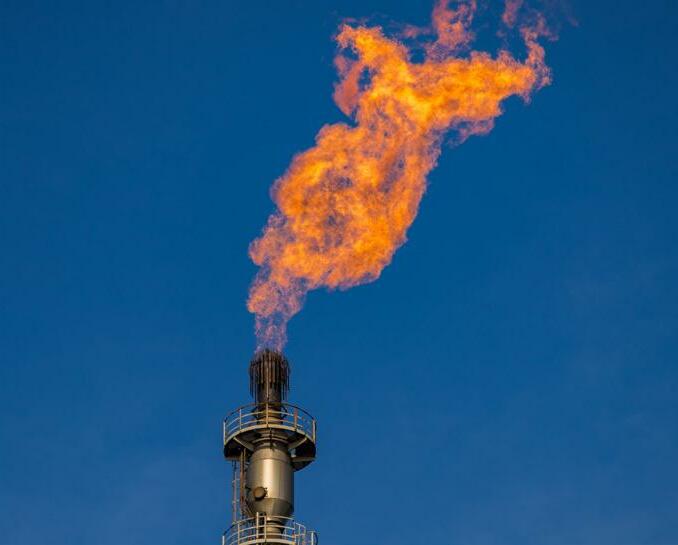
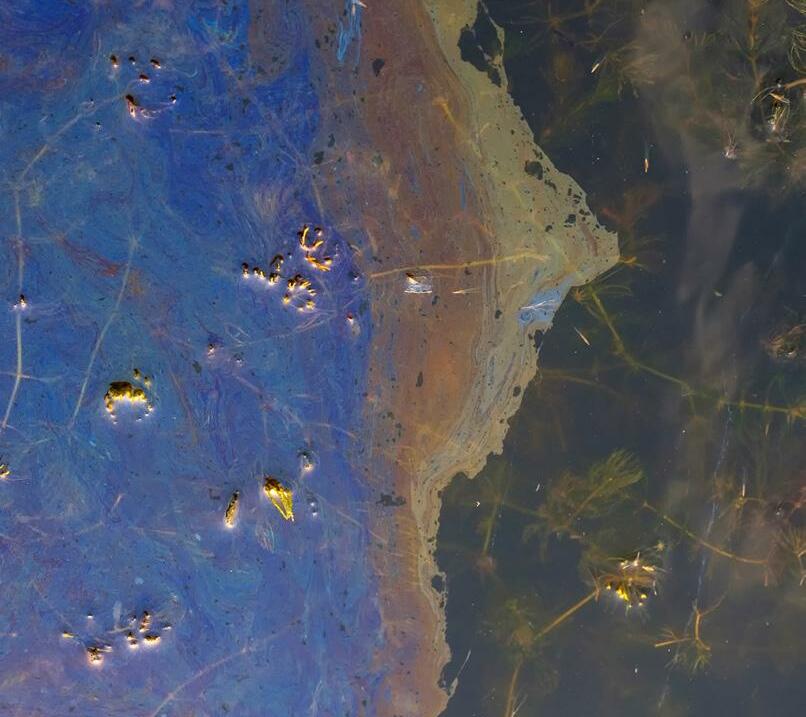
102 TECHNOLOGY
GE is fostering a more sustainable energy transition in mining operations
110
MSME Future Forge is preparing mining SMEs, which supply the mining and energy sectors, with critical business skills
116
A youth training initiative launched by Namibia and Equatorial Guinea has set the tone for an ambitious local content drive
120 GAS
Africa’s gas markets could help solve Europe’s energy crunch in the medium term PLUS Republic of the Congo is set to amplify its LNG production and exports
Kathea Energy is a company born out of Kathea Communications, one of South Africa’s most established and respected distribution businesses in information technology sector: The year 2015 marked its entry into renewables, with the creation of Kathea Energy.
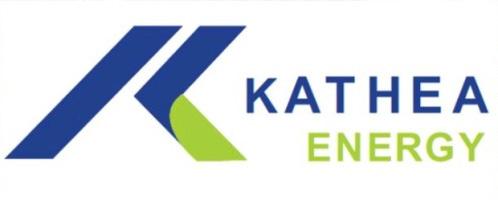
Kathea Energy aims to solve energy problems through partnering with market-leading solar brands, providing innovative products that offer South African businesses and consumers sensible and lasting solar solutions.
Their most important partnership has been with Huawei. Says executive head Sabine Moser, “Our relationship with Huawei began in Kathea Communication, our IT Business in 2015 with video-conferencing products. Once we established our Solar Business, we teamed up with Huawei Fusion Solar. We are now proud to be their largest distributor in sub-Saharan Africa.
“Huawei is a global leader in digital power solutions, and has the strongest solution set available of any inverter manufacturer, so we are very fortunate to be in this partnership with them.”

Moser explains that Kathea Energy has remained true to its roots as value-added distributor; providing numerous solar & PV related hardware, such as solar panels, grid-tied and hybrid inverters, battery systems and other associated accessories, in both the commercial and residential markets. Kathea Energy’s clients include residential and commercial installers and large EPC’s (Engineering Procurement & Construction). She continues “There are very few barriers to entry in this space, but we have found that the difference is made in the provision of excellent pre- and post-sales support. Kathea Energy has invested in a substantial support team and are renowned in the industry as having the best sales and technical support structure for the products we supply.”
ACES Africa is the continent’s leader in building-integrated photovoltaics (BiPV) and one of Africa’s leading solar PV companies, with over 70MWp installed in six countries. ACES works with local partners, renowned investors and best-in-class suppliers that share the company’s values to ensure the best projects are realised.
“ACES Africa is a full turnkey EPC [engineering, procurement and construction] contractor,” says cofounder and managing director, Anré Gous. “We started as an electrical contracting business, Webgear, in 2003 before jumping into renewables in 2015 when everybody started recognising the renewable energy gap. Now, our business is 99.9% solar engineering.”
The company has offices in Johannesburg and Cape Town, as
well as in Nairobi, Kenya—servicing clients throughout the continent.
“Wherever the project is in Africa, we can basically implement our work. Most of Africa is quite reachable for us,” says Gous.
“We also service many of the largest EPC’s in South Africa. What makes us a little different is that we have our own construction teams— not many of the EPC’s do. Some of the other EPC’s in the country also rely on our construction abilities to help them execute projects throughout Africa.”
In 2020, ACES won phase 2 of a tender to supply the Mediclinic Group with solar PV on 10 of its private hospitals throughout South Africa and Namibia, supplying around 5MW. It was grid tied solar systems with generator integrations. This solar rollout is helping Mediclinic attain its net-zero targets, and saving the group money on electricity.
“Now we are busy rolling out phase 3, which will add another 5MW. So,
What is driving the massive growth in solar energy in South Africa is the shortage in supply of electricity, both in the residential and commercial space. “The return on investment of solar power energy creation has always been there” says Moser , “but the electricity provision problems that are being experienced in South Africa has certainly added to the impetuous and motivation for small and large scale transformation towards sustainable energy creation, and this has obviously been advantageous to our business”.
Moser continues: “This increase in adoption has also contributed to the pricing of these solutions becoming more accessible to both small scale and large scale businesses, as well as homeowners.” The trend is certainly moving in a positive direction, and Kathea Energy, along with its partners, such as Huawei, are thankful to be in a position to make this positive change in South Africa, and sub-Saharan Africa.
when we’re done with this phase, we would have implemented 10MW across 24 hospitals in southern Africa,” Gous shares. “So it’s about 1 320 solar panels if you want to put it in module terms. But 705kWp is relatively large for the healthcare sector. From a size perspective, we’re basically supplementing 30% of Mediclinic’s hospital energy off that specific site. In month one, we saved around R200 000 on demand charges.”
ACES used Huawei 100KTL (100kW) three-phase inverters on the Mediclinic projects. “Huawei is our inverter supplier, and we get very good support from them. I think 90% of our PV systems across Africa have been with Huawei products. We chose Huawei because of their reliability and a few other technical benefits. Out of 300 inverters that we’ve installed over the last two years, we haven’t had one failure. Price is also very competitive.”
#9
134 HUMAN RIGHTS
Communities’ rights are being exploited by the Simandou iron ore project in Guinea PLUS Meya Mining in Sierra Leone
150 INTERNATIONAL
54% of projects extracting clean energy minerals overlap with Indigenous lands, research reveals

154 OPINION
Never underestimate the importance of the geoscience companies in Africa
158 REGULATORY
Disappointing licensing rounds: Direct negotiations could be a winwin in 2023 for African oil & gas

164 TAXATION
Climate change action could set off a copper mining boom: how Zambia can make the most of it by harnessing non-tax benefits
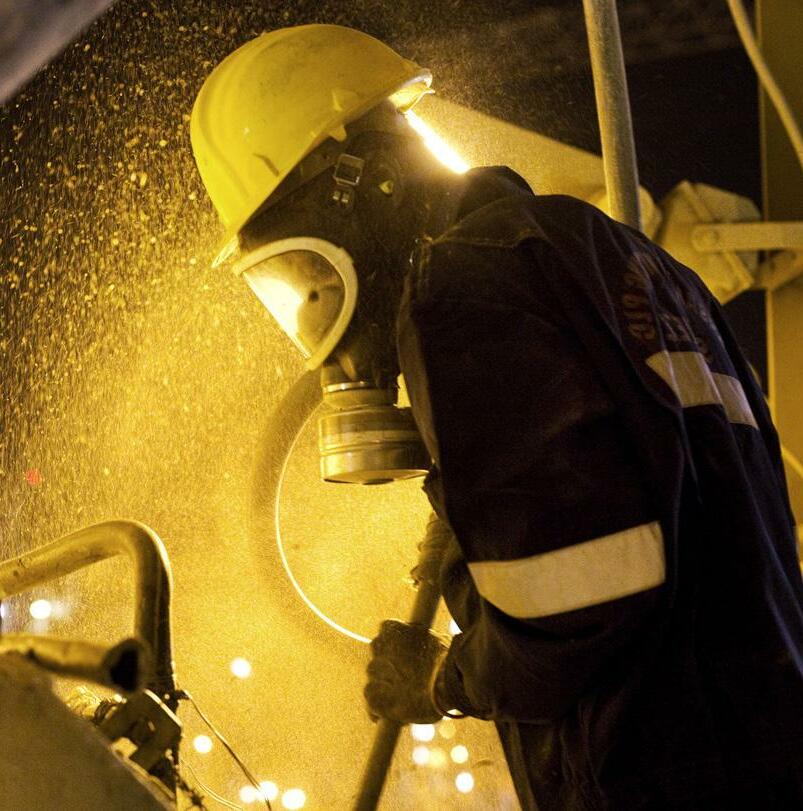
170 PUBLICATIONS
The latest edition of the “Energy Invest: Equatorial Guinea” report is the most comprehensive guide to the Central African nation’s diverse energy market
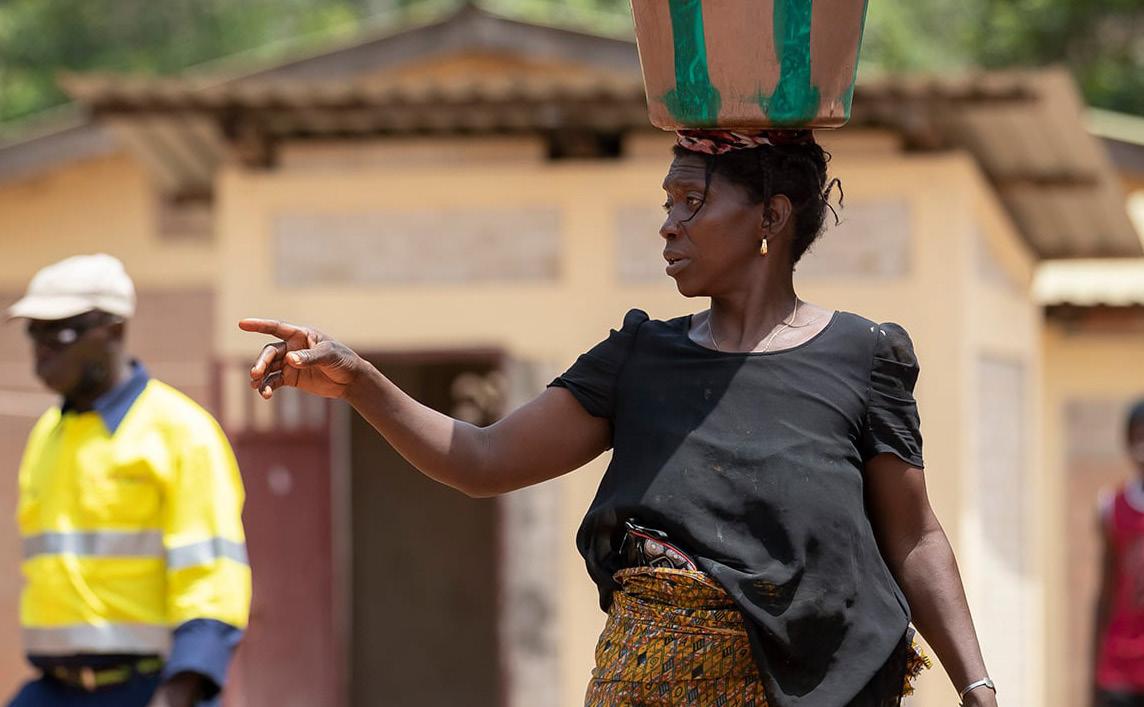
134
150 174
182
164
174 CONSERVATION
Mining and armed conflict threaten eastern DRC’s biodiversity in a complex web

182 COAL

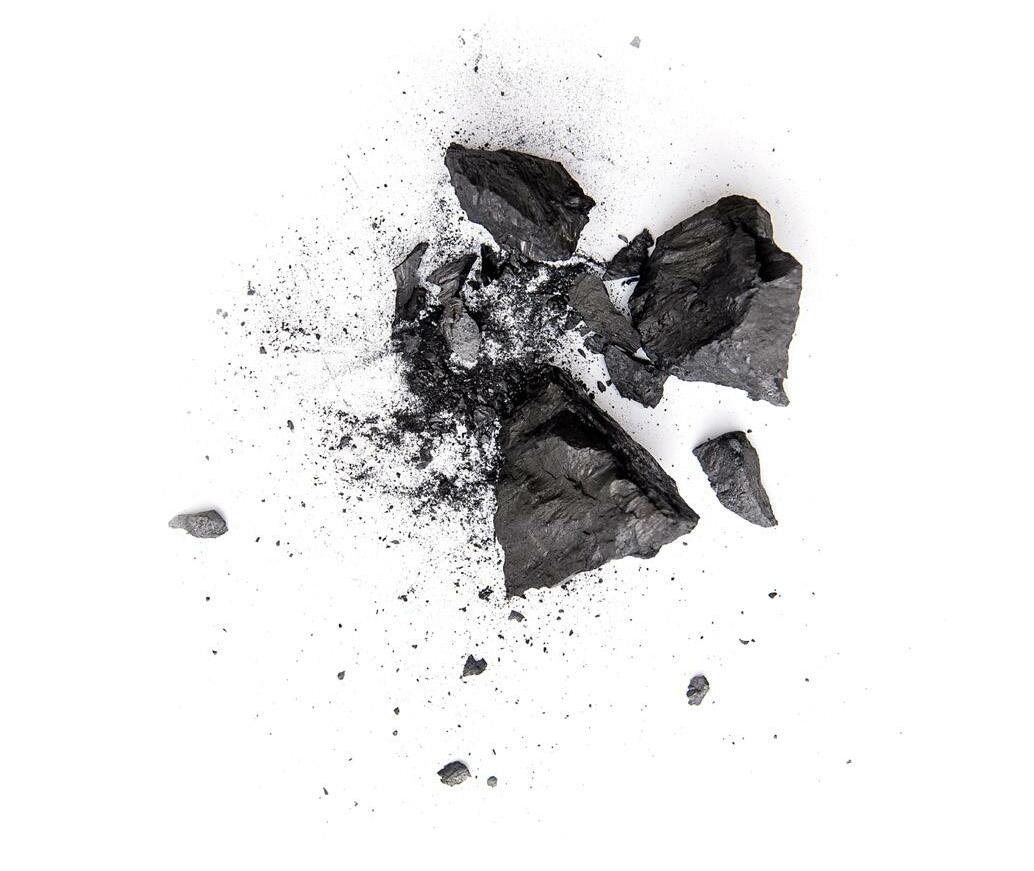
Global coal use in 2022 reached an all-time high


elcome to 2023, and edition 9 of African Mining News, our first for this year. Despite the year still being in its infancy, I’ve already had the good fortune to have celebrated a momentous event: I turned 50 in January!

But the inception of the new year marks another momentous annual event, The Investing in African Mining Indaba: where the world connects with African Mining™. High-powered mining executives rub elbows with politicians, business is transacted, and colleagues just share a laugh and catch up.
It’s where the mining community comes together to spark change and drive investments, and where the top minds of the industry share their expertise—the likes of Nolitha Fakunda from the Minerals Council SA, Natascha Viljoen from Anglo American Platinum, Dr Nombasa Tsengwa from Exxaro Resources, and Mark Bristow from Barrick Gold Company. Not to mention South Africa’s Minister of Mineral Resources & Energy, Gwede Mantashe. (Be sure to read our profile on his department, outlining how they intend bringing about SA’s Just Energy Transition.)
The importance of this event, and the calibre of attendees, is witnessed by the fact that already two weeks ahead of the opening, the crowd-control barriers were in place. This was soon followed by the closure of streets around the Cape Town International Convention Centre, the venue of this illustrious conference.
I’d like to welcome all the Mining Indaba delegates, exhibitors and media to Cape Town. I encourage everyone to take some time to explore this wonderful city that I call home. Have a pleasant and prosperous stay.
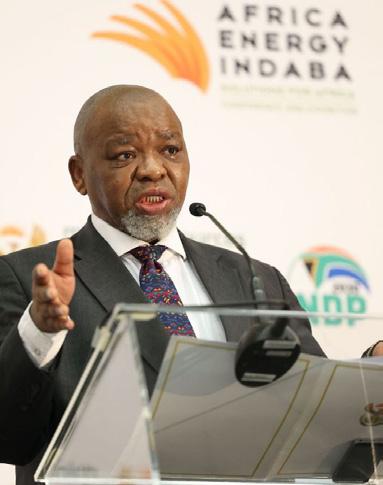

PUBLISHER: Donovan Abrahams
EDITOR: Ashley van Schalkwyk - ashley@avengmedia.co.za
CHIEF SUB-EDITOR: Tania Griffin
DESIGN: Christine Siljeur
EDITORIAL SOURCES: TheConversation.com, Kaspersky in Africa, NJ Ayuk, African Energy Week, planetGOLD Uganda, Human Rights Watch, Amnesty International, DLA Piper, Energy Capital & Power, Herbert Smith Freehills, MSME Future Forge, Anglo American, GE Gas Power

IMAGES: stock.adobe.com

PROJECT MANAGER: Donovan Abrahams
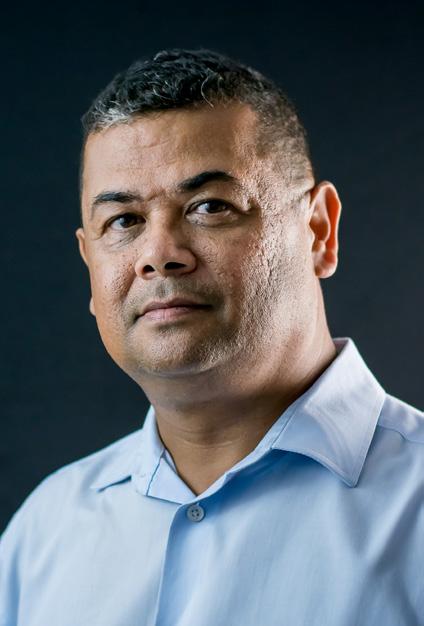
ADVERTISING SALES: Viwe Ncapai, Lunga Ziwele, Carl Chothia, Charlton Peters, Andre Evans, Vijay Sathnarain


ONLINE CO-ORDINATORS: Majdah Rogers, Ashley van Schalkwyk
ACCOUNTS: Benita Abrahams, Bianca Alfos


HUMAN RESOURCES MANAGER: Colin Samuels
CLIENT LIAISON: Majdah Rogers
PRINTER: Print On Demand
DISTRIBUTION: www.africanminingnews.co.za, www.issuu.com
DIRECTORS: Donovan Abrahams, Colin Samuels
PUBLISHED BY: Aveng Media
DISCLAIMER:
African Mining News magazine is published by Aveng Media (Pty) Ltd. The Publisher and Editor are not responsible for any unsolicited material. All information correct at time of print.



SAIPEC is the only energy, oil and gas event held in partnership with the entire sub-Saharan African petroleum industry. It continues to place its emphasis on the future of the energy, oil and gas industry in the region, with collaboration at the forefront of its objective and local content at its nucleus. It attracts hundreds of national and international oil companies, EPC (engineering, procurement, construction) contractors, service companies, technology providers and the whole oil & gas value chain for engaging and progressive discussions, business transactions and cross-border collaboration.
This conference is the region’s showcase of the latest technology in the mining & processing of minerals, earthmoving, safety equipment and much more. Minerals that have been identified in Tanzania include gold, iron ore, nickel, copper, cobalt, silver, diamond, tanzanite, ruby, garnet, limestone, soda ash, gypsum, salt, phosphate, coal, uranium, gravel, sand and dimension stones.
Cape Town International Convention Centre, South Africa energyindaba.co.za
This conference will discuss, debate and seek solutions to enable adequate energy generation across Africa. A diverse group of luminaries and high-profile speakers will share their real-world insights about the changing energy landscape in Africa. Learn more about energy policy and the role of government, energy funding, green hydrogen, grid technologies, renewable and cleaner energy, energy storage and energy efficiency. Co-located with the 8th Annual Africa Gas Forum (9 March).
8th Sulphur and Sulphuric Acid Conference
The Vineyard Hotel, Cape Town, South Africa
www.saimm.co.za
The production of SO2 and sulphuric acid remains a pertinent topic in the southern African mining and metallurgical industry, especially in view of the strong demand for, and increasing prices of, vital base metals such as cobalt and copper. To ensure you stay abreast of developments in the industry, participate in this conference on the production, utilisation, safe transportation and conversion of sulphur, sulphuric acid and SO2 abatement in metallurgical and other processes.
Hazendal Wine Estate, Stellenbosch, Cape Town, South Africa
www.saimm.co.za
The primary purpose of the first Hydrogen and Fuel Cells conference is the advancement of green hydrogen technologies in southern Africa and the global community, by highlighting the power of renewable and sustainable technologies and addressing the emerging challenges—through the exploration of fuel cells, hydrogen storage and hydrogen generation by way of engagement with industry, academia and government. The two-day conference will feature high-level scientific talks and posters, complemented with keynote and plenary presentations on country overviews, status of leading and major players in the southern African and global arena.
Privately-owned BSSC Radiators continues to develop and transform itself into a market leader, with over four decades of diverse experience and service in the mining industry.
Privately-owned BSSC Radiators continues to develop and transform itself into a market leader, with over four decades of diverse experience and service in the mining industry
Privately-owned BSSC Radiators continues to develop and transform itself into a market leader, with over four decades of diverse experience and service in the mining industry.
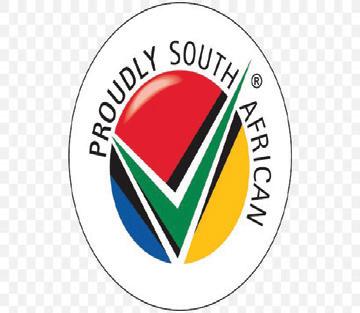
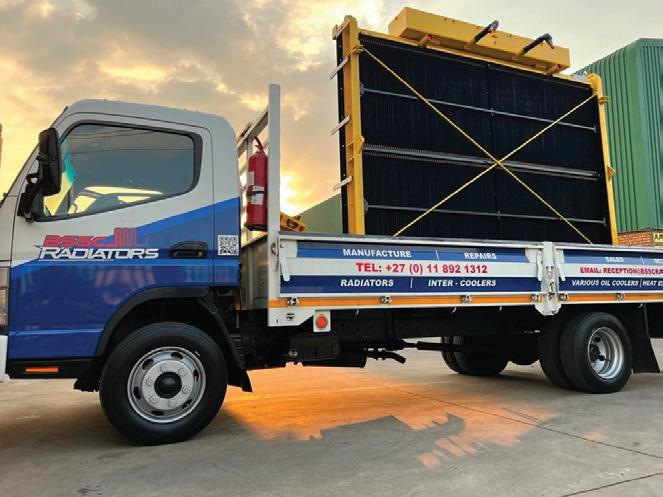
Privately-owned BSSC Radiators continues to develop and transform itself into a market leader, with over four decades of diverse experience and service in the mining industry

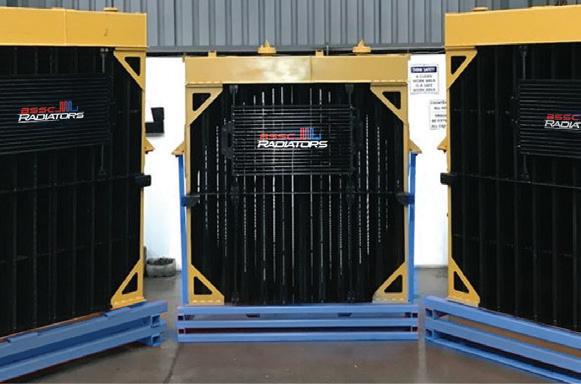
Through this experience servicing the mining industry, among others, BSSC aims to ensure efficient product delivery – with design and manufacturing to customer specifications. “Irrespective of the duty or application, we have the experience to optimise the heat transfer product for you,” the company enthuses.
Through this experience servicing the mining industry, among others, BSSC aims to ensure efficient product delivery – with design and manufacturing to customer specifications. “Irrespective of the duty or application, we have the experience to optimise the heat transfer product for you,” the company enthuses.
Through this experience servicing the mining industry, among others, BSSC aims to ensure efficient product delivery – with design and manufacturing to customer specifications. “Irrespective of the duty or application, we have the experience to optimise the heat transfer product for you,” the company enthuses.
Through this experience servicing the mining industry, among others, BSSC aims to ensure efficient product delivery – with design and manufacturing to customer specifications. “Irrespective of the duty or application, we have the experience to optimise the heat transfer product for you,” the company enthuses.
Specialising in a wide range of heat-transfer products and services, the company’s competitive advantage, it notes, remains its industry knowledge, solutions-focused approach, and commitment to personalized services, quality standards, the latest innovative practices and reliability.
Specialising in a wide range of heat-transfer products and services, the company’s competitive advantage, it notes, remains its industry knowledge, solutions-focused approach, and commitment to personalized services, quality standards, the latest innovative practices and reliability
Specialising in a wide range of heat-transfer products and services, the company’s competitive advantage, it notes, remains its industry knowledge, solutions-focused approach, and commitment to personalized services, quality standards, the latest innovative practices and reliability
Specialising in a wide range of heat-transfer products and services, the company’s competitive advantage, it notes, remains its industry knowledge, solutions-focused approach, and commitment to personalized services, quality standards, the latest innovative practices and reliability





Essentially, BSSC strives to design heat-transfer products that improve cooling system capabilities for a high output and long-lasting lifespan. Linked to the company’s “uncompromising determination” to achieve a “first time, every time” ethos, clients can be assured of “superior service”
Essentially, BSSC strives to design heat-transfer products that improve cooling system capabilities for a high output and long-lasting lifespan. Linked to the company’s “uncompromising determination” to achieve a “first time, every time” ethos, clients can be assured of “superior service”
Essentially, BSSC strives to design heat-transfer products that improve cooling system capabilities for a high output and long-lasting lifespan. Linked to the company’s “uncompromising determination” to achieve a “first time, every time” ethos, clients can be assured of “superior service”.
Essentially, BSSC strives to design heat-transfer products that improve cooling system capabilities for a high output and long-lasting lifespan. Linked to the company’s “uncompromising determination” to achieve a “first time, every time” ethos, clients can be assured of “superior service”


BSSC further prides itself on an extensive footprint within South Af rica, and Af rica where it supplies products and services to, inter alia, sectors ranging f rom industrial and mining to agricultural, and industries including earthmoving, plant hire and contractors, locomotives, transportation and oil and gas.
BSSC further prides itself on an extensive footprint within South Af rica, and Af rica where it supplies products and services to, inter alia, sectors ranging f rom industrial and mining to agricultural, and industries including earthmoving, plant hire and contractors, locomotives, transportation and oil and gas.
BSSC further prides itself on an extensive footprint within South Af rica, and Af rica where it supplies products and services to, inter alia, sectors ranging f rom industrial and mining to agricultural, and industries including earthmoving, plant hire and contractors, locomotives, transportation and oil and gas.

BSSC further prides itself on an extensive footprint within South Af rica, and Af rica where it supplies products and services to, inter alia, sectors ranging f rom industrial and mining to agricultural, and industries including earthmoving, plant hire and contractors, locomotives, transportation and oil a



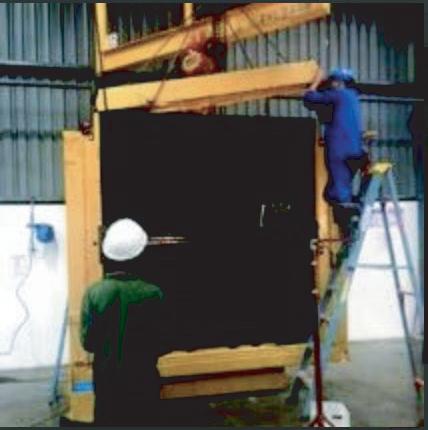
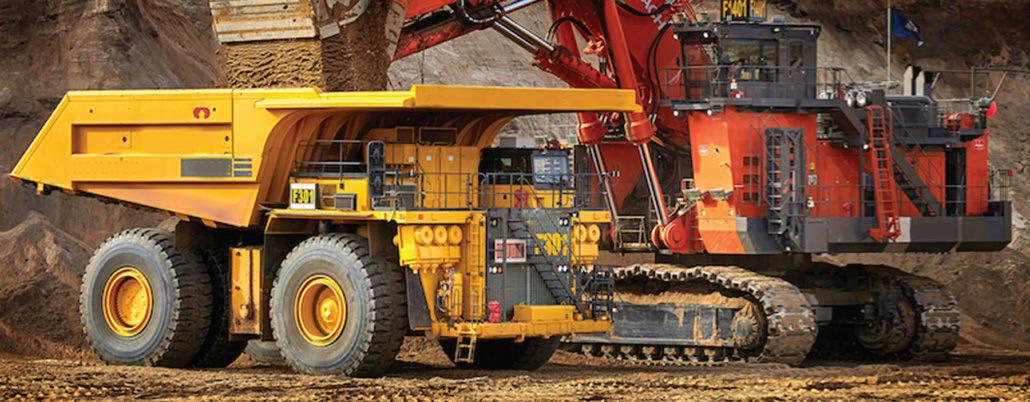




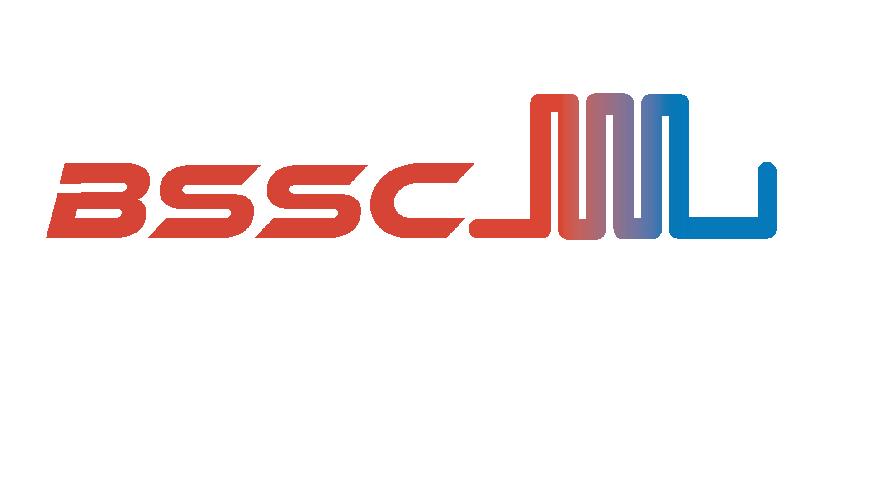

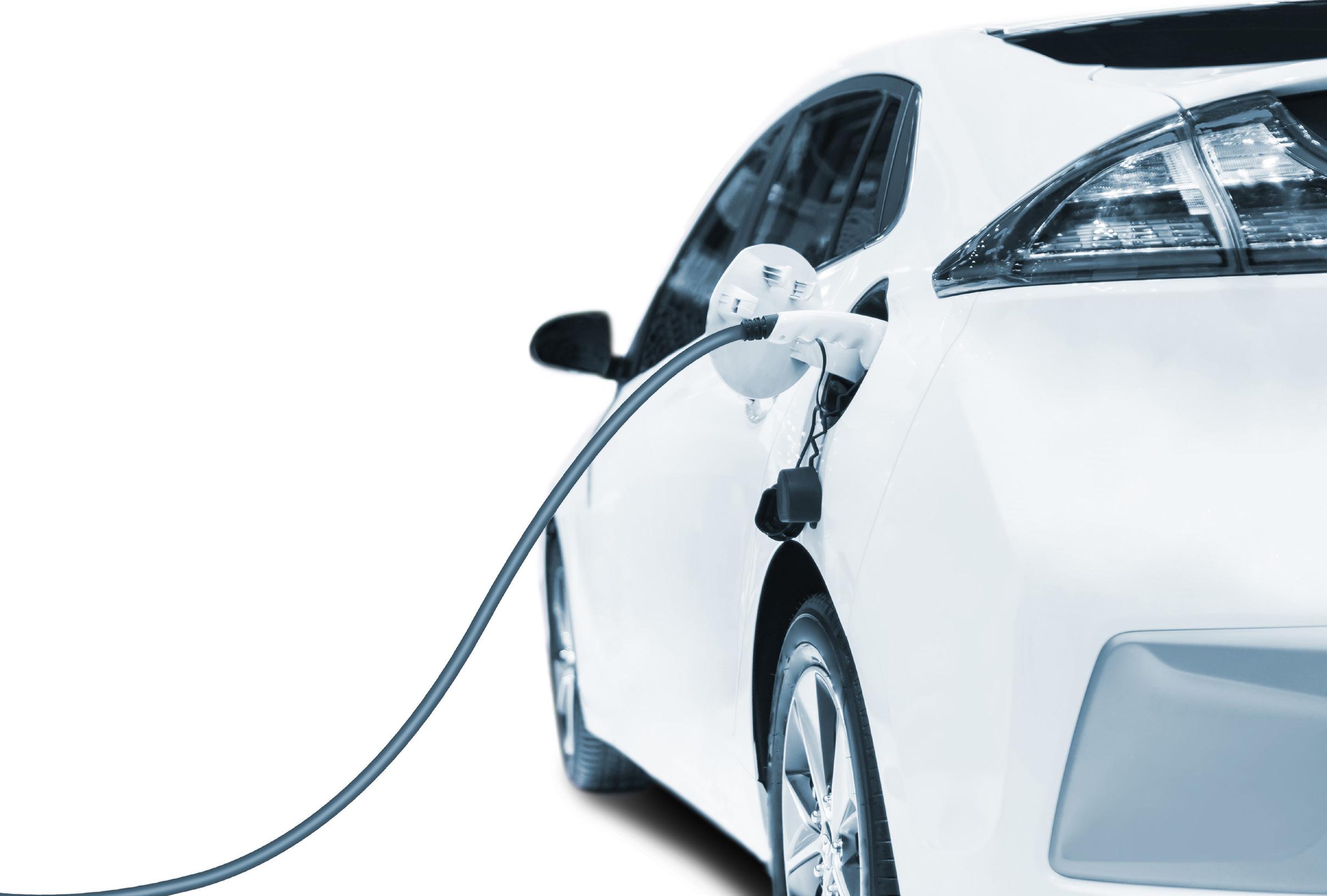
Africans need to pay critical attention to Africa’s position as a key source of critical minerals. Climate change and energy poverty are two sides of the same coin.
Let’s not forget, Africa is blessed with some of the world’s largest reserve of metals and minerals needed for batteries, including lithium and cobalt—making the continent a key supplier for the global energy transition. The African Energy Chamber believes that when we process these minerals in Africa, we rapidly eliminate emission-spewing shipments of the continent’s minerals and commodities.
As the entire global transportation marketplace marches toward an increasingly electrified and battery-powered future, many countries across the African continent stand at the threshold of profound economic opportunity. Now is the time to take action and decide whether or not Africa steps across it.
Countries around the world are encouraging their citizens to transition to electric vehicles (EVs) for both transportation and shipping. In many cases, governments are mandating their adoption by setting firm dates for total bans on gasoline-powered cars and trucks. Considering these circumstances, demand for EV batteries and the raw materials used in their manufacturing process will likely increase
exponentially in the years ahead.
Africa supplies a significant portion of the metals critical to producing the lithiumion batteries that power EVs: namely cobalt, manganese and phosphorus and, to a lesser extent, lithium, iron, copper and graphite. Unfortunately, African mines export most of the minerals extracted to Europe and China, where much of the work that adds to their value takes place. Processes such as beneficiation— the treatment of raw, mined materials to improve their physical or chemical properties—and the smelting and refining that occurs before EV battery assembly, cannot be performed in Africa because there is no infrastructure for it.
To begin the process of building the required infrastructure,
African countries should move closer toward a thorough capitalisation of their mineral resources. As noted in our newly released report, “The State of African Energy: 2023 Outlook”, “They can benefit from value-creation investments by developing the right market to support local demand for these metals, the right infrastructure to create an industrialisation ecosystem, and the right capital markets to stimulate the muchneeded investments across the battery value chain.”


Ongoing developments both in Africa and abroad have the potential to bring the concept of a fully integrated African EV value chain into reality.

The first of these developments is the war in Ukraine. Russia holds a sizeable market share of the global metal production industry. The country is a net exporter of aluminium, copper, pig iron, direct reduced iron, iron ore and nickel. Russia also produces 37% of the world’s palladium supply and 11% of its platinum—metals essential to the worldwide production of catalytic converters. Focusing specifically on EV components, Russia also produces 17% of the global supply of highpurity nickel used in battery manufacturing and 4% of global copper—amounts that establish the nation as one of the world’s most prominent metal suppliers.
Russia’s invasion of Ukraine caused numerous countries to impose import bans on Russian commodities. International companies, independent of their home countries, also initiated ‘self-sanctions’ on Russia by withdrawing their operations from the nation or restricting the sale of their goods within its borders. While the United States and the European Union have yet to announce any sanctions
on Russian metal, this status could change in the near future as the continued tensions in Ukraine do not suggest any coming de-escalation.
Africa could potentially fill the gaps left by a Russian absence from the global mineral supply chain. South Africa, Zimbabwe and Madagascar can collectively supply iron ore, nickel and the platinum group metals, while Zambia and the
Democratic Republic of the Congo can provide copper. Africa’s own demand for Russian imports of steel and aluminium could be affected by sanctioninduced complications. Investing in African infrastructure and developing a domestic supply chain would add diversity to the global metals trade and safeguard it against any future political upheavals or military conflicts.

Demand for EV batteries and the raw materials used in their manufacturing process will likely increase exponentially in the years ahead



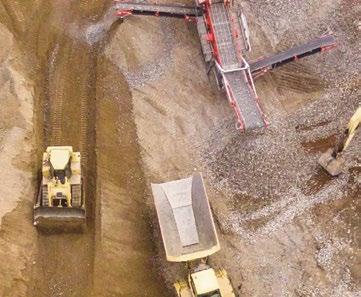


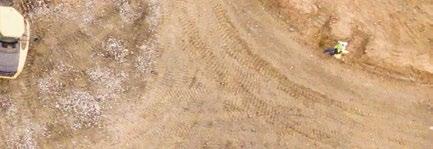

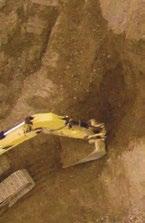


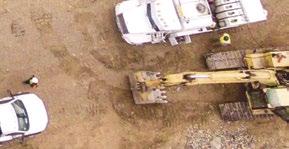
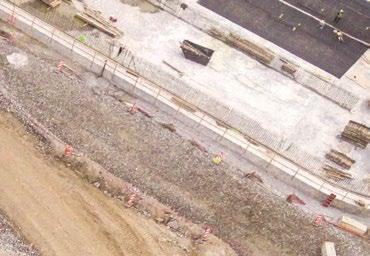

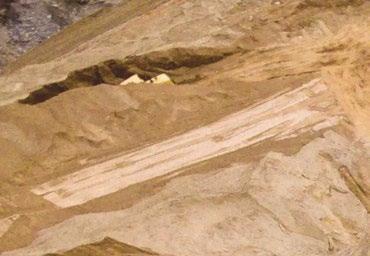




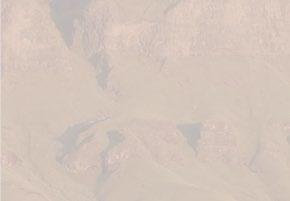




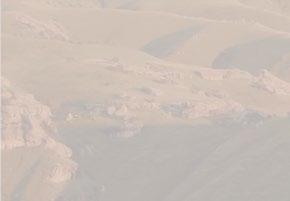







Another promising development is Africa’s burgeoning EV industry. Rwanda and Ghana have declared their intentions to make the transition from gasoline-powered vehicles to EVs, while Rwanda and Kenya have committed to incentivising domestic production. Egypt aims to produce 20 000 EVs per year beginning in 2023. Namibia has a goal of 10 000 EVs by 2030, and South Africa expects to see 2.9 million by 2050.
While much of the conversation about EVs pertains to four-wheeled cars, motorcycles and tuk-tuks have always been more popular transportation options in Africa. The global EV market recognises this preference. In 2021, 44% of all twoand three-wheeled vehicles sold were electrically powered.
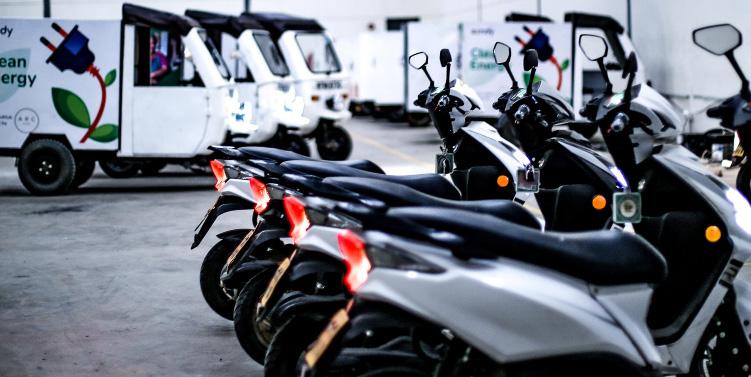
Previously, Africans had no choice aside from imported e-bikes and trikes, but now companies like Lagos-based Metro Africa Xpress (MAX) are manufacturing them at home. MAX’s newest model, the M3, is a low-cost, long-range motorcycle capable of carrying heavy loads. MAX expects upward of 70% of sold units to serve as commercial taxis.
This increased level of EV adoption, whether brought on solely by consumer choice or encouraged by government policy, will inevitably bring about increased demand for EV batteries. This demand could be satisfied by domestic mining and manufacturing—two links in a larger, fully African EV value chain.














The ratification of the African Continental Free Trade Agreement primed industries across the continent to establish a network that could leverage the expertise and resources of its individual members to create an EV battery manufacturing chain capable of servicing the needs of both African and global markets. Proceeds from this arrangement could fund enhancements to African infrastructure—an evolution that would, in turn, attract further international investment.
To properly seize the opportunities in front of us at present and to ensure the success of this endeavour, it is imperative that we acknowledge past mistakes and current conditions. An undertaking of this scale will require collaboration between governments, cohesive policy agreements, and uniform tax incentives. We cannot progress without commitments to improve roads, expand ports, and provide reliable and affordable electricity. We must also address the glaring workers’ rights issues affecting the subcontracted miners currently labouring at the foundation of this proposed value chain.
If we can work together to resolve these complexities, Africa will be ready to step into a bright, sustainable and profitable future.
NJ Ayuk Executive Chairperson African Energy Chamber
































African countries should move closer toward a thorough capitalisation of their mineral resources
23 Blue Street, Isithebe Industrial Township
P.O. Box 51, Mandeni 4490
KwaZulu Natal, Sout Africa
Tel: +27 (032) 459 1364
Email: info@skema.com
Reg No: 96/08120/07


















• Tube Rolling
• Thread Rolling
• Thread Rolling
• Re-Bar Bending
• Thread Rolling









































• Re-Bar Bending
• CNC Machining
• Re-Bar Bending
• CNC Machining
• Production Pressing
• CNC Machining
• Production Pressing
• Robotic Welding
• Production Pressing
• Robotic Welding
• Bright Steel Drawing
• Robotic Welding
• Bright Steel Drawing
• Coating – Electro Galvanising
• Bright Steel Drawing
• Coating – Electro Galvanising
• Coating – Electro Galvanising

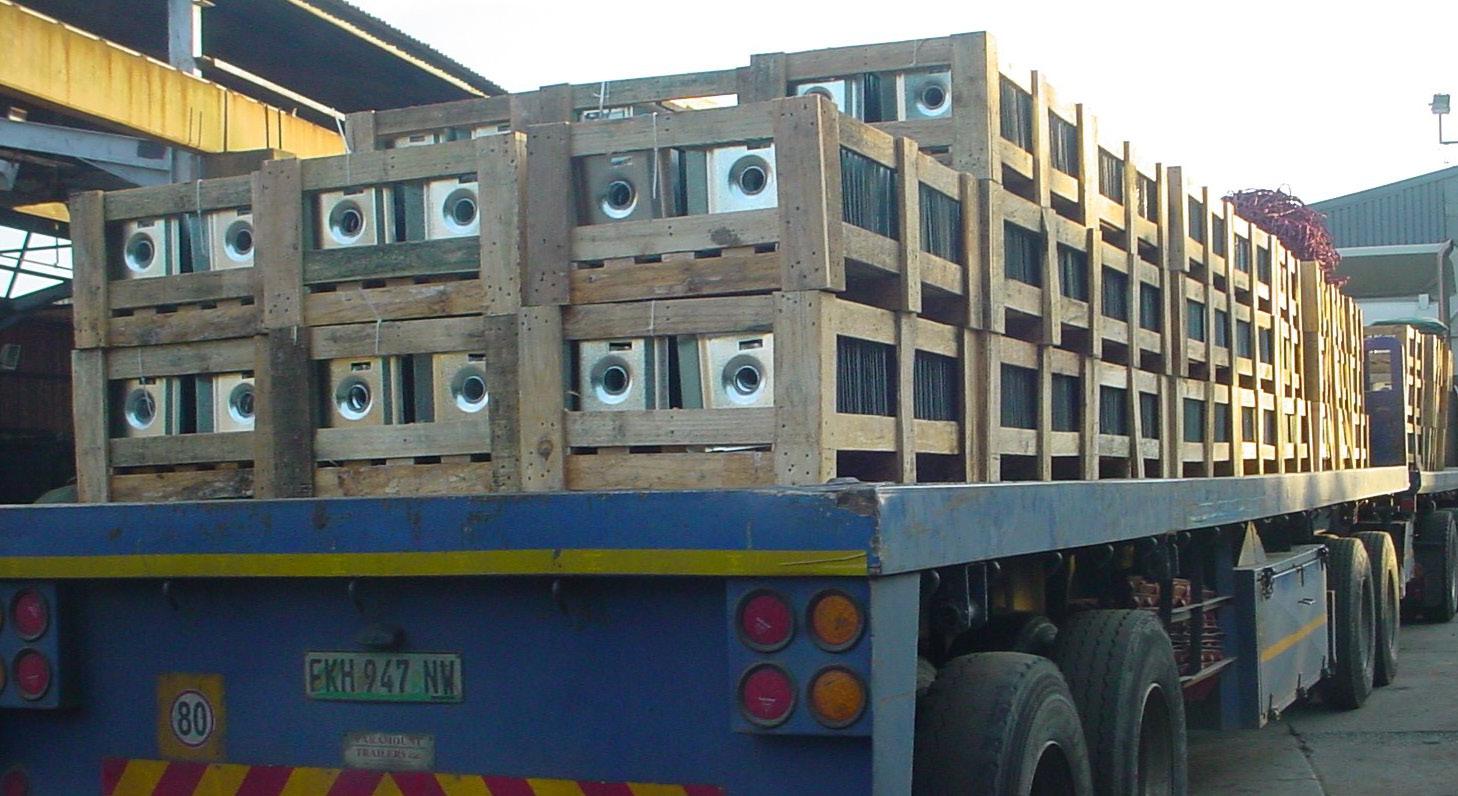
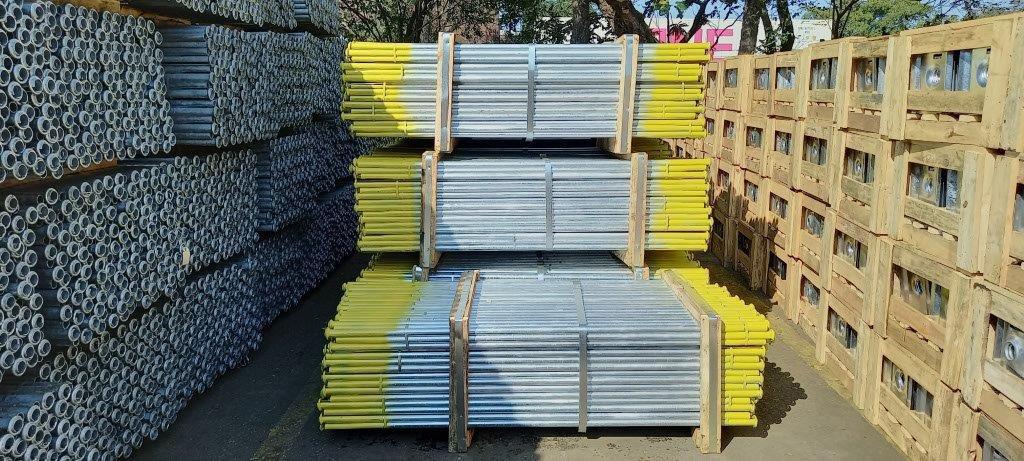
Friction rock stabilisers and roofbolts are able to perform under some of the most stringent conditions.
Friction rock stabilisers and roofbolts are able to perform under some of the most stringent conditions.
Friction rock stabilisers and roofbolts are able to perform under some of the most stringent conditions.
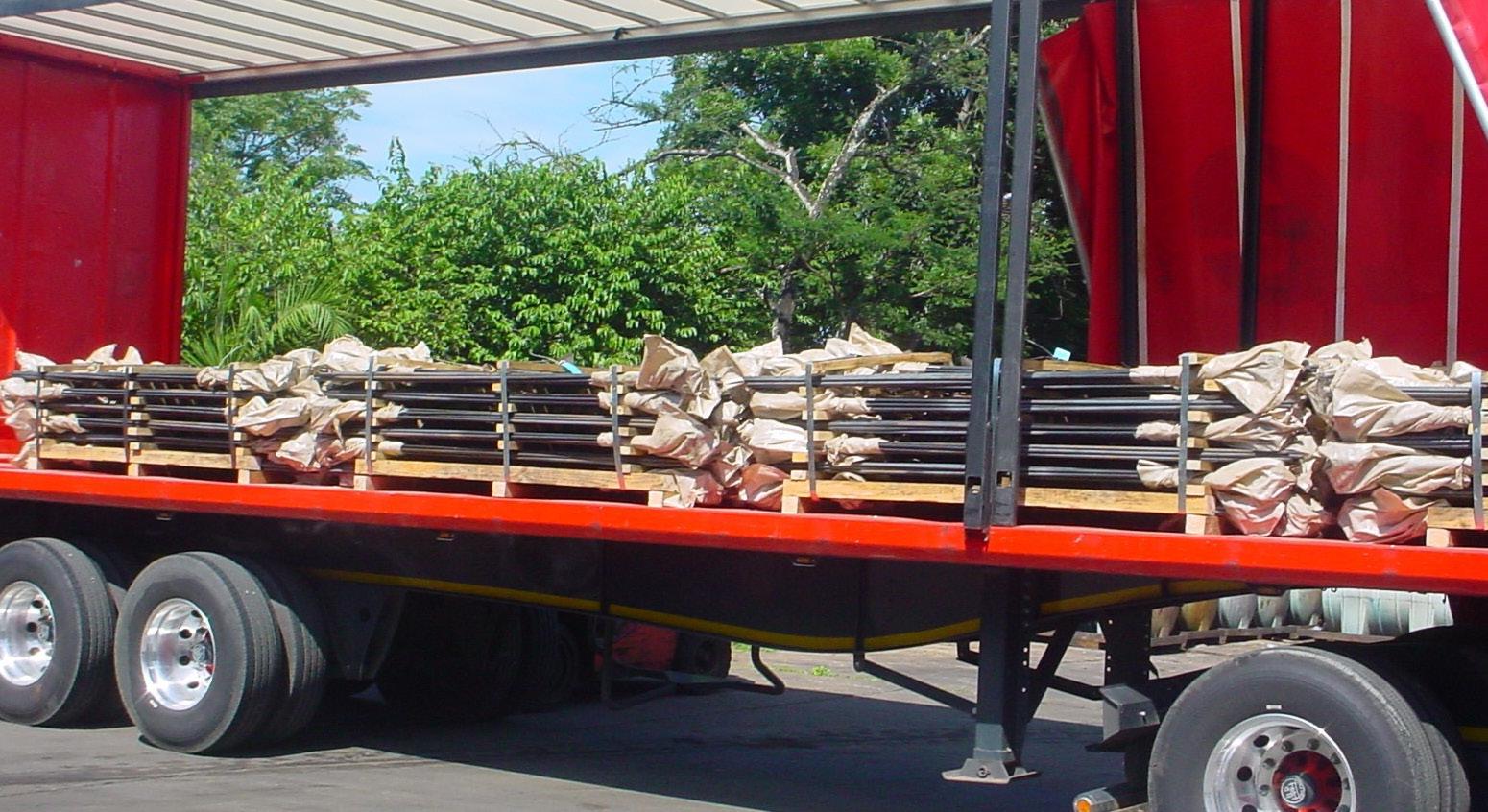
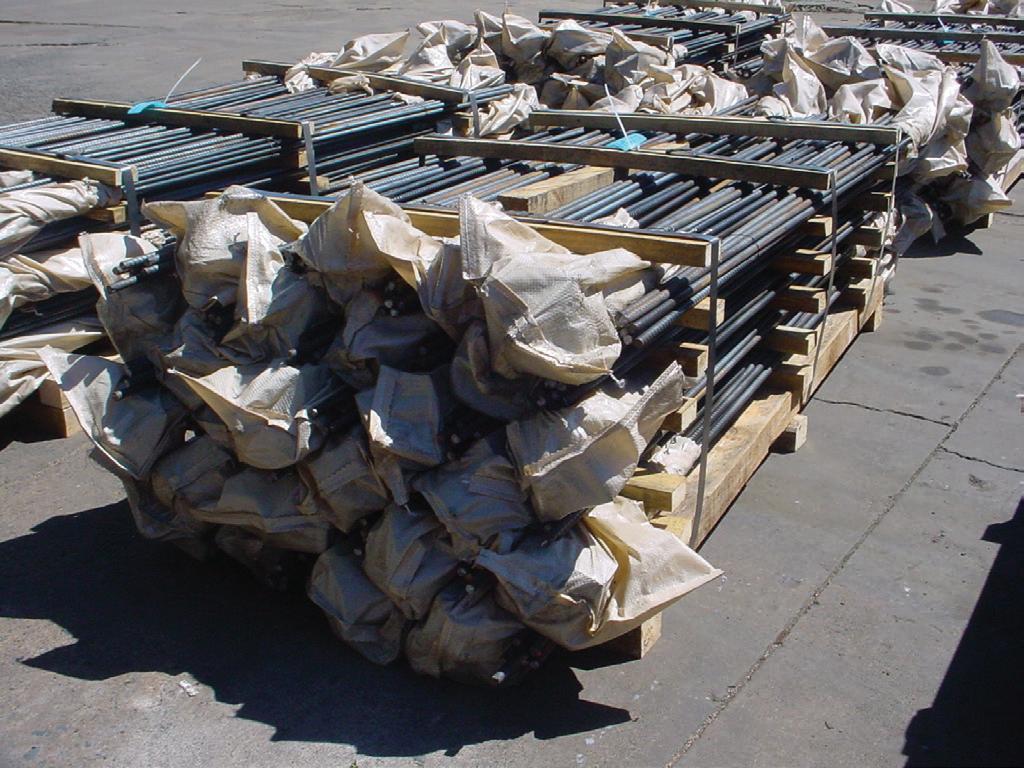
Our








The key element to our success is to focus on our quality.
One of the key elements leading to Skema's success over the past thirty years has been the company's never-wavering focus on quality - starting as a regional winner, to a national player, to the international contender that it is today.
The Design of Skema’s Friction Rock Stabilisers allows them to tighten as lateral rock displacement occurs, enhancing their yield capabilities. After installation (when ground shifts can loosen an ordinary bolt), the Friction Rock Stabiliser tube grips more tightly.
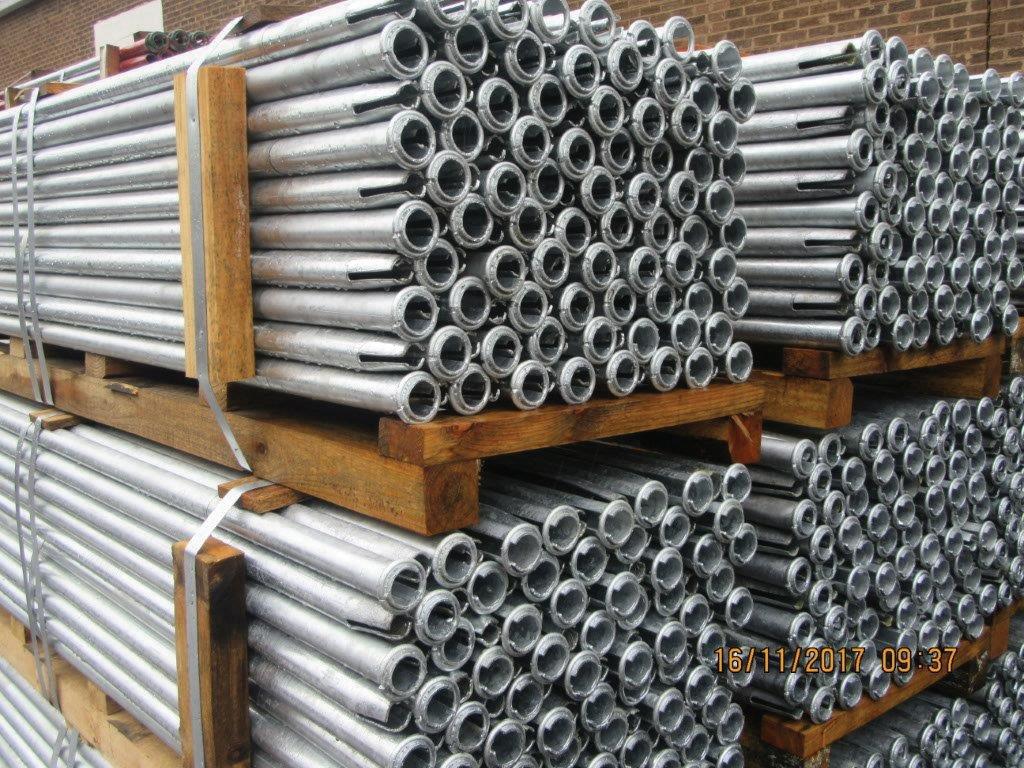
www.skema.com


















































We recognise the greater needs of the community... Skema also recognises the fact that a firm’s responsibilities are not limited to the needs of its clients, employees and shareholders, but also to the greater needs of the community and environment.

Certain microbes can effectively munch on gold, slowly transforming gold nuggets into chemical forms that can move through the environment.





New technologies often mean elements start moving through the environment in new ways. Take lead plumbing: It helped provide access to fresh water for the masses, but left a toxic legacy that remains to this day (bit.ly/3XrcJNc).
As we transition away from fossil fuels, we are turning to technologies reliant on rare elements that had few uses in the past. One of these is tellurium, an element found in an increasing number of solar panels.
How do we anticipate the potential pitfalls of a dramatic increase in the flux of tellurium through the biosphere? And how do we secure safe and reliable supplies of this commodity?
To start answering these questions, we travelled to an abandoned gold mine in Mexico, and discovered how metalmunching microbes are moving this elusive element through the environment.
Tellurium is as rare as gold in Earth’s crust, with only around 1 milligram in each metric tonne of average crustal rock. The silvery substance was discovered only in 1783, and until recently its main claim to fame was the fact it can make you smell unpleasantly like garlic if you handle it.
Tellurium is often found in gold deposits. Despite gold’s famous reputation for durability, over the
past 15 years we have discovered the precious metal is remarkably mobile in the environment—even growing in trees! (bit.ly/3Xn1Ko7)
It turns out that certain microbes can effectively munch on gold, slowly transforming gold nuggets into chemical forms that can move through the environment. These mobile gold compounds (particularly ones that can dissolve in water) are quite toxic: Only a few metal-resistant microbes can thrive in the unique micro-environment found on the surface of a grain of gold.
We wanted to test whether microbes can cycle tellurium through the environment in the same way they do for gold. We used natural ore deposits to do this, but this gives us information about what would happen if tellurium-rich materials were dumped by humans.
Finding a suitable site was a challenge. Since high tellurium content is associated with high gold content, most tellurium deposits close to the surface (such as those near Kalgoorlie, Western Australia) have been mined out a long time ago.
Eventually, our quest led us to Moctezuma in Mexico, where there is a small former gold mine that is exceptionally rich in tellurium.
At the mine, we studied ores and soils away from the main vein
of gold and tellurium. We found tellurium was moving away from the richest ore (bit.ly/3W4Kz9Q), and discovered the first evidence of natural tellurium nanoparticles on the surface of pieces of native tellurium.
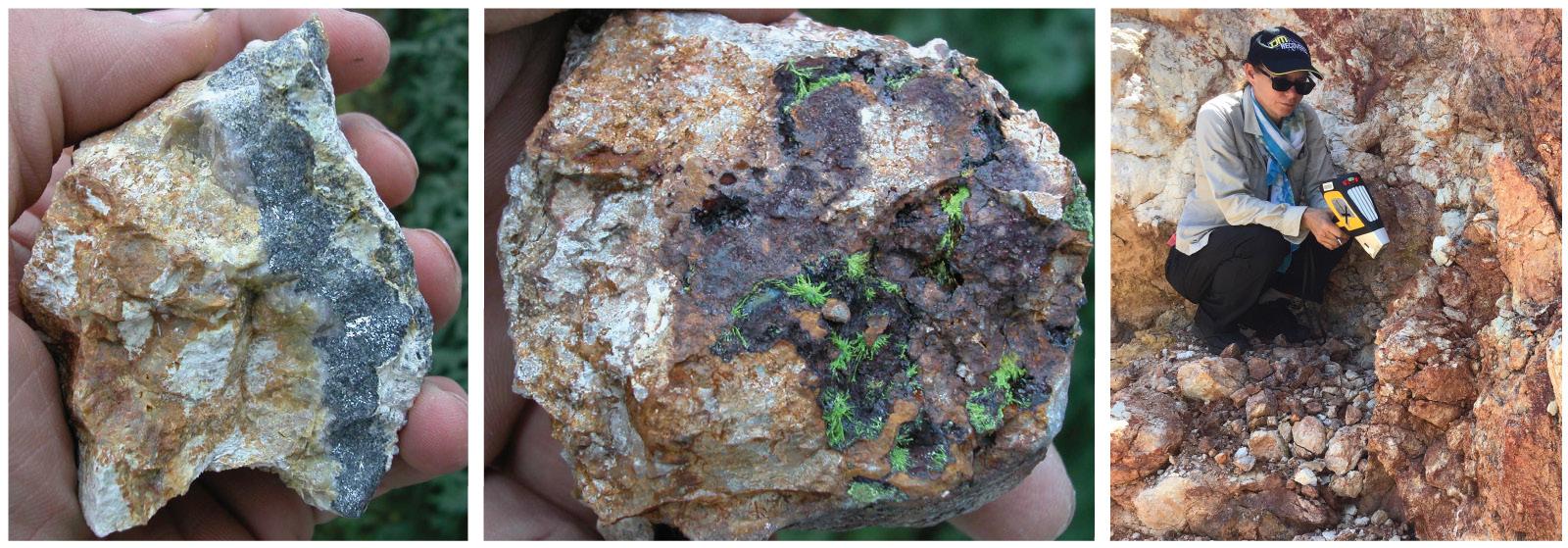
This discovery is significant because nanoparticles play a special role in the environment, as they have different properties compared to macro-particles. For example, they tend to be more reactive than larger particles, and they may be toxic in their own right.
The tellurium nanoparticles we found appeared very similar to gold nanoparticles that have previously been found on the surface of gold grains.
We also showed that gold and tellurium have rather different modes of transport in soils and groundwater.
Gold particles can be carried a long way in rivers, for example. However, tellurium metal oxidises quickly when exposed to air, forming highly soluble—and toxic—compounds. Hence, there is no physical transport of grains of tellurium in metallic form.
The movement of tellurium is also limited by reaction with common minerals in soils. This is a good thing, since tellurium’s limited mobility keeps concentrations in groundwater low, and hence limits toxic effects.

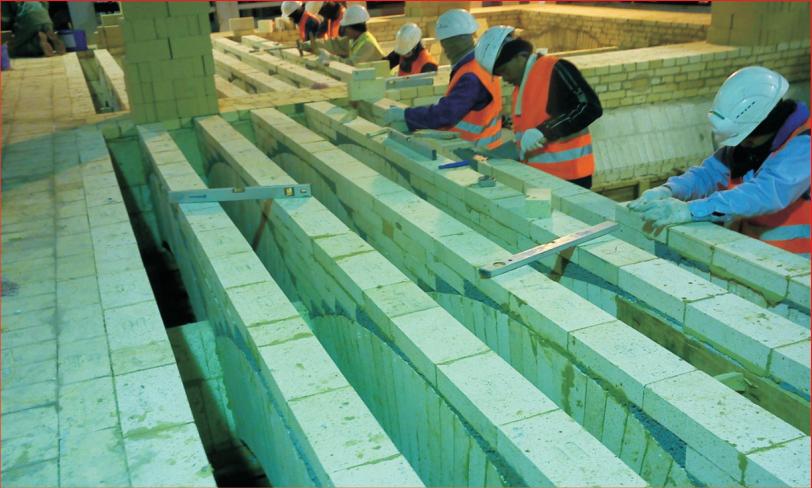
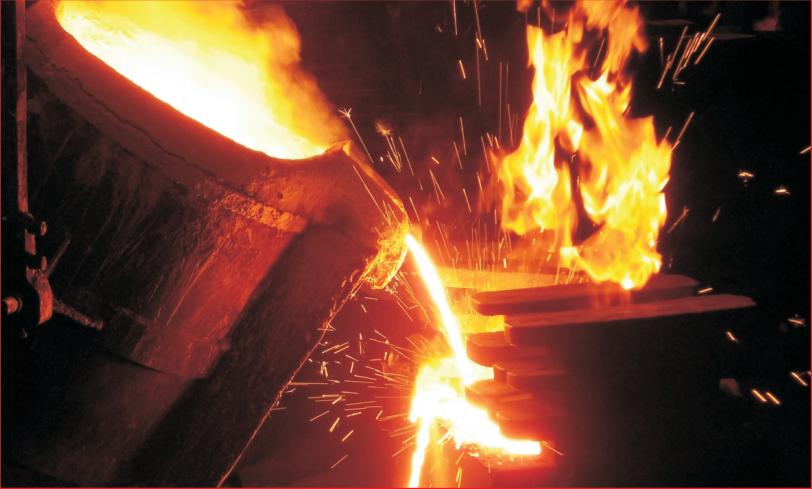




In our latest research (bit.ly/3w0DsER), we have detected tellurium nanoparticles in the soil of Moctezuma, away from the metal-rich outcrops.
Because metallic tellurium nanoparticles are highly reactive and not expected to survive for long in soils, this discovery provides the strongest evidence yet that microbes are actively helping to cycle this rare element through the environment.
Tellurium in these soils is most likely subject to a dynamic cycle of oxidation and dissolution, followed by reduction and precipitation—all controlled by microbial activity.
We are only now beginning to understand how microbes cycle ‘exotic’ elements such as tellurium. Understanding these ‘biogeochemical’ processes is important to understand how elements move in our landscapes. We can then assess potential risks, and design efficient mitigation strategies.
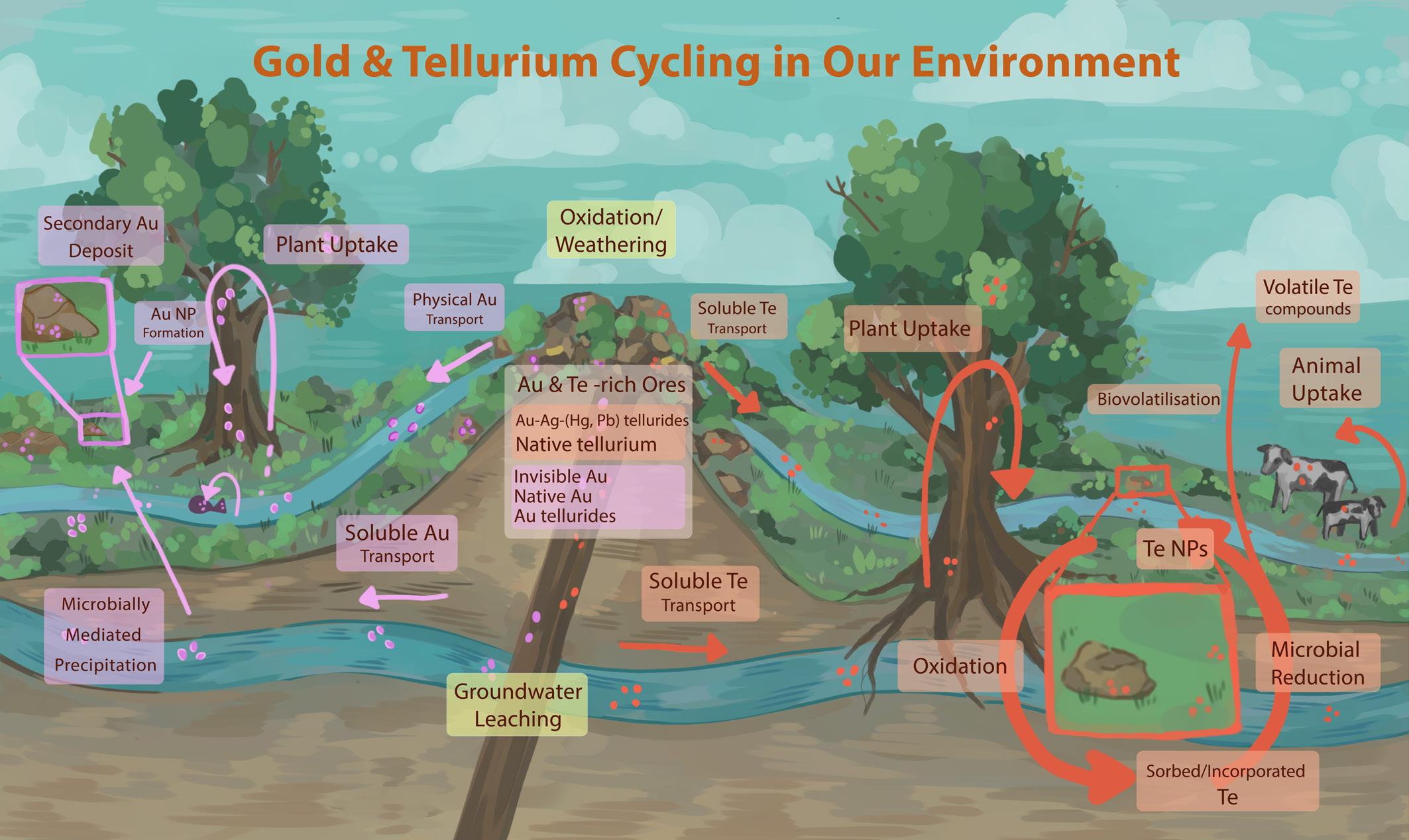
This understanding can also aid in developing more sustainable mining (and recycling) technologies. Around Moctezuma, at least, microbes effectively separate gold from tellurium in soils.
Innovative solutions will be required to address our planet’s need to generate more energy more sustainably, and cleaning up mine product processing to better separate all potential commodity elements is just one of these ways.
Owen Peter Missen Research Assistant: Geochemistry Monash University Barbara Etschmann Research OfficerMonash
UniversityJeremiah
ShusterInstrument
ScientistTübingen Structural Microscopy Core Facility
University of Tübingen
Joël Brugger
Professor: Synchrotron Geosciences
Monash University
Stuart Mills Senior Curator of GeologyMuseums
VictoriaInnovative solutions will be required to address our planet’s need to generate more energy more sustainably



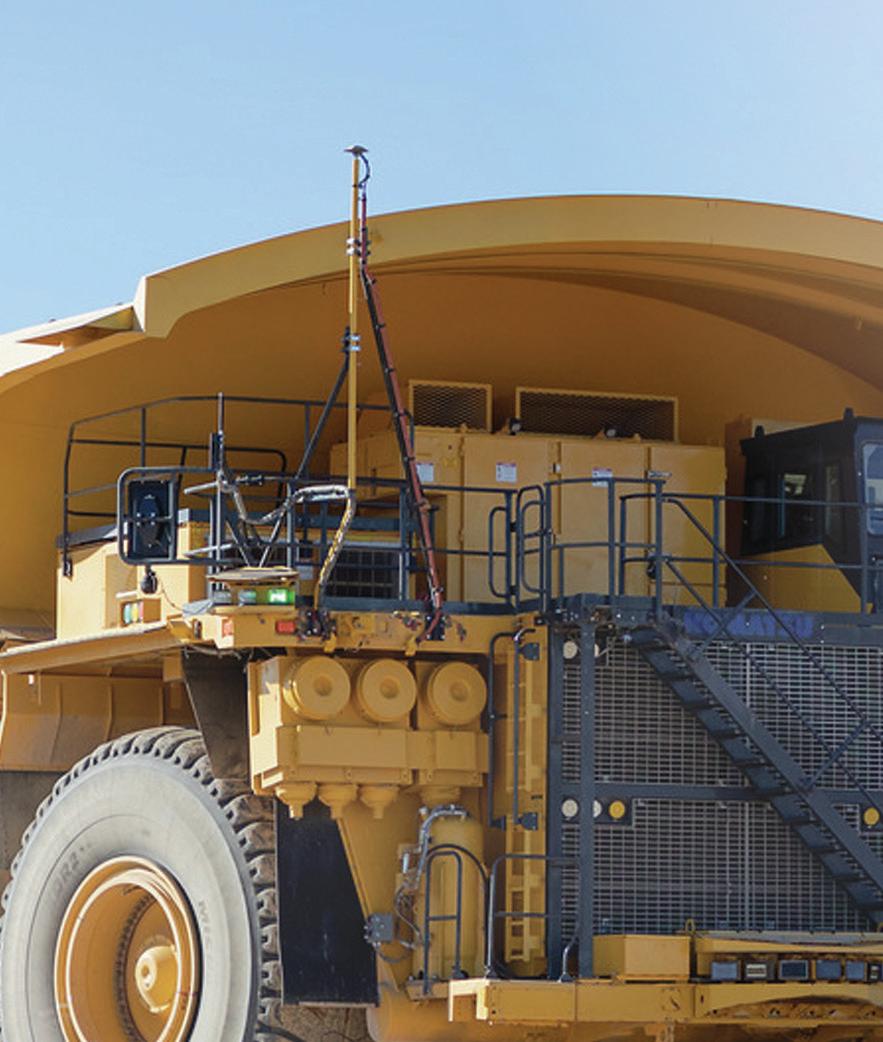
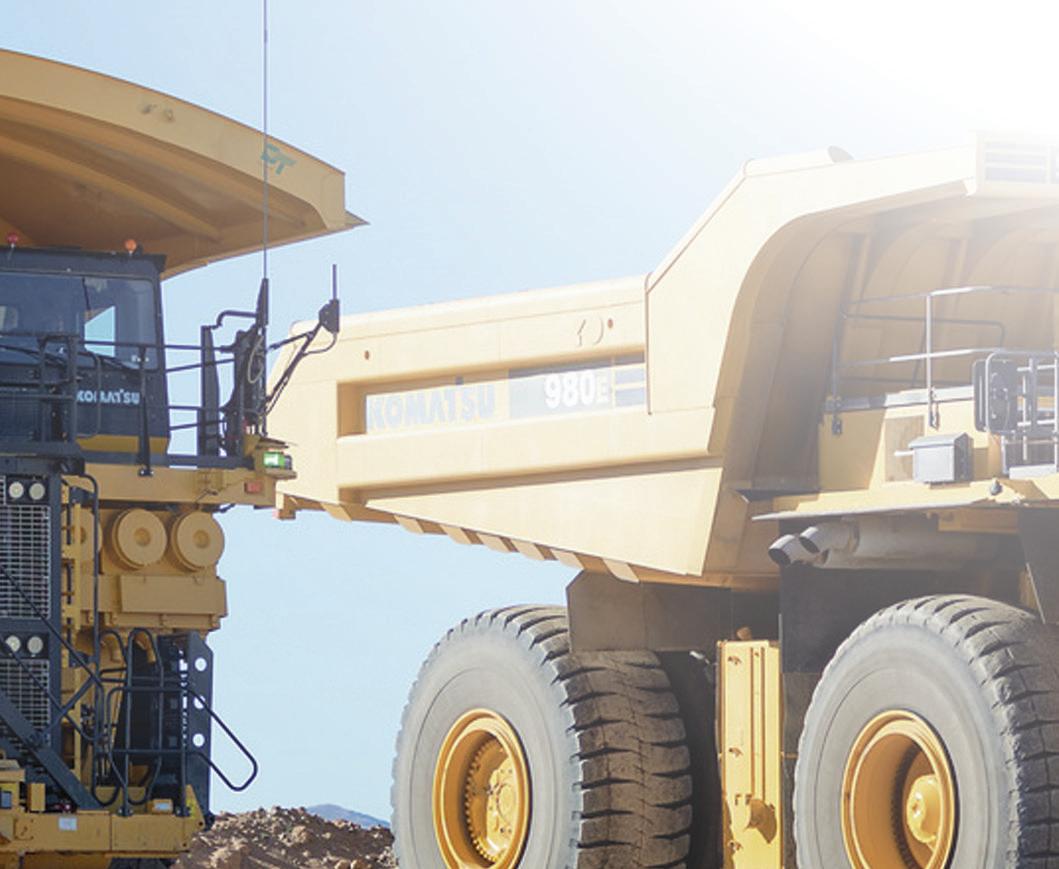
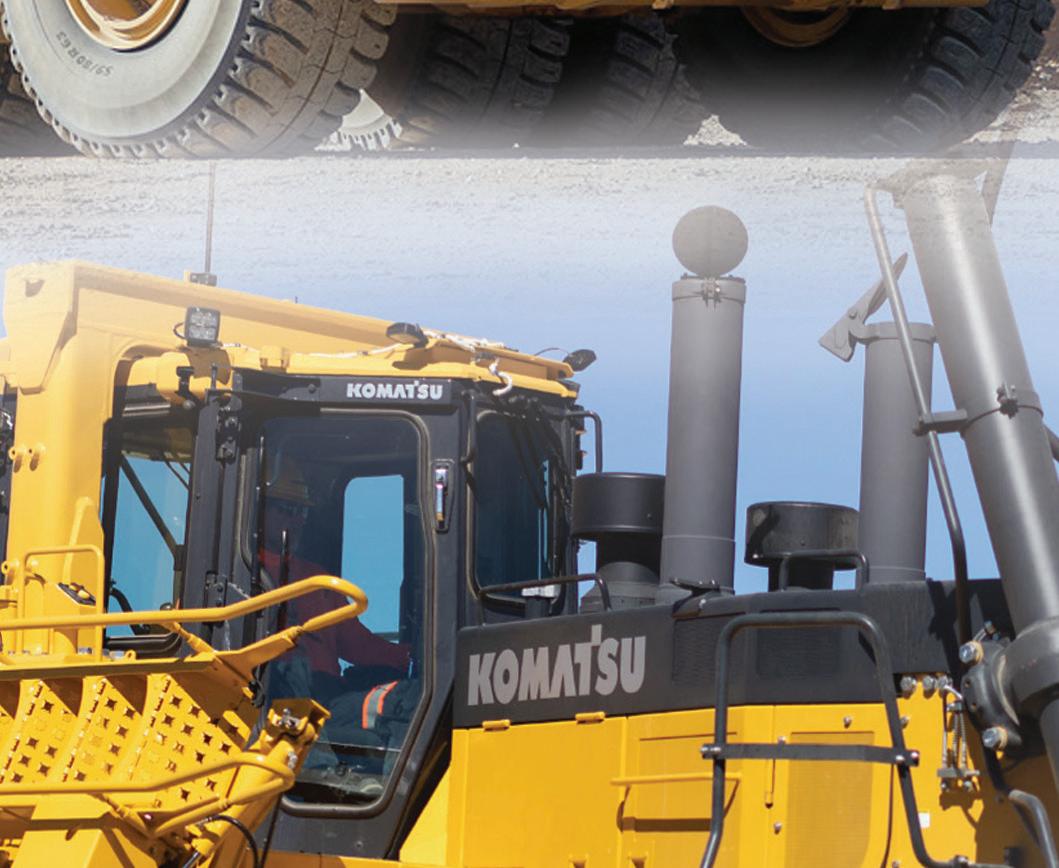


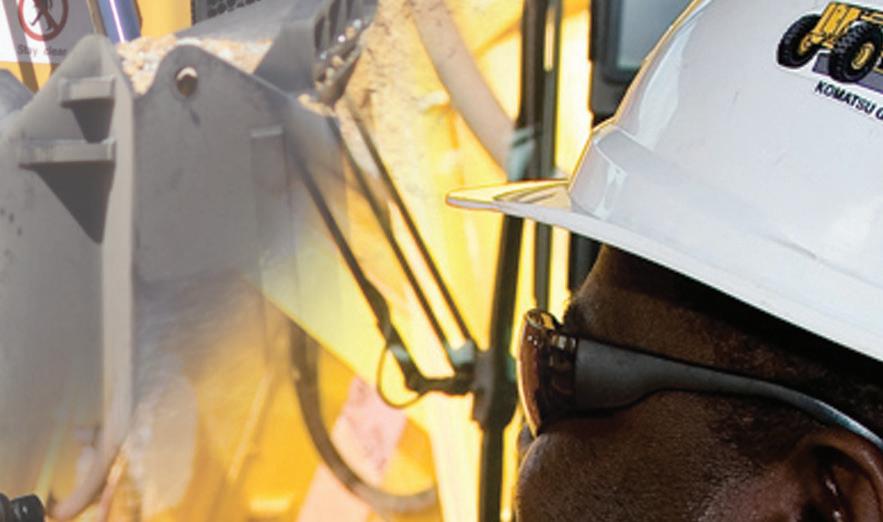











Anew project in Uganda aims to advance a more responsible artisanal gold mining sector across the country. The fiveyear planetGOLD Uganda project is funded by the Global Environment Facility (GEF) and implemented by the United Nations Environment Programme (UNEP). The project will be executed by the international nonprofit organisation IMPACT, in partnership with Uganda’s National Environment Management Authority (NEMA) and the country’s Directorate of Geological Survey and Mines (DGSM). IMPACT transforms how natural resources are managed in areas where security and human rights are at risk.

Jeehu (Pty) Ltd is a black women-owned multidisciplinary engineering company specialising in engineering and mining services. It provides quality upskilling short learning programmes in the fields of engineering, business management and life skills. These services are offered to industries, mining houses and government departments around South Africa and beyond—and particularly to youths, underdeveloped and developing communities.

JEEHU ENGINEERING
Design
Design, refurbishing and supply of mechanical structures; Civil construction, concrete work and building work; Steel structural work; Pipe routing design and installation;

Electrical work—installation of HV, MV and LV and maintenance; General engineering and plant maintenance (manufacture and replacement of chutes, liners, belt splicing etc.);
General construction
Mining Mine rehabilitation;
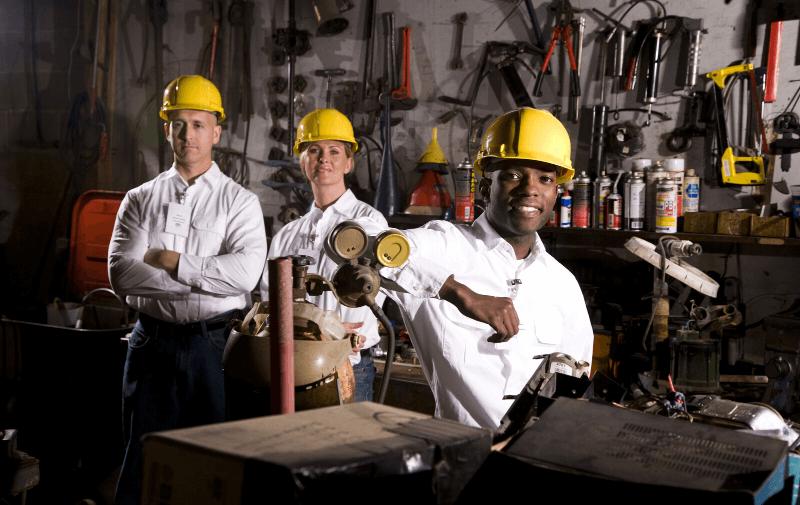
Fluid management—slurry and dewatering;
Deep-well borehole equipping; Drilling; Rendering of other mining services
JEEHU SUPPLIES
Oils and all lubricants; HDPE pipes and all dewatering accessories; Pumps, flow meters and valves
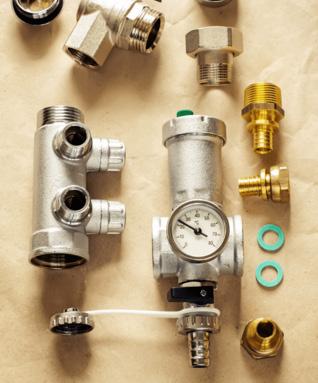
JEEHU MAINTENANCE SERVICES
Jeehu employs a team of dedicated researchers who take great care to search, document and implement the world best practice in the field of plant maintenance. Due to the calibre of staff, the identification of client problems, corrective action and execution of the required task according to international norms and standard is easily obtainable. The design team is well trained for any modification of plants, fabrication and installation of new designs.
JEEHU TRAINING CENTRE
Jeehu is dedicated to upskilling engineers, technologists, technicians, project managers and business managers. The Training Centre offers a range of well-researched and thought-out short courses that will contribute immensely to the professional development of thousands of individuals who will apply the expertise gained from these courses to their own systems and facilities.

Jeehu provides dedicated, effective and efficient engineering and mining
The planetGOLD Uganda project will work together with local communities to reduce the use of mercury in artisanal and small-scale gold mining— the world’s largest source of anthropogenic emissions of mercury pollution—while improving the health and lives of local mining communities. The Ugandan project is part of a global programme similarly implemented in 23 countries.
The project plans to support 4 500 men and women at 11 mine sites in the country, reducing mercury use by
15 tonnes over five years. It aims to reduce the use of mercury by supporting formalisation of the artisanal gold mining sector and increasing access to finance. This will lead to adoption of mercury-free technologies and allow access to more responsible and traceable gold supply chains.
“Artisanal gold mining is a critical source of livelihood for many in Uganda and an important opportunity for economic development. Through the planetGOLD Uganda project, miners will be introduced to

solutions to the environmental and social challenges in the sector, helping to transition toward more responsible gold mining practices,” says Ludovic Bernaudat, head of the GEF Chemicals and Waste Portfolio. A virtual inaugural inception workshop in November last year brought together Ugandan mining governance authorities and the technical services of the mining administration to introduce the key themes and priorities of the project.
According to the World Health Organization, exposure to mercury—even small amounts— may have toxic effects on the nervous, digestive and immune systems, and on lungs, kidneys, skin and eyes, as well as pose a threat to the development of the child in utero and early in life.
In Uganda, an estimated 90% of the country’s gold production is mined artisanally (bit.ly/3i8zO8h), with more 31 000 miners in the artisanal gold sector.
Artisanal and small-scale gold mining is the world’s largest source of anthropogenic emissions of mercury pollution
Sekta is an industrial services force that reflects the maturity of our society and a genuine understanding of the pivotal role we play in it. We provide services to the energy, petrochemical, oil and gas, mining, construction, food and beverage sectors. Our services support an industrious nation and the African continent, so that we can continue to develop in prosperity and pride.

www.sekta.co.za

info@sekta.co.za
Sekta is a specialised industrial services group.
B-BBEE Level 151% black women owned

While the quantities that miners are extracting and processing are very small, the use of mercury is very common. Seventy-three percent of Uganda’s artisanal gold is produced using mercury (bit.ly/3ExiNvT), resulting in more than 15 tonnes of mercury being released annually.

Mercury contaminates the soil, water, air and the equipment that is used. It is highly toxic to miners and others who come in direct contact with it— particularly when vaporised or among children and pregnant
women. Mercury emitted into the air can also circulate around the world and contaminate water, fish and wildlife far from the mine from which it was released.
“In 2019, Uganda ratified the Minamata Convention on Mercury (www. MercuryConvention.org). We are eager to partner with the planetGOLD Uganda project to implement our commitments to reduce and eliminate the use of mercury in artisanal gold mining,” says Dr Barirega Akankwasa, executive director of
NEMA.
“We look forward to introducing a cleaner, more responsible and more prosperous artisanal mining sector that benefits both the people and the planet.”
Adds Agnes Alaba, acting director of the DGSM, “With the growth of the artisanal mining sector over the past decade, Uganda has had to reform its legislative approach to keep up with the changing context of the mining sector. The Mining and Minerals Act 2022 provides the opportunity to support responsible development in the sector, which includes gazetting of artisanal mine sites for easy management, environmental stewardship, improved health and safety at mine sites, and elimination of hazardous chemicals such as mercury.”
planetGOLD Uganda www.PlanetGOLD.org/Uganda
Mercury contaminates the soil, water, air and the equipment that is used. It is highly toxic to miners and others who come in direct contact with it



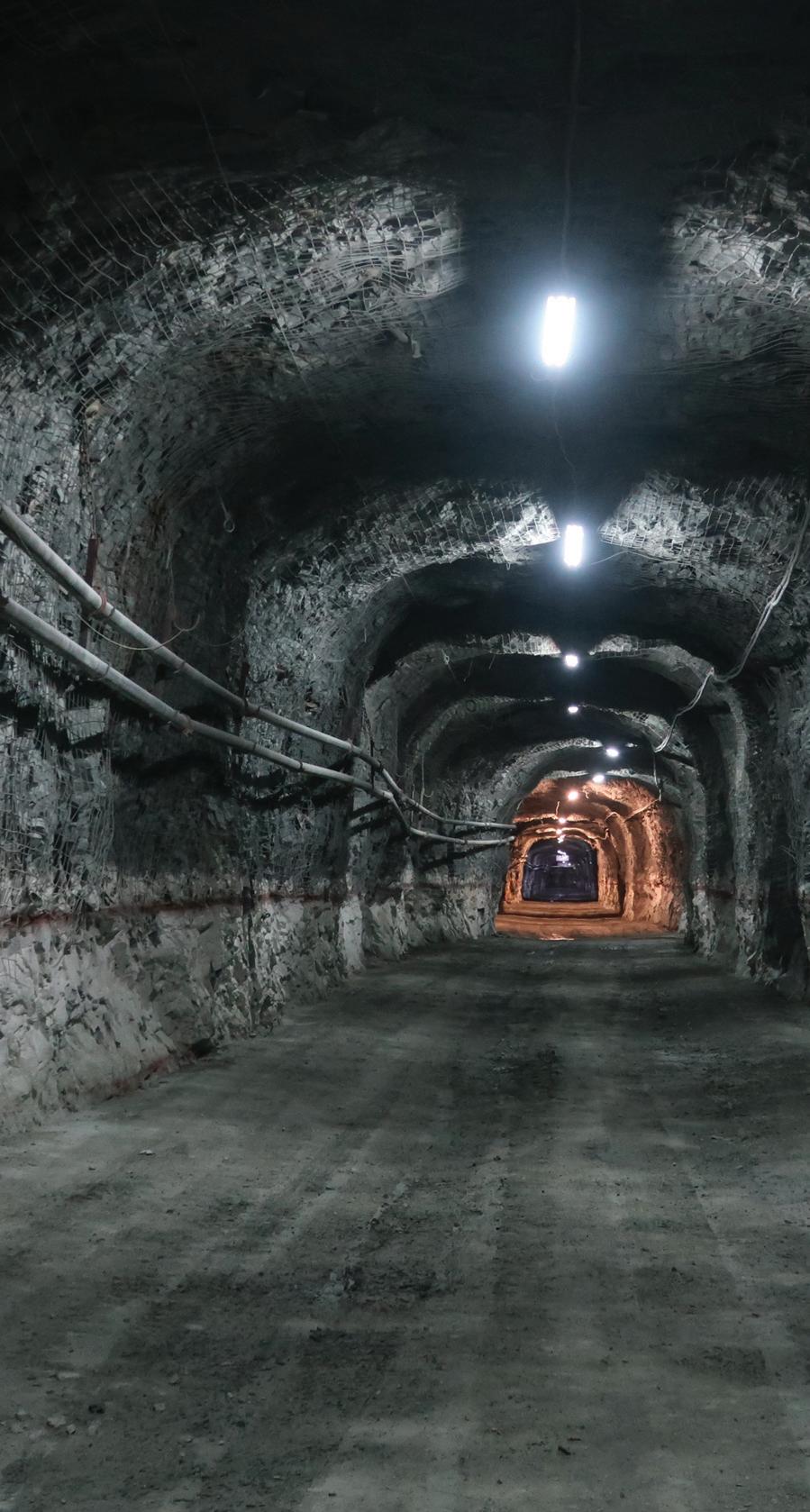

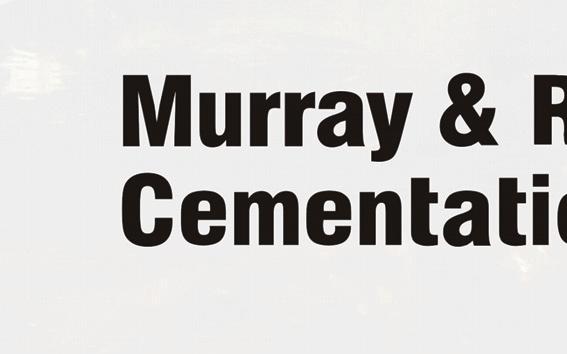





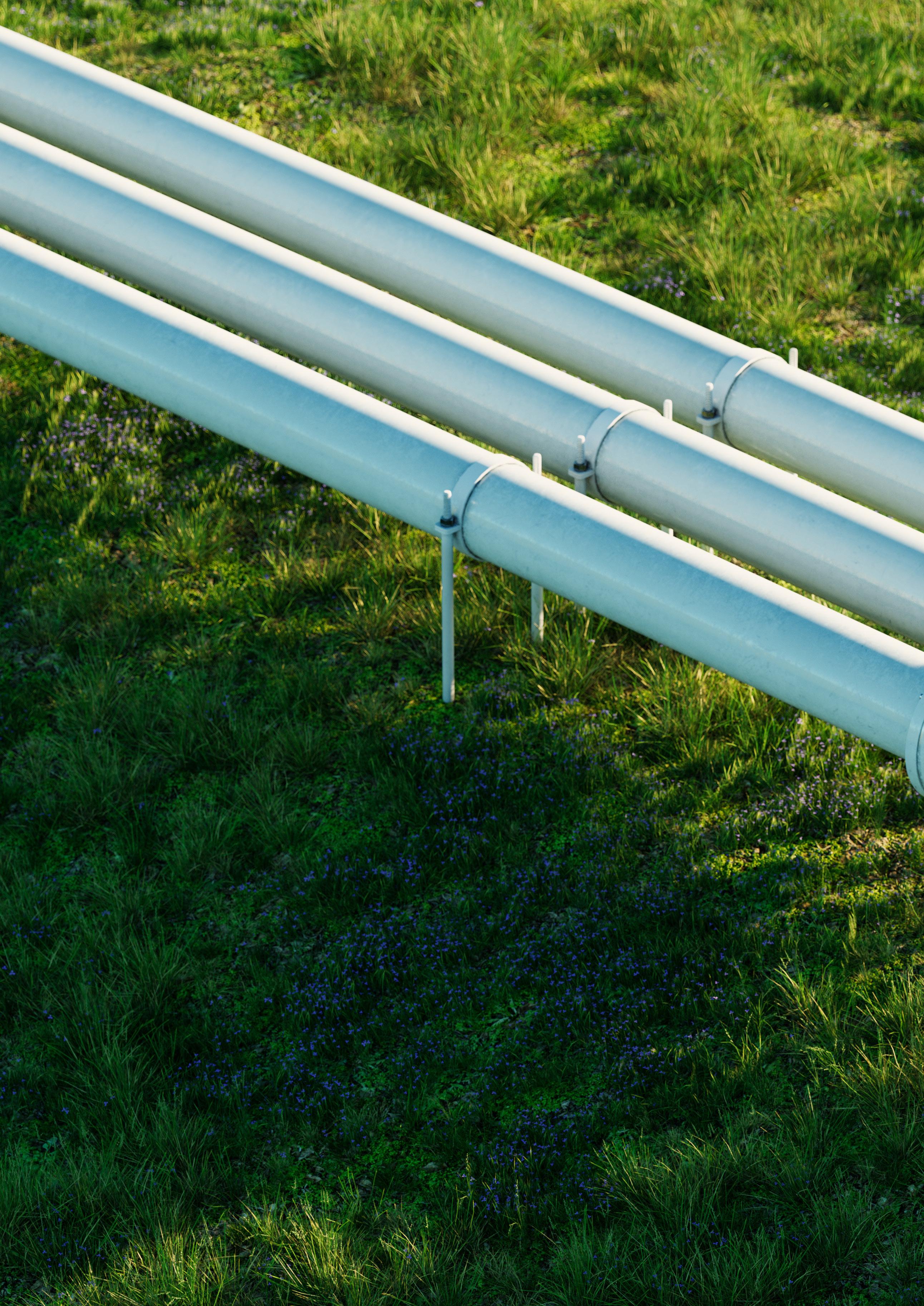
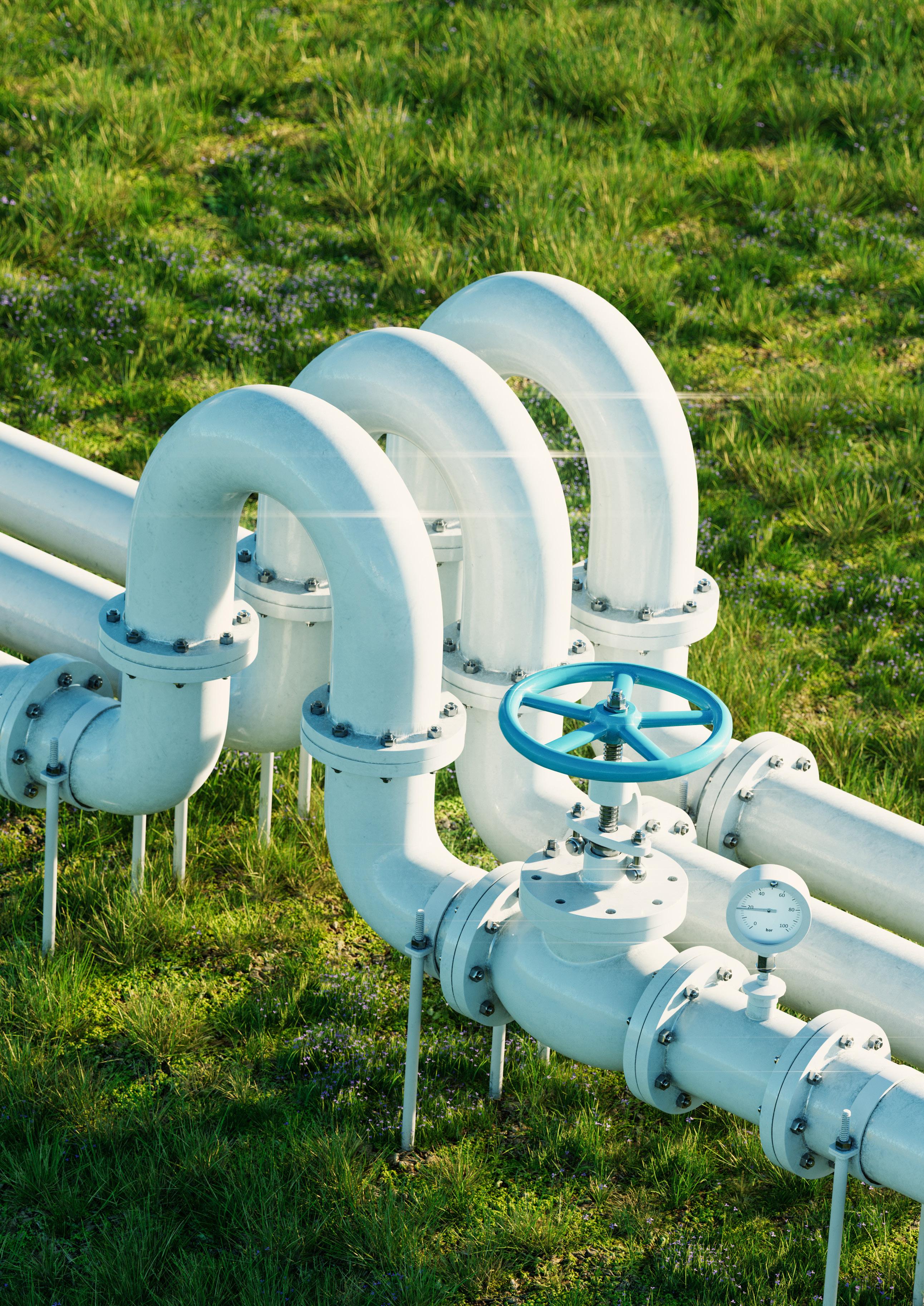


With growing interest in every aspect of the hydrogen sector, regulation is paramount.
The abundance of renewable resources that Africa possesses, along with a developed renewable energy sector where renewable power can be produced at low cost (a key ingredient for generating low-cost green hydrogen), gives Africa a clear competitive edge as a clean hydrogen hub.
Africa is also geographically well placed to serve both European and Asian markets, and is an established export route. With oil and gas frequently exported from Africa to Asia, Europe and the rest of the world, exporters of hydrogen may be able to leverage these established routes to drive down some transportation/export costs.
Africa’s natural gas export infrastructure has the potential to be repurposed to transport hydrogen across Africa and to Europe via the natural gas pipelines connecting North Africa to mainland Europe.
Foreign government support/buyin for this export route from Africa to Europe exists at the European Union level: The EU Hydrogen Strategy (bit.ly/3D0M6aH) refers to the importation of renewable hydrogen from North Africa to meet projected hydrogen
demand in the context of its 2050 carbon-neutral goals. European bodies such as the Fuel Cells and Hydrogen Joint Undertaking—a private-public partnership aiming to encourage development in the hydrogen industry—emphasise this goal (bit.ly/3VBDqyA).
EU communications call for investment to develop clean hydrogen production across North Africa. EU support could be available for hydrogen projects in Africa in connection with various funding/support schemes including the Connecting Europe Facility (bit.ly/3D6cpfL); the Neighbourhood, Development and International Co-operation Instrument (bit.ly/3s7POsB); and other more development-focused platforms.
The European Bank for Reconstruction and Development has already begun working with governments across the continent, notably in Egypt (bit.ly/3yM8MZC) and Morocco (bit.ly/3yM95DK), to study the challenges in deploying a hydrogen economy.
Following this trend, Germany is in the process of developing a production and import chain for renewable hydrogen in a joint project with western Africa countries (bit.ly/3T9Fdcy).

Germany and Morocco have signed an agreement (bit.ly/3D1kQJa) to develop the production of green hydrogen and further research and development in the space, pursuant to which Morocco is scheduled to build Africa’s first large-scale green hydrogen production plant: the Power-to-X project.
Morocco has also signed a declaration of co-operation with Portugal (bit.ly/3MGFku2) to develop a partnership in the green hydrogen sector.
The Italian government is seeking (bit.ly/3CF7vop) to import clean hydrogen from North Africa, given the pipeline connections, including the Trans-Mediterranean Pipeline, and the lower cost of producing renewable power in Northern Africa.
Africa’s natural gas export infrastructure has the potential to be repurposed to transport hydrogen across Africa and to Europe
Renewable energy for a sustainable future
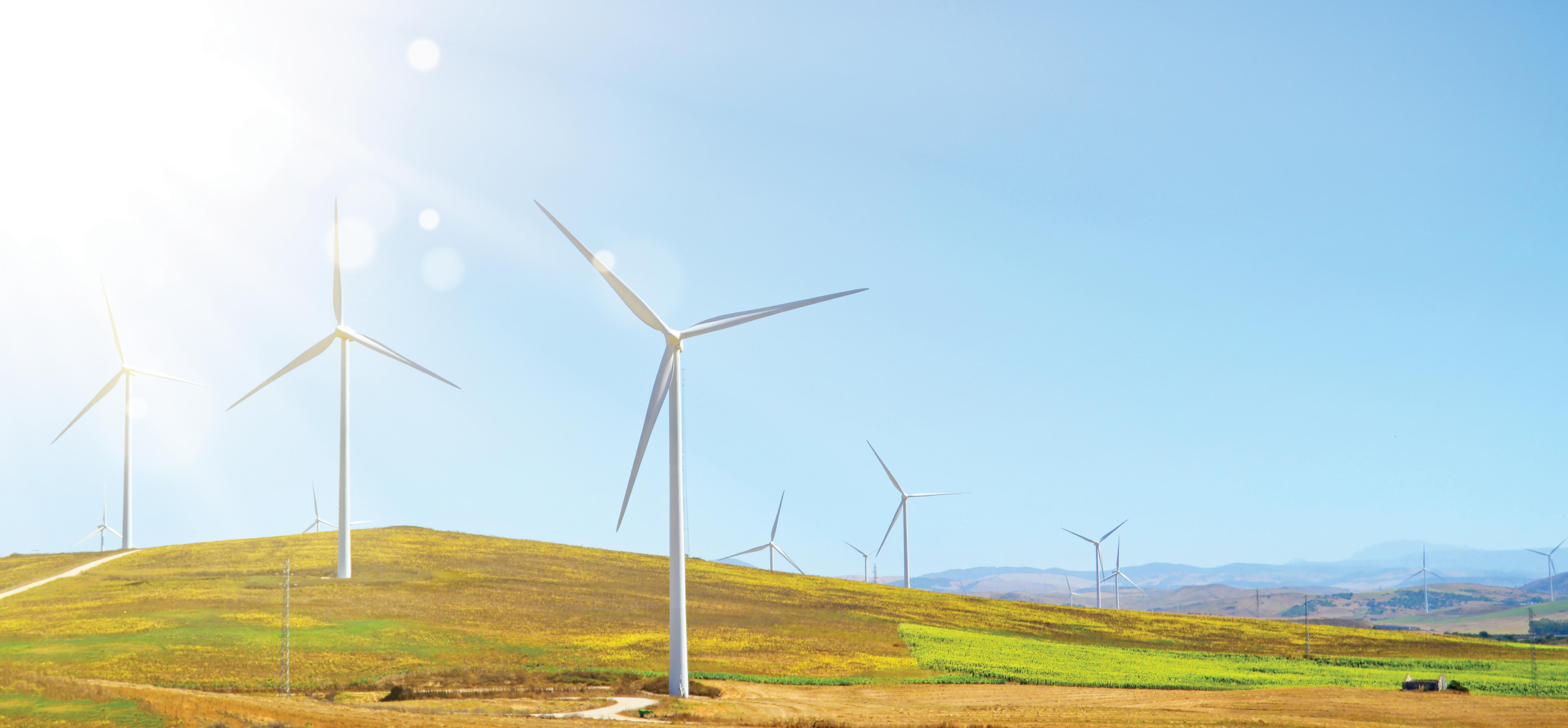
We seek out energy around the globe: in the power of wind and water, in the heat of the sun,


Follow
OPEN POWER FOR A BRIGHTER FUTURE. enelgreenpower com
Certain countries in Africa are already on the way to creating a hydrogen sector, showing strong government support for the development of the sector— Morocco and South Africa being notable early movers.
Morocco has set up a National Hydrogen Commission (bit.ly/3D5P2my) and is developing its national road map for hydrogen; Morocco is also part of the latest CertifHy (www. certifhy.eu) pilot phase—an EUwide hydrogen guarantees-oforigin pilot scheme.
The South Africa government has published its hydrogen strategy/ roadmap (bit.ly/3ERtJWW); and with its abundance of wind and solar energy production, the country is a natural candidate for becoming a green hydrogen exporter.
In South Africa, as the first phase of the government’s Platinum Valley Corridor initiative (bit.ly/3VxSz47), Anglo American announced a collaboration agreement spearheaded by South Africa’s Department of Science and Innovation with ENGIE, the South African National Development Institute and Bambili Energy to complete a feasibility study to develop a Hydrogen Valley in the platinum group metals–rich Bushveld geological area.
The South African government also announced a fuel cells hub project (bit.ly/3Tu9lPW), which is currently undergoing an environmental impact assessment.
The African Hydrogen Partnership (www.afr-h2-p.com), a pan-African association dedicated to the development of a clean hydrogen economy in Africa, will be helpful in considering a road map to the development of hydrogen at an Africa-wide level, and in considering macro issues across the continent, such as transportation networks. In the first meeting of the African Hydrogen Partnership in Ethiopia (bit.ly/3EIuhyq), the development of green hydrogen for export to Europe and Japan was discussed.
The development of regulation across Africa to effectively regulate the hydrogen supply chain (production, transportation, storage etc.) and to provide appropriate comfort and incentives for financiers, developers and first-movers, will be key to unlocking Africa’s potential in the hydrogen economy. Regulation is particularly important at all levels, given the vast amounts of capital required to invest at the scale needed to bring down costs and prove up the technology.
Capital is already being invested. In South Africa, for example, Sasol and Toyota South Africa Motors have partnered (bit. ly/3yLRAUg) to develop a green hydrogen mobility ecosystem, with a pilot project focusing on fuel cell–powered long-haul trucks for use in one of South Africa’s main freight corridors.
Anglo American is developing a 300-tonne hydrogen fuel cell–powered truck (bit.ly/3MBhlw0) to use in its mining operations in Mogalakwena, South Africa, aiming eventually for usage at its other mining sites.
We anticipate that other mining and energy companies will look to develop hydrogen fuel cell–powered heavy vehicles as a way to decarbonise their operations. Given standard electric battery limitations, hydrogen fuel cells will likely have the upper hand in this race.
With the push for decarbonisation, and with the global green hydrogen market expected to grow from $2.14 billion in 2021 to $135.73 billion by 2031 (bit.ly/3Tuajf2), green hydrogen is proving particularly attractive worldwide, and especially so for Africa.

With its vast resources of sun, wind and coastline, Africa is in a prime position to sustainably harness these resources to meet its domestic growing demand for energy and accelerate the continent’s energy transition. And with certain regions’ potential to be net exporters of green hydrogen, also contribute to the energy transition of its neighbours in Europe and further afield.
Nina Bowyer, Partner Barbara McNulty, Associate Herbert Smith Freehills
The “Africa’s Extraordinary Green Hydrogen Potential” report represents the first detailed research of the feasible development of green hydrogen across the continent






“Thanks to this low-cost electricity and decreasing electrolyser costs, the next step is providing access to a clean fuel, cheaper than all the current fossil fuels. It will enable us to decarbonise the power sector and most hardto-abate sectors: fertilisers, steel manufacturing and refineries.”

According to Thierry Lepercq, founder and president of HyDeal, “As the global energy and climate crises unfold, mass-scale competitive green hydrogen is ready to provide energy security, affordability and decarbonisation. Integrated hydrogen hubs bringing together upstream, midstream and upstream players on the basis of long-term off-take contracts are building powerful business models. Pioneering African countries such as Mauritania are showing the way, proving that Africa can help the world with green hydrogen—ensuring for itself a future of industrial development, fast and clean growth for all.”
The study was previewed last year at COP 27 in Sharm el-Sheikh, Egypt. Government leaders, ministers, international finance, business partners and civil society from across Africa attended the unveiling event. The report was formally handed over to partners on 20 December.
The comprehensive analysis, carried out by international consultancy Corporate Value Associates (CVA), suggests largescale green hydrogen investment can accelerate decarbonisation by enabling large-scale African energy users—such as fertiliser and steel producers—to use green hydrogen. The research is enhanced by CVA’s unique strategic partnership with energy partners across Africa, Europe and around the world.
The study highlights that solar-powered green hydrogen is economically viable and can be produced at less than
€2 per kilogramme—cheaper than traditional fossil fuel energy—and cater both for local energy demand and allow green hydrogen to be exported to global markets. This is equivalent to energy costs of US$60 a barrel.
The research suggests three requirements to enable 50 million tonnes of green hydrogen to be produced in Africa by 2035:
• National planning, regulation and incentive schemes need to mobilise private sector investment.
• Pilot projects need to show successful green hydrogen generation, storage, distribution and use at both demonstration and commercial scale.
• Market-based partnerships are needed to enable mass-scale domestic and international off-take and demand for green hydrogen, and increase cooperation to design, finance, build and operate green hydrogen production, storage and distribution infrastructure.
• €1-trillion green hydrogen investment can deliver the equivalent of more than onethird of Africa’s current energy consumption, boost gross domestic product, improve clean water supply, and empower communities.
The new study outlines how production and transmission of
green hydrogen can lead to a €1-trillion investment yielding 7 exajoules of energy (versus a consumption in Africa of 19.9 exajoules in 2021) and a correlative massive increase in GDP, creating hundreds of thousands of permanent and skilled jobs across Africa.
Large-scale green hydrogen investment will transform supply of clean water in areas regularly impacted by drought and chronic water shortages and will help empower communities.
The new analysis estimates that green hydrogen investment could reduce carbon emissions in Africa by 40%, replacing 500 million tonnes of CO2 a year.
According to the study, large-scale green hydrogen generation will enable Africa to supply 25 million tonnes of green hydrogen to global energy markets, equivalent to 15% of current gas used in the European Union.
The new analysis will be followed by in-depth research of local green hydrogen investment potential, regulatory requirements and changing demand in the coming months.
Download the briefing document at bit.ly/3v5UiS2.
We belie e that earth’s rare and precio s legac can, thro gh responsible mining, create ab ndant o tcomes for o r people, comm ni es, in estors, c stomers and all other stakeholders in gi ing
e pression to life’s special moments.
www.petradiamonds.com
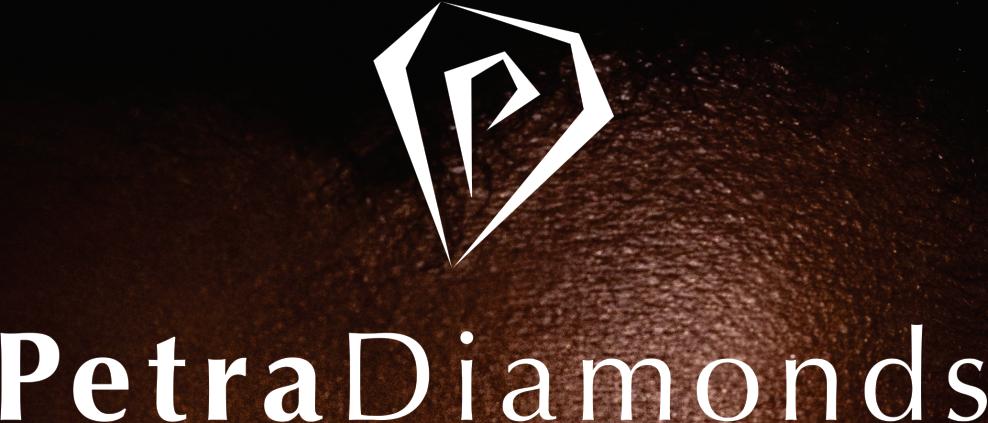

Nigeria experiences significant energy poverty. As noted in the African Energy Chamber’s recently released report, “The State of African Energy: 2023 Outlook”, consistent access to modern energy services—that is, steady and reliable electricity supplies—is available to only 60% of the country’s population on average, and access rates appear to be significantly lower in rural areas than they are in urban areas.
And according to World Bank data, about 99.9 million people, or more than 47% of Nigeria’s population, lived in rural areas as of the end of 2021. That means nearly 100 million Nigerians are living without any true level of certainty that the lights and the electric power that so many in the developed world take for granted will stay on.
I, for one, think they deserve to have that certainty. They deserve it on human grounds, and their country already has a significant amount of what is needed to provide them with it. And by that, I mean Nigeria has gas that it could use to generate power.
Nigeria has already been shown to have more than 200 trillion cubic feet (tcf) of gas in proven reserves, and government officials believe the figure could go even higher, perhaps reaching 600tcf following additional exploration.
If that prediction comes true, Nigeria will have the fourth largest gas reserves in the world, behind only Russia, Iran and Qatar. It will have more than enough gas to meet current demand; it will have enough gas to produce significant volumes of liquefied natural gas (LNG) for export while also supporting gasification programmes, both on the domestic and regional levels.
But it is not enough just to have all that gas. Nigeria also needs the means to make use of its gas. Without the proper infrastructure, it will not be able to put its resources to work and will merely have a scattered collection of raw materials.
In practical terms, this means Nigeria ought to have the following:
• Upstream production facilities for gas;
• Midstream gas transportation facilities such as pipelines, including field networks and trunk lines;
• Downstream gas-processing plants and production facilities for gas-derived fuels such as LNG, compressed natural gas, and liquid petroleum gas;
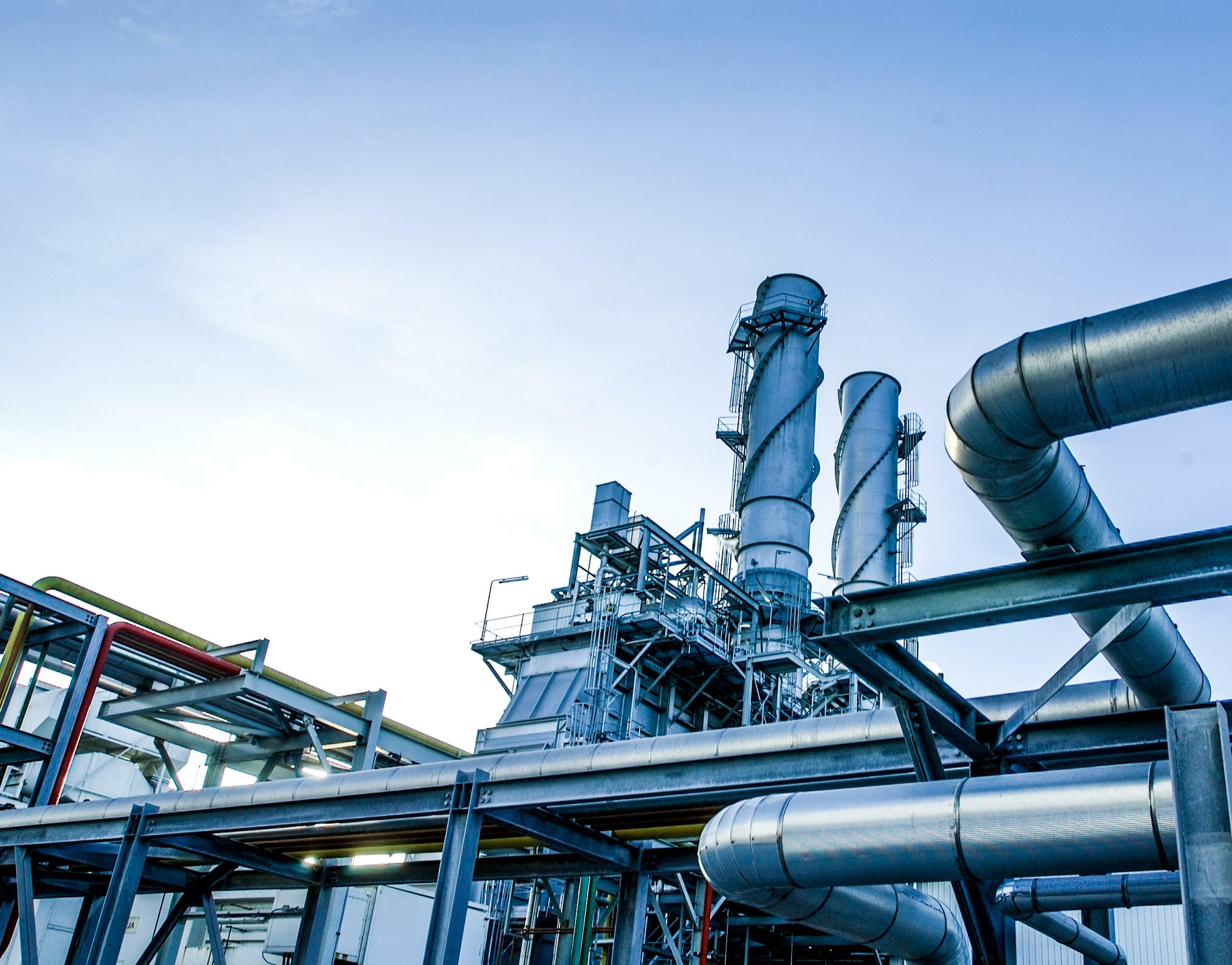
• Downstream gas distribution systems, including town gas networks;
• Downstream gas storage depots;

• Gas-fired thermal power plants (TPPs), preferably co-generation plants, as they are more efficient.
• Transmission, distribution and storage infrastructure for the electricity produced by gasfired TPPs; and
• Smart and secure operational technology systems that can optimise the flow of data and resources between consumer markets and energy networks.
I am not suggesting it is the Nigerian government’s job to provide all this infrastructure. But I do believe it is Abuja’s responsibility to make sure this infrastructure becomes available. To this end, I think Nigeria also needs government bureaucracies that are competent and trustworthy enough to ensure oil, gas and power-related contracts are only awarded to companies capable of providing the goods and services required within the acceptable parameters.
Developing this infrastructure requires the right kind of vision, which Nigeria already has in place: its “Decade of Gas” programme is designed to make the country entirely gas-powered by 2030.
When President Muhammadu Buhari rolled out this initiative in March 2021, he indicated it aimed to make the gas sector the cornerstone of Nigerian economic activity.
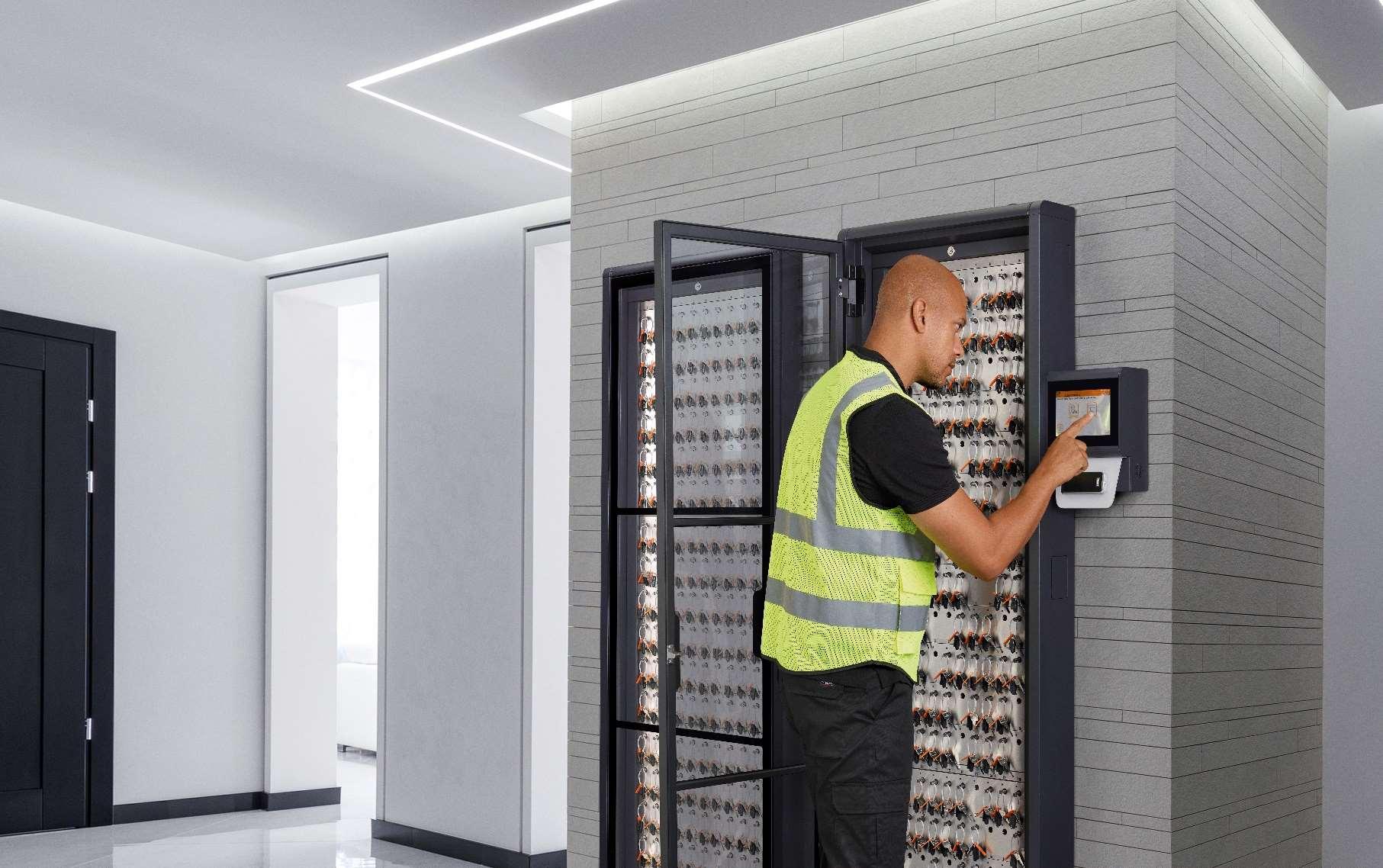


By the time the “Decade of Gas” comes to an end, he said, the country will have done the following:
• Adopted a new oil and gas law to facilitate investment;
• Carried out new exploration projects, discovered new reserves and brought new fields on stream;
• Constructed new gasprocessing plants and production facilities for LPG and other gas-derived fuels;
• Built new export pipelines and constructed new production trains at gas liquefaction plants such as Nigeria LNG;
• Constructed new domestic pipelines along routes to serve local customers plus gas-fired TPPs to increase domestic electricity supplies; and
• Expanded domestic power transmission and distribution networks, especially in rural areas.
Nigeria still has a significant amount of ground to cover before it achieves all these targets. However, it has made progress. The biggest example of this is the Petroleum Industry Act, which Buhari signed into law after it passed both houses of the National Assembly. The Nigerian government is also successfully promoting LPG, a gas-derived fuel, as a replacement for wood and charcoal as cooking fuel. (According to NLNG, domestic LPG consumption has climbed by around 1 000% over the last 14 years.)
And as recently as this past November, Nigeria moved closer to building its first floating LNG facility. Nigerian company UTM Offshore signed a front-end engineering design contract to design the facility with JGC Corporation, Technip Energies and KBR. Chief Timipre Sylva, Nigeria’s Minister of Petroleum Resources, described the project as a step in the right direction for the country to develop, exploit and monetise its natural gas.
During the African Energy Week in Cape Town in October 2022, Amni International Petroleum Development Company Limited (a Nigerian independent oil and
gas exploration and production company) and the African Export–Import Bank signed an agreement for the provision of a $600-million syndicated reserve-based lending facility.
To a lesser extent, Abuja can also claim credit for the headway it has made on the Ajaokuta-KadunaKano pipeline, which is being built to bring gas to the northern part of the country. When finished, the pipeline will deliver fuel to gaspowered industrial facilities and feedstock to TPPs with a generating capacity of 3 600MW.
It may also serve eventually as the first leg of the Trans-Saharan Gas Pipeline (TSGP) network, which will allow Nigeria to export gas to Europe via Algeria. Unfortunately, though, the project has been running behind schedule, and the heavy floods that began hitting many parts of the country in mid-2022 have caused additional delays.
In the meantime, Abuja has also moved forward with plans for establishing another gas export network: the Nigeria-Morocco Gas Pipeline (NMGP), a 5 600km offshore network that would serve more than a dozen West African states. This system would, like TSGP, pump Nigerian gas to Europe, but it would serve the purpose of delivering the gas to regional markets as well. As such, it would establish Nigeria as a supplier of fuel to much of West Africa.
Thus far, neither the NMGP nor TSGP has been built. But Nigerian authorities are working to hammer out agreements on these projects— and they see the ways that European market conditions have changed since the beginning of 2022 as an incentive to work harder and faster.
If they succeed, they will create infrastructure that could do quite a bit to alleviate energy poverty in Nigeria and beyond.
In the case of the NMGP, the construction of this pipeline would provide multiple countries beyond Nigeria with a steady source of
gas. As such, it would serve as an incentive for the construction of TPPs in places where millions of people do not have access to reliable energy supplies. At the same time, the pipeline’s access to European markets, where buyers are more likely to pay in hard currency, would help ensure the profitability of the whole system.
Likewise, the TSGP network has the potential to benefit Nigeria by ensuring the country has enough access to hard-currency markets in Europe to cover the costs of the domestic initiatives that depend on AKK—that is, the gas-fired power and industrial projects in the northern part of the country.
Nigeria gives us examples of measures African countries can take to begin addressing challenges. No, Nigeria has not achieved its ultimate goaleradicating energy poverty, but it has plans and initiatives in place with real potential to make a difference—as long as the country continues pursuing them.
If they have not done it yet, governments throughout the continent should be developing and implementing multi-pronged programmes of their own to eradicate energy poverty. They, like Nigeria, should be leveraging their natural gas resources. They should be developing and executing gas utilisation plans, improving their approach to resource management, monetising natural gas to help pay for infrastructure projects, and launching more gasto-power initiatives.
Instead of being daunted by the vast numbers of Africans without electricity, shrugging our shoulders and giving up, I hope we will be steadfast in our determination to make energy poverty history by the end of this decade.
NJ Ayuk Executive Chairperson African Energy Chamber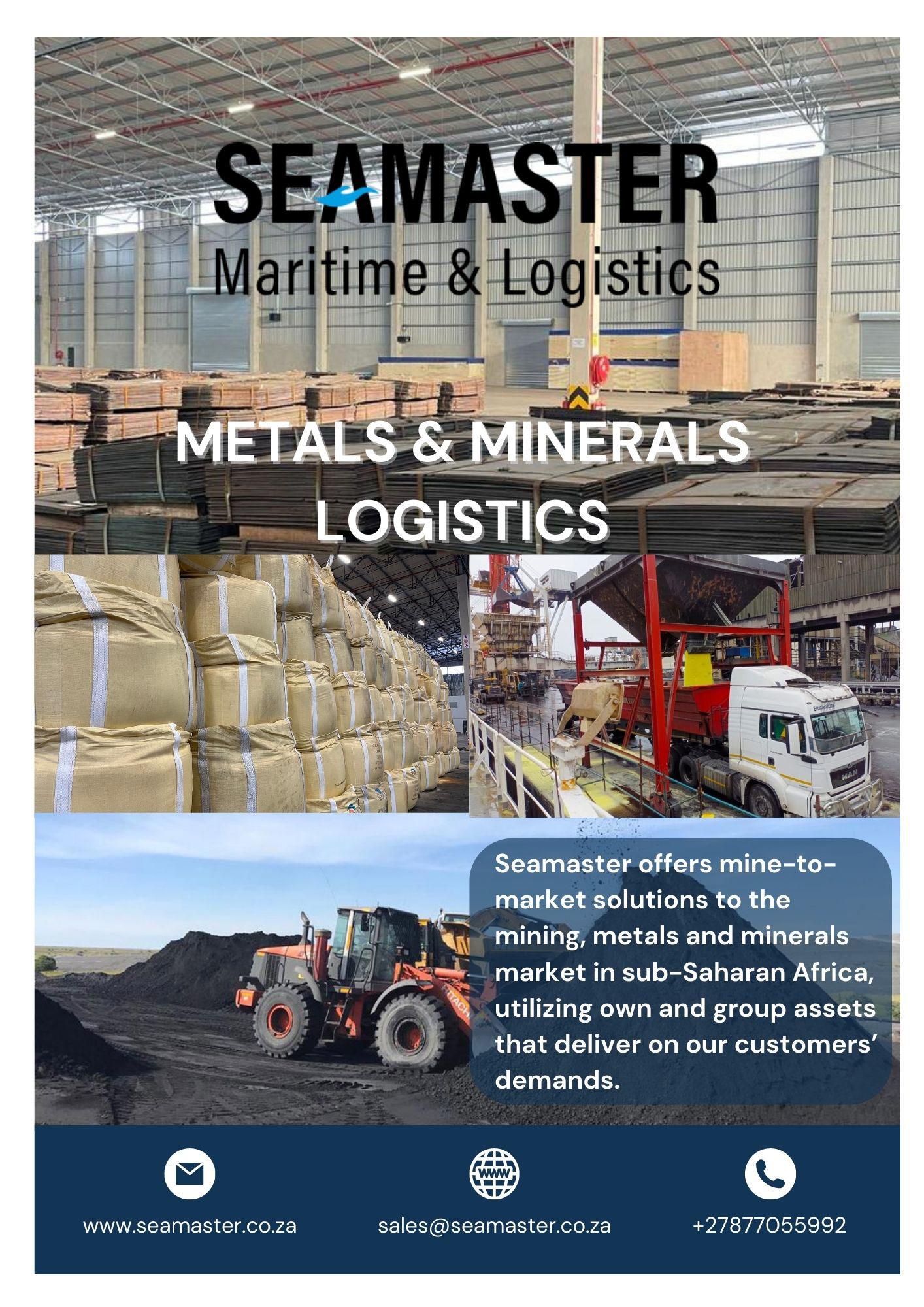
Dust-A-Side is an international company that has channelled more than 40 years of experience in Total Dust Control Management— with services that include dust and road management for opencast and underground mines, treating in excess of 13 000 000 square metres of mine haul roads. It also offers full dust suppression services for material handling applications.
Group CEO Paul Voorhout, a metallurgist by profession, says that Dust-A-Side “aims to be a global leader in dust control management by adding value to our customers, through innovative solutions and utilising the operational skills of our safety-conscious and highly motivated people.” The company already has a presence in more than nine countries worldwide.

He comments that Dust-A-Side stands out from other similar companies in this field due to its “Added Value Quantification” that includes:
• DASMetrics—Road Condition Monitoring & Reporting System, which helps prioritise maintenance schedules, with live data logged every minute and which can be accessed at any time.
• DASDMR—Dust Concentration Measurement System, which measures dust concentrations along with wind speed and direction, in real time.
• Dust Monitoring—High-pressure Dust Suppression Systems; Low-pressure Dust Prevention Systems; and >80% dust reduction.
This year marks Voorhout’s fifth with Dust-A-Side. “I’ve known Dust-ASide for over 30 years; I had worked with a few of the shareholders before they joined Dust-A-Side, so I was very aware of their developments,” he shares. While working in Europe in 2018, he was forced to return to his homeland of South Africa due to personal reasons—and it was decided that he help grow the international side of the business. As international marketing & sales manager, he was tasked with moving the company from a regional-based business to a global one, with a focus on Asia-Pacific and the Americas. Two years ago, he was promoted to group CEO.
Dust-A-Side has enjoyed much success in recent years. Voorhout mentions a few salient points:
• The company survived the COVID-19 pandemic with very little effect on the business, and maintaining its full staff complement.
• Zero Lost-Time Injuries were recorded during 2022.
• Numerous corporate social investment programmes were completed in South Africa, including the adoption of local schools.
• New opportunities arose in several territories that have never been serviced by Dust-A-Side, particularly in Asia and the America; while the company also grew its business in Africa and Australia.
• New technologies were introduced in the market to help clients get the end results they needed more cost-effectively.
• Clients were able to save millions of rands on water, tyre wear, fuel burn and productivity increases.
• There was >1% attrition in employees.
However, it is not always plain sailing. Voorhout says that in his position, each day comes with a new set of challenges: people, clients, products, finances, and others. South Africa has unique challenges. “But in most instances, one needs to remain calm and never overreact. What I say to my team is: Always take yourself out of the challenging position and don’t get emotional—sleep on it and find a solution when you have reorganised yourself.”
It is his inclusive leadership style that stands him in good stead to steer his team to achieve. “I allow for healthy debate, empower people to go ahead and make mistakes and use that as a learning moment. I also think I’m a good listener and people’s person.”
Voorhout adds that he has worked for many bosses over the course of his career, but not all these ‘bosses’ were ‘leaders’. Only two stand out as leaders, and they both led from the front, were strong at building quality teams, allowed equal participation, and always remained calm under pressure. It is these attributes that he tries to emulate.
The CEO and his team see a bright future for Dust-ASide in the coming years. “The mining sector is bullish, with demand going up and we see many new operations opening globally,” Voorhout says. “So we will continue to strive to be a global leader in dust control management by adding value to our customers. By continuing to do what we are doing—and doing it well—we aim to double our business by 2027.”
For more information, visit dustaside.com
Dust-A-Side is the only company that offers complete and integrated dust management solutions that increase productivity and safety, unlock cost efficiencies, and benefit the environment. It provides tailored solutions for haul roads, access roads, stockpiles, yards, broadacre sites, materials handling, bulk transportation, and more. These solutions withstand vast, diverse operating conditions.
Dust-A-Side offers a complete range of erosion control products and solutions designed to meet the needs of civil, mining, quarrying, construction or other projects. There are also tailored solutions for construction sites, mining and quarrying, agricultural settings, urban environments and more.
Dust-A-Side is one of the largest providers of haul road management solutions to the mining industry in the world. It offers a full-service business model incorporating the manufacture, supply, installation, maintenance and management of haul road performance and dust control solutions.

Dust-A-Side provides dust suppression for material handling applications: High-pressure dust suppression systems (50 to 70 bars) for tipping areas, conveyor transfer points and chutes, crushers, screens, stockpiles, stacking and reclaiming loading terminals; Lowpressure dust prevention systems (4 to 6 bars); Fog cannon tech for dust suppression on waste dumps, tipping bins, rail and ship loading, blasting sites and water evaporation.
The mining sector is bullish, with demand going up and we see many new operations opening globally.




Dust-A-Side is a South African international company which has chanelled more than 40 years of experience in Total Dust Management. Our Total Dust Management services include dust and road management for opencast and underground mines, treating in excess of 13 000 000m² of mine haul roads. We offer full dust suppression services for material handling applications.




Our Dust Control Management System consists of a range of environmentally friendly dust suppression products, with a comprehensive stabilization and continuous maintenance programme catering to your pit to port requirements.
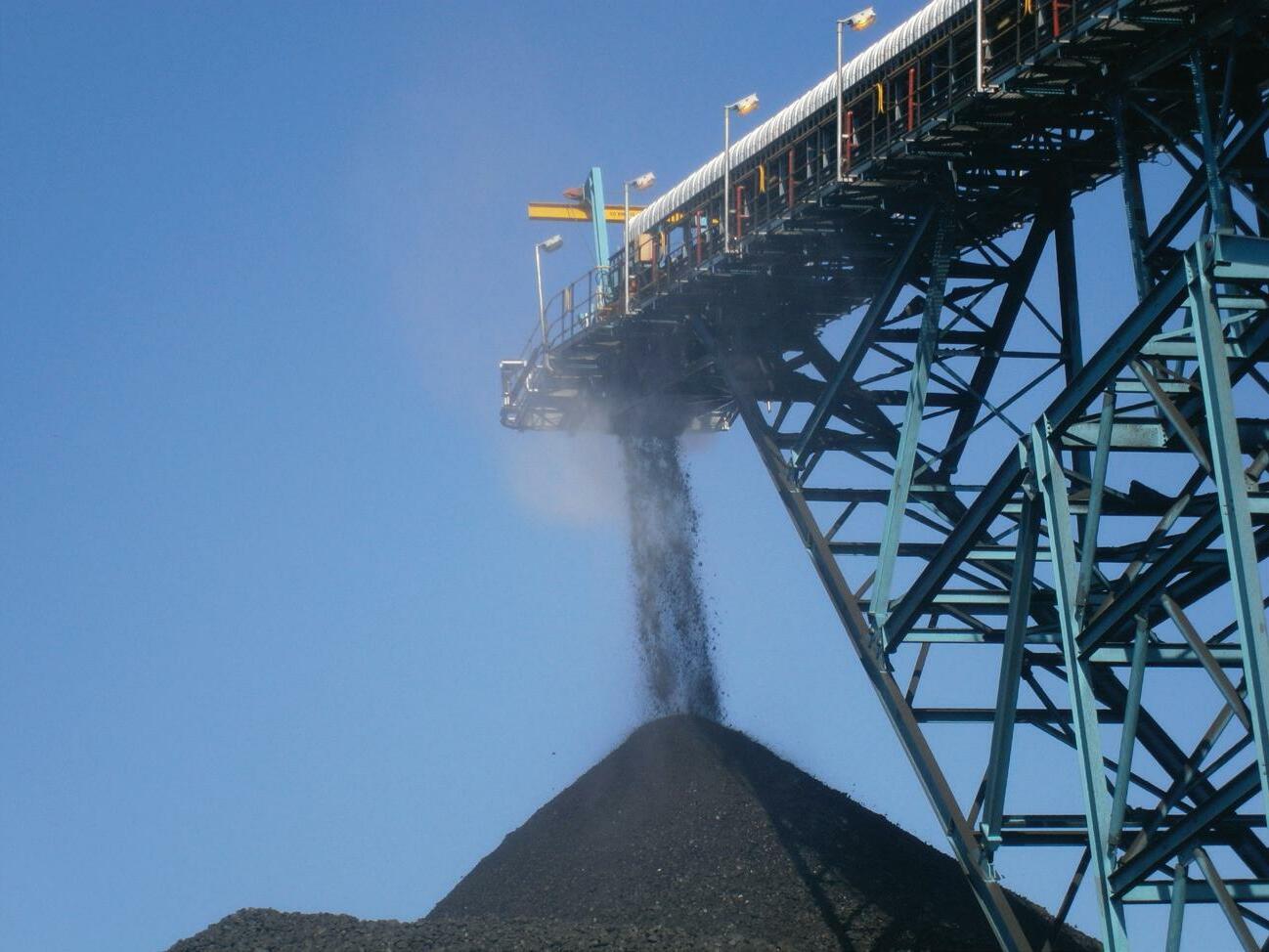

The robust sealed haul road surfaces allow optimal production for haul trucks and other vehicles to operate safely in all weather conditions. This is achieved with greater fuel efficiency, safety, and mechanical wear. Water saving remains one of the biggest benefits in employing Dust-A-Side and in excess of 90% saving has been recorded on certain mines



A safer working environment
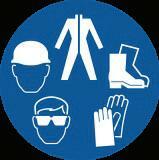
Effective dust suppression
>90% water savings
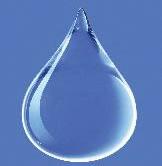
Reduced rolling resistance





Decreased diesel consumption
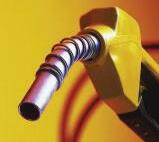
Increased tyre life
Improved hauling cycle time
Reduction of HME repairs and maintenance budget
No recapping required
Reduced production downtime after rain
No investment in road maintenance equipment
Increased productivity
Proven return on investment (ROI)


Dust-A-Side
Menlyn Piazza 2nd Floor, Cnr Glen Manor and Lois Avenue, Menlyn, Pretoria, 0063, RSA

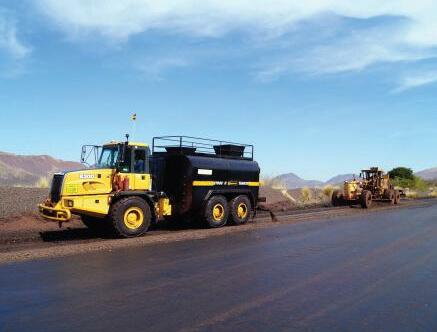
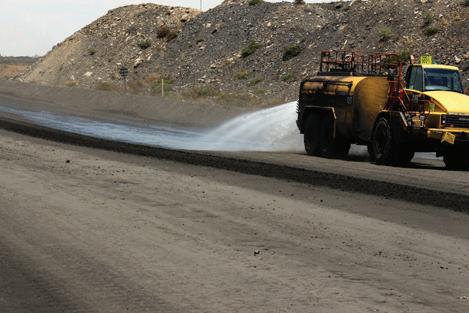
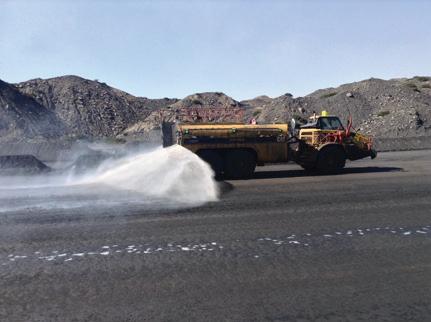


Dust-A-Side has a complete range of dust suppression products to provide the most operationally and cost-effective solution across any operation. They can be used – effectively and economically – in a wide range of applications such as semi-permanent roads, temporary roads, underground work areas, process plants, transfer points, stockpiles, rail veneering, construction sites and more.
DUST-A-SIDE
Based on Bitumen emulsion technology
Creates a sealed, dust free, greater safety performance and an all weather haul road surface
HYDROTAC
Based on Lignosulphonate technology
Creates a bound crusted road surface
Based on Bitumen emulsion technology
Creates a sealed, dust free, greater safety performance and an all weather haul road surface
DAS

Based on Bitumen emulsion technology
Creates a sealed, dust free, greater safety performance and an all weather haul road surface
HYDROSPERSE
Based on a combination of Lignosulphonate and Bitumen emulsion technology
Creates a semi-sealed road surface
Resistant to leaching
Excellent dust suppression capabilities
Creates a hard and stabilized surface
Mostly used for hard-park areas or areas that require extra stabilization
Also used as a sealing product in rail wagons and stockpiles
ACRIBIND
Based on a blend of Polymer and Lignosulphonate technology
Creates a partially sealed road surface
Excellent dust suppression capabilities
HYDROWET
Based on Surfactant technology
Has no binding abilities but facilitates the compaction of the road It is an excellent wetting agent
Very low dosage required
THERE ARE TWO DISTINCT PHILOSOPHIES TO CONTROL DUST WITH WATER SPRAYERS DURING MATERIALS HANDLING PROCESS.
Before you decide on a dust control system it is important to understand the difference between a dust prevention and dust suppression system. A lot of operations will require both, however the performance of the overall system and the effectiveness of controlling dust will be determined by whether or not the system is configured for your specific needs.
1.Low pressure (< 10 bar) and high water volume systems can be employed. This treatment philosophy is referred to as dust prevention. The spray system will discharge water directly on the material at the beginning of the transfer point. Being low pressure, the flow of water and droplets sizes are much bigger and hence referred to as wetting systems.
2.On the other hand, dust suppression systems (also known as misting systems) employ high pressure (> 50 bar) and low volume of water in the form of a fine atomised mist to capture dust that is already airborne and bring it back to the source.
Dust suppression and dust prevention systems are not exclusive; many operations have both systems configured to effectively control dust.
While dust prevention can be used in materials handling operations, dust suppression is the preferred option, owing to low water consumption, especially in areas where water is scarce. This option also minimizes water addition to material.


Our Total Dust Management services include fallout dust and road management for both opencast and underground mines as well as plant areas.
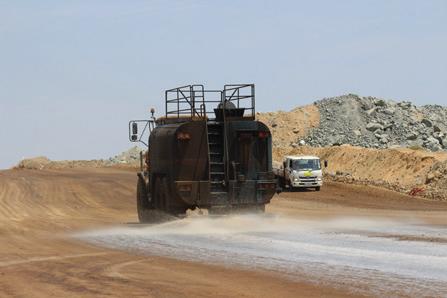


The ability of a nation to produce a safe and reliable supply of energy is one of the most important aspects of socio-economic development. Global energy supply and consumption have increased exponentially since the 1990s. (Figure 1). Unsurprisingly, the growing energy demand has also resulted in a technology shift. with the development of several alternative forms of energy production, including nuclear and renewables. These forms of energy now account for at least one third of energy production globally.
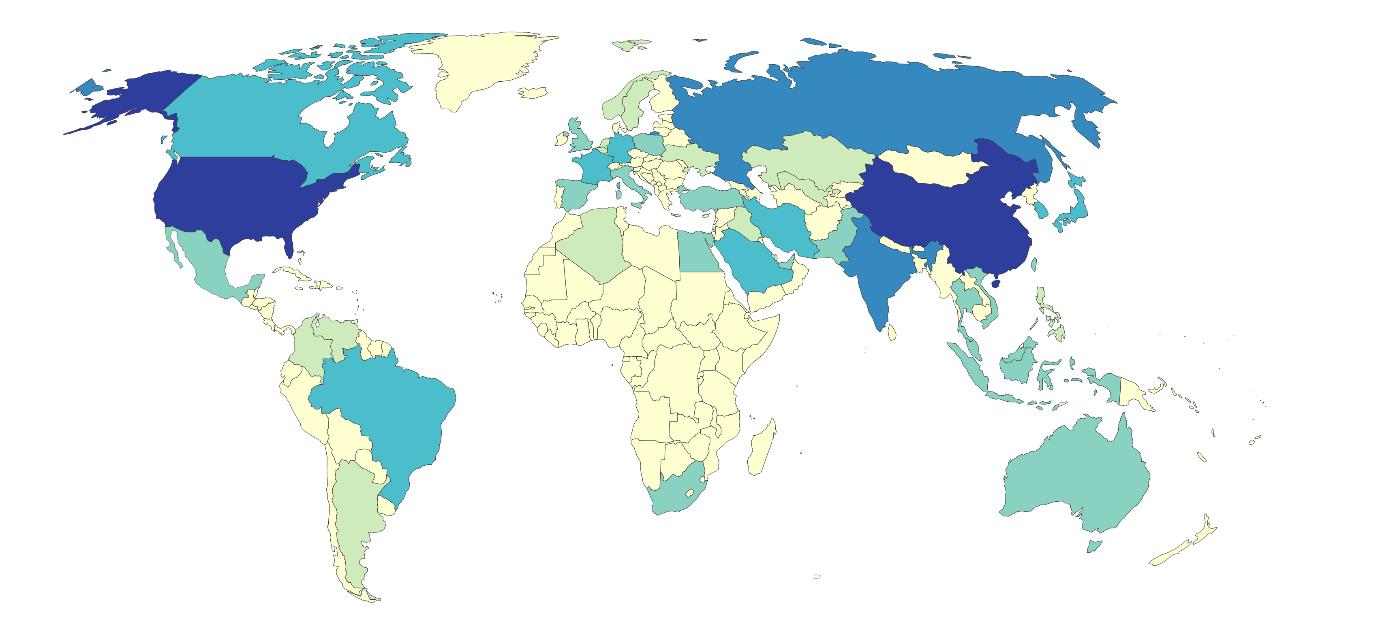
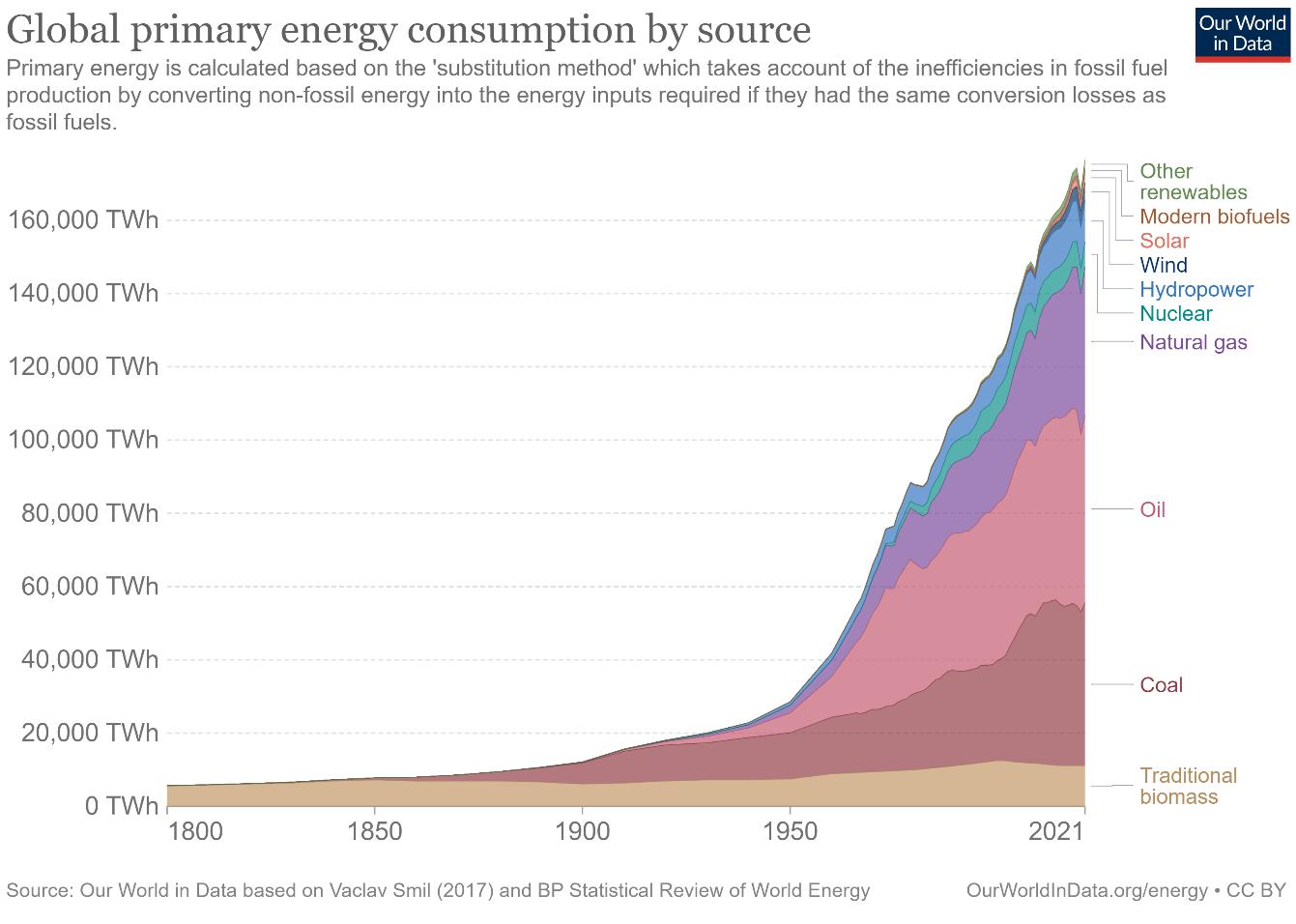
Africa remains significantly underdeveloped in terms of energy generation and equitable distribution to its growing population. Currently, more than half a billion people lack access to energy on the African
continent. The result is that Africa is the lowest consumer of primary energy globally (Figures 2 and 3). Traditionally, energy generation
in Africa has relied on fossil fuels. Since the 1990s, more than two thirds of Africa’s energy has been generated from coal and gas. Gas, in particular, has seen a drastic increase in development over the last century, now accounting for 30–40% of total energy generation on the continent.
Fossil fuels feature prominently in Africa’s energy generation mix, largely because these sources are geographically abundant and easily mined. Moreover, their requisite energy generation technologies are readily available, have been used for many decades and are easy to maintain. However, Africa finds itself in a precarious position as the world has started to shift away from fossil fuels, turning towards energy technologies. To date, these technologies have yet to be developed and implemented on the African continent.
Figure 1. Global energy consumption, per energy source. Figure 2. Overall global energy consumption per country.The world emits approximately 35 billion tonnes of CO2 per annum; a near-twenty-fold annual increase since the 1990s. Thus, a global target of achieving a carbon netzero by 2050 has been set. This target is largely linked to restricting the global average temperature rise to no more than 2 degrees Celsius above pre-industrial levels. Unfortunately, despite Africa contributing less than 5% of total global CO2 emissions, the impact of climate change and extreme weather conditions affects the most vulnerable populations on this continent significantly. Critically, fossil fuels will likely continue to be used for energy generation in Africa in the short to medium term. Therefore, integrated solutions are needed to ensure that Africa can meet its desired socio-economic development goals, while still achieving sustainable growth.
The shift towards low carbon and sustainable technologies will depend heavily on minerals currently deemed critical. These minerals, such as lithium, copper, cobalt, platinoids, and rare earth elements, are needed to support the development of advanced technologies focussed on achieving energy efficiency and ultra-large processing capabilities.

However, minerals such as uranium and hydrocarbons will also be needed to support the just transition. Moreover, phosphate-bearing minerals will be in high demand, as they are needed to support agriculture and food security.
Integrated solutions for Africa Africa’s stagnated socio-economic and technology development can be attributed to the insufficient availability of geological data and information. Integrated solutions may assist in meeting the continent’s sustainable development goals. These include technologies such as large-scale carbon capture and sequestration, which may enable a sustainable a just transition towards a lowcarbon economy. Furthermore, integrated solutions have the potential to support innovative and rapid geoscience mapping and the characterisation of mineral domains and natural resources using a swath of satellite, airborne and groundbased information.

The Council for Geoscience is the mandated body responsible for geoscience data and information in South Africa. Over the last five years, the organisation has applied an Integrated Geoscience Mapping Programme. This programme aims provide highresolution geoscience data for the whole of South Africa. Since its inception, the programme has increased South Africa’s 1:50 000-scale geological coverage by more than 8%. Moreover, coverage in areas where there is a wealth of knowledge on available mineral systems has been prioritised. These mineral systems include widespread mineralised pegmatites (Figure 4) and undefined greenstone belt sequences. New information has been provided on key tectonic domains underpinning the formation of various mineralised zones. Crucially, the information is being made available to the public and key policy makers in support of devising measures to ensure the sustainable and effective development of natural resources. In addition, the rational management and downstream utilisation of the resources are prioritised. The Council for Geoscience hopes to expand this programme through its broader Geoscience Diplomacy initiative through which it aims to share key learnings towards attaining Africa’s key development imperatives.
More information here: www.maps.geoscience.org.za.
Figure 3. Overview of energy generation for different sources, per capita, for different global regions.An abrupt shift from coal to renewables will destabilise the various communities and local economies that rely on coal mining




At the 27th Conference of Parties (COP27) to the United Nations Framework Convention on Climate Change (UNFCCC) last year, President Cyril Ramaphosa submitted South Africa’s R1.5-trillion Just Energy Transition Investment Plan: outlining the government’s strategy to decommission coal-fired power stations and launch new renewable energy generation capacity.
The Department of Mineral Resources & Energy (DMRE), believes this transition is not necessarily about moving from coal to renewable energy, but from high carbon emissions to lower carbon emissions. African Mining News asked the department to elucidate on their position regarding Just Energy Transition.
“Achieving a Just Energy Transition is central to the work of the Presidential Climate Commission, of which we are part,” says the department. “We believe a wellmanaged Just Energy Transition can be a strong driver for new and better jobs, social justice and poverty eradication.
“It should be noted that as South Africa, we have joined the global efforts at combating climate change, hence we are signatories to the Paris Agreement.
We do so noting that South Africa’s electricity generation heavily relies on coal, and coal earns the country significant revenue through exports. In fact, our coal exports have increased eightfold following the war in Eastern Europe which has disrupted gas supply.”
The department believes an abrupt shift from coal to renewables will not only destabilise the various communities and local economies that rely on coal mining, but also rob South Africa as a country of a resource or mineral wealth endowment that helps earn income from both local usage and exports.
As Minister Mantashe commented at Africa Oil Week 2022, “The African energy transition must be systemic, it must be peoplecentric, and it must be communityfocused.” The Just Energy Transition must accommodate the socioeconomic conditions of people around coal-dependent power utilities. “This cannot be left to chance, but there should be deliberate programmes for a holistic transition to ensure people are not left without sources of income and a livelihood,” the department says.
“The Just Energy Transition is not a straight line, but littered with pitfalls—and if not properly navigated, may threaten national and even regional economies (as
the World Bank has also warned). We as a country reserve the right to insist on what constitutes national interests in so far as the pace and content of the Just Energy Transition is concerned.”
As part of the Just Energy Transition Partnerships agreement offering for US$8.5 billion in grants and loans, South Africa has to utilise such resources to help communities who are dependent on coal mining and coal power plants to reimagine their livelihood away from coal production and usage, the department adds.
It has already begun community dialogues in Mpumalanga to discuss the future of coal mines and the implications of closure. “From the recent dialogue we had with the community of Ekangala District in Witbank, it was clear that we need to involve affected communities in discussions about the Just Energy Transition to guide the process and mitigate its impact.”
Furthermore, given the number of coal reserves as “a national treasure”, and the current dependency on coal-powered plants, the DMRE believes that mitigating technologies must be explored and consequently deployed to help South Africa arrive at net-zero emissions by 2050 as per the consensus through the Paris Agreement.
be
Many view mining—particularly coal mining—as a sunset industry. On the contrary, the department believes , it is in fact a “sunrise industry”. There are minerals that could support clean energy, and in so doing support mining.
“The demand for clean energy presents global opportunities linked to the growing demand for minerals needed by the Internet era, with a high reliance on battery storage, artificial intelligence, robotics, electric vehicles. The rising market demand for these minerals is mainly attributed to the growing need to reduce greenhouse gases as per the Paris Agreement on Climate Change, advancement in technologies and increased government funding toward lowcarbon economies,” says the DMRE.
The country is endowed with known deposits of minerals that contribute to these markets, such as the platinum group metals, copper, nickel, lithium, rare earth metals, graphite and cobalt, among others—yet these remain largely underexplored.
Last year, the DMRE, through the Council For GeoScience (CGS) developed the Exploration Strategy for the Mining Industry of South Africa to attract mineral exploration investment, particularly in the above-mentioned minerals. The document states that the strategy aims “to attract 5% share of global exploration expenditure by 2025. The global exploration expenditure is estimated to be in the region of $18 billion in 2025. Thus, South Africa aims to claim approximately $0.9 billion in 2025 as a result of the outlined interventions as per the strategy.”
In addition, South Africa has 90% of globally known platinum deposits, which are critical for hydrogen production. In this regard, the department has launched the pioneering Hydrogen Valley to spearhead mineral beneficiation into hydrogen production. The
opportunity to produce zerocarbon hydrogen has caught the attention of global energy players, and South Africa also aims to become a major producer and exporter of green hydrogen.
The DMRE shares that, “The Department of Higher Education and Training as well as Science & Innovation are the lead departments in the green hydrogen space, but as the DMRE we have overseen the launch of the Hydrogen Valley in Limpopo, which showcased conversion of diesel trucks into using hydrogen. We believe South Africa must lead a global hydrogen revolution, given our endorsement of 90% of global platinum reserves.”
The worsening state of affairs at the national electricity utility Eskom has had a far-reaching negative impact on mining production in the country. Mining relies heavily on a consistent supply of power, and loadshedding stymies the mines’ ability to keep production at optimal levels.
The DMRE is well aware that this situation cannot be allowed to continue. “The DMRE is part of the Committee of Ministers tasked to deal with the Eskom crisis, and we are working tirelessly in assisting the power utility to address some of its operational inefficiencies. We have also uncapped embedded power generation so that utilities such as mines can cater for their own energy needs.”
Recently, the department signed agreements with numerous independent power producers (IPPs) in renewable energy, under Bid Windows 5 and 6. However, wind power producers were not chosen, due to grid access challenges—which was a blow to wind power investors.
“The department is working with Eskom, the grid owner and operator, as well as other industry players to resolve the grid constraints. We believe the process to disaggregate
Eskom into generation, transmission and distribution will help create greater grid capacity for all IPPs.”
Minister Mantashe said during the 2022 African Energy Week that “energy is a catalyst for economic development and growth”, and thus it is imperative that energy poverty on the continent be eliminated. “We cannot have the Africa we want without a stable economy based on inclusive growth, sustainable development and with universal access to energy. Africa’s growth and prosperity depends on solving the energy poverty challenge that has engulfed the continent, to ensure security of energy supply to her people,” the DMRE adds.
In June last year, the International Energy Agency published the “Africa Energy Outlook 2022” special report, which projects an increase in energy demand for the continent. Notably, the report acknowledges gas as a critical primary energy source for South Africa to meet this demand while on its Just Transition Journey. The report further projects Africa’s domestic demand for oil and gas to account for around two-thirds of the continent’s production between now and 2030. Undoubtedly, this puts pressure on the continent’s energy leadership to develop well-functioning infrastructure to support trade between African countries. “In advancing our commitment to intra-Africa trade, we have entered into Memoranda of Understanding with several countries on the continent, mostly in the minerals and energy sectors,” the department reveals.
“South Africa is witnessing a rapid growth in private sector investments in the form of independent power projects. A similar trend is emerging on the rest of the continent. The department will ensure Africans become active participants in these projects.”



At the end of October 2022, Anglo American plc presented its twice-yearly sustainability performance update, including in relation to decarbonisation, net positive biodiversity, and progress toward assuring all operations against recognised
responsible mining standards.
Duncan Wanblad, CEO of Anglo American, says: “There is growing awareness of the centrality of mining to enabling the energy transition and the contribution we can make to a more sustainable future. Recognising that many of the metals and minerals we produce are critical to the technologies required to decarbonise the world’s energy and transport systems, our commitment to being part of the solution to climate change begins in our own business by meeting our emissions reduction and carbon-neutrality goals.
“All the while, we know we also have a role to play to support host countries and communities in terms of skills, jobs and new
fields of economic opportunity that are emerging. This transition must include all of society—it must be ‘Just’.
“As a further commitment to our holistic set of sustainability ambitions, we put in place our Sustainability Financing Framework in recent months, meaningfully linking certain of our funding requirements to the stretching sustainability objectives we have set for our business. Within that framework, we issued our first sustainability-linked bond, including performance targets to reduce greenhouse gas (GHG) emissions and fresh water abstraction, and to support job creation in host communities—a first of its kind for the mining sector,” he adds.


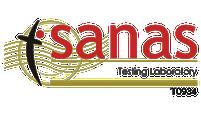
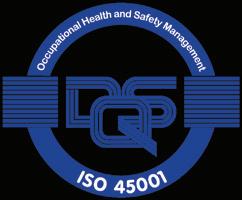



Anglo American set a target in 2018 to reduce GHG emissions by 30% by 2030, on its pathway to achieving carbon neutrality across its operations by 2040. On-site energy requirements are the largest source of its operational emissions, and the company is making good progress toward their abatement.
By 2023, all the company’s South America operations will have 100% renewable electricity supply and, for southern Africa, it has partnered with EDF Renewables to develop 3GW to 5GW of clean generation capacity, which is expected to meet Anglo American’s operational power requirements and support the resilience of local electricity supply systems.
Anglo American has also set an ambition to reduce its scope 3 emissions by 50% by 2040, including by forming a number of partnerships with major steel customers to work together to unlock clean steel-making technologies.
Anglo American’s Sustainable Mining Plan commits the company to achieving a net positive impact on biodiversity across its managed
operations. It has completed detailed baseline assessments, defining significant biodiversity features to protect and further restore, including key habitats and species and important ecosystems. The company is investing in innovative technologies and nature-based solutions to mitigate climate change impacts and water scarcity, and to nurture wildlife habitats—with biodiversity management plans for each site being integrated into its life of asset plans.
Anglo American has been engaging to develop responsible mining standards since 2005. Its Sustainable Mining Plan commits the company to assuring all its sites against recognised responsible mining standards by 2025, and it is on track to meet that goal.
The company is increasingly finding that its most important
customers are those whose own values and aspirations align with those of Anglo American, attributing value not only to the physical characteristics of the products the company sells but also to the ethical approach and commitments of those who produce them.
Wanblad adds: “The world we are living in is changing in so many ways, not least in society’s expectations of businesses across many industries. We have set up Anglo American to be resilient, disciplined, opportunistic—and responsible. We have the people, the assets and the capabilities to deliver sustainable returns over the long term. It is incumbent on us to deliver the metals and minerals the world so urgently needs in the cleanest and most socially responsible way possible.”
The full Sustainability Performance report can be found at bit.ly/3NOEo79.
There is growing awareness of the centrality of mining to enabling the energy transition and the contribution we can make to a more sustainable future.







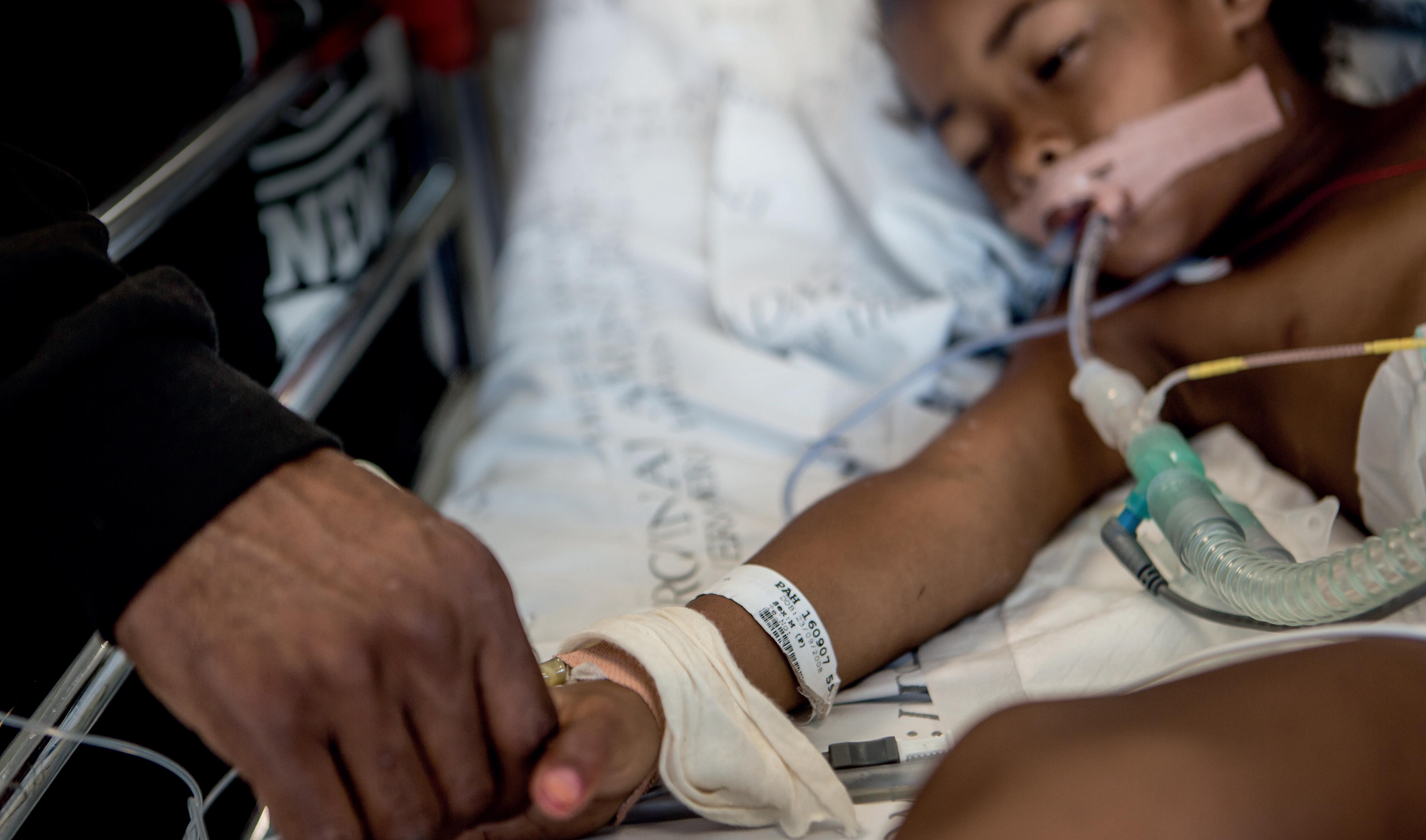

Culture and business are inseparable, and so therefore are hard and soft skills. Business is what we do, and culture is how we do it—and how we do what we do matters because it is what differentiates us in the market. This is why investing in environmental, social and governance (ESG) initiatives is so rewarding—if we do it holistically.
An interesting observation made by Rand Merchant Bank experts in a recent interview (bit.ly/3XiAdVw) notes an encouraging trend of organisations no longer seeing ESG investment as a means to mitigate risk but rather as a means to seize opportunities. Although this is far from simple, the solutions are there (they say) and they are profitable. But to get there, organisations need to move beyond corporate social investment (CSI), which is traditionally seen as initiatives outside the organisation, to a more integrated approach where the organisation harnesses all its resources to find long-term ESG solutions that benefit business, employees, supply chains and communities.
The even better news is that they are not the only ones highlighting this trend, and the dire need for this to be accelerated. Deloitte also reports (bit.ly/3OpYaGk) that mining companies are likely to ramp up their community and stakeholder investments as a means to
generate value beyond compliance, and that methods to quantify these investments are being developed to promote this even further. One such method is the Human Capital Factor (bit.ly/3grby0n) developed based on research by Irrational Capital and JP Morgan. This method measures the more intangible elements of social investment like direct management, leadership, psychological safety and emotional connection; and JP Morgan proves that this investment is generating returns.
In my work across several multinational mining organisations, I have seen for myself how leadership development spend has increased exponentially.
In fact, not only are the executives spending the money, they are also championing the change. I now often witness the shift happen at top leadership level and see it being cascaded to lower levels through modelling, active engagement and leadership development initiatives. As this is my life’s work and passion, I am watching this trend from the edge of my seat.
Unfortunately, though, the Gallup “State of the Global Workplace: 2022 Report” (bit.ly/3OlvDlr) shows that
change is not happening nearly fast enough. This is especially true in sub-Saharan Africa, which has the second highest regional percentage of employees who say they are not consistently treated with respect, and the lowest regional percentage of employees living comfortably on present household income. This is besides 83% (second highest regional ranking) of respondents saying corruption is widespread in their country of business. In terms of environmental responsibility, we come in at number five, which is not nearly good enough for a region that generates significant revenue and employment from tourism.
This poses significant challenges for the mining industry, as mining operations are heavily dependent on unskilled labour who earn a low income; is very reliant on natural resources and good relationships with government; as well as often being notorious for discrimination, bullying and harassment of minorities, according to Rio Tinto’s “Everyday Respect” report (bit.ly/3gnvSQo). As leaders, we cannot afford to ignore this data.
So, how are these challenges being addressed and what can we do to leverage the pockets of success? From looking at the data and ongoing conversations with the mining leaders with whom I work, three things stand out for me: It’s about people, reputation and accountability.
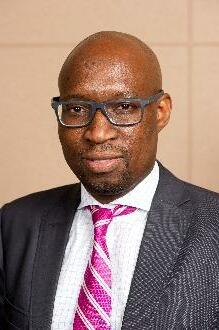
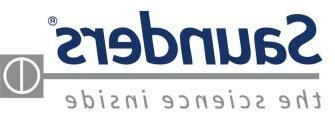
Valves developed for high pressure superiority
alves developed for high pressure superiority
Leading brand of Pinch valves in the South African market. Atval products offer drop-tight sealing against many services including liquids, gases, vacuum, pulp and slurries. designed with full unrestricted flow pattern and the use of gum rubber as an abrasion resistant sealing membrane.The product ranges are from 25mm up to 1000mm with working pressures up to 40bar (Class 600) temperatures from -20°to 120°celsius.
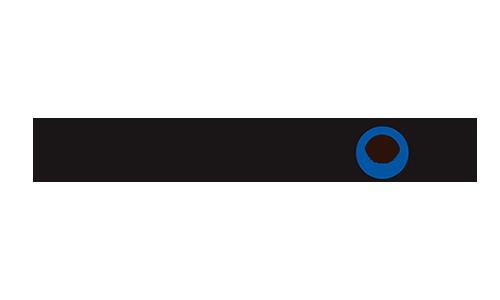

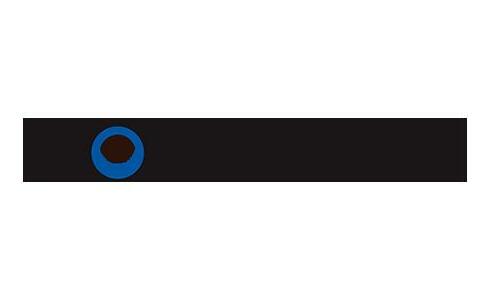
Leading brand of Pinch valves in the South African market. Atval products offer drop-tight sealing against many services ngincludi liquids, gases, vacuum, pulp and slurries. designed with full unrestricted flow pattern and the use of gum rubber as an onabrasi resistant sealing membrane.The product ranges are from 25mm up to 1000mm with working pressures up to 40bar (Class 600) temperatures from -20°to 120°celsius.

The low maintenance actuator design
Focused on linear pneumatic valve actuation. Corrosion proof, versatile, safe and durable in most applications. A quality product with accessories to meet customer needs.

Manufactured by DFC with attention to detail and to
The Insamcor range of ductile iron & stainless steel bibody seal with no seat pockets or cavities providing trouble free operation in slurry applications.

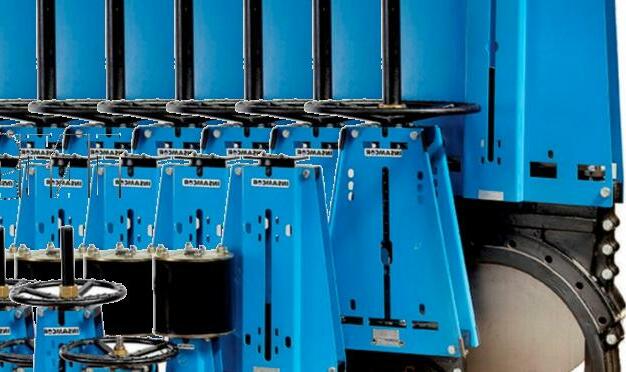
Insamcor provide low cost of ownership and operation, highest reliability and minimum lifetime maintenance.



Saunders full bore diaphragm valves are developed to satisfy market demand for a valve to handle sludges, slurries and give flow performance with minimum turbulence while giving 100% leak tight closure.

A valve with the ability to handle hundreds of fluids with great success due to the availability of a wide range of diaphragms and a wide range of body lining materials.
Since its humble beginning in 1947, DFC has developed into a world class black owned valve manufacturer The largest valve manufacturer on the A
valve package for corrosive and abrasive applications

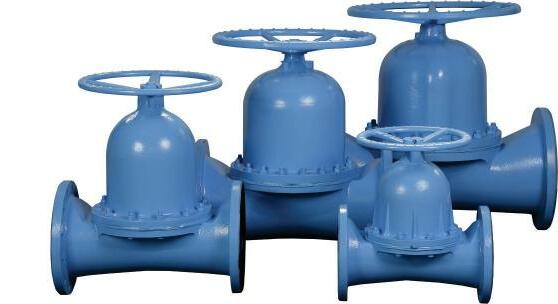

Saunders full bore diaphragm valves are developed to satisfy market demand for a valve to handle sludges, slurries and give flow performance with minimum
valve with the ability to handle hundreds of fluids with great success due to the availability of a wide range of diaphragms and a wide range of body lining materials.
o u r w h o l l y o w n e d i n t e r n a t i o n a l operations in South Africa, the USA, Finland, Brazil and Australia. DFC has an established track record of
Since its humble beginning in 1947, DFC has developed into a world class black owned valve manufacturer The tsegral evlav rerutcafunam no eht

manufactured valves to 129 countries around the globe. At DFC we have a global mindset and reach, built on our proudly South African heritage and heartset. Our engineering and innovation platform harnesses our global talent from
longevity in service.
eW pride ourselves with our product ,quality service and technical support

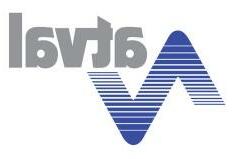
We pride ourselves with our product quality, service and technical support
and the company
and the company
At DFC we have a global mindset and ,hcaer tliub no ruo ylduorp htuoS African heritage and heartset. Our engineering and innovation platform harnesses our global talent from
No matter the ESG initiative, it will inevitably impact people. In fact, that is ultimately why we do it. Whether we champion safety, drive inclusion, invest in community development or make an effort to preserve or restore the environment, our employees and their communities will reap the benefits. It is, however, unfortunate that we often overlook the power of investing in the well-being of our employees. Gallup found that only 15% of employees in the sub-Saharan Africa region are engaged and only 23% are thriving in their overall well-being. The report goes on to note high levels of daily worry, stress, anger and sadness experienced at work. This is clearly where we should start.
I do not only advocate this because of our inherent responsibility as leaders to look after our people, but also because employee well-being is a key aspect of business success, according to the Human Capital Factor metric mentioned earlier. The business benefits are real, with Gallup also once again estimating that low engagement costs the global economy US$7.8 trillion annually. The company analysed 112 312 business units in 96 countries and found a strong link between engagement and performance outcomes such as retention, productivity, safety and profitability.
Another trending conversation is the need for work/life balance and what this really means. The more it is explored, the more we find that work and life is inseparable in many aspects. Whether we feel valued and fulfilled at work impacts how we interact with our families and friends and affects their well-being as a consequence. The converse is also true: If our family or community is struggling, it will inevitably impact our performance and how we engage our colleagues. It is high time we realise that how we treat our people is how we treat our business—because
the two cannot be separated. And this is why I am so excited to see leaders really investing time, effort and money where necessary, to build an engaging leadership pipeline and solid culture. But above all, your personal example remains key: If you make a real effort to respect and include everyone in your team, the results will speak for themselves.
Never underestimate the value of investing in your good name. This counts for leaders and businesses alike. It builds trust and respect and enables robust relationships. A trusted personal brand is the foundation of any engaging leader, and a credible corporate brand enables honourable, mutually beneficial collaboration with all stakeholders.
In the mining industry, where operations are mostly remote, the communities are often just as dependent on the mine as the mine is on them. This can be leveraged to become a powerful two-way street where business success supports thriving communities and vice versa, but the effort and impact must be visible and meaningful to build the necessary goodwill that paves the way for effective collaboration. One client mentioned how a current rehabilitation initiative of planting indigenous trees is a powerful and visible way of building trust with the community in which the company operates. This once again shows how conservation efforts impact so much more than only the environment—and the benefits always circle back to the business.



To truly take root, accountability must be established in both your company policies and processes, as well as the less tangible humanistic and systemic cultural components. Leaders must be held accountable for
ESG investment through clear objectives and processes, but they are also responsible for driving this accountability right down to the shop floor and in every corner of the organisational culture.
Another client shared how a diligent safety campaign it has been running for the last three years is reaping real results in terms of positive impact on safety performance and has resulted in record zero-incident days at a number of operations. Key to this initiative was building hope, trust and respect, and driving personal accountability, all while defining clear objectives for reporting to unions and the board—thereby effectively entrenching it in the fibres of their culture. Besides these business successes, the campaign also positively impacts the company’s reputation as an organisation that champions safety and directly benefits employee well-being e.g. fewer injuries. Clearly, one well-executed initiative can have multiple benefits.
In fact, most mining organisations employ a safety philosophy of Zero Harm, as the benefits of looking after your employees and preventing injuries and fatalities not only improve investor confidence but also boost employee trust and engagement. Safety as an overreaching business practice provides a tangible example of the potential benefits for other ESG initiatives such as environmental care and community engagement.
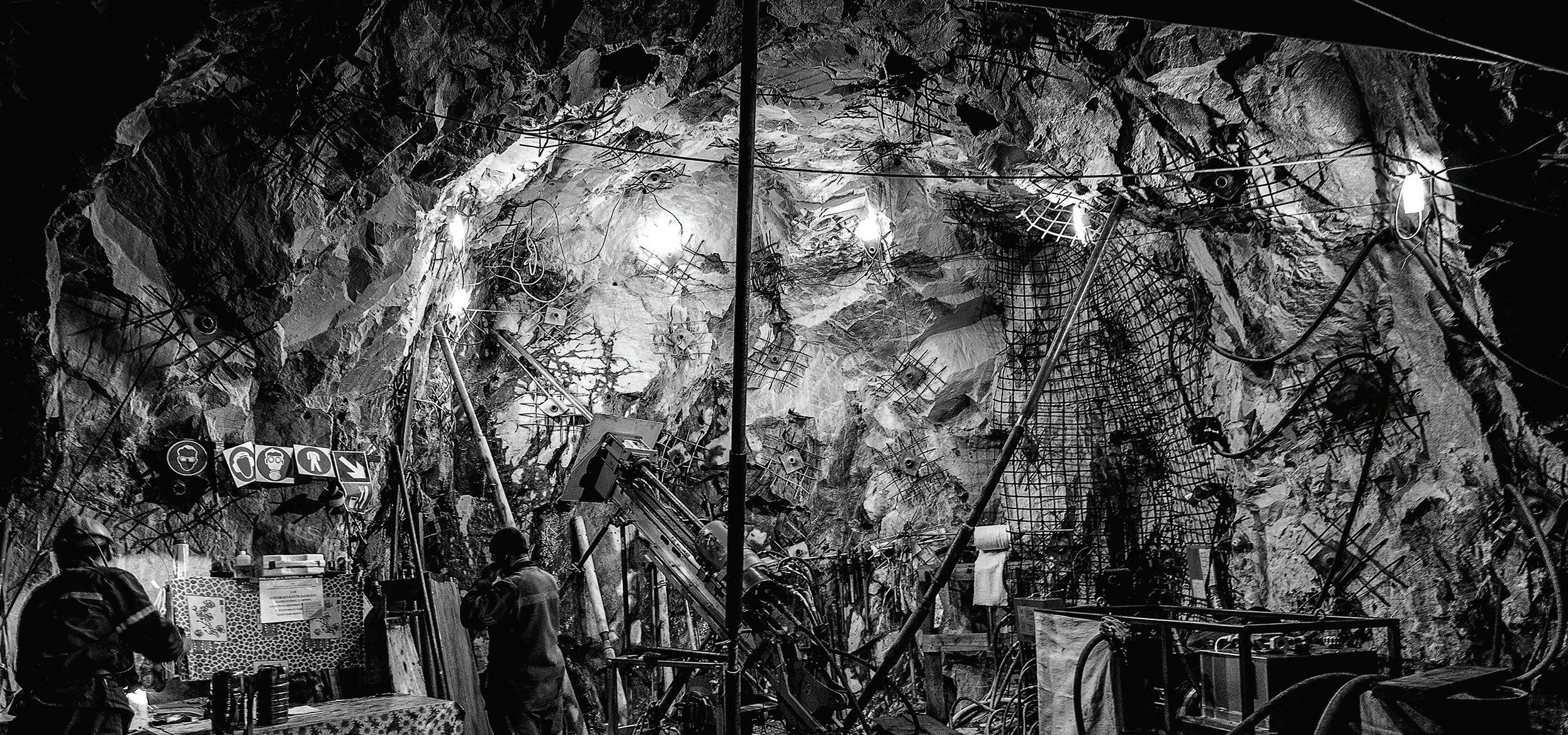


In essence, when business cultivates well-being, well-being cultivates business success, creating an upward spiral that generates unparalleled sustainability. As leaders, we have the power to cast the stones that start the ripples. So, what are we waiting for?
Brian Eager CEO & Director TowerStone Leadership Centre
Mobile or fixed applications available with onboard data logging and Real-time monitoring with display. Our unit has Audio and multicolour visual alarm indication and can measure up to 8 different parameters including gasses as well as Environmental monitoring (WB/DB/Humidity/ BP/velocity). A Communication/network status indicating, real-time date and time, voltage and current (AC or DC) as well as vibration, airflow and pressure.
REAL-TIME VISIBILITY, REAL-TIME SAFETY
Real-time awareness of your people and places empowers a more informed response should the worstoccur. G6 and G7 wearables and G7 EXO portable area monitors, with unmatched connectivity and accurate location technology, deliver ultimate visibility across your worksites. And when paired with 24/7 live monitoring (G7 & G7 EXO only) and live alerts, they power high performance emergency response and evacuation management to ensure no worker is left behind. Our Blackline Live portal and Blackline Analytics software bring it all together by providing the real-time information you need to save lives now all while building a stronger safety program for tomorrow.
Real-time awareness of your people and places empowers a more informed response should the worstoccur. G6 and G7 wearables and G7 EXO portable area monitors, with unmatched connectivity and accurate location technology, deliver ultimate visibility across your worksites. And when paired with 24/7 live monitoring (G7 & G7 EXO only) and live alerts, they power high performance emergency response and evacuation management to ensure no worker is left behind. Our Blackline Live portal and Blackline Analytics software bring it all together by providing the real-time information you need to save lives now all while building a stronger safety program for tomorrow.
Real-time awareness of your people and places empowers a more informed response should the worstoccur. G6 and G7 wearables and G7 EXO portable area monitors, with unmatched connectivity and accurate location technology, deliver ultimate visibility across your worksites. And when paired with 24/7 live monitoring (G7 & G7 EXO only) and live alerts, they power high performance emergency response and evacuation management to ensure no worker is left behind. Our Blackline Live portal and Blackline Analytics software bring it all together by providing the real-time information you need to save lives now all while building a stronger safety program for tomorrow.
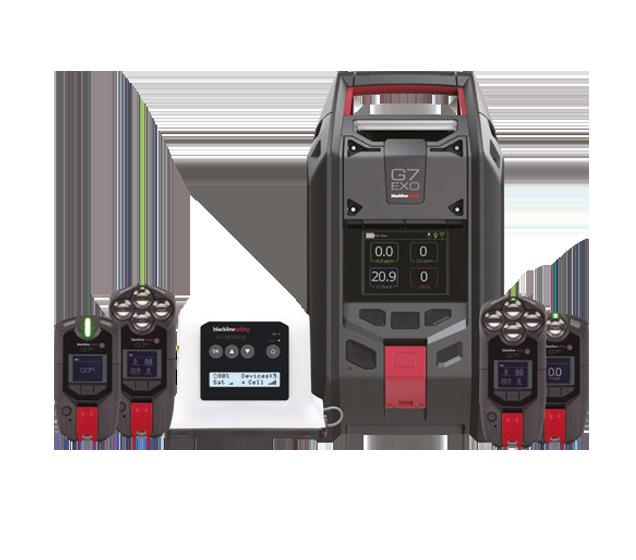


Dustroid:
Dustroid:
Dustroid:
Dustroid is an Online Particulate Monitoring system to measure the concentration of dust particles in the ambient air. It is capable of monitoring various particulate size ranging from 1 micron to 100 microns such as Ultrafine Suspended Particulate Matter (UFPM), Suspended Particulate Matter (SPM), Respiratory Suspended Particulate Matter (RSPM) and Total Suspended Particulates (TSP).
Dustroid is an Online Particulate Monitoring system to measure the concentration of dust particles in the ambient air. It is capable of monitoring various particulate size ranging from 1 micron to 100 microns such as Ultrafine Suspended Particulate Matter (UFPM), Suspended Particulate Matter (SPM), Respiratory Suspended Particulate Matter (RSPM) and Total Suspended Particulates (TSP).
Dustroid is an Online Particulate Monitoring system to measure the concentration of dust particles in the ambient air. It is capable of monitoring various particulate size ranging from 1 micron to 100 microns such as Ultrafine Suspended Particulate Matter (UFPM), Suspended Particulate Matter (SPM), Respiratory Suspended Particulate Matter (RSPM) and Total Suspended Particulates (TSP).
Odosense:
Odosense:
Odosense:
Odosense is the real-time odour emission tracking solution. Odosense continuously detects, measures and monitors the odourful gaseous contaminants
Odosense is the real-time odour emission tracking solution. Odosense continuously detects, measures and monitors the odourful gaseous contaminants
Odosense is the real-time odour emission tracking solution. Odosense continuously detects, measures and monitors the odourful gaseous contaminants
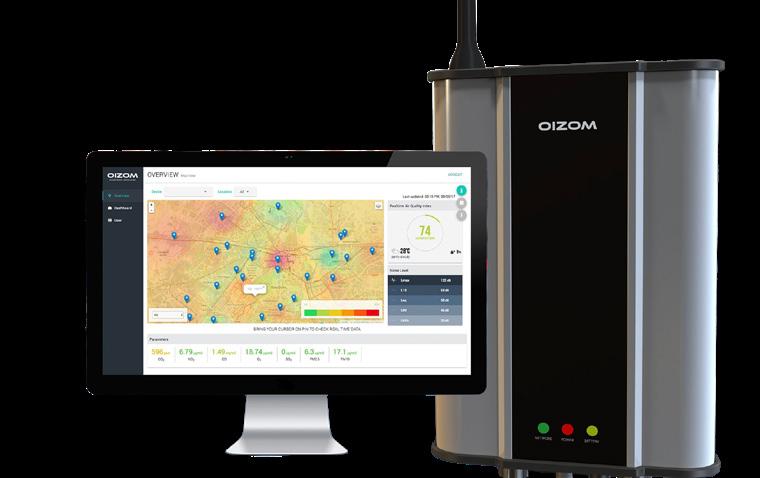


Polludrone:
Polludrone:
Polludrone:



Polludrone is a Continuous Ambient Air Quality Monitoring System (CAAQMS). It is capable of monitoring various environmental parameters related to air quality, noise, odour, weather, radiation etc.
Polludrone is a Continuous Ambient Air Quality Monitoring System (CAAQMS). It is capable of monitoring various environmental parameters related to air quality, noise, odour, weather, radiation etc.
Polludrone is a Continuous Ambient Air Quality Monitoring System (CAAQMS). It is capable of monitoring various environmental parameters related to air quality, noise, odour, weather, radiation etc.




Geostrat Management Consulting offers innovative, technologically advanced solutions within the geological, environmental, mining and construction fields
GEOSTRAT MANAGEMENT CONSULTING is a 100% black female-owned level 2 BBBEE company with qualified and experienced professionals providing quality consulting work within the geological, environmental, mining and construction fields. We have been teaming up with our clients and driving their success for more than a decade—just imagine what embarking on a journey with us could lead to.


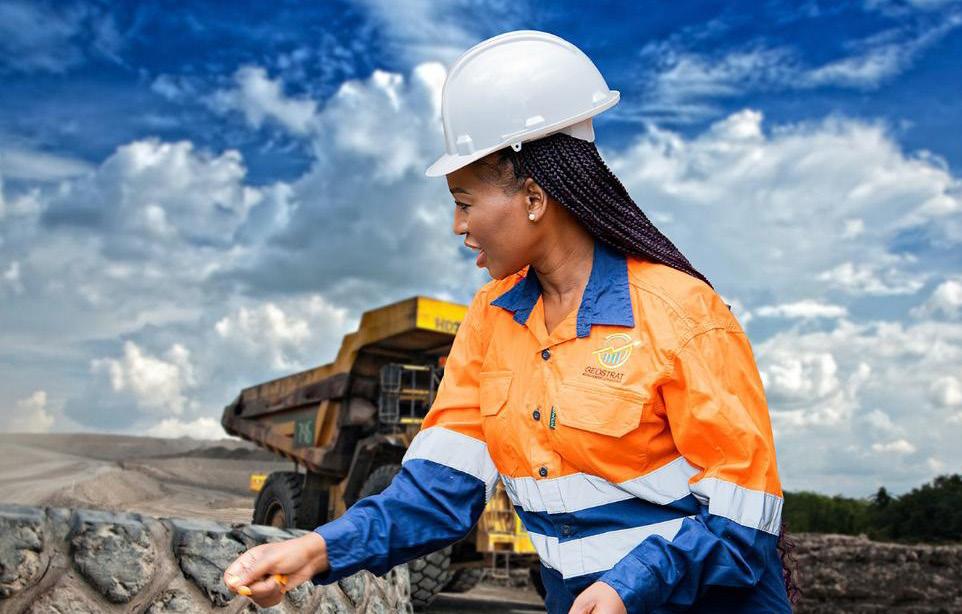
Our remarkable team of specialists combine youthful energy and enthusiasm with age and experience, tried and tested methods with innovative ideas and technologies, which has enabled us to achieve the highest levels of proficiency.
Geostrat founder Muofhe Demana is a qualified professional geologist and mining entrepreneur with vast
experience of over 15 years in the mining industry. Her combined expertise and experience in geology, mining, environmental management, business and sustainability makes her a thought leader and top performer in the sector, across the African continent. She has a critical understanding of the mining industry, gained from her experience in the Gold Mining Industry and The Bushveld Complex. Furthermore, Muofhe is an active member of the Geological Society of South Africa and is registered as a professional natural scientist with the South African Council for Natural Scientific Professions.
Geostrat Management Consulting offers ethical, innovative, functional and technologically advanced solutions by collaborating with well-positioned expert networks. Our geological foundation allows us to tune in with client needs and expectations, sharing similar focus points.
Clients include a wide range of mining and exploration companies, construction companies, government departments and municipalities, as well as lenders and investors.
GEOSTRAT FOUNDER MUOFHE DEMANA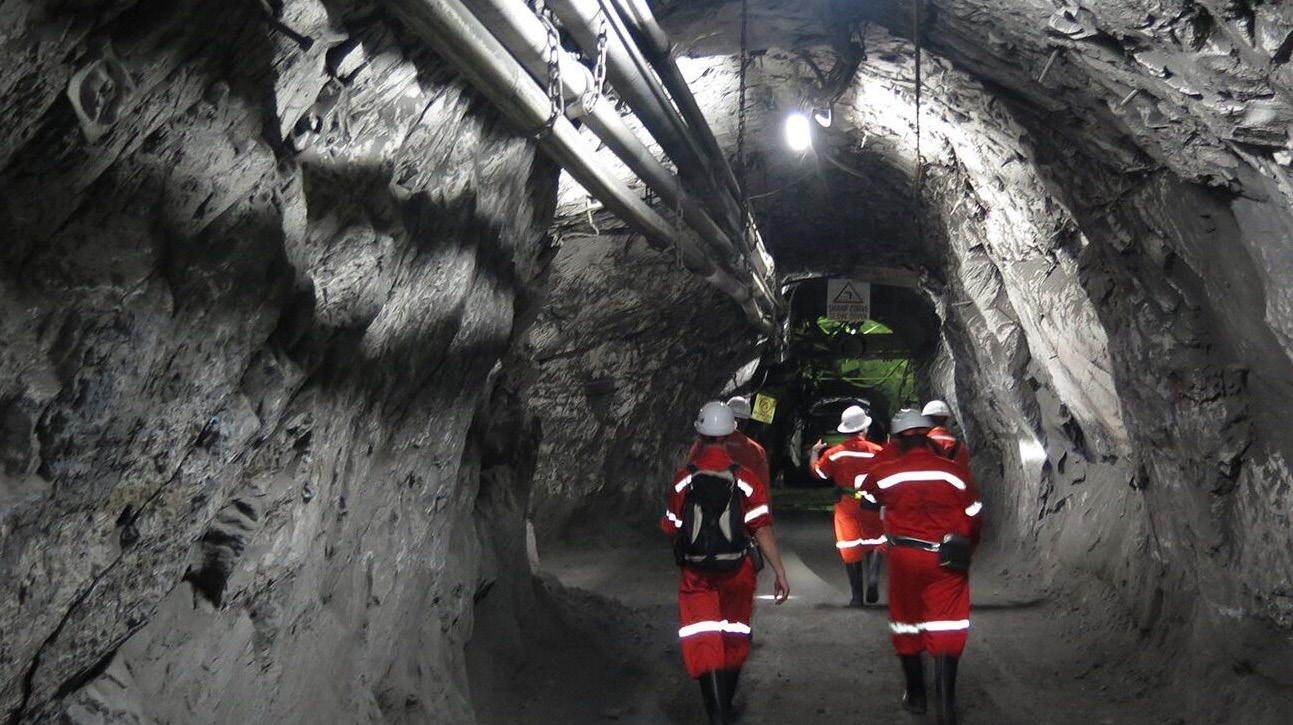
For mining clients, we provide services across the project life cycle from early-stage exploration through development and operations to closure.
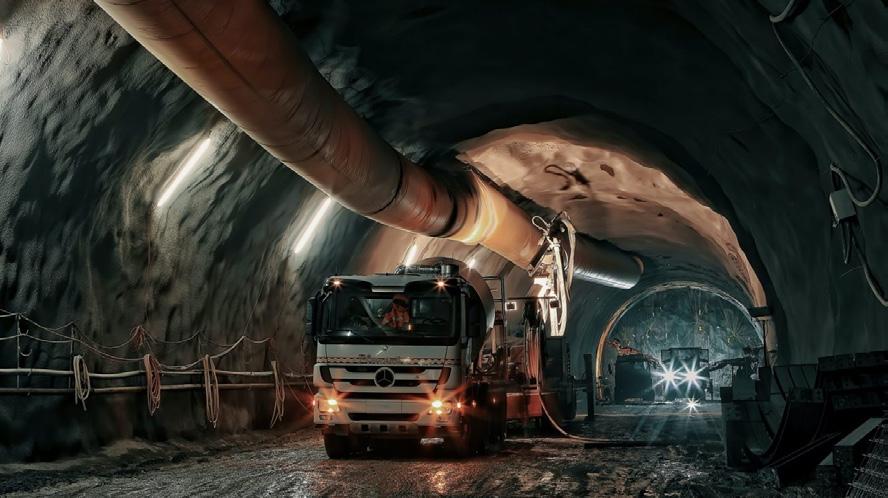
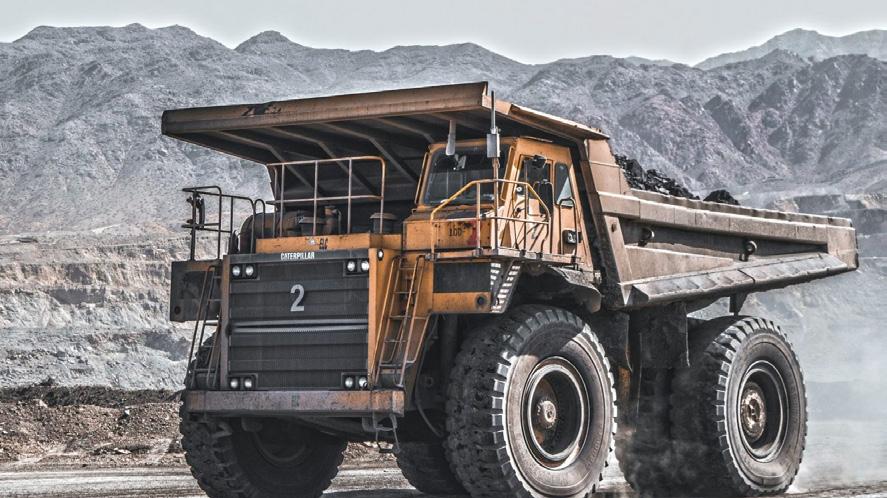

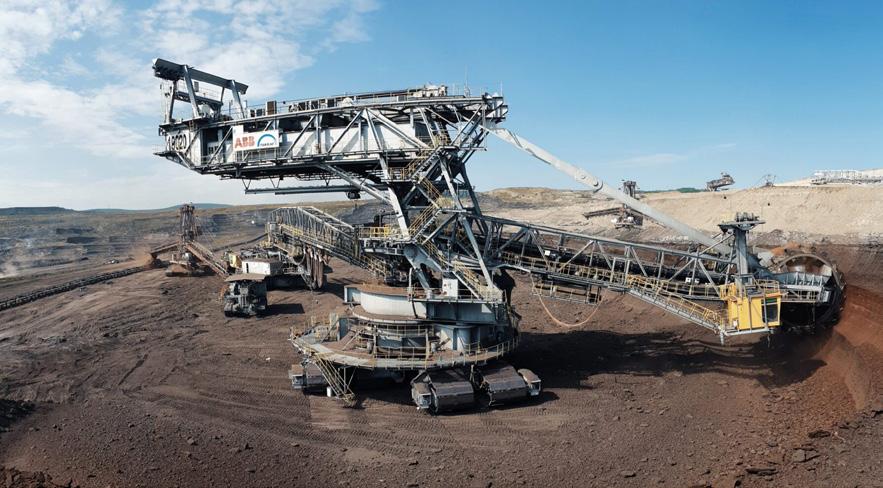
Construction
We help identify the geological factors that could affect construction projects by analysing ground materials to assess their risk factors and advise on the best procedures for developments and the suitability of construction materials.
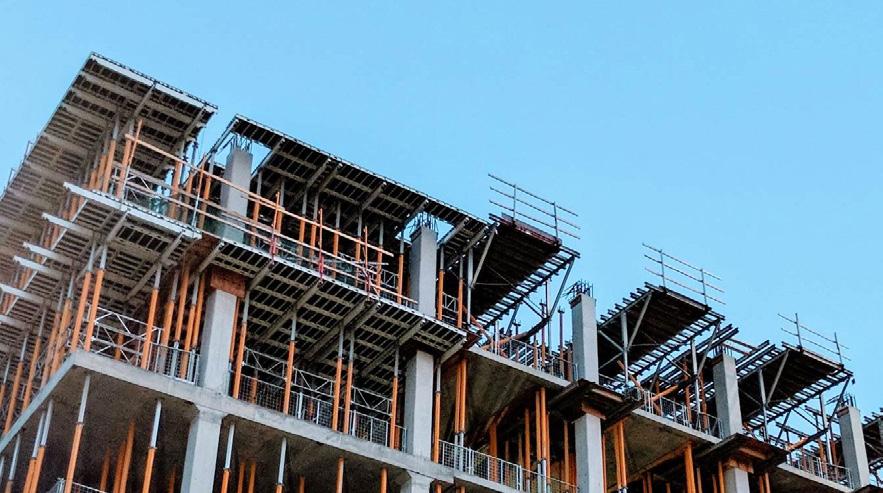
Environmental management projects and related engineering processes regulate the interaction between human activities and the natural environment, developing solutions to potential environmental crises worldwide. The assessment and management of these activities are fundamental in the preservation of natural resources.
Our geological and exploration services include expertise at various levels, from geological to social intervention.
Projects and community development occur in a specific spatial locality necessitating comprehensive regional and local planning through Geographic Information Systems (GIS). Spatial planning services integrate geoenvironmental, social and engineering aspects to promote sustainable development in both rural and urban contexts.
Geostrat Management
Consulting provides valueadding services and products to the mining industry in South Africa, Africa and globally. Geostrat, together with associate companies or businesses, offer a diverse range of services and product offerings including consulting, product manufacturing and contracting throughout the mining industry and into the energy sector.
Governance: Business Integrity & Ethics; Engaged Board Oversight; Responsible Value Chain; Transparency & Accountability; Board Training & Governance; ESG
Social: Health & Safety Workforce; Communities & Indigenous People; Human Rights; CSI; Social Labour Plans; Employee Wellness
Environment: Climate & Water Stewardship; Biodiversity Energy; Emissions & Carbon Footprint
Contact Us
072 393 5260 / 063 655 9398
info@geostratconsulting.co.za
geostratconsulting.co.za
Aleading provider in the mining, construction, agriculture, marine and industrial sectors in southern Africa and Africa, Probe IMT has built a reputation on a comprehensive range of premium original equipment manufactured (OEM) products and integrated solutions to enhance productivity and safety.

Investing in technologies to make traditional processes smarter, Probe IMT has entailed a clear focus on digitisation, as the business swells into new geographic regions and crucial renewable areas.
Part of the wider Probe Group Holdings, the Probe Mining Group was established in 1963 through a process of consolidating Probe’s mining-orientated businesses. Since 1969, Probe Integrated Mining Technologies has been the arm tasked with supplying a comprehensive range of premium products of all key OEM auto-electrical manufacturers for the heavyduty automotive, mining and construction industries.
The Probe Group comprises four divisions of automotive, energy, industrial and mining, and each has a range of products pertaining to the mining industry which Probe IMT is positioned to deliver to clients. Currently, around 30% of these are Probe products, with the remainder focused solutions for safety and productivity, including real-time monitoring, collision avoidance systems, and fleet management.
“We are part of the larger Probe Group, but we run independently,” clarifies CEO Gert J. Roselt, with Probe IMT’s more than 350 employees now operational from 20 locations across southern Africa and revenues topping R900 million. “From coal to copper to platinum, we serve a wide range of Tier 1 to Tier 3 mines, with clients right from small contractor startups in the Northern Cape to major multinational mining operations, across the continent and abroad.”
“We serve the agricultural industry and industrial sector with a range of solutions,” Roselt details of Probe IMT’s wide-reaching valueadded and cost-saving services. “We sell a full solution, not just a product, and this requires constant maintenance and support, which our expert teams are on hand to provide.”
At present, most widely deployed across customer operations from the vast Probe IMT range is its asset management systems, which are built to include the suite of realtime monitoring products and solutions, from a combination of leading local and global brands in M3SH and Wabtec. While more traditional offerings are still pivotal within the mining industry, Roselt agrees, there is one segment that is receiving particular attention and investment from this technological leader.
“Digital solutions incorporating real-time monitoring is the major growth area,” he reveals.
“Essentially, we are making traditional equipment smarter with technology; these days, it is possible to have sensors on every type of asset in a mine—including people. We’re using live data to improve mining, and we share this with the University of Stellenbosch and the CSIR (Council for Scientific and Industrial Research).
“Our investment in new technologies delivers secure and out-of-the-box solutions including uptime and remote monitoring, for a more efficient and accurate exploration of operations,” Roselt continues. “We capitalise on the potential of technologies, including the Internet of Things, big data and cloud computing to transform operations, better positioning mines to be able to address resource challenges and environmental pressures moving forward.
“Our intelligent systems combine technology, people and processes to enable feedback loops, defining an organisation’s competitiveness and ability to change the industry landscape. These technologies are not something that one can chop and change easily, so we find ourselves building truly long-term relationships—contracts exceeding 25 years, in some instances.”
An evolved mining organisation, focused on social, environmental and economic sustainability guidance, Probe IMT also partners with the Mandela Mining Precinct on The Real-Time Information Management Systems research programme to improve data sourcing, transmission, storage, dissemination and procedures for mines.
“We are clear about where we fit in the value chain, which is in the real-time monitoring space,” Roselt is keen to stress. “We provide and maintain the sensors, installation, cabling and server integration to produce the right data for IT systems and artificial intelligence— ensuring system availability is 98% and above, so that the real-time information is accurate to facilitate decision-making.”
“We are working to improve traditional processes and equipment to make them smarter and have them running on cleaner energies,” says Roselt. “The right information translates into huge cost savings in a mine environment: an M3SH sensor on a machine picks up air quality, for instance, and decisions can be made to increase or reduce fan speed, saving power and securing carbon tax rebates while sensors monitor where people are and ensure the lights are on only when needed.”
These efficiencies are paramount at a time when ESG (environmental, social and governance) pressure on mines has surely never been greater, and Roselt details what this means for Probe IMT’s diverse growth aspirations. “We are focused on making world-class renewable energy solutions accessible in southern Africa, helping mining and industrial users revolutionise their energy sources,” he states.
“There is a huge need in the market for high-quality yet affordable energy solutions, and with the strength and innovation of Probenergy behind us, we see growth opportunities in providing smart renewable energy
We are focused on making world-class renewable energy solutions accessible in Southern Africa, helping mining and industrial users revolutionise their energy sources.
solutions for mining and other industrial sectors.”
As it multiplies the offering at its existing branches throughout southern Africa, Roselt also clearly envisages significant expansion into new geographic regions for Probe IMT. “In Africa, we have offices in Botswana, Zambia, Namibia, Zimbabwe, Mozambique and Zambia, and as we expand on the continent, we are determined to establish local offices and work with local partners”. An interregional transmission project agreement with Wabtec has opened avenues for Probe IMT to go into Europe right up to Finland, while M3SH has provided a springboard for international expansion into Canada.
“Our business is all about solving challenges for mining operations, driving productivity and safety, and we are excited about future growth prospects. The COVID-19 pandemic only escalated the uptake of
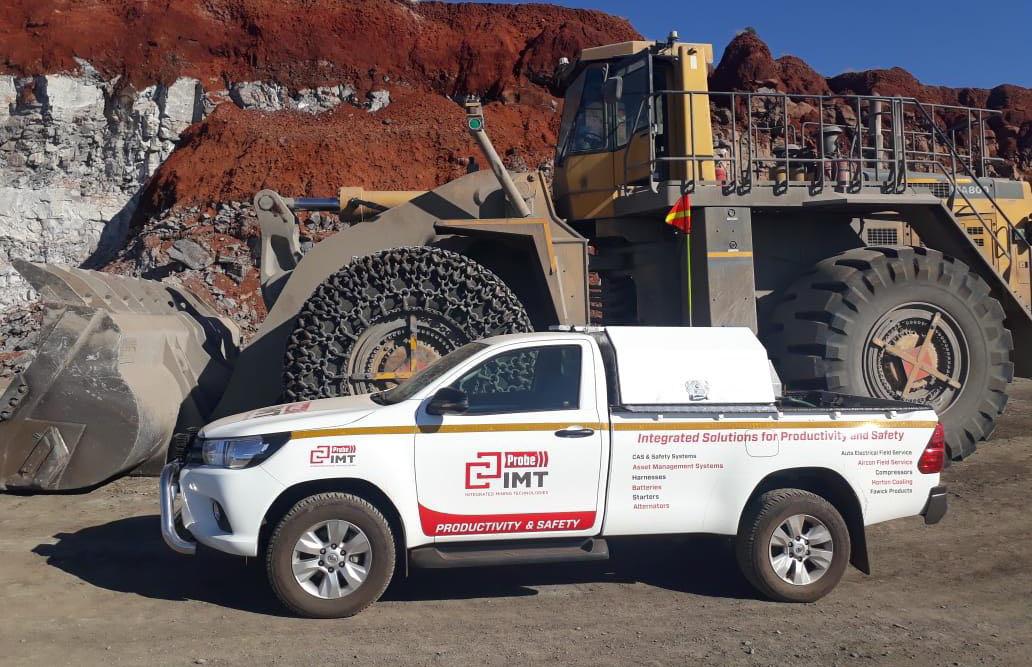
electric vehicles and need for advanced batteries and energy storage, and the demand for minerals and commodities used in manufacturing is surging globally. Big global companies from Australia are setting up in Botswana, and in Kleinsee, eight new mining licences have just been granted for copper and gold.
“There is extensive investment underway which provides a growth opportunity fully aligned with our global growth strategy.”
Having been in the space for so many years, Probe IMT has exactly the experience and expertise to truly future-proof operations, growing market share in southern Africa and continuing to expand through Africa while securing a strong foothold across Europe and Canada. “You must have the right quality as well as the latest technology, and the service and maintenance resources and expertise to back it up,” Roselt summarises.
“We’re focused on solving challenges the mining industry faces, through ensuring we access the best technologies and develop innovative solutions for Africa’s problems like energy security. We have earned a reputation in the industry that we will be there through thick and thin, doing our utmost to set customers up for success. We provide the best quality solutions and make sure we grow with our customers, locally and internationally.”
For more information, visit probeimt.co.za.
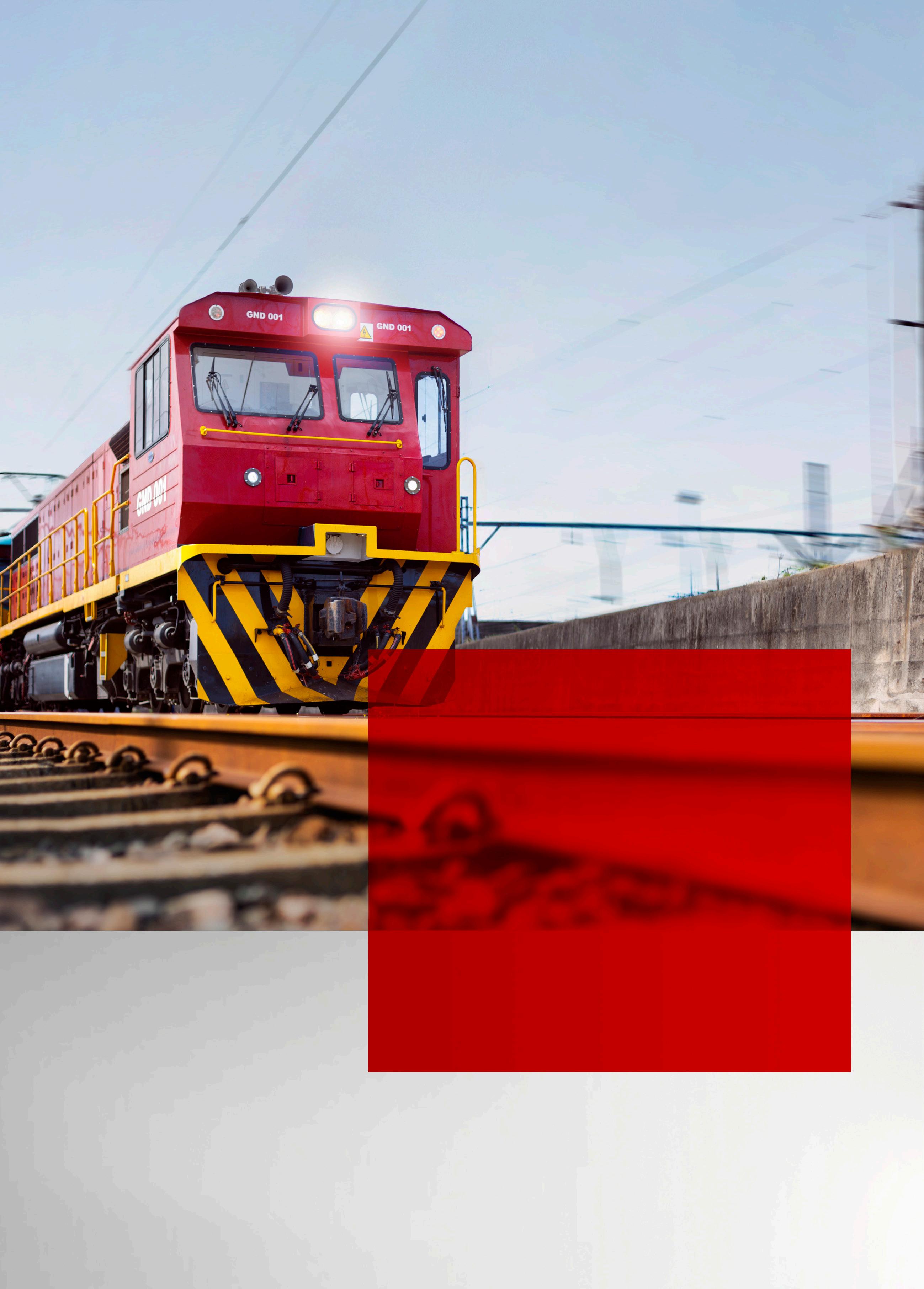
Ubuntu Adventure Learning Institute (Pty) Ltd—trading as Ubuntu ALI—is a South African company that has over 15-year experience in Organisational Effectiveness Support and services programs in the mining industry. We provide collaborative and co-created solution in businesses, ensuring impactful and sustainable adoption, embedding of Organisational Transformation from various facets and lenses. We support organisations on how to build a Resilient Workforce Amongst others we support and have expertise in are Organisational and Business Transformation, Supporting Organisational culture transformation We specialise in Union stakeholder engagement via RBO (Relationship by Objective).
Ubuntu Adventure Learning Institute (Ubuntu ALI) is creating success in building resilient organisations through Culture & Strategy Alignment.
Mining companies are faced with a plethora of challenges that are systematic, behavioural and stakeholder related. Companies have to deal with complexities of creating value for the shareholders, building rations with employees and creating mutual beneficial relations with hosting communities. For a mining company to be successful a clear strategy, aligned relationships with labour and enabling culture is needed. Ubuntu ALI is your go to specialists who have success stories in Organisational Effectiveness and Transformation.

In addition, we support a holistic approach to Organisational wellbeing via Mental and Financial wellness programs this includes gender-based violence (GBV) & bulling-harassment violence (BHV) programs.
We do Training, Facilitation, Embedding, Coaching and advisory Services in how to optimize your systems, processes and improve behaviour to create an enabling culture in order to meet your set organisational strategy.
Ubuntu ALI value proposition
Ubuntu ALI value proposition is to create empowered leaders that take ownership, employees that understand accountability and creating systems that bring about human optimisation. We apply the co-creation approach to supporting our change management techniques that enable co-ownership, sustained
change and capacitation in the business. This leads to a holistic organisational development model which brings about high returns on investment (ROI).
Ubuntu ALI takes its extract form the esteemed Mark Cutifani: “If you strip everything aside, leadership is about people, because people are the business.” We assist organisation to understand the value of their employees, without them we do not have a business…. you are not in mining; you are in the business of people because they are your greatest valuable asset that you will ever have as a company.
Our methodologies are Adventure Experiential Learning, Systems Theory, Request organisation and organisational anti-fragility which all build a resilient and learning organisation. We have lots of success stories within the mining industry.
When Peter Drucker said “…culture eats strategy for breakfast…” he meant that, no matter how welldesigned your strategic plan is, it will crumble if your leaders and employees are not aligned with desired culture of the organisation. Organisational culture, simply put, is how we do things every day in order to achieve the set strategy of the company. Alignment and embedding of organisational values is the foundation of building a positive organisational culture
An organisation with an effective culture benefits 58% more in performance compared to organisations without an aligned culture in the same industryHarvard Business School research
MEET TSHOLOFELO PAPI MOTHIBI Director of Ubuntu Adventure Learning Institute Pty Ltd South Africa | Organisational Effectives & Transformation Specialist | Ethics PractitionerCompanies that has an aligned culture to strategy significantly outperform their peer by 58% on revenue and are 72% profitable as stated by Cambridge Investment
Furthermore, a misaligned culture undermines organisational set strategy. Organisational culture drive the behaviour of leaders and employees that execute your operational planning, if the behaviour and believes of your executers are not aligned with your culture and set strategy, operational planning will fall flat.
Mining companies should be intentional in building a culture that is enabling to achieve business strategy. The company strategic intent, which is systems, processes and practices should be aligned with the “correct” behaviour of employees in order to achieve a sustainable, productive and profitable operation. Focusing on embedding the right culture will set you apart from your peers.
Building an effective organisation Ubuntu ALI’s Organisational Effectiveness program looks into the organisation in a holistic way. We specialise in humanistic solution to unlock the employee’s real potential which will assist the company to meet their safety and production objectives. We assist you to build an enabling culture by supporting you in Effective Team Performance, Union and Management Relationship Building (RBO), Zero tolerance programs to GBV/BHV, Racism, Ageism, Leadership Coaching, Transformation, Diversity & Ethics to mention a few.
changing working conditions, hybrid and flexible work, etc. This has left managers not know how to keep employees accountable, how to measure performance. We assist organisations with remodelling their thinking to look into the future and how best to navigate the challenges by facilitating and coaching leaders on futurist thinking.
• Team Effectiveness Building an Organisational Effectiveness Teams is one of Ubuntu ALI’s cornerstone methodologies. Organizational Effectiveness refers to how an organisation has achieved full self-awareness by leaders setting well-defined goals for employees and hold them accountable with well outlined ways to efficiently execute goals.
• Middle Management / Supervisory Development Level of Work 2 & 3 employees generally refed to as Front Line Managers (FLM) always refer to themselves as “sandwiches” they experience pressure from the top and bottom, they always contend with the dichotomy of pleasing management or employees. They are the people that look after execution of strategies and plans of the company. Unfortunately, they are the least developed on Humanistic, culture and leadership skills. We assist organisation to capacitate this level because that is the area were organisational culture meets organisational performance.
• Future of Work & 4IR (How to lead post Covid-19)
A lot of mining companies have experienced huge leadership challenges after Covide-19. The way processes, people and systems used to work has changed and 4IR in the forefront,
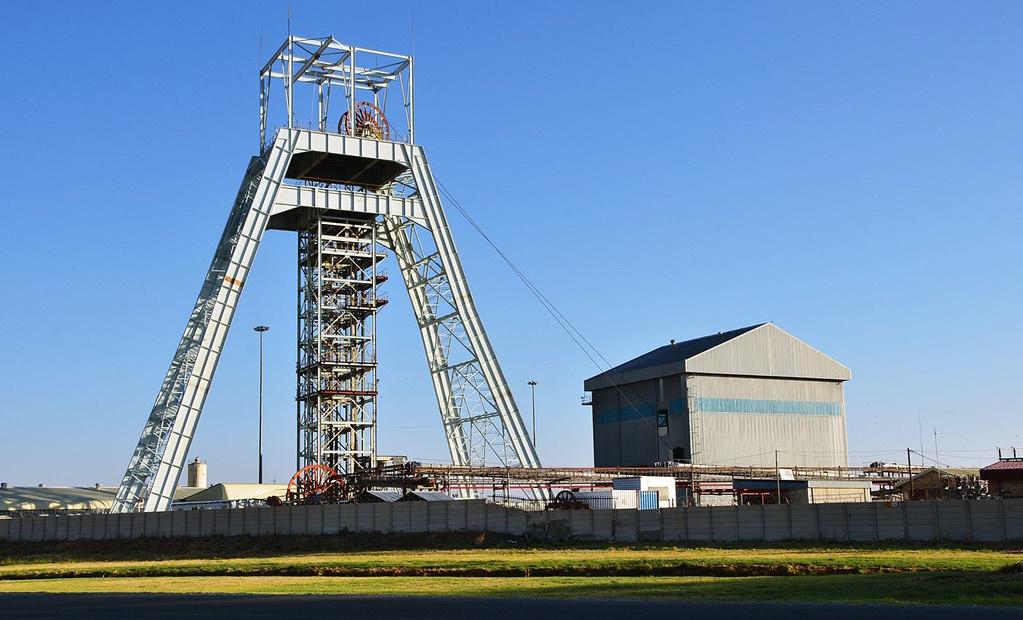
• Building Relationship with Organised Labour (RBO)
Organised Labour are key stakeholders in making and organisation effective. Majority of the time they are misunderstood and this leads to bad relationship which creates poor organisational performance. In whatever the organisation does, take your organised labour along. Clarity needs to be created: management is there to manage the operation and keep employees safe, organised labour is there to do an over site and make sure we all keep our promises to our employees. As difficult it may sound Ubuntu ALI have over 10 years’ experience in working with organisations with multiple unions with different interests. We us the RBO process to create a culture of open conversations which leads to improved trust, role clarity, support of business activities and bring employees first.
• GBV/BHV, Racism & Ageism
Mining operations are usually a mirror of the surrounding communities. The culture reflected by employees is a synopsis of communities’ challenges. Especially in South Africa GBV/BHV and racism are the elephants in the room that organisations do not want to tackle head on. Ubuntu ALI assist mining companies to create conversations amongst employees in order to break
• the silence and start acting decisively on these social ills. It is time organisations take a strong stand on these ills in order to improve our operations and hosting communities.
• Leadership Coaching
To create an organisation that has leaders that are accountable and who understands that mining business is about people. This takes continuous coaching , continuous coaching in order to embed organisational values, organisational culture and set strategies of the company. Ubuntu ALI has qualified and experienced coaches wwho can assist your leaders with group or individual coaching. Coaching is a process of discovery and not an event.
• Transformation, Diversity & Ethics
Organisational transformation and Diversity has always been challenges that organisations battle with every time. Change is constant – women are now part of mining at all levels, young educated people are part of operations, differently able people are part of mining. The mining industry has now transform to accommodate all these changes. We consult and advice on how best to navigate through these Ethical challenges in order to comply with laws of different countries. The mining industry should not only do it for complacence, they should do it because it is the right thing to do.
Ubuntu ALI’s ultimate objective is to create a sustainable and efficient organisation that is safe and highly productive to create a competitive advantage through a positive organisational culture.
The Ubuntu ALI team Ubuntu ALI, prides itself with a diversity and South African representative team with international experience. We have deep experience working in Africa including SADEC area and North African countries. As a team we have associates with
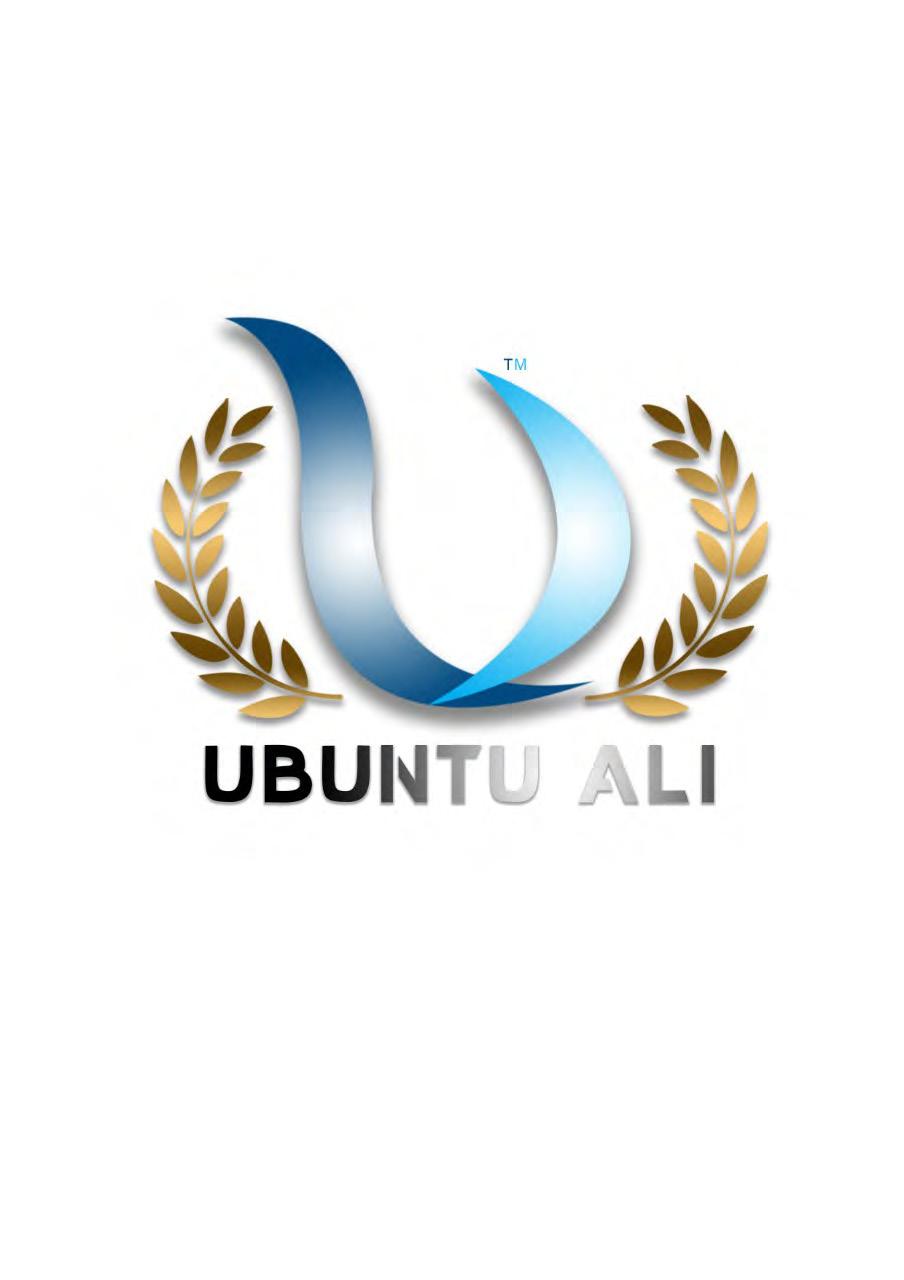
diverse applied knowledge, skills and expertise in Organisational Effectiveness Specialists (OE Specialist), Business Transformation Specialists, Systems Theories Specialists, ESG & GBV specialists. We also an innovative team that support Future of work, Strategic Workforce planning and supporting impact of 4IR, technology and innovation. We operate across the value chain from strategy to operationalising work.
Our team has over 40 years of mining experience in gold, coal, diamonds and platinum, Ferrochrome. We are dynamic, dependable and futurists. Ubuntu ALI utilises facilitation/ orchestration skills that enable optimised participation, idea sharing, thought processes, collaboration and execution of ideas. The team focuses a lot on the ability of the participants to be creative, come up with new ideas and be innovative during problemsolving or engagement sessions. The company believes in giving participants the power to devise unique ideas and solutions to own the work created. Ubuntu ALI assists in this process by utilising SMART methodology: Specific, Measurable, Achievable, Relevant and Timebound.
Clients
Previous satisfied clients of Ubuntu ALI have included the following organisations:
• AngloGold Ashanti, Anglo American Platinum, Harmony Gold, Great Basin Gold
• National Treasury, Department of Rural Development & Land Reform,
• University of Pretoria, Stellenbosch University, North West University
• MTN, John Taolo Gaetsewe Developmental Trust, Proudly South African, among others.
Services offered Facilitation/Orchestrator
• Teams Effectiveness
• Individual / Group performance Coaching
• Strategic sessions
• Conflict resolution
• Union & Management relationship Building (RBO)

Training & Development
• Capacitation on values and skills
• Performance models based on organisational approach
• Systems Leadership Training
• Operating model and systems training
Org Effectiveness

• Culture Transformation
• Operating Model review and optimisation
• Change Management
• Employee Engagement
• Holistic Mental Wellbeing support (mental first aiders, psychosocial support, financial wellness)
• Strategic Workforce planning
• Future of Work
Leadership Coaching /Motivation
• Coaching of individuals and teams
• Alignment of organisation to strategy
• Strategic sessions
• Leading in difficult times after COVID-19
Ethics & Good Governance
• Ethics assessments



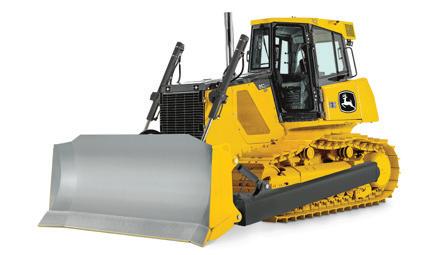
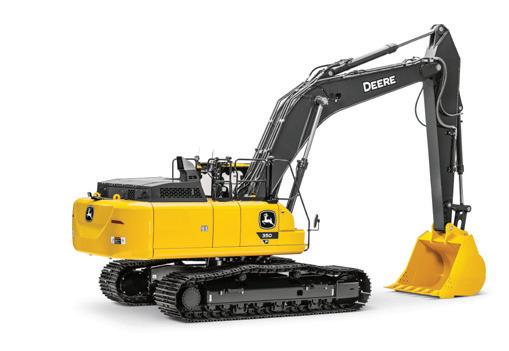
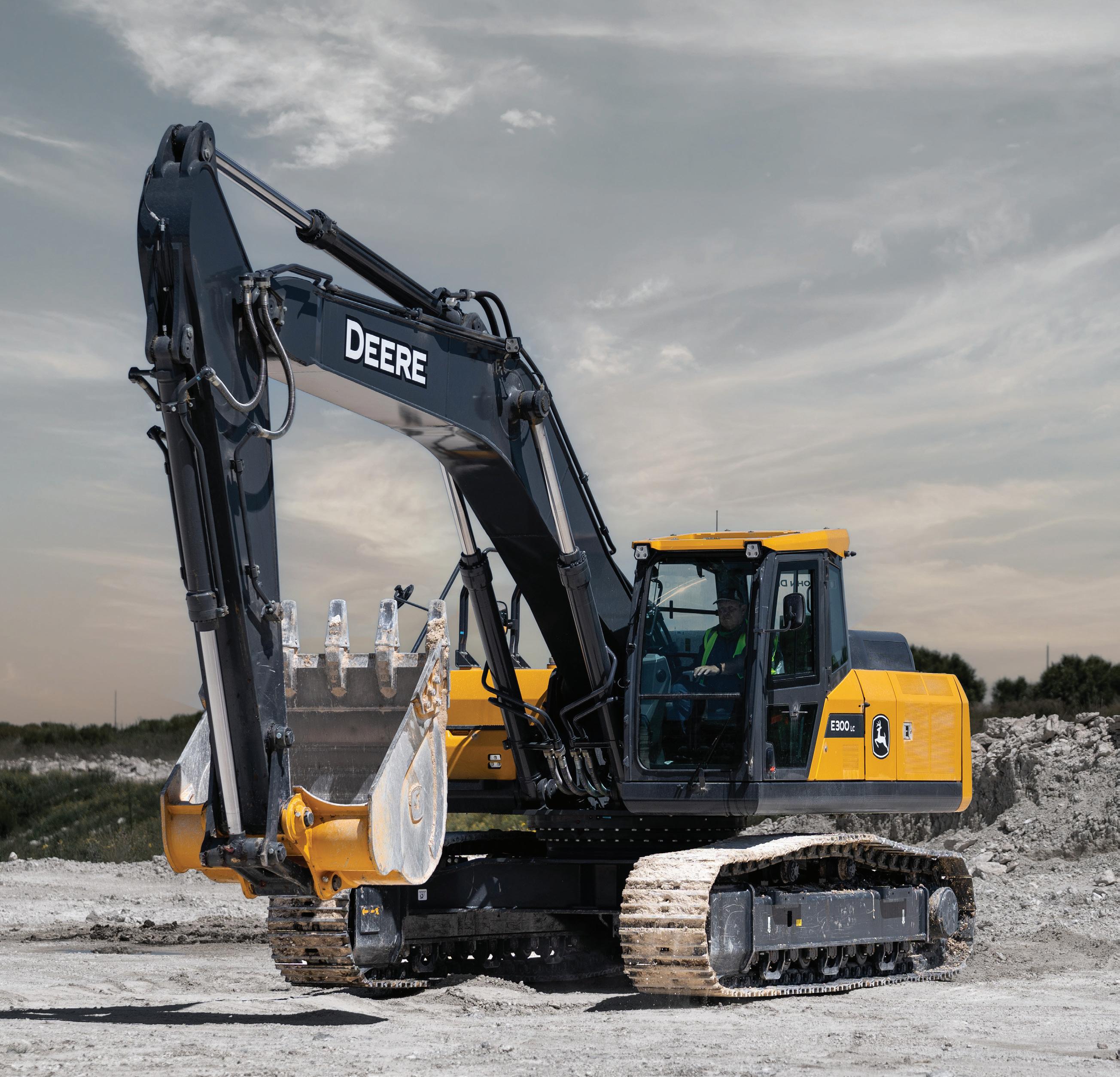
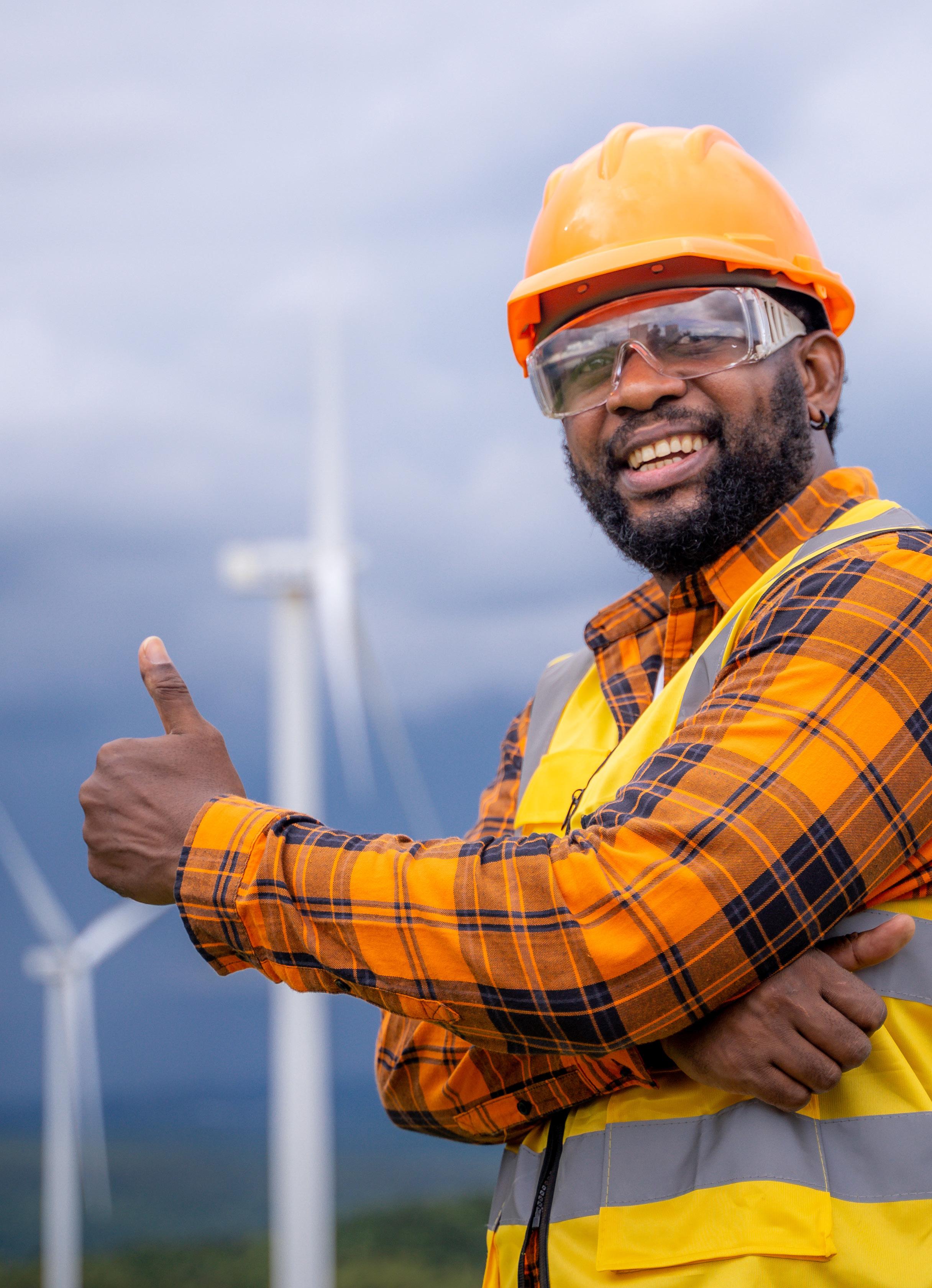
The Franconian uvex safety group, a specialist in occupational safety, and the Swedish company Mips, one of the market leaders in helmet-based safety, have launched a new occupational safety helmet: the pronamic alpine Mips.
Head injuries are not uncommon in the working environment: Among the most
frequently injured body parts in occupational accidents, the head ranks third (bit.ly/3TitBDq). And in around 40% of all fatal accidents, injuries to the head were significantly involved.
The causes of head injuries are diverse, according to a study published in 2021 (bit.ly/3fLQrWi). Most often, sufferers slip, trip or fall, are hit by a falling object, or fall to a lower level.
Among the most frequently injured body parts in occupational accidents, the head ranks third
The National Energy Regulator of South Africa (NERSA) ensures the orderly development of the energy sector, mainly through licensing, setting and approving of prices and tariffs, compliance monitoring and enforcement, and dispute resolution in the electricity, piped-gas and petroleum pipelines industries.
The National Energy Regulator of South Africa (NERSA) ensures the orderly development of the energy sector, mainly through licensing, setting and approving of prices and tariffs, compliance monitoring and enforcement, and dispute resolution in the electricity, piped-gas and petroleum pipelines industries.
The National Energy Regulator of South Africa (NERSA) ensures the orderly development of the energy sector, mainly through licensing, setting and approving of prices and tariffs, compliance monitoring and enforcement, and dispute resolution in the electricity, piped-gas and petroleum pipelines industries.
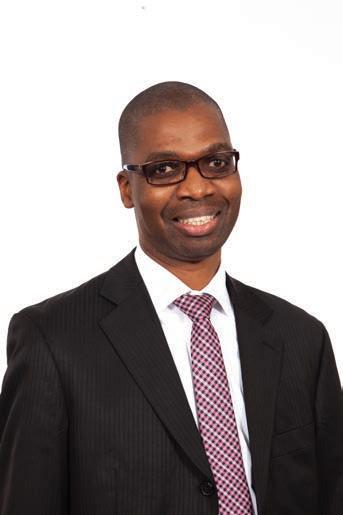
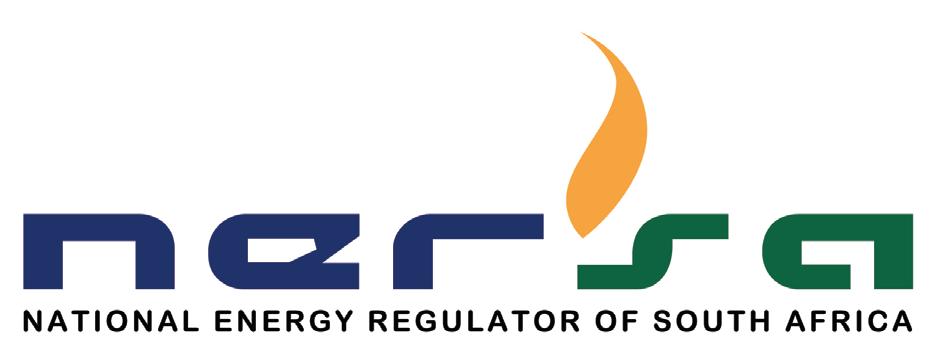
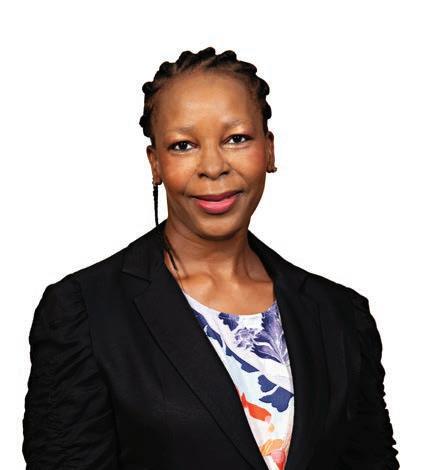

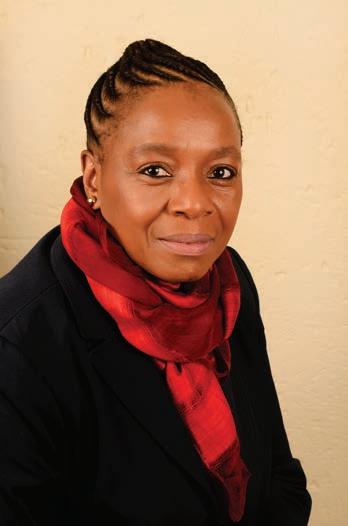
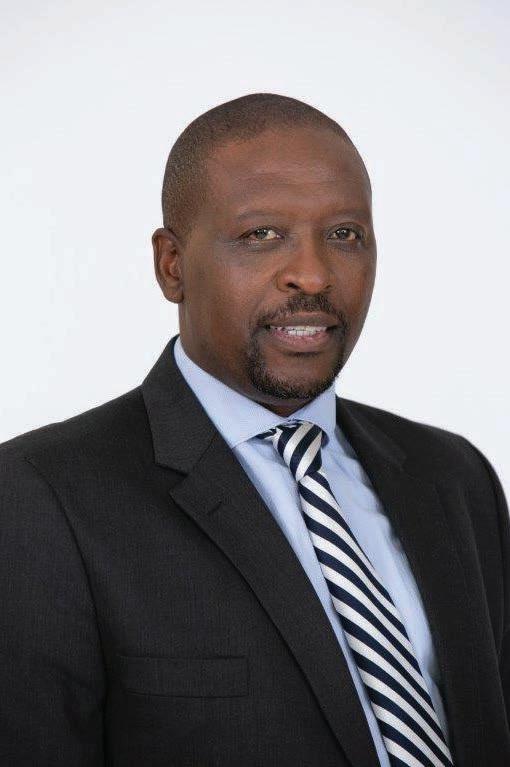


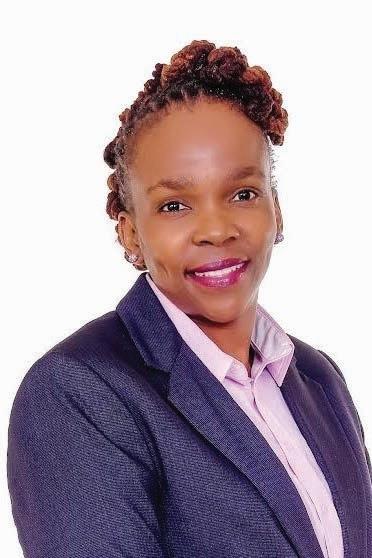
















NERSA endeavours to be more innovative and agile in ensuring that we continue to make a valuable contribution to the socio-economic development and prosperity of the people of South Africa, by regulating the energy industry in accordance with government laws, policies, standards and international best practices in support of sustainable development.
NERSA endeavours to be more innovative and agile in ensuring that we continue to make a valuable contribution to the socio-economic development and prosperity of the people of South Africa, by regulating the energy industry in accordance with government laws, policies, standards and international best practices in support of sustainable development.
NERSA endeavours to be more innovative and agile in ensuring that we continue to make a valuable contribution to the socio-economic development and prosperity of the people of South Africa, by regulating the energy industry in accordance with government laws, policies, standards and international best practices in support of sustainable development.
NERSA is a regulatory authority established as a juristic person in terms of section 3 of the National Energy Regulator Act, 2004 (Act No. 40 of 2004).
NERSA is a regulatory authority established as a juristic person in terms of section 3 of the National Energy Regulator Act, 2004 (Act No. 40 of 2004).
NERSA is a regulatory authority established as a juristic person in terms of section 3 of the National Energy Regulator Act, 2004 (Act No. 40 of 2004).



NERSA’s mandate is to regulate the electricity, piped-gas and petroleum pipelines industries in terms of the Electricity Regulation Act, 2006 (Act No. 4 of 2006), Gas Act, 2001 (Act No. 48 of 2001) and Petroleum Pipelines Act, 2003 (Act No. 60 of 2003).
NERSA’s mandate is to regulate the electricity, piped-gas and petroleum pipelines industries in terms of the Electricity Regulation Act, 2006 (Act No. 4 of 2006), Gas Act, 2001 (Act No. 48 of 2001) and Petroleum Pipelines Act, 2003 (Act No. 60 of 2003).
NERSA’s mandate is to regulate the electricity, piped-gas and petroleum pipelines industries in terms of the Electricity Regulation Act, 2006 (Act No. 4 of 2006), Gas Act, 2001 (Act No. 48 of 2001) and Petroleum Pipelines Act, 2003 (Act No. 60 of 2003).
NERSA’s mandate is further derived from written government policies and regulations issued by the Minister of Mineral Resources and Energy. NERSA is expected to perform the necessary regulatory actions in anticipation of and/or in response to the changing circumstances in the energy industry.
NERSA’s mandate is further derived from written government policies and regulations issued by the Minister of Mineral Resources and Energy. NERSA is expected to perform the necessary regulatory actions in anticipation of and/or in response to the changing circumstances in the energy industry.
NERSA’s mandate is further derived from written government policies and regulations issued by the Minister of Mineral Resources and Energy. NERSA is expected to perform the necessary regulatory actions in anticipation of and/or in response to the changing circumstances in the energy industry.
The Minister of Mineral Resources and Energy appoints Members of the Energy Regulator, comprising Part-Time (Non-Executive) and Full-Time (Executive) Regulator Members, including the Chief Executive Officer (CEO). The Energy Regulator is supported by staff under the direction of the CEO.
The Minister of Mineral Resources and Energy appoints Members of the Energy Regulator, comprising Part-Time (Non-Executive) and Full-Time (Executive) Regulator Members, including the Chief Executive Officer (CEO). The Energy Regulator is supported by staff under the direction of the CEO.
The Minister of Mineral Resources and Energy appoints Members of the Energy Regulator, comprising Part-Time (Non-Executive) and Full-Time (Executive) Regulator Members, including the Chief Executive Officer (CEO). The Energy Regulator is supported by staff under the direction of the CEO.
@NERSAZA @NERSAZA
Kulawula House, 526 Madiba Street, Arcadia, 0083
Kulawula House, 526 Madiba Street, Arcadia, 0083
Kulawula House, 526 Madiba Street, Arcadia, 0083
PO Box 40343, Arcadia, 0007
PO Box 40343, Arcadia, 0007
PO Box 40343, Arcadia, 0007
Tel: 012 401 4600 | Fax: 012 401 4700
Tel: 012 401 4600 | Fax: 012 401 4700
Tel: 012 401 4600 | Fax: 012 401 4700
Email: info@nersa.org.za
Email: info@nersa.org.za
Email: info@nersa.org.za
Website: www.nersa.org.za
Website: www.nersa.org.za
Website: www.nersa.org.za








 Thembani Bukula Chariperson Deputy Chairperson
Nomfundo Maseti Full-Time Regulator Member : Piped-Gas
Adv Nomalanga Sithole Chief Executive Officer and Full-Time Regulator
Nhlanhla Gumede Full-Time Regulator Member : Electricity
Thembeka Semane Part-Time Regulator Member
Precious Sibiya Part-Time Regulator Member
Fungai Sibanda Part-Time Regulator Member
Thembani Bukula Chariperson
Zandile Mpungose Deputy Chairperson
Adv Nomalanga Sithole Chief Executive Officer and Full-Time Regulator Member Member : Electricity
Thembani Bukula Chariperson Deputy Chairperson
Nomfundo Maseti Full-Time Regulator Member : Piped-Gas
Adv Nomalanga Sithole Chief Executive Officer and Full-Time Regulator
Nhlanhla Gumede Full-Time Regulator Member : Electricity
Thembeka Semane Part-Time Regulator Member
Precious Sibiya Part-Time Regulator Member
Fungai Sibanda Part-Time Regulator Member
Thembani Bukula Chariperson
Zandile Mpungose Deputy Chairperson
Adv Nomalanga Sithole Chief Executive Officer and Full-Time Regulator Member Member : Electricity
The forces that can act on the head in accidents are enormous. Helmets are developed and tested to withstand some of these forces but, according to test procedures, they are developed and tested mainly for vertical falls onto the helmet surface. However, many accidents around the head do not occur linearly but take place at an angle. As a result, so-called rotational movements can act on the head and brain, which can be very dangerous and lead to severe brain injuries.
The Mips safety system, now integrated into the helmet, is designed to redirect dangerous rotational movements in the event of an accident, which could otherwise be transmitted to the wearer’s head.
“By integrating Mips technology into our safety helmets, we are pursuing the goal of increasing the wearer’s protection against rotational forces that occur in many accidents. The added protection contributes fully to our uvex mission of ‘protecting people’,” comments Wolf Wagner, director: Product Group Management Head at uvex.
Mips is the market leader in helmet-based safety and currently works with 143 helmet manufacturers worldwide. The Mips helmet test laboratory near Stockholm has been in continual development for more than 20 years.
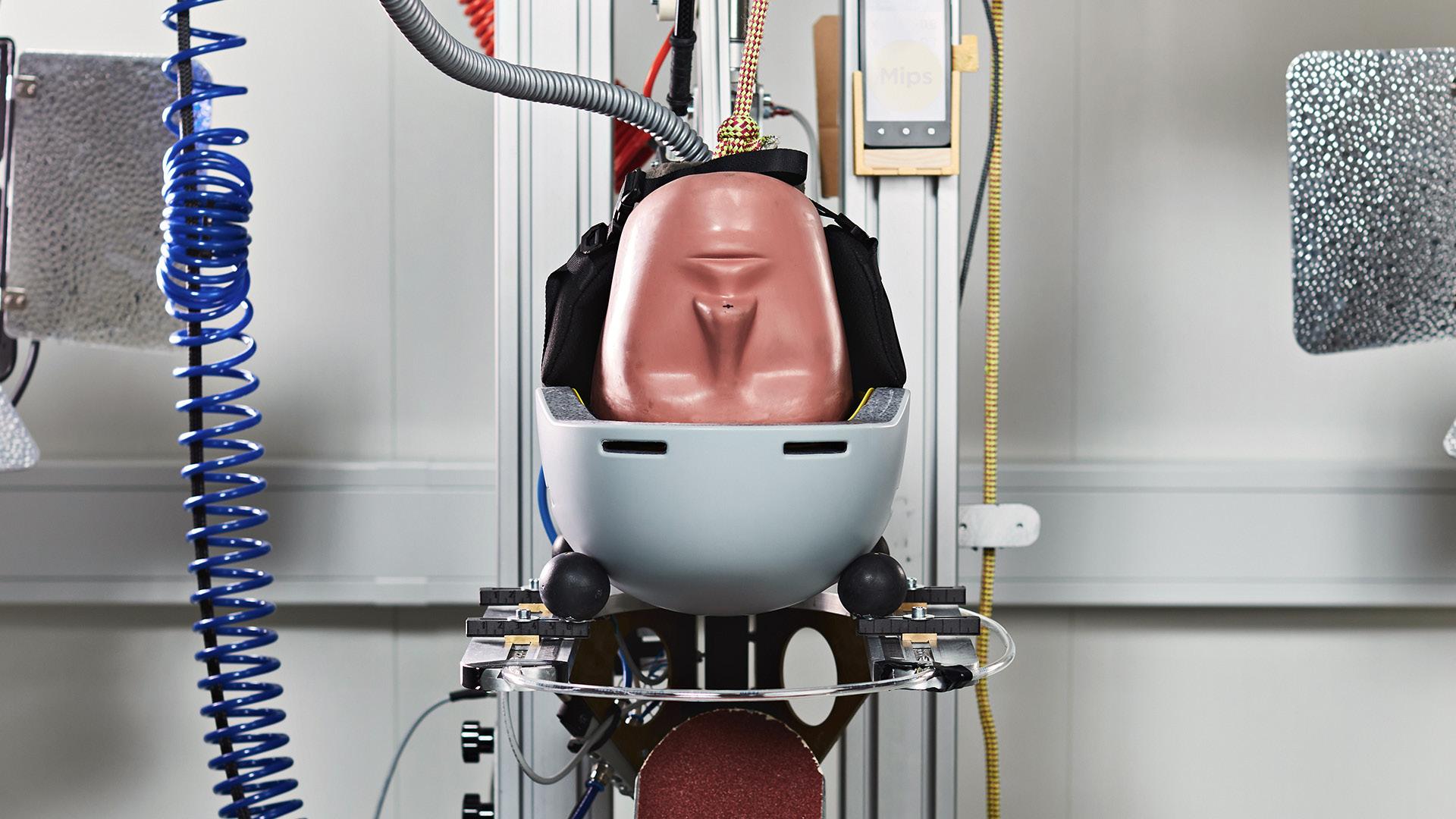
This modern complex includes four test machines and state-of-the-art tools designed to mimic real-world impact scenarios.
Mips stands for ‘multi-directional impact protection system’. The safety system consists of a low friction layer installed in helmets. It is modelled on cerebrospinal fluid— our natural protective system— which allows the brain to move relative to the skull. Accordingly, the Mips safety system enables a movement of 10mm to 15mm between the helmet and head in all directions, to redirect the rotational movements acting on the head in an accident during certain oblique shocks.

“We are very pleased that uvex [has entered] into this partnership with us as a major German manufacturer launching work safety helmets with the Mips safety system in the name of worker safety,” says Olof Rylander, senior business developer of safety at Mips.
The uvex pronamic alpine Mips was developed for the accident protection of industry employees, the construction industry, height work and other craft trades. The basic variant already combines the technical requirements of the EN397 and EN12492 standards in one helmet. In addition, the helmet has the size range from 51cm to 63cm head circumference as standard. The versatile adjustability of the head ring, generous ventilation openings, and easily and quickly replaceable chin straps ensure optimal wearing comfort. Extensive mounting slots complement the safety and functionality for helmet accessories such as headlamps, full-vision goggles and hearing protection capsules.

The uvex group develops, produces and sells products and services for the safety and protection of people in the professional, sports and leisure sectors.
“In our endeavour to provide people with the best possible protection from head to toe, it goes without saying that we constantly develop our products further and equip them with innovative systems. The unique Mips safety system prepares our helmets even better for complex accidents and complements our portfolio perfectly,” concludes Wagner.
For more information, visit www.uvex-safety.com and mipsprotection.com.
The Mips safety system is designed to redirect dangerous rotational movements in the event of an accident
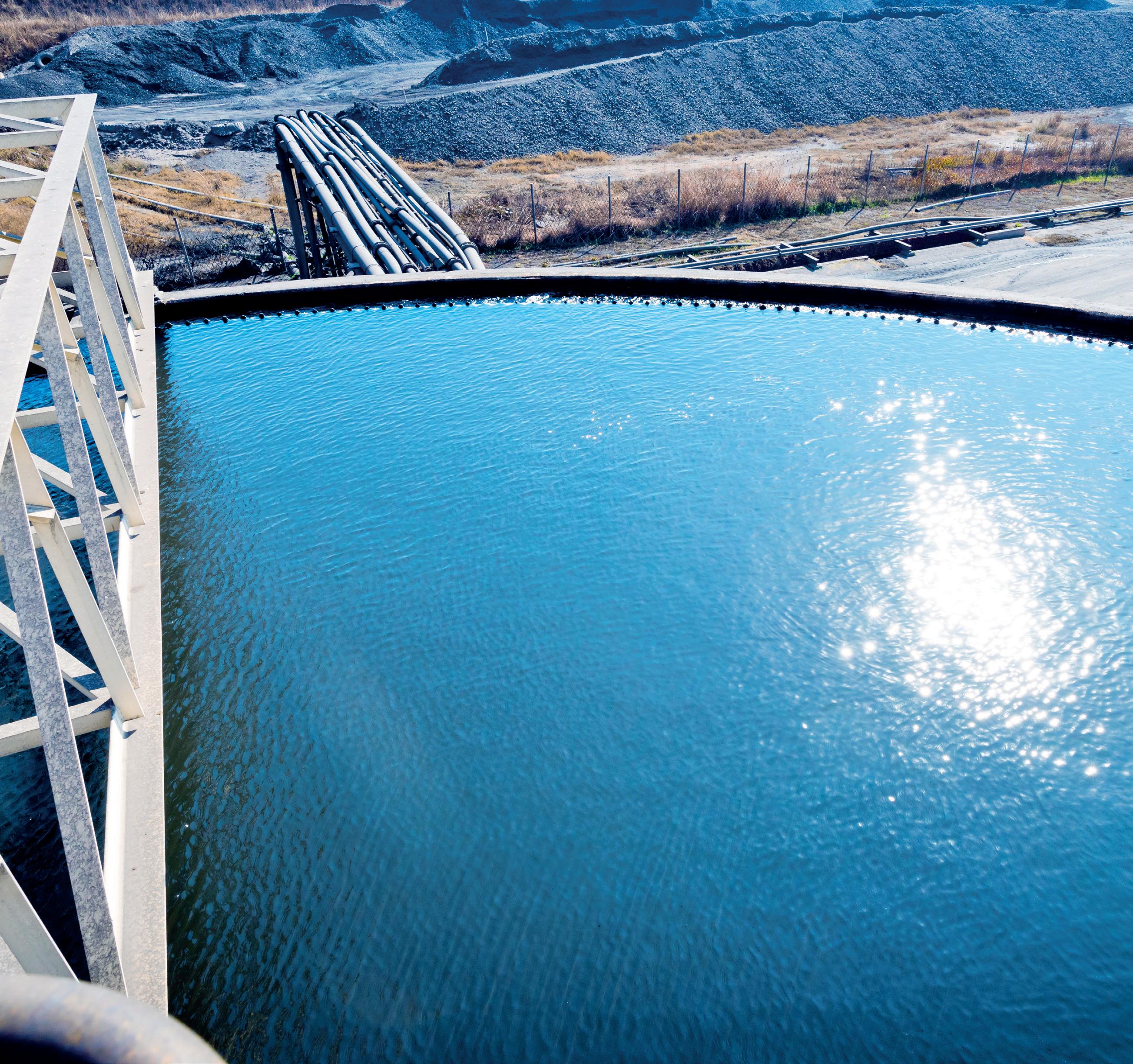
Lithium is an essential component of rechargeable batteries - for small devices such as smartphones, but also for electric cars. Particularly because of its use in electromobility, the alkali metal is currently developing into a raw material that is in high demand. Therefore, its efficient and particularly sustainable processing is of particular
importance. The same is true for the agricultural industry, which uses potassium carbonate (potash) for securing food supply.
In both industries, ANDRITZ can make an important contribution to sustainability with the LiKOSET. It is built from high quality duplex stainless steel which
contains a high chromium content to prevent corrosion (thus suitable for corrosive and humid operational conditions), increased strength compared to other stainless steels, and is easy to maintain (low maintenance required and easy to clean).
When TotalEnergies and Shell separately announced “significant” discoveries of what appears to be commercial quantities of oil and gas offshore Namibia (possibly more than 4 billion barrels of oil in total), it signalled something new for the nation: a chance to monetise its natural resources to combat energy poverty and accelerate economic growth. The offshore deposits—the nation’s largest find since independence—are at peak likely to provide Windhoek an estimated $5.6 billion annually in royalties and taxes and should help the nation double its $11-billion economy by 2040.
The find also demonstrated how well African oil & gas development activity is faring despite repeated efforts to tamp it down. With activist investors trying to stem the flow of international funds into African fossil fuel projects, and major oil companies under pressure to rebalance their portfolios by adding lower emission assets, the Namibian experience is impressive on several counts. The pragmatism of Namibian officials has been encouraging to investors and we hope that pragmatism stays.
It is also likely a harbinger of things to come for Africa’s upstream energy sector, according to the African Energy Chamber’s latest report, “The State of African Energy: 2023 Outlook”.
The report says investment in African upstream activities (defined as exploration, production and development) wrapped up 2022 at about $33 billion, then will grow as much as $15 billion more over the period 2023–2025, compared to year-end 2021 estimates.
In addition to Namibia, greenfield spending—that is, foreign direct investment in new projects—is being driven by Mauritania, Senegal, Uganda, Congo, Mozambique, Ghana, Angola, and Côte d’Ivoire. In 2022, exploration alone was up 130% over 2021.
The twin discoveries by TotalEnergies and Shell came three weeks apart, but there are no overnight successes in oil & gas. Exploration by one company or another has been taking place in Namibia for more than 30 years, and first production from the giant find is not expected until 2028.
Still, while this is the largest discovery to date, it is just the latest in a series of new opportunities that include a high-impact onshore exploration programme by Canadian oil company ReconAfrica (the basin is the size of Texas, and some are saying it could shape up to be the last great onshore oil discovery in the world) and developments by Atlantic Oil & Gas and Global Petroleum—projects that the 2023 Outlook describes in some detail.
Could there be better proof that the world is not ready to abandon fossil fuels, especially given the push and pull of market conditions and the fact that renewables, while desirable, are not ready to replace hydrocarbons quite yet? And could there be more evidence that the ‘last frontier’ fields onshore and offshore Africa are considered a fruitful alternative to the world’s legacy basins whose productivity is waning?
True, COP26 and its international fossil fuel finance bans took the wind out of certain sails. Lack of investment has delayed some projects and suspended others during 2022. But even climate agreements have not kept the United States International Development Finance Corporation (DFC), one of the primary funders of all types of overseas energy projects, from plowing far more support into African oil & gas development than into renewables.
The DFC and EXIM (the Export–Import Bank of the United States) have invested more than $9 billion in hydrocarbons, compared to just $682 million in wind and solar. Together, they have bankrolled oil facilities in Senegal and Equatorial Guinea and invested in an Egyptian gas pipeline. And in 2019, EXIM agreed to provide a $4.7-billion loan to finance a project in northern Mozambique overseen by TotalEnergies.
The truth, plain and simple, is that the world needs more energy. And Africa needs it even more than most.

Hazmat Protective Systems (Hazmat), a subsidiary of Armscor, is a major manufacturer and supplier of purpose-designed quality respiratory and filtering products to the commercial and defence industries.
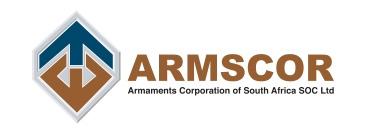

Activated carbon is impregnated in Hazmat’s purpose-designed advanced carbon impregnation plant for use in a comprehensive range of commercial and military respirator filter canisters and cartridges. Hazmat is one of only a few companies capable of impregnating activated carbon in respiratory and filtering products, and is a sole manufacturer of canisters in South Africa.
With a 30 year history of excellence, Hazmat is one of only a few companies capable of impregnating activated carbon for use in their comprehensive range of commercial and military respirator filter canisters and cartridges. As an ISO 9001:2015 certified facility, Hazmat is customer-centric, with processes in place to ensure that clients consistently receive high quality safe products at competitive prices.

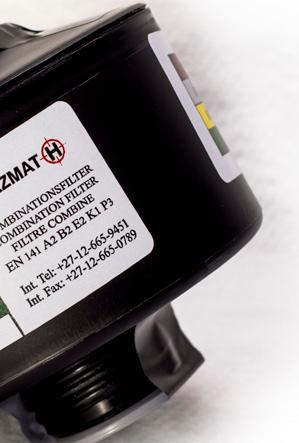

Hazmat utilises in-house testing facilities and internal technical support from Protechnik Laboratories (an Armscor subsidiary). All canister
and cartridge batches are compliance tested on site against the applicable South African Bureau of Standards (SABS) respiratory specifications.
Hazmat offers a wide range of services to various industries, including mining, pharmaceutical and health services, agriculture, pulp and paper, textiles, beverages, engineering; and chemical, including petrochemical commodities, pesticide chemicals, organic/inorganic chemicals, explosives, paint adhesives, sealants and cleaning chemicals, amongst others.
Hazmat’s product range consists of the following categories:
• Full Face Mask Respirators

• Double and single half mask
• Respirator filter canisters
• Respirator filter cartridges

Africa is ripe for increased energy development, hydrocarbons and renewables alike, especially as the continent undergoes dramatic demographic shifts, chiefly staggering population growth, sustained urbanisation and greater industrialisation.
Consider this: In 1950, less than 10% of the world’s population lived in Africa, but by 2050, that figure will be closer to 25%. Between now and then (less than 30 years), the populations of more than half of Africa’s nations are expected to double. In real numbers. This means Africa will be home to 2.5 billion people by 2050, and its urban areas alone will have added 950 million people. In fact, Africa’s cities are the fastest growing on the planet.
Generally speaking, that is good news. City life is associated with better economic outcomes for individuals as well as higher standards of living: greater access to education, jobs, services, infrastructure and electricity. Progress in cities far outpaces rural areas by just about every metric.
Of course, it takes a lot of energy (and money) to power progress. Experts say energy demand in Africa is expected to be 30% higher over the next two decades (by contrast, global demand will only grow 10%), meaning it will easily outstrip supply. And although Africa has about 60% of the world’s best solar resources, its 1% installed solar capacity is not likely to keep many lights on or factories running. No wonder we are seeing the kind of uptick we are in upstream activity.
While oil is still in play, much of the focus has pivoted to natural gas,
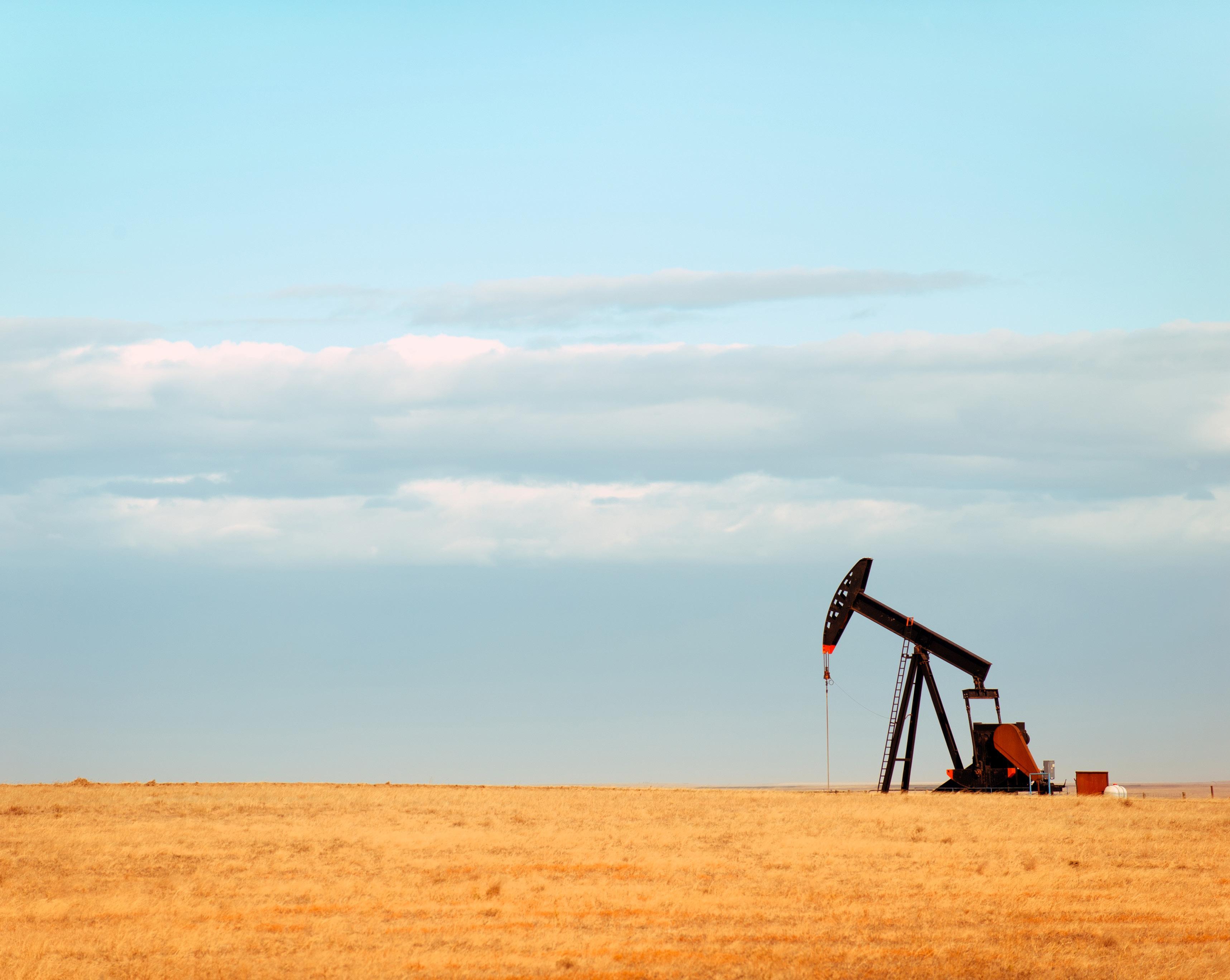
which is considered a cleaner, even ‘green’ fuel, even by the most ardent hydrocarbon proponents. Today, analysts believe that countries with significant gas production could expect their gas reserves to be more resilient under various energy transition scenarios than their oil reserves.
What does that mean for Africa? As discussed during African Energy Week 2022, the 2023 Outlook notes that the continent holds more gas potential in the medium term than oil; more than 700 trillion cubic feet of natural gas resources have been discovered in Africa, but are yet to be approved for development.
Many of these discoveries are planned to be developed as liquified natural gas (LNG) projects. In fact, most of the gas projects sanctioned in Africa are related to supplying LNG either within Africa or to markets like China and Europe, which is diversifying away from Russian gas. With the exception of developments in Libya, the LNG projects are largely in sub-Saharan Africa. As such, this is where CAPEX spending is centred. The AEC report estimates that 80% of the 2022–2025 cumulative greenfield spending from Africa is expected to come from sub-Saharan projects. While some decry those investments because they generate energy for export outside the continent, government officials say their economies—and, therefore, their citizens—depend on resource wealth. And intraregional trade within Africa is destined to grow, especially as investment increases in gas infrastructure required to support domestic industrialisation: pipelines, processing facilities, and LNG regasification plants, and the like.
Regardless of whether they are onshore or offshore, the Namibian discoveries are not just important—they are transformational. ReconAfrica’s huge, conventional oil play is already providing well-paying jobs to 200 people from the Kavango region, where 40% of the people live in generational poverty, and local hiring is expected to continue as the project advances. The company has also made it a priority to provide clean water to the region; it has drilled four water wells and has permits for 16 more. And, as we have seen time and time again in the energy business, success breeds success. In this case, Namibia shares the same geological sedimentary basin with South Africa—and Shell, TotalEnergies, PetroSA, Sezigyn and Impact Africa all hold exploration acreage in the South African sector. South Africa needs to move with a petroleum legislation immediately and ensure stability so more investment can come into the country. The hydrocarbon potential of the region is tremendous, suggesting the economic potential is as well—as long as development is allowed to continue.
“The State of African Energy: 2023 Outlook” can be downloaded at bit.ly/3NbQLtD.
 NJ Ayuk Executive Chairperson African Energy Chamber
NJ Ayuk Executive Chairperson African Energy Chamber
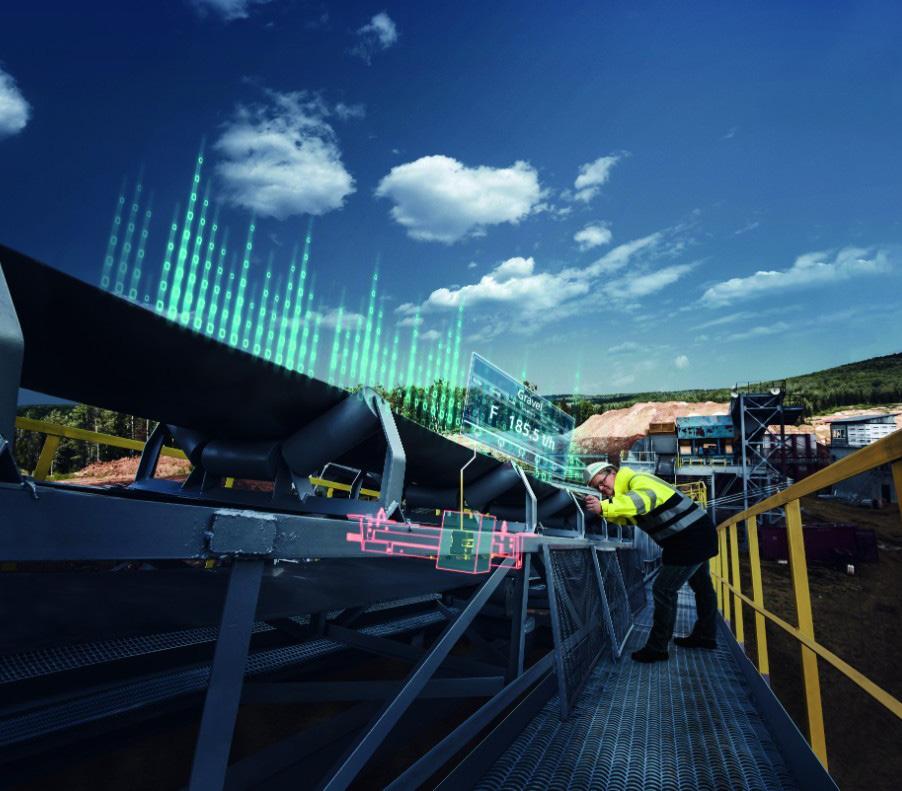
As cyberattacks on pipelines (bit.ly/3D3H3pW), water pumping stations (bit.ly/3S5HZys) and manufacturing plants (bit.ly/3CDnpjg) hit the news, customers and investors grow more aware of the need for organisations to take responsibility for the protection of their potential cyber vulnerabilities. Cybercrime can have a significant impact on businesses—and cybersecurity is central to environmental, social
and governance (ESG) analysis of a company’s sustainability.
Investment in ESG assets is set to grow to $50 trillion by 2025 (bloom.bg/3f9L7vt). With ESG forming a key component of financial reporting in South Africa, and with many businesses in the region on the journey to adapt to international reporting requirements and standards, organisations across the continent are looking for ways to strengthen their portfolios in this regard.
Protection against cyber threats is necessary not only for business continuity but also for the preservation of the environment and human health. ESG programmes should therefore include aspects of cybersecurity in order to minimise the risk of the impact of a cyberattack on employees, the ecosystem and society as a whole.
“This is particularly relevant to critical infrastructure, where organisations tend to experience significantly more severe outcomes from operational technology security issues than others,” says Bethwel Opil, enterprise client lead at Kaspersky in Africa.
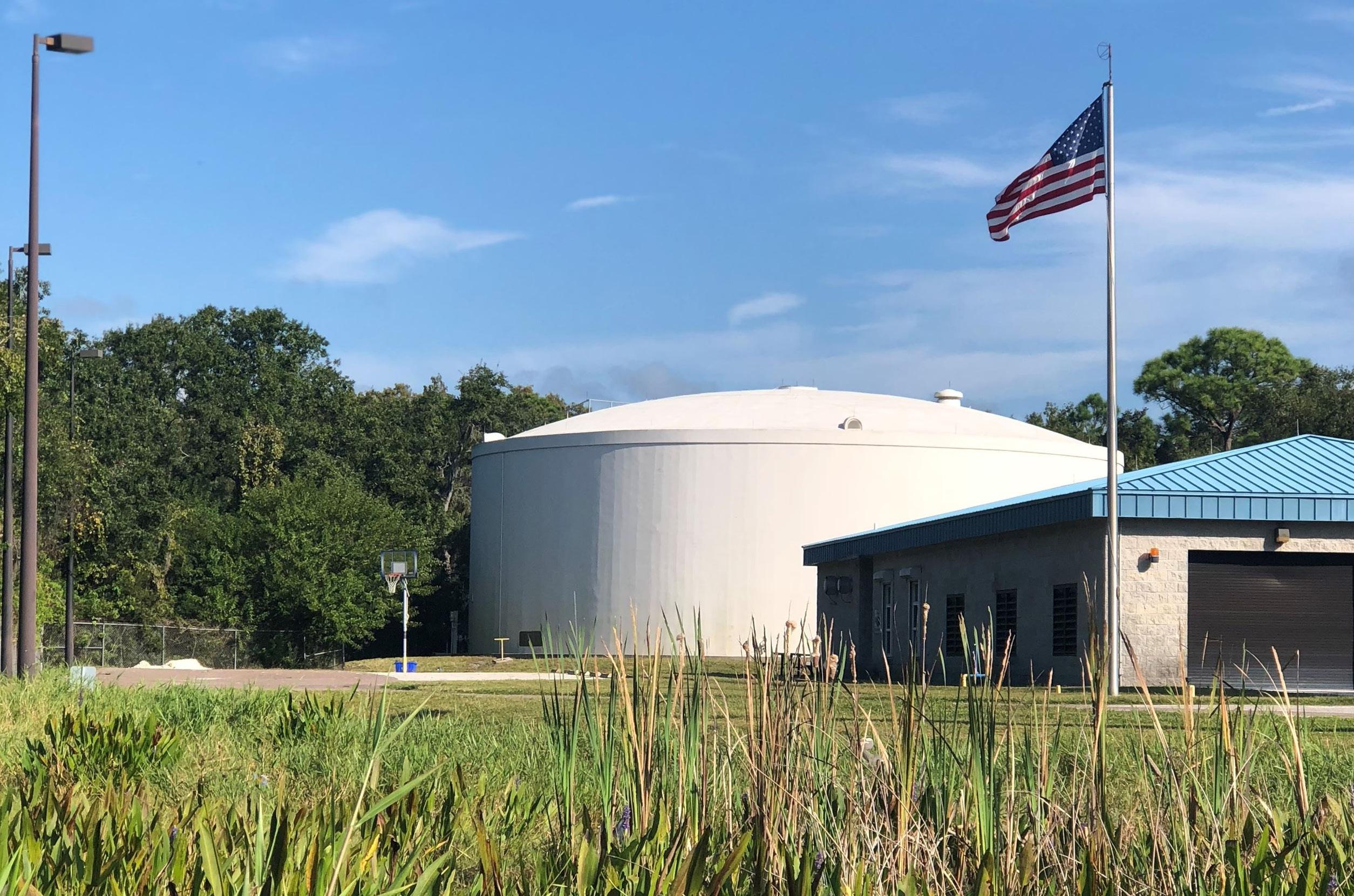
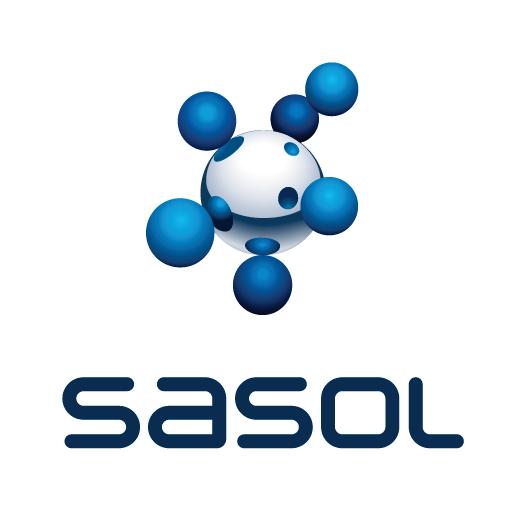
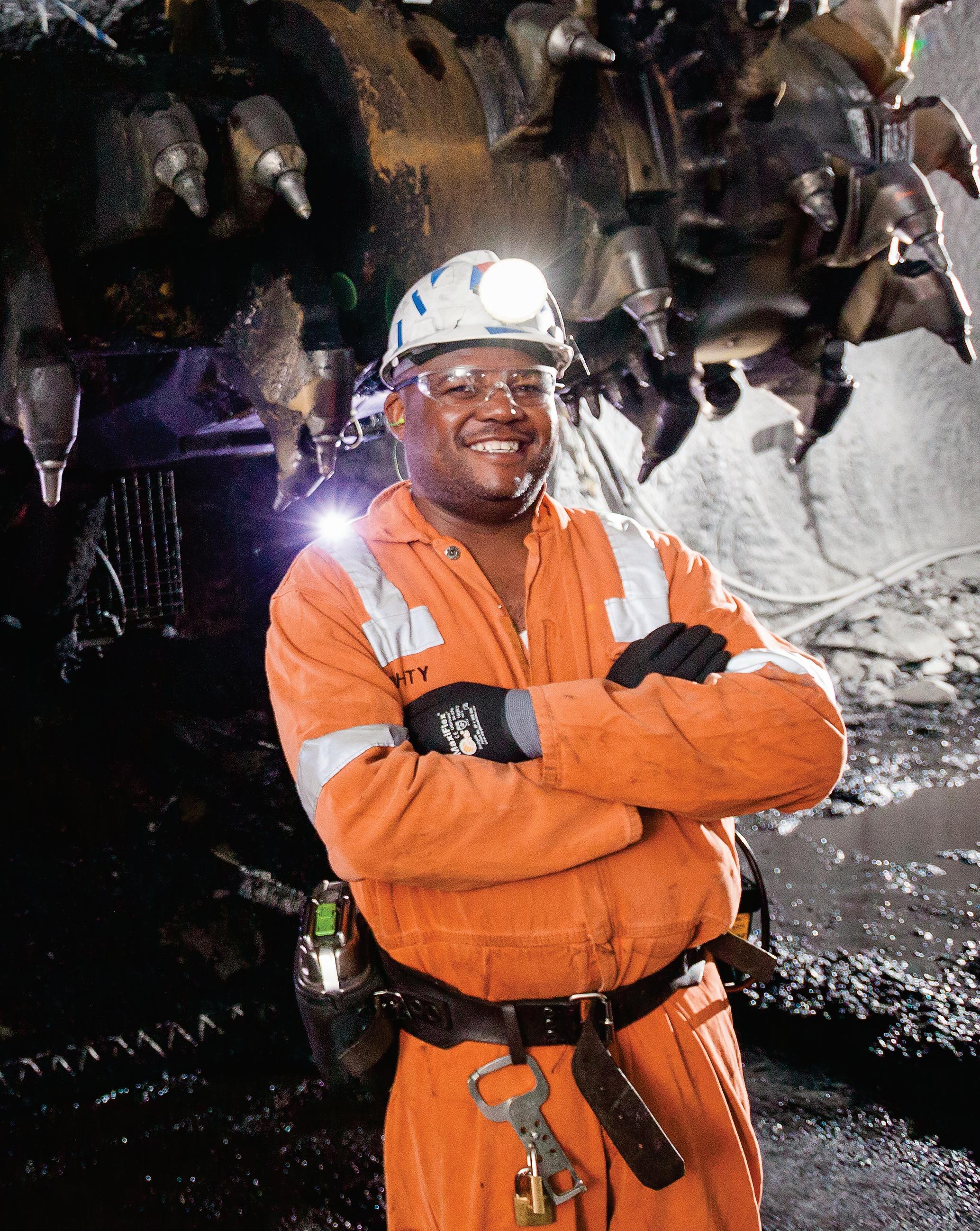
Kaspersky research (bit.ly/3LzWA3B) has found that over the course of 2021, there was a 45% increase in the incidence of spyware on computers used for industrial control system purposes when compared to the previous year. A cyberattack on a safetycritical power station or oil & gas installation, for example, has the capacity to have knockon impacts that touch all components of ESG.
Furthermore, Kaspersky has found that approximately a third (30%) of companies globally experience significant operational technology security issues. They see four times as many incidents and suffer financial costs that are twice as large. These companies are also more likely to see these cyber risks manifest in terms of physical risk such as injury or death (five times more likely) and environmental damage (2.5 times more likely).
“Cybersecurity takes on a new level of importance for local organisations. It is not only about being protected against attacks that can threaten business continuity and damage corporate reputation, and from a business governance point of view, but there is a very real threat against human life and the environment —especially when industrial control system hardware that controls critical infrastructure is attacked,” says Maria Losyukova, head of Sustainability at Kaspersky.
“As a part of an organisation’s
ESG, it will be the cybersecurity team leader’s responsibility to document current practices and to address issues of concern with solid and quantifiable security solutions. The days of enterprises simply declaring ‘We have cybersecurity insurance’ are over.”
Each year it becomes more challenging to secure and protect infrastructure and data assets at an enterprise level. Staff in security operations centres can get overwhelmed with alerts coming from different cybersecurity components.

Protection against cyber threats is necessary not only for business continuity but also for the preservation of the environment and human health.


Caustic Soda Flake
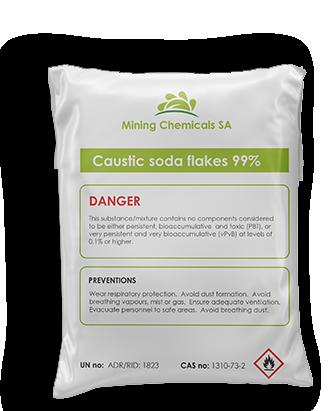
Hydrochloric acid
Soda Ash Light

Soda Ash Dense

Sulphuric Acid
Sodium Tetraborate Decahydrate (Borax)



XDR (extended detection and response) products have emerged as a class of automated information security solutions designed to proactively detect threats at various infrastructure levels, respond to them, and counter complex threats. XDR comprises a wide range of tools that security specialists can integrate with available security programs and applications to perform data monitoring on endpoints, the network, the cloud, and mail servers. It also adds analytical and automation functions for the detection and elimination of current and potential threats.
Opil further comments: “The implementation of an XDR solution provides the organisation with a complete
view of their infrastructure—and building an XDR solution with Kaspersky means customers can resist attacks on all their assets, manage products from different vendors from a single console, respond more quickly to incidents, and reduce downtime, all contributing to adhering to ESG standards.”
However, the effectiveness of even the most advanced cybersecurity solutions is diminished if organisations do not practise employee trainings.
“Staff must be trained on the changing threat landscape using more than traditional methods,” adds Opil. “To this end, Kaspersky launched its Automated Security Awareness Platform (ASAP.Kaspersky.com). This is an easy-to-manage

online tool that builds employees’ cybersecurity skills level by level. It provides organisations across industry sectors with a reusable online tool on which to launch and run their internal cybersecurity awareness programmes.”
Cybersecurity is fast becoming more than just a security issue, with its ESG impacts moving to the forefront. Long-term business resilience requires profitable business vitality along with a healthy society and environment. Investing in cybersecurity today will not only help an organisation avoid a breach or an insurance claim but also boost trust, reduce risk, and contribute to overall economic growth.
Kaspersky in AfricaA cyberattack on a safetycritical power station or oil & gas installation has the capacity to have knockon impacts that touch all components of ESG.











At COP27 at the end of November 2022, DLA Piper—in collaboration with the African Green Infrastructure Investment Bank, Africa Investor, and the CFA Asset Owners Council—presented the full (with all associated guidance notes) Model Law on Institutional Investor-Public Partnerships initiative, which will facilitate the deployment of trillions of dollars of private capital into green
infrastructure programmes and projects across the continent.
Back in 2021, at COP26, the current legal and regulatory frameworks of Africa and other emerging markets were stated as a key investment barrier by global and domestic institutional investors that represent over $150 trillion.
World governments and global development finance institutions recognised there is no single Net Zero pathway that can be met
to address the United Nations Sustainable Development Goals (SDGs) and Paris Agreement infrastructure and energy multitrillion-dollar financing gap for bankable green transition and net zero infrastructure projects, without exponentially increasing the scale and speed of global institutional investor allocations that can be rapidly deployed and perform at the project and asset level.
We advised African Rainbow Minerals on its acquisition of the Bokoni Platinum Mine which will bring the mine back into operation and ensure its sustainable future.


It is also likely to create approximately 5 000 new jobs and facilitate participation in the mining industry. The result – long-term partnerships and substantial growth of the Limpopo region and its people. Our work across Africa makes a difference. That’s the true value of knowing.
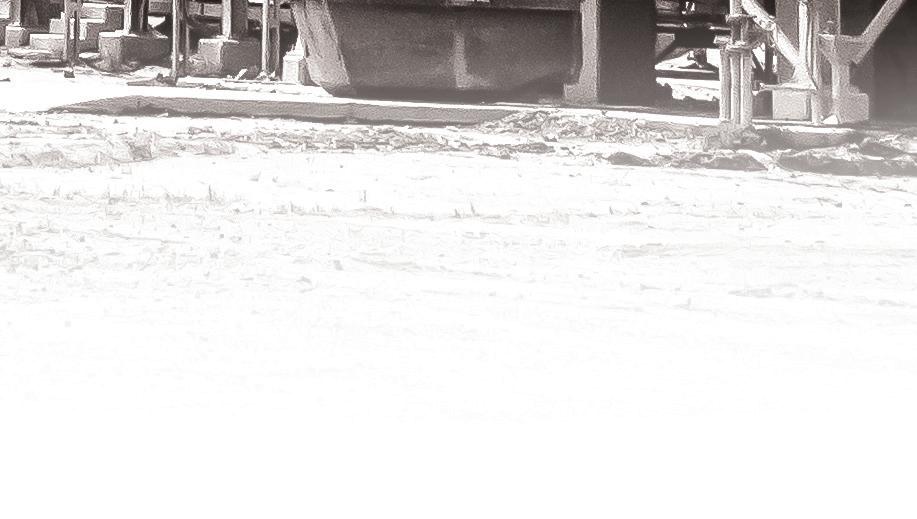
To address this hurdle, DLA Piper presented the draft ML-IIPP at COP26 and now the full 130-page document that delivers the fasttracking, de-risking and scaling of private capital participation in green infrastructure investment programmes and green infrastructure projects through the formation of IIPPs across Africa and the implementation of the concept of early investor involvement.
The ML-IIPP was written and informed through extensive stakeholder engagement, in order to understand the particular challenges and objectives that needed to be addressed, together with the lessons learnt from previous projects. Stakeholders included representatives from the public sector, the development finance community, domestic and global investors, and consultancies advising these entities.
Lawrence Slade, CEO of the Global Infrastructure Investor
Association, which represents most of the leading institutional investors in the world, said at the time of the draft that “the scale of global investment needed to address infrastructure-related climate challenges in markets all around the world has been laid bare at COP26. Despite the billions of dollars committed by governments for investment in emerging markets, we also need to find ways to leverage significant allocation of private capital as well as the private sector’s expertise to deliver the progress that is needed.”
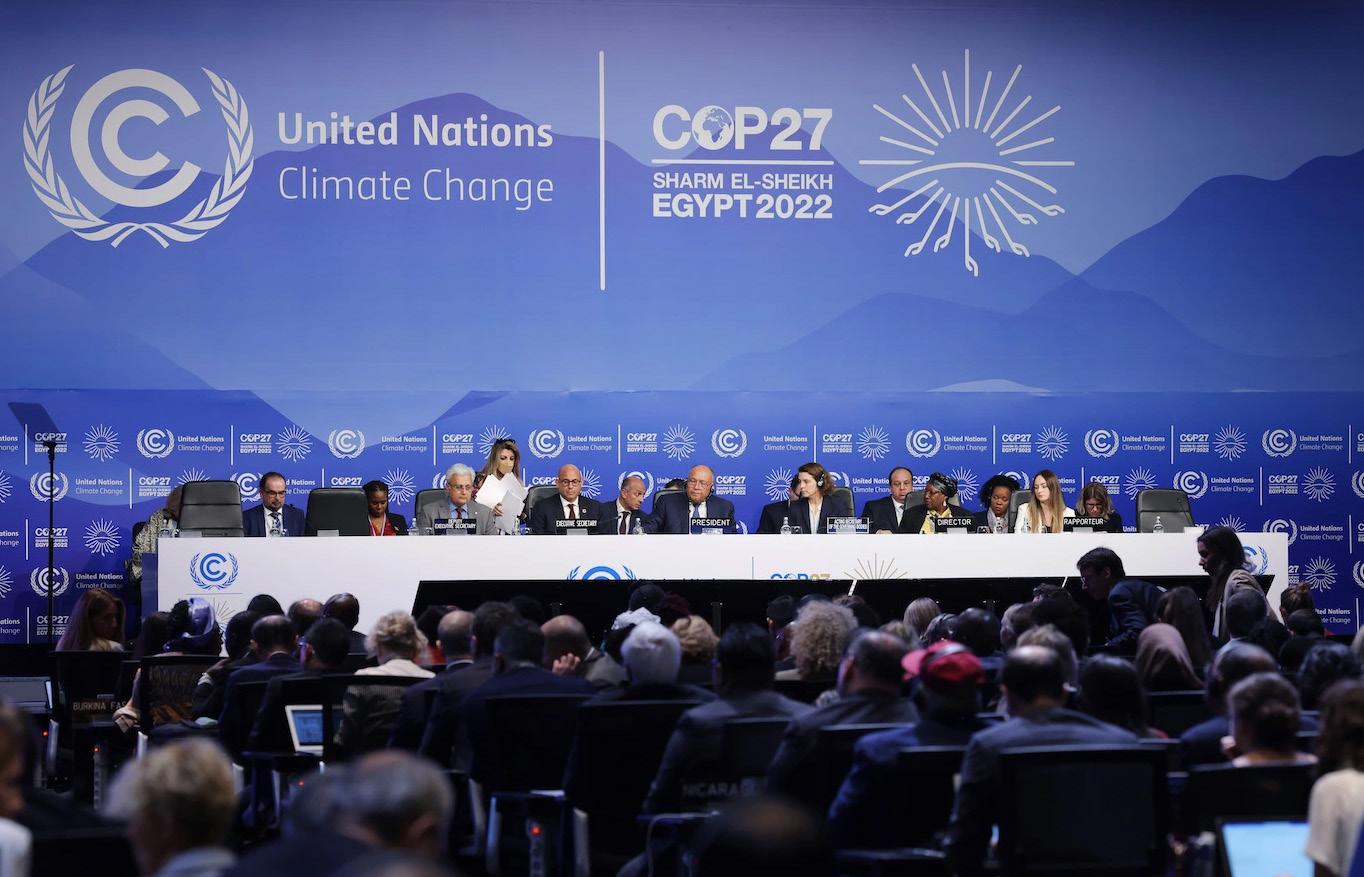
Ambassador Mary Burce Warlick, deputy executive director of the International Energy Agency, also highlighted that “fostering the financial conditions for a rapid deployment of clean energy in Africa is one of the defining challenges of our times, and the creation of new legal and regulatory frameworks will help
tackle many cross-cutting issues to enable the mobilisation and deployment of private capital at scale and at speed.”
And this need is great. Africa is required to mobilise $3 trillion in order to meet the continent’s nationally determined contribution (NDC) projects by 2030. Put into context, the whole world has only managed to mobilise $2.8 trillion for renewable energy investments over the past 20 years, with Africa only receiving 2% of that global sum.
Specifically, the ML-IIPP is a legal and regulatory partnership framework initiative for COP26 and COP27 to support the goals of the Paris Agreement, the SDGs, Net Zero and Agenda 2063 for policymakers and global institutional investors to: mobilise private capital at scale; deploy capital at speed; deepen and green secondary and capital markets; and stimulate and support innovative project developers.
The ML-IIPP is a legal and regulatory partnership framework initiative for COP26 and COP27 to support the goals of the Paris Agreement, the SDGs, Net Zero and Agenda 2063
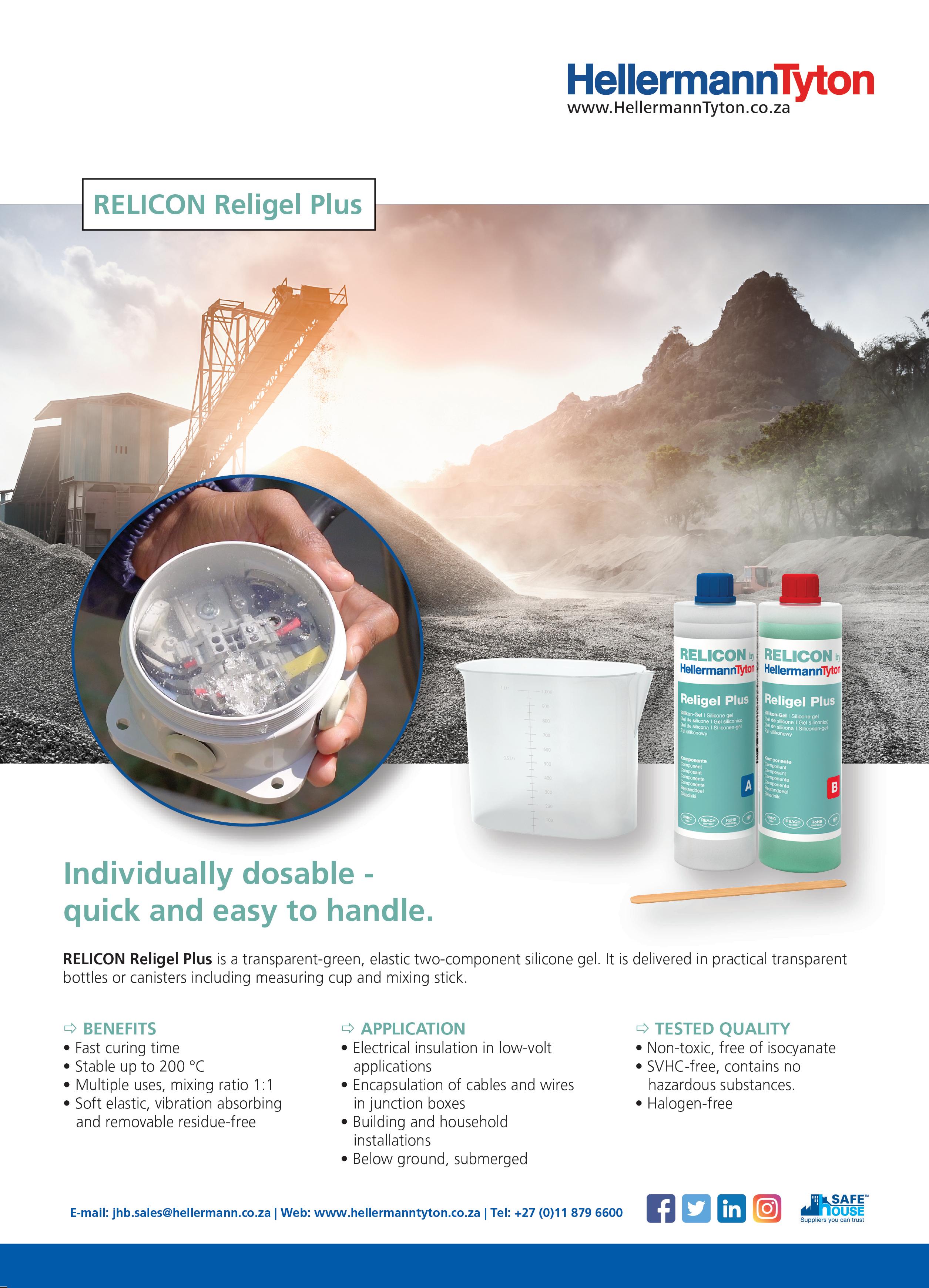
Dr Sharon Fitzgerald, partner at DLA Piper and one of the authors of the Model Law, says it “will enable the use of a newly designed regulatory framework that will support and encourage governments and global institutional investors to work together to deliver green infrastructure investment programmes and green infrastructure projects that will facilitate the delivery of African countries’ NDC commitments —to the ultimate benefit of us all.”
She states that the five key objectives of this new legislative framework is to:
• incentivise collaboration between institutional investors and the public sector in respect of the development and implementation of IIPP projects;
• facilitate private sector investment into IIPP projects in line with best international practice;
• utilise fast-track procurement processes to award IIPP projects in an efficient and streamlined manner, avoiding high procurement costs and delays to project implementation;
• deliver demonstrated value for money for governments through the participation of the private sector, both at implementation and delivery of the IIPP projects based on internationally recognised and bankable risk allocation; and
• provide for an effective and efficient contract management framework with easy access to dispute resolution where appropriate.
Comments Stephanie Pfeifer, CEO at the Institutional Investors Group on Climate Change, “There is undoubtedly appetite from institutional investors to participate in these projects, but the need for consistency in regulation and approach across different markets can be an

obstacle, particularly when it comes to emerging markets. We welcome this initiative to provide a model law framework for Institutional Investor-Public Partnerships, which we hope will help facilitate greater capital mobilisation.”
Marie Lam-Frendo, CEO of the Global Infrastructure Hub, adds: “We need the public and the private sectors to efficiently deploy capital and infrastructure stimulus together. If not, it will be a missed opportunity. Institutional investors will need to play a key role to be the bridge to make this happen.”


Siseko Technologies is an accredited training and development company focusing on information and communications technology (ICT) in townships and rural areas. It is accredited through the Media, Information and Communication Technologies Sector Education and Training Authority (MICT SETA).

Says founder and CEO, Mziwoxolo Mayedwa, “ICT is the fundamental tool used to enhance productivity for individuals, enterprises or organisations; however, South Africa lacks skillful ICT practitioners who specialise in software development. Hence, the courses provided by Siseko Technologies are tailormade for candidates who would like to advance their careers in the field of ICT.”
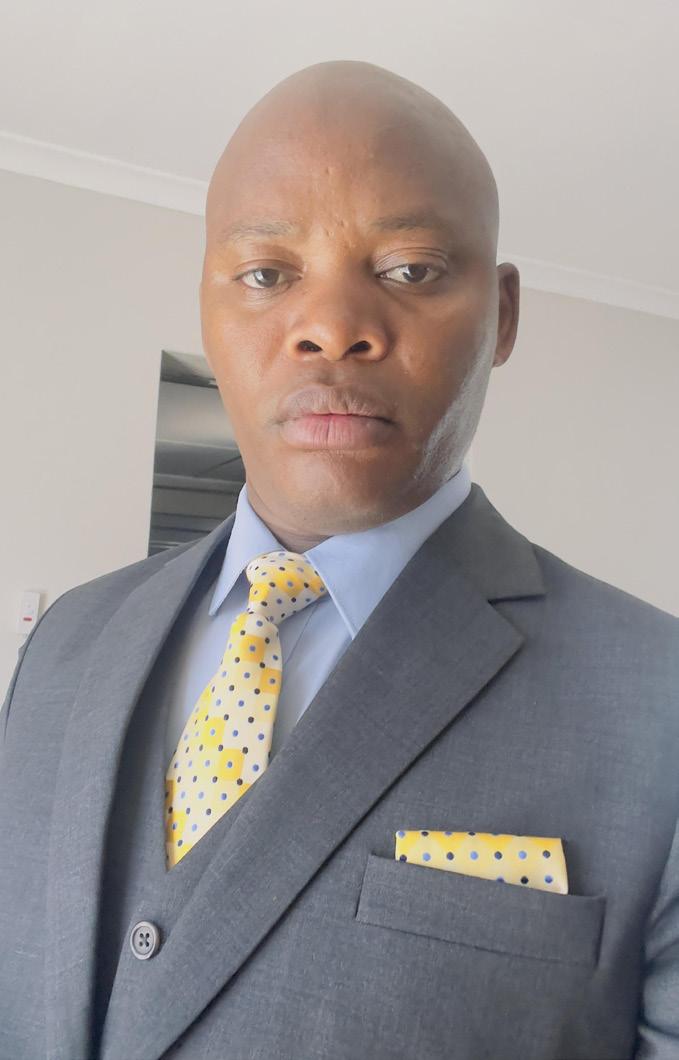
It is the company’s aim to equip young people, in particular, to address their socio-economic challenges. “What the company does is mainly to empower youth from vulnerable communities through providing an ICT accredited qualification and learnerships.”
He explains that Siseko Technologies was founded in February 2012 as a software development company, but in 2016 it branched out and started providing training and development to young people in ICT, with a specific focus on those living in rural and township areas. “Townships and rural areas have always received superficial training providers who are not interested in developing these communities,” he says. “Siseko Technologies’ purpose is to bridge the gap of the ‘digitally have-nots’ by skilling them with relevant and accredited ICT qualifications.”
Siseko Technologies currently has two branches: in Batlharos, Northern Cape, and in Khayelitsha, Western Cape. Since its inception, more than 400 young people have benefited from the company’s offerings.
Apart from the shortage of ICT skills among young people living in townships and rural areas, there is also a dearth of ICT companies that can produce digital solutions to address the challenges experienced by government, business and communities, Mayedwa believes.
The CEO has found that there are many similar companies that produce candidates skilled in ICT, but they remain jobless. “Without a doubt, our economy is unable to produce jobs for everyone, hence our ICT training programmes are coupled with an introduction to entrepreneurship,” he reveals. “It’s one thing to be an expert in ICT, but running an ICT company is something else. Our country is saturated with highly skilled individuals who are unable to operationalise their qualifications, unless they are employed by someone.
“Our mandate is not just to produce ICT champions, but persons who are able to find the means to make their ICT qualifications work for them. Our entrepreneurship course is meant to open up more opportunities for the young people. We strongly believe that entrepreneurs are the change makers, as they have the ability to create more jobs.”
Mayedwa hopes to see an increase in digital solutions produced locally so that the government and businesses do
not have to procure ICT solutions from abroad. “We have what it takes, only if we develop and build capacity with a specific focus on what we need the most. We cannot say the 4th Industrial Revolution is the future and yet we are not doing anything about it.”
Siseko Technologies is looking to partner with other industries such as agriculture, manufacturing, tourism, mining, finance and business services, among others, “because the ICT skills shortage cuts across all sectors—they all need skilled ICT personnel,” he says.
“We exist to address the challenges that face our communities. Once we master producing people with the right skills to carry out tasks, we will be able to move ahead as a country.”
For more information on courses offered, visit sisekotechnologies.co.za
Contaminants continue to flow into the sea, creeks and farmlands from many widely dispersed sources
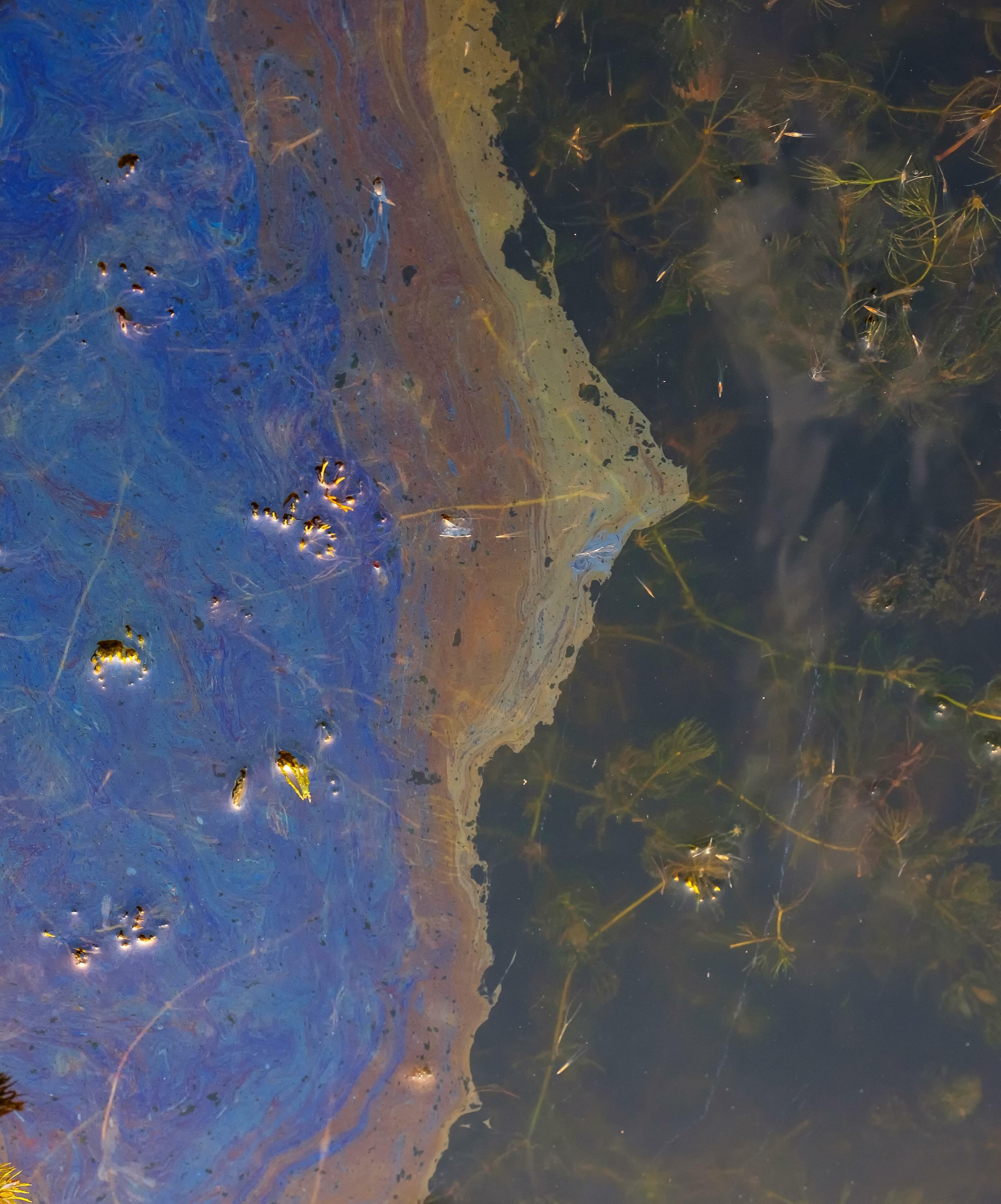

People need both clean, safe water and sustainable energy. That means both resources must be properly managed. But when it comes to the oil and gas industries, there is a problem. The water that comes out of the ground along with oil and gas during oil & gas exploration and production operations is anything but clean (bit.ly/3grc2Uf).
This wastewater, known as ‘produced water’, is often heavily contaminated with salt, oil and grease, as well as potentially dangerous compounds. Some are linked to lung, skin and bladder cancer in humans. These compounds can also harm or kill aquatic life.
So, the act of producing energy compromises another key element of human and environmental health: water. This will not change any time soon. The Produced Water Society, made up of oil & gas professionals focused on water quality, forecasts a doubling in produced water volumes globally over the next 10 years (producedwatersociety.com/ chart-data).
Adequate wastewater treatment systems are crucial to ensure produced water does less damage. Proper treatment means the water can be recycled and reused for irrigation, livestock and in other industries. In this way, it will not be entirely wasted and humans will be far safer.
There are global standards for such systems (bit.ly/3GP9drd). But in oil-rich countries in sub-Saharan Africa—such as Nigeria—there
is little to no adherence to such standards. Studies (bit.ly/3EoeEKz) show, too, that most of the treatment systems are tailor-made for the removal of a few families of compounds, in order to achieve the specific treatment objectives of each production site in this region.
In recent research (bit.ly/3URXtID), we studied samples of produced water from an oilfield in Warri, in Nigeria’s Niger Delta region. The samples were examined before and after treatment. Our findings were troubling: Dangerous compounds were present at far higher levels than permitted by global standards. The treatment process was not robust enough to filter everything out.
Oilfields produced water volumes by region (Source: Produced Water Society, 2020)
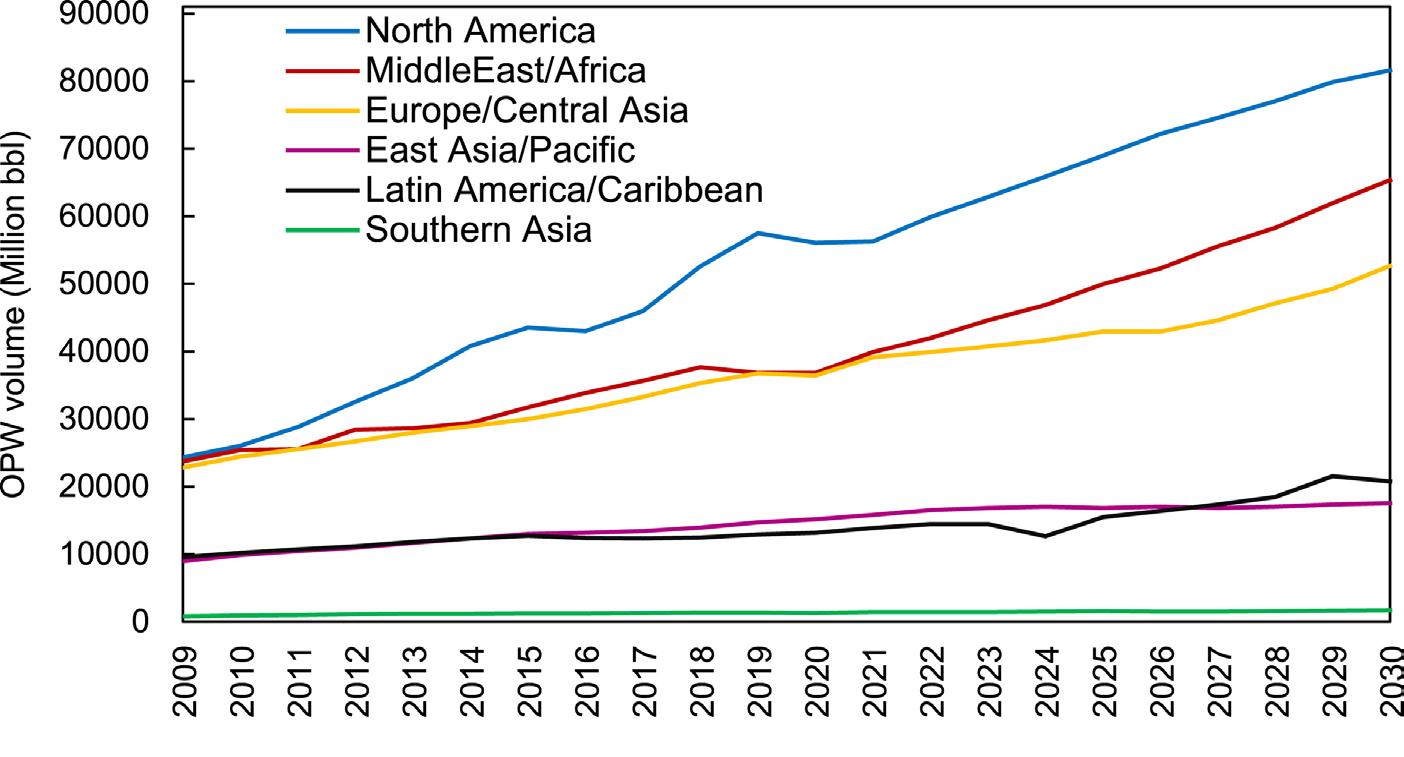
The Niger Delta region produces some 2 million barrels (320 000 cubic metres) of oil a day and has always accounted for more than 75% of Nigeria’s export earnings (bit.ly/3XkMyZC). Together, oil and natural gas extraction comprises 97% of Nigeria’s foreign exchange revenues, 80% of government’s annual revenue and 70% of budgetary expenditure.



But despite the fact that the oil industry has contributed significantly to the nation’s prosperity, the producing regions have suffered severe environmental damage. The people who live there (bit.ly/3UVSCpN) have been subjected to untold hardship through oil pollution, environmental degradation, destruction of aquatic life, and other negative activities as a result of unhealthy extraction and treatment of oilfield waste (bit.ly/3Xh2Nqv).
A number of studies (bit.ly/3Gw3czi) have reported various effects of exposure to heavy metals and organic pollutants from produced water discharge. There have been numerous anecdotal reports of health complications (bit.ly/3TVma5k) that are attributed to oil & gas operations in this region.

Most reservoirs in the Niger Delta oil fields (bit.ly/3Av2X3y) are in a mature stage of their productive life. This means they

tend to produce less oil and more water. So they could discharge more toxic contaminants into the environment, doing more ecological harm.
There are no regulatory guidelines to guarantee that an increase in produced water does not cause additional environmental and health hazards. There is also very little data available about the quality of existing produced water. Without this sort of information, it is impossible to scientifically evaluate the risks and potentially negative effects of produced water in the region. That is what prompted our research.
We took samples of untreated and treated produced water from an onshore operational production facility situated at Warri, Delta State in accordance with Environmental Guidelines and Standards for the Petroleum Industries in Nigeria (bit.ly/3EL8zJJ). Then we analysed levels of heavy metals, organic
compounds and aromatic compounds in the water.
The comparison of the concentration with allowable discharge standards showed that produced water contained several different contaminants with varying concentrations before and after treatment as a result of inadequate treatment from the treatment facility.
One worrying finding was that phenol discharge was four times greater than the globally set limit. Phenols are aromatic compounds that act as carcinogens in the human body; even at low concentrations, they can damage red blood cells and the liver. They are also potentially deadly for aquatic creatures.
Heavy metals like iron and nickel were also present in far higher quantities than global allowable limits of discharge. That poses a serious threat to the aquatic environment and agricultural resources, which in turn affects the livelihoods of people in the Niger Delta region.
Additional findings indicate the treatment technology mainly focused on just one group of hazardous components and was specific to each production site.
Operational discharges from the oilfield remain a public concern because contaminants continue to flow into the sea, creeks and farmlands from many widely dispersed sources.
The solution in the Niger Delta region could be to apply integrated water treatment processes that address a variety of pollutants.
Environmental bodies should collaborate, as they do in the North Sea and the Gulf of Mexico, to ensure produced water in Nigeria is properly managed.
Kingsley Amakiri Postdoctoral Fellow Chemical Engineering University of Huddersfield
Energy-intensive industries, such as the mining and minerals sector, are under pressure from governments, investors and society to reduce carbon emissions even as demand for these minerals grows. With most industry players committed to achieve net-zero emissions by 2050, it is crucial that the mining industry is very deliberate about how it meets the energy needs for its operations, and how it decarbonises.
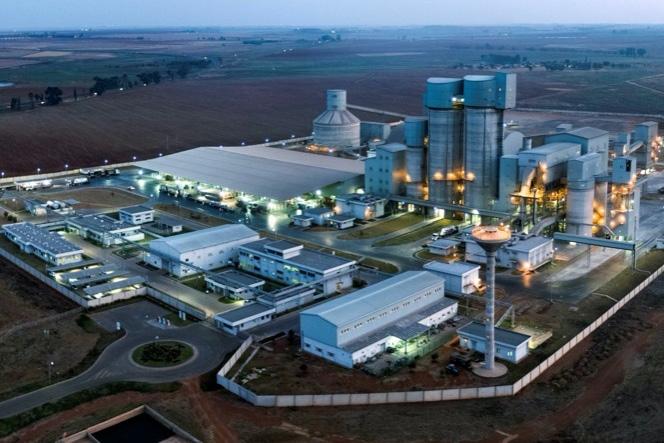













GE Gas Power executive

Oluwatoyin Abegunde says, “The complementary strength of gas and renewables plays a critical role in delivering lower carbon, and more reliable electrical power generation. As subSaharan Africa balances the need for more access to power, along with the push toward more sustainable energy sources, the accelerated and strategic deployment of renewables and gas power together can reduce carbon emissions quickly.”
GE has been collaborating with energy stakeholders to deploy innovative technologies tailored to respond to the needs of the mining sector. In Botswana, GE gas turbines are providing Orapa diamond mines’ 90MW turbine power plant facility with reliable power, as well as supplementing the country’s energy needs. In Nigeria, GE’s gas turbine technology is supporting Dangote Cement in Obajana, located in north-central Nigeria, to reduce unplanned downtime, improve operational efficiency and become energy self-sufficient.
“Adding renewables as quickly as Africa can afford to, while also switching significant coal or diesel generation to gas, will be required to help address climate change
with the required pace and scale,” adds Abegunde. “In Africa, where historically diesel and heavy fuel oil (HFO) have dominated the power-generation landscape, GE’s technology offers a reliable, costeffective and sustainable pathway for reducing carbon emissions for industry players in the mining and metals, plastic, paper and pulp,
and chemicals industries, among others.”
The mining industry is keenly focused on sustainability goals, and it is imperative that the power-generation industry achieves that objective. That means, in part, lowering reliance on carbon-heavy fuels like coal, diesel and HFO.

The accelerated and strategic deployment of renewables and gas power together can reduce carbon emissions quickly

As one of the world’s largest manufacturers and suppliers of gas turbine technology, GE Gas Power offers a wide array of equipment options and models to help meet the most challenging energy requirements. Thermal hybrids solutions, for example, improve energy security, reliability and sustainability for captive power generation for industries including mines.
Thermal hybrid applications, involving the interfaced operation
of a thermal asset with a renewable and/or an energy storage asset, are expanding the possibilities of electricity generation. GE’s aeroderivative gas turbines are the ideal solution for mining operations, as they are lightweight with a smaller footprint and with lower carbon emissions, high cycle elasticity and shorter downtime than competing technologies. Aeroderivative gas turbines can also be used in thermal hybrids for a variety of industrial applications like mining and metals.
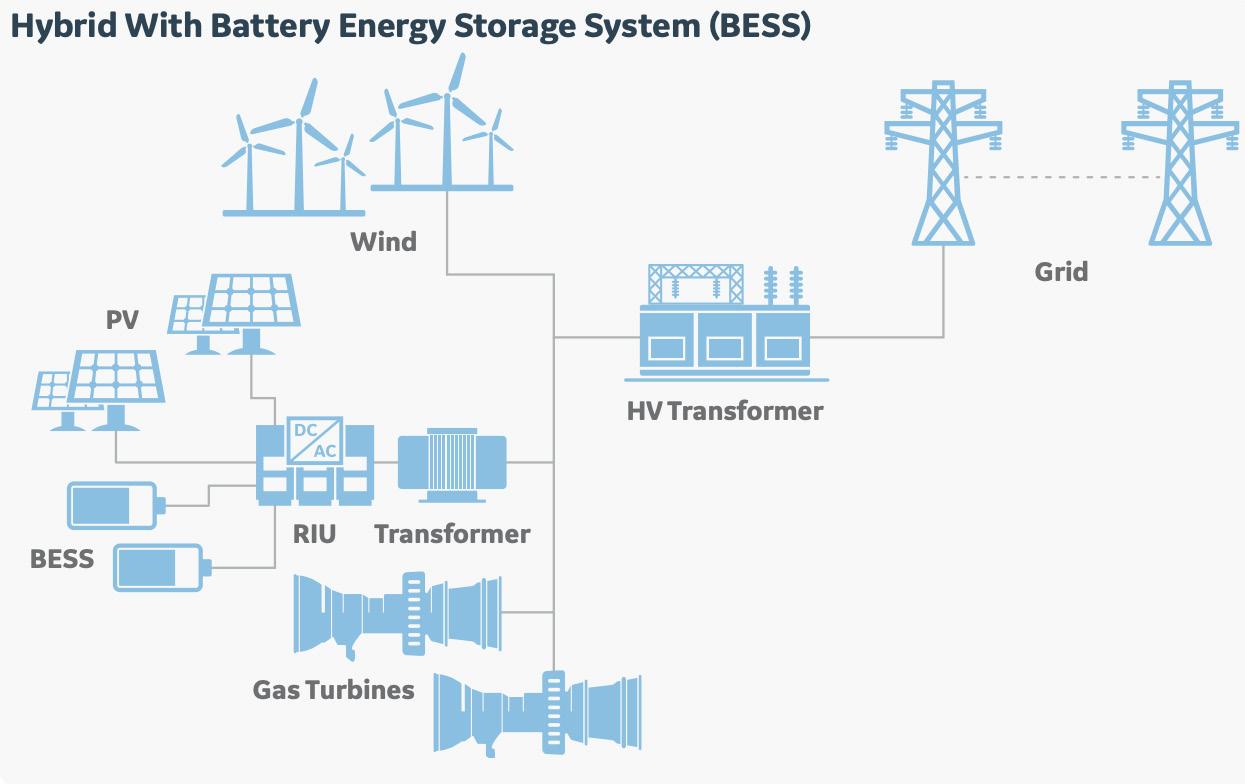
Abegunde notes that GE is a leader in combustion technology. GE’s gas turbines can operate on a wide variety of gas and liquid fuels. Gaseous fuels include natural gas, liquefied natural gas, flare gases, lean methane, refinery gases, as well as ethane, propane and other higher molecular weight hydrocarbons i.e. natural gas liquids and liquid petroleum gas. Liquid fuels include diesel (also known as light distillate or diesel fuel oil), biodiesel, condensates, crude oils and heavy/ residual fuel oils.
To learn more and download GE’s Thermal Hybrids brochure, visit invent.ge/3PkV0UH
GE Gas Powerwww.ge.com
It is crucial that the mining industry is very deliberate about how it meets the energy needs for its operations






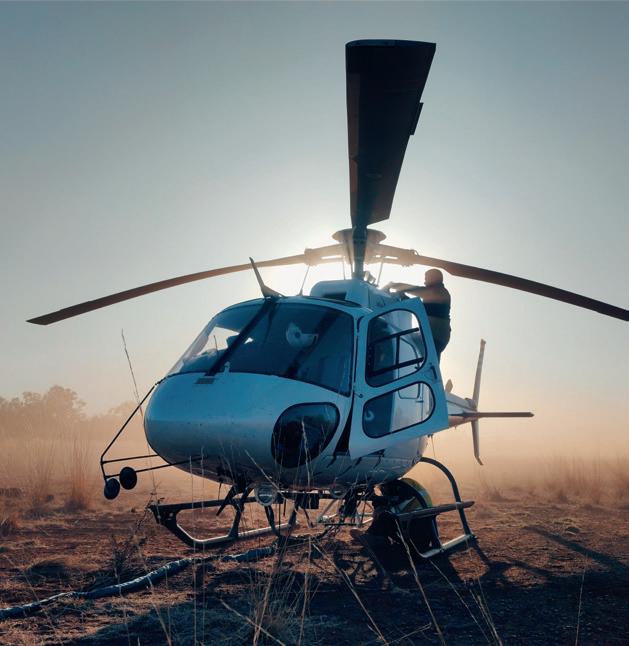


Xcalibur Multiphysics is the world leader in airborne geophysics. It focuses on the mapping of natural resources, including minerals, oil & gas, water, and energy sources, including geothermal and hydrogen. Its main clients are governments, public agencies, and Major and Junior mining, oil, energy, and environmental companies.

Xcalibur has permanent presence in Spain, Switzerland, The Netherlands, South Africa, The Democratic Republic of Congo, Australia, Canada, United States, Colombia, Brazil, the United Arab Emirates, and Kazakhstan. Recently, Xcalibur acquired a majority participation in McPhar International Limited, a reference in the airborne geophysics survey market in India. This reflects Xcalibur’s continued geographic expansion, and its entry into a strategic high growth potential market.
The Group carries more than 100 years of accumulated experience, over 50-million-line kilometers flown, and more than 1,000 projects executed around the world. It currently owns 30 aircraft, 85 geophysical systems and an extensive portfolio of proprietary patents. With active projects in Colombia, Brazil, Canada, USA, Spain, Portugal, Finland, Australia, Saudi Arabia, India, Japan, Kazakhstan, Nigeria, Democratic Republic of Congo, Republic of the Congo, Angola, South Africa, Tanzania, Botswana and Uganda, the Group's purpose is to accelerate the energy transition, helping its clients to make more efficient and sustainable decisions to discover their growth potential.
Xcalibur aims to contribute to the circular economy and the protection of biodiversity, focusing solely on high-interest areas of natural resources to lower the environmental impact. To do this, it is crucial to understand the role of critical minerals within the energy transition and invest efforts into responsible mining. Additionally, Xcalibur has partnered with Monte, a company focused on delivering zero-emission aircraft and retro-fitting existing aircraft with electric, hybrid or hydrogen propulsion technologies, to transition its full fleet of aircraft engines as soon as the technology is available and robust. The Group is also working on a carbon neutral footprint plan in its operations through renewable energy sources.
From a social perspective, in October 2021 Xcalibur Multiphysics founded Xcalibur Foundation with the objective of giving something back to the countries and communities where Xcalibur has active projects. The Foundation, with HQ in Spain, develops national and international socioeducational programmes for vulnerable children, youth, and women, with the goal of promoting and improving education standards in those regions, using sport, training and culture, as motivational tools. The Foundation’s first social sports project was launched in June 2022 in Kampala, Uganda, in collaboration with Real Madrid Foundation and MTN Uganda.
Xcalibur’s service portfolio is now the largest available in the market, including advanced technologies for Magnetics and Radiometry, Gravity and Conventional Gravity Gradiometry, and Electromagnetics, all supported on fixed-wing and helicopter platforms. We also offer Marine Gravity and Magnetics, specialised modeling software for the oil and gas industry, GIS remote sensing, and data interpretation services.
· Airborne Magnetics and Radiometrics (MagRad) ·
Airborne magnetic surveys are a quick and cost-effective method of measuring the variations in the strength of the Earth’s magnetic field. Airborne radiometric surveys measure the gamma-ray radiation of the near-surface superficial geology and are often flown in combination with airborne magnetic surveys.
· Airborne Gravity Gradiometry ·
(AGG) FALCON AGG technology is specifically designed to measure the gravity field with high accuracy and very high spatial resolution in a dynamic airborne environment.
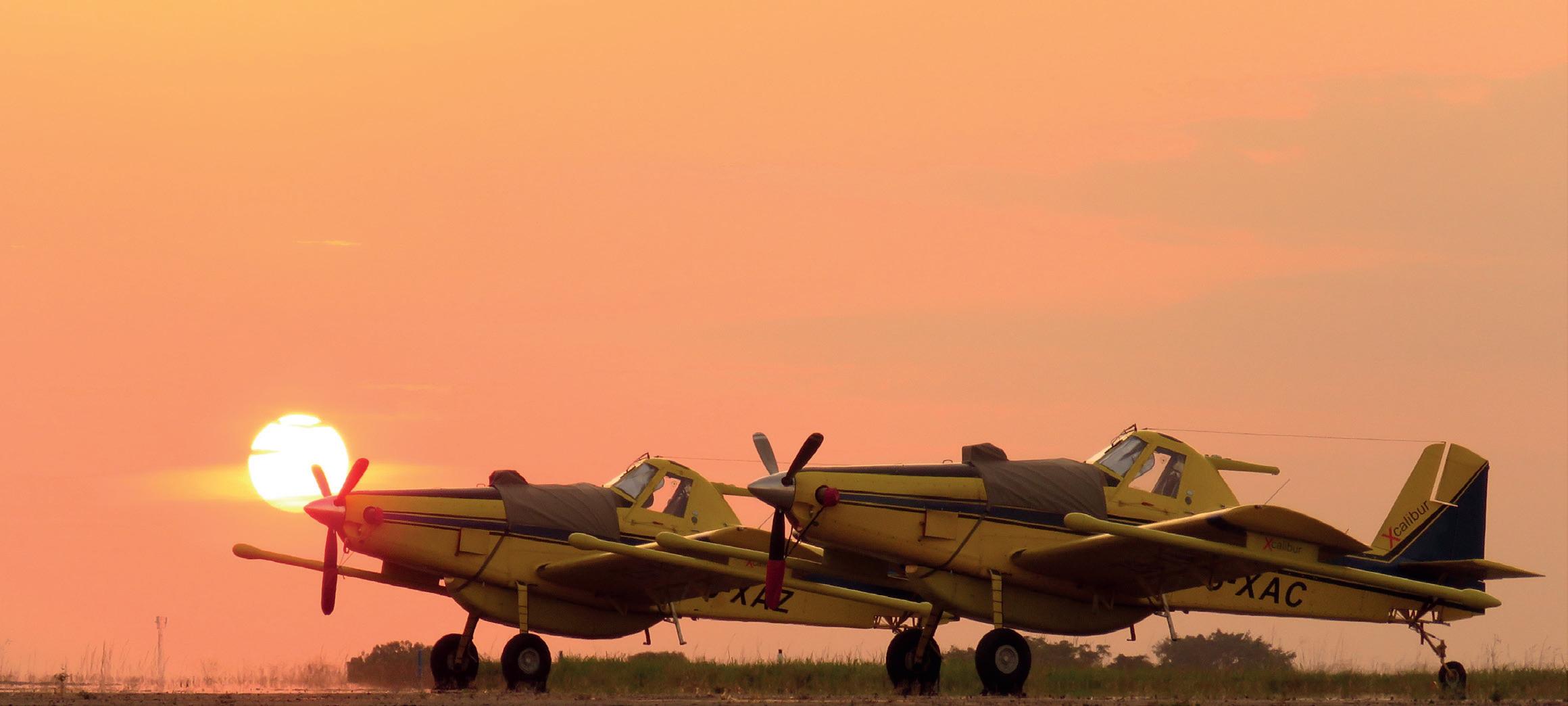
· Airborne Electromagnetics (AEM) ·
AEM surveys are extensively used to image the conductivity of the earth in 3D to assist with a wide range of applications from the ground to several hundred meters below the surface.
· Conventional Airborne Gravity (AG) ·
Airborne Gravity surveys are used either stand-alone or in combination with other technologies to map the variations of the rock densities and also identify the location and size of major structures.
· Marine Gravity and Magnetics (GravMag) ·
Marine Gravity and Magnetic data are acquired in combination with seismic surveys for Oil & Gas exploration from regional scale basin-wide to targeted prospect scale studies.
· Value-added Software and Other Services ·
Our vast experience is applied to routine data processing as well as value-added data management and interpretation services

Gold, diamonds and other mined resources have long powered South Africa’s economy. But its true wealth can be found in the small businesses that supply these sectors and will help us fuel a just transition to a carbonresilient future.
Minerals and energy are major contributors to South Africa’s economy. They have been a lifeline as of late, holding the line against COVID-19’s economic force as global demand for the country’s precious mineral resources and
commodities increased in the last two years. But with the climate crisis bearing down on the world, a shifting employment landscape in the mining sector, and South Africa’s energy sector rolling toward reform, change is literally in the air.
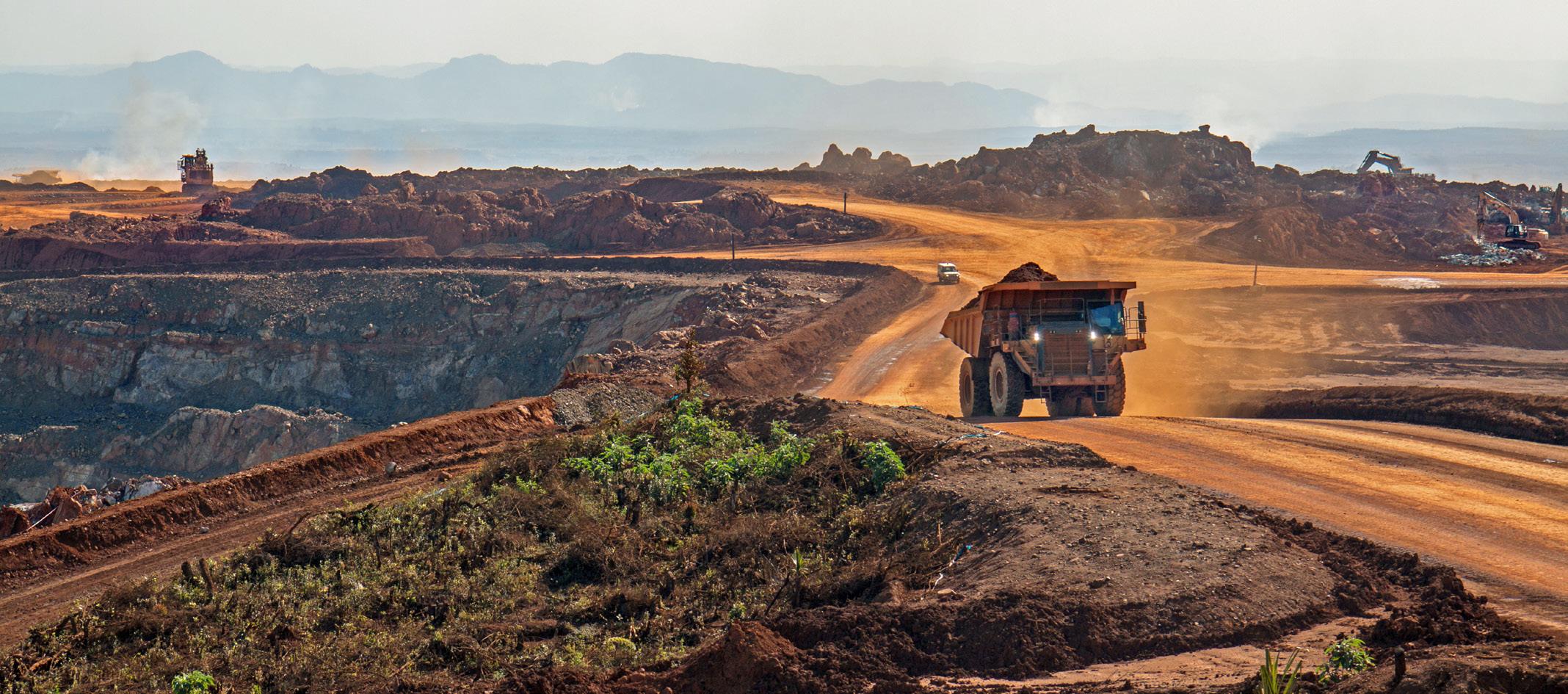
The answers to navigating these changes are not found deep in the ground but in the people who fuel our micro, small and medium-sized enterprise (MSME) businesses and supply services to these sectors.
Adapting industry to address climate disruptions presents a
significant challenge on its own. In November 2021, as part of COP 26, the governments of South Africa, France, Germany, the United Kingdom and the United States, along with the European Union announced the “Just Energy Transition Partnership to support South Africa’s decarbonisation efforts” with an initial commitment of $8.5 billion to “prevent up to 1 to 1.5 gigatonnes of emissions over the next 20 years and support South Africa to move away from coal and to accelerate its transition to a low-emission, climate-resilient economy.”
South Africa’s Department of Mineral Resources and Energy is also focused on accelerating a just transition and, in compliance with the Mining Charter, keeping social and labour objectives in mind.
WHY CONDITION MONITORING

• Condition monitoring techniques helps to detect failures at early stages during operation
• Extend the P-F interval and enable maintenance to be scheduled and operational costs reduced
SYSTEM ARCHITECTURE
The efficiency of mining operations depends considerably on the reliability of the equipment, especially vibrating screens and feeders which fulfils crucial roles in processing operations.
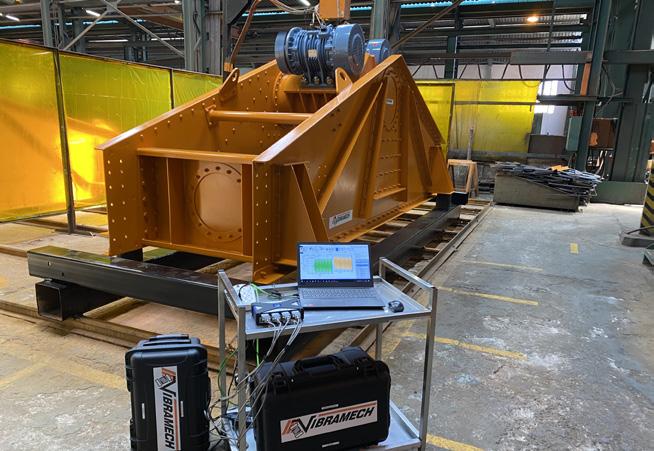
The mineral processing industry has ever increasing requirements for enhanced reliability, safety, and production capability. Destructive downtimes need to be avoided or minimized, at all costs.
Therefore, Condition-Based Maintenance (CBM) is a very good solution, and an important strategy for ensuring continued production and dealing with downtime risks, by detecting early signs of failure and allowing for preventative maintenance.
VIBRASURE® SOLUTION
Vibrasure® wireless condition monitoring system uses the most advanced technologies to continuously monitor the performance of vibrating equipment. The 3D motion of the screen body is constantly monitored by dedicated structural sensors, along with the bearing condition of the drive system by dedicated bearing sensors.
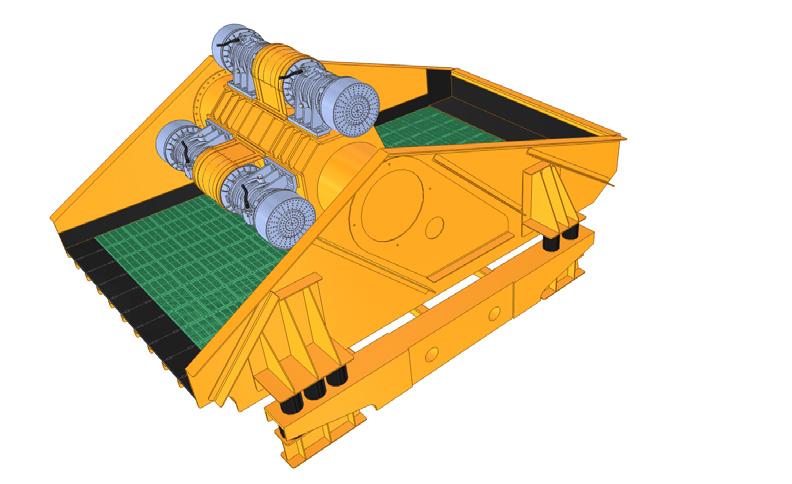
As a result, Vibramech is able to provide a reliable source of information about the health of its equipment.
VIBRASURE® WIRELESS BEARING SENSORS
VIBRASURE® WIRELESS SENSORS
• IP69K integrated tri-axial vibration and temperature sensors designed to operate in the harshest conditions
• All sensors use Smart Wake to recognise when your machine is running
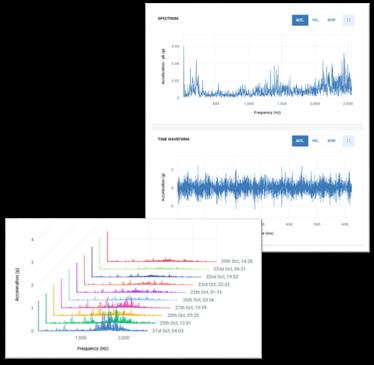
• Uninterrupted monitoring from 2G up to 16G

• Long-life integral battery
CLOUD-BASED DATA MANAGEMENT
• Provides a clean interface from which to view the data generated from our sensor range
• Access from any device
• Automatic alarm levels ensure your equipment is covered
Website: www.vibramechglobal.com
Email: vibramech@vibramech.co.za
Phone: +27 11 762 5501
Achieving a transition to a low-emission climate-resilient economy and transforming the mining and energy sectors will not be easy. However, it is critical to South Africa’s economy and our ecosystem that we do so—and the move toward diversification presents many opportunities. With coal representing over 70% of South Africa’s total mass of minerals produced and more than 500 000 people employed in the mining industry alone, preparing the energy and mining sectors for the next chapter begins now.
That is why Zevoli Growth Partners and the African Management Institute (AMI) have partnered to deliver a comprehensive supplier diversity programme: MSME Future Forge. It is a tailored programme specifically for early-stage and growth businesses looking to become procurement partners for mining houses. It will focus on preparing and diversifying the MSMEs that supply the mining and energy sectors with critical business skills and help position
them for the next generation of opportunities.
“While we provide the participating MSMEs with the business development support they need to become procurement-ready, we also leverage partners like AMI for the learning and development component to co-create programmes and implement them on behalf of our mining clients,” says Zevoli Growth Partners cofounder and managing director, Mpopi Khupe.

Developing a diverse range of suppliers in energy and mining is also critical to moving rural communities away from the single-industry dependency trap, where a single dominant industry has left many MSMEs caught in a trap of survival. This move cannot happen if large mining organisations continue to afford the strategic opportunities to the same handful of preferred suppliers, leaving smaller businesses to continue eking out a living on low-risk and often low-value opportunities. All too
often, MSMEs are passed over for supplier opportunities because of a cited lack of ability to meet procurement requirements.



“For mining corporates, there is the tangible benefit of being able to proactively communicate their requirements from a supply chain localisation, compliance and technical capability perspective. This applies to any business with which a mining corporate wants to work: They want to know that, operationally, an MSME is running safely, efficiently and sustainably to enter into a medium- to longterm contract. There can’t be a risk of an MSME not being able to sustainably deliver on the contract,” says Khupe.
“From the MSME’s side, there often isn’t an understanding of the hurdles they need to overcome to establish and sustain a working relationship with mining corporates. So when MSMEs are afforded the opportunity, it’s critical that they are provided with the support to be able to deliver and continuously improve their service delivery.”

All too often, MSMEs are passed over for supplier opportunities because of a cited lack of ability to meet procurement requirements.
































She adds that the MSME Future Forge programme ensures Zevoli Growth Partners properly understands the mining corporate’s needs and ensures they enable MSMEs to meet those needs before a procurement relationship is established.
Zevoli Growth Partners and AMI’s programmes have already helped MSMEs grow their capacity, establish procurement relationships with sponsoring mining houses, increase revenue, create jobs and improve supply chains. In 2021 alone, MSMEs supported by AMI programmes grew on average by 35% and created four new jobs each.
Rebecca Harrison, CEO at AMI, says the company’s unique practical learning approach enables businesses to immediately implement tools and practices for improved resilience
and growth. “AMI’s learning programmes provide busy business owners with practical tools, templates and resources that can be downloaded on-thego and immediately implemented in the business, which leads to very tangible businesses impact.”
As corporates prepare for change and diversify their suppliers, MSME Future Forge will help South Africa’s leading mining houses address the disconnect between their procurement requirements and the expectations of MSMEs that seek to become providers, but often are not able to meet procurement criteria. The partners hope to offer this programme also in the energy sector in the near future.
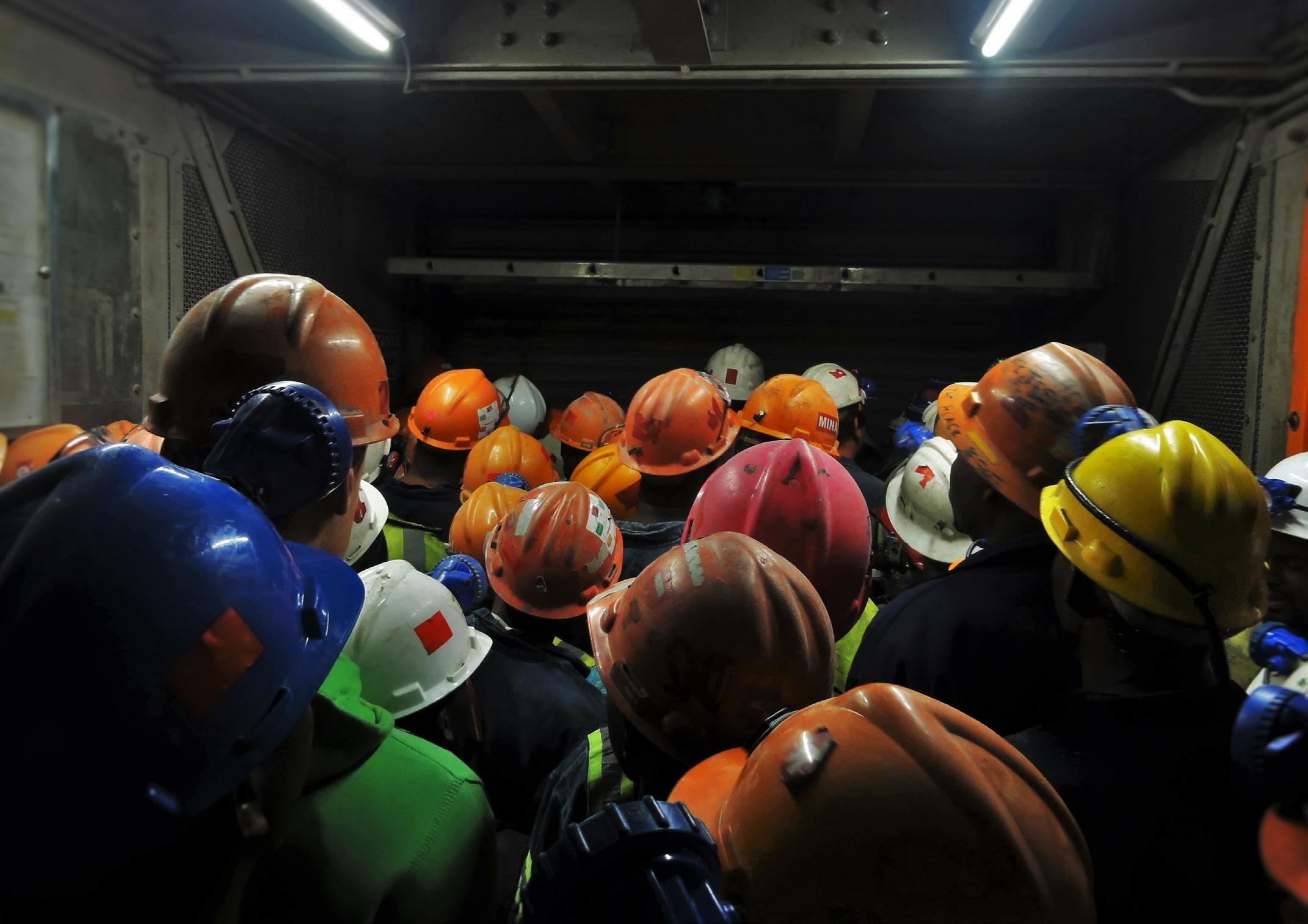
To date, close to 100 MSMEs have completed the 10-month MSME Future Forge development programme, which is made
up of three main components: mentorship and coaching; learning and development; as well as industry-specific compliance and tools and systems. Khupe notes that following the completion of the programme, most of the participating MSMEs were able to establish work and procurement relationships with the mining houses that sponsored the programmes, with some even doubling their revenue and hiring more people.
South Africa’s mining and energy sectors face a seismic shift. To keep our economy and our communities agile in the face of change, we must forge a stronger backbone and invest in South Africa’s MSMEs through skills and training.
For more information on MSME Future Forge, visit www.zevoligp.com.
We must forge a stronger backbone and invest in South Africa’s MSMEs through skills and training.
HELPING YOU TAKE EXPOSURE SCIENCE TO THE NEXT LEVEL








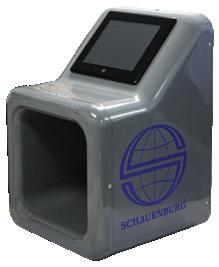

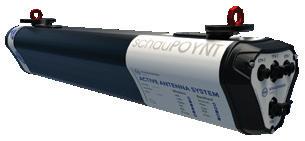






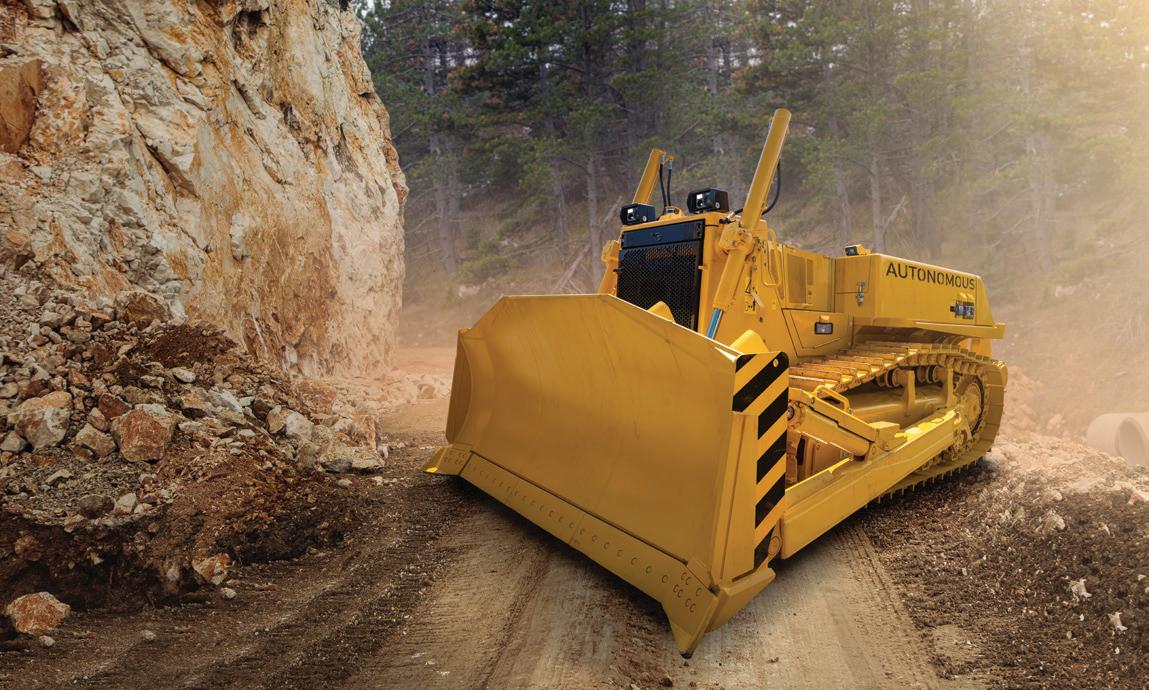


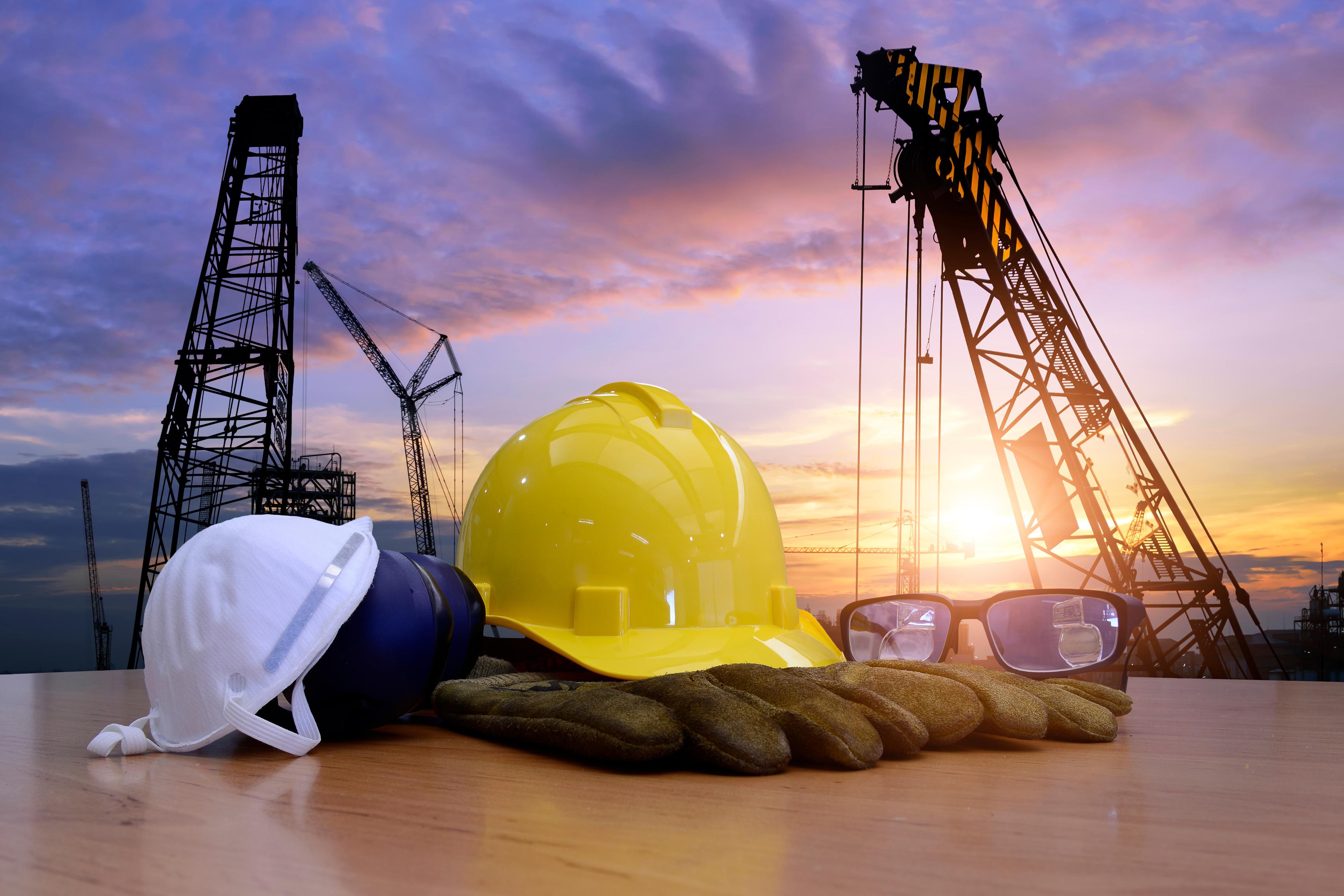


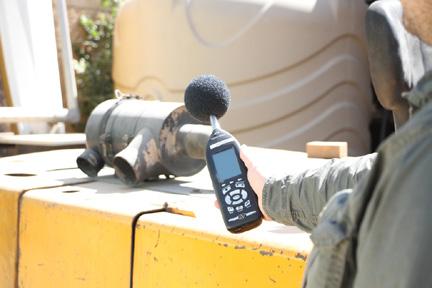
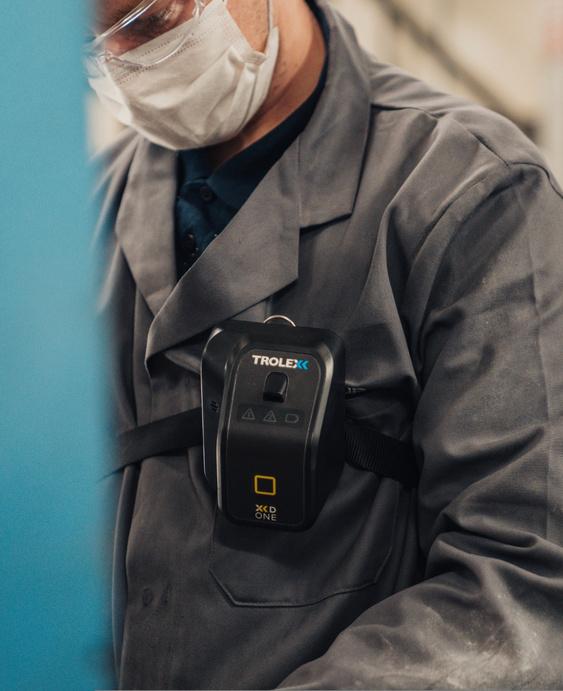

S E D U L I T A S i s p r o u d t o p a r t n e r w i t h W o r l d - C l a s s I S O C o m p l i a n t M a n u f a c t u r e r s t o d i s t r i b u t e t o p o f t h e r a n g e r e a l - t i m e a n d n e a r r e a lt i m e m o n i t o r i n g W e o f f e r t a i l o r m a d e s o l u t i o n s t o h e l p c l i e n t s i n a n y i n d u s t r y u n d e r s t a n d t h e w o r k p l a c e r i s k s t h e y f a c e .
S E D U L I T A S o f f e r s c o m p r e h e n s i v e t r a i n i n g a n d i n s t r u c t i o n o n a l l e q u i p m e n t s u p p l i e d a n d s o l d
Namibia, as an upcoming hydrocarbon producer, and Equatorial Guinea, as one of Africa’s top natural gas producers, have taken the lead toward positioning Africa as a globally competitive oil and gas producer—leveraging intra-African partnerships and co-operation to scale up the local workforce.
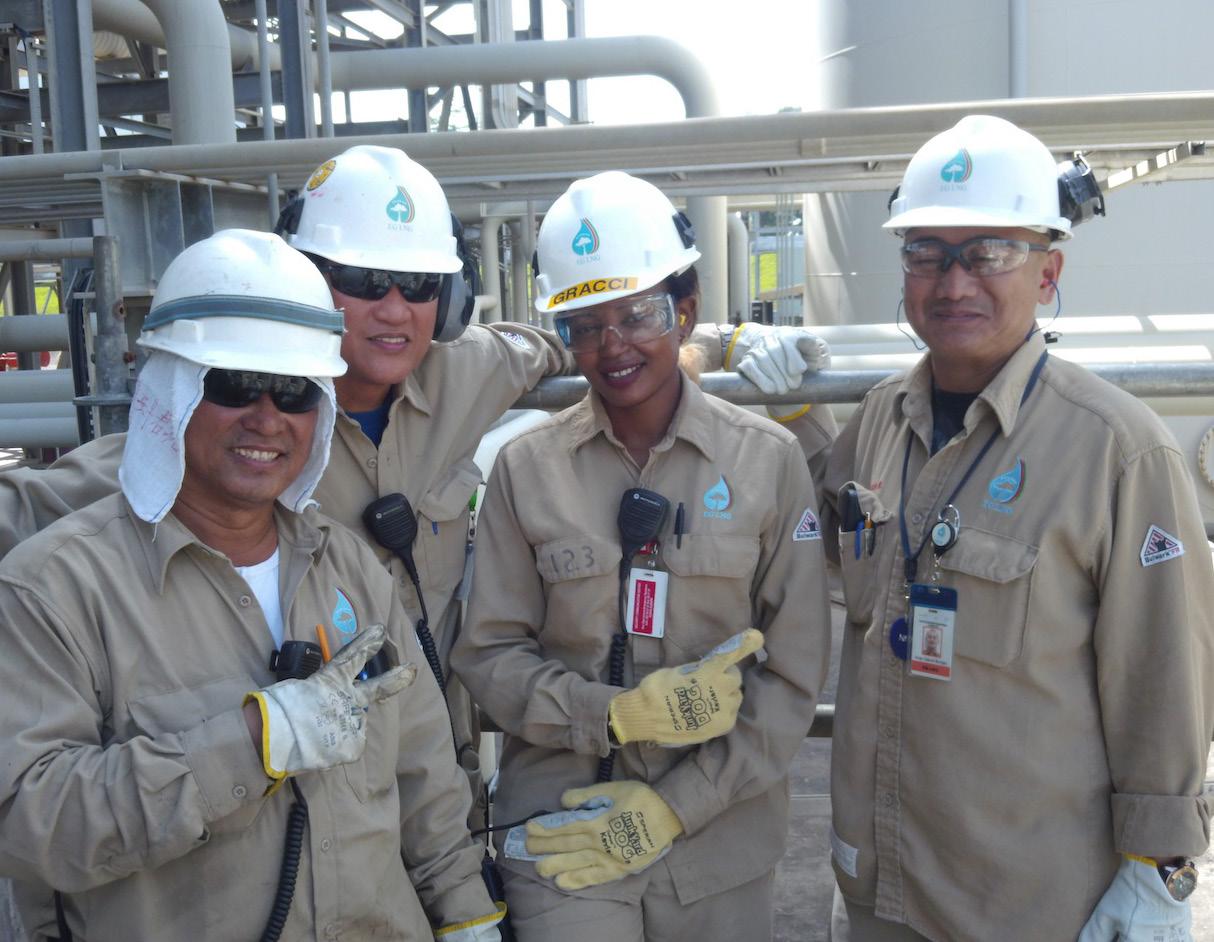
Following sizable oil and gas discoveries made in Namibia last year, the two countries forged an agreement during the Namibian International Energy Conference (NIEC) 2022 that saw four Namibian engineers receive training at the Equatorial Guinea
Liquefied Natural Gas (EG LNG) facility. This programme has been significant, both for Namibia’s future oil and gas industry and for Africa’s energy sector at large, and the African Energy Chamber (AEC) commends both countries on this bold initiative.
During the NIEC 2022, Tom Alweendo, Namibia’s Minister of Mines and Energy, announced the training partnership along with Gabriel Mbaga Obiang Lima, Equatorial Guinea’s Minister of Mines and Hydrocarbons. Alweendo visited Equatorial Guinea and worked with his counterpart to kick off the training of Namibians.
A youth training
by Namibia and Equatorial Guinea has set the tone for an ambitious local content drive


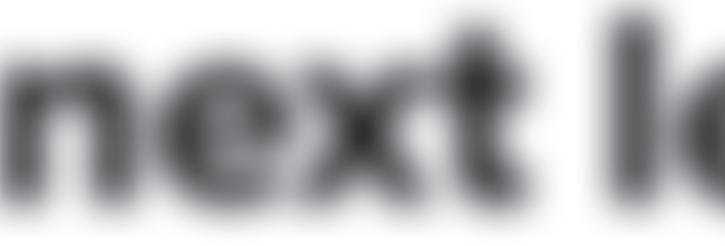



























Bell Equipment is purposefully agnostic - this approach takes our Bell ADTs to a whole new level of safety by allowing our customers to fit their trucks with a third-party PEDESTRIAN DETECTION SYSTEM (PDS) and/or COLLISION AVOIDANCE SYSTEM (CAS) of their choice.


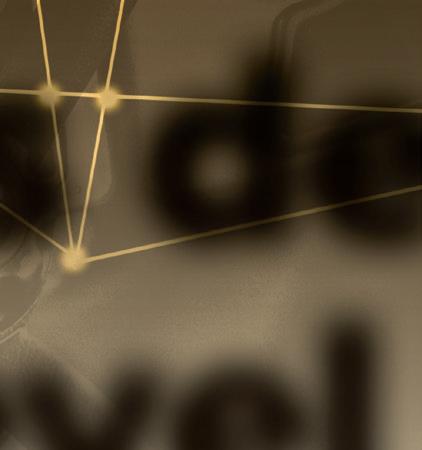

























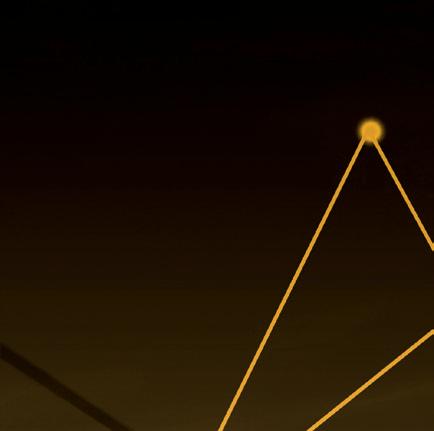
Both systems are designed to prevent injury and possible loss of life during the operation of mining vehicles near mining personnel. PDS improves the operator’s awareness by detecting potential collision threats and warning the operator visually and audibly. CAS physically intervenes by either slowing a vehicle down or stopping it to prevent, or at least reduce, the severity of collisions between equipped vehicles and equipped pedestrians.
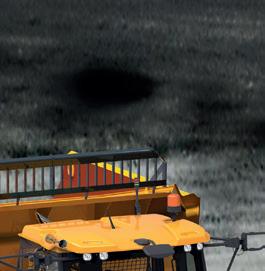
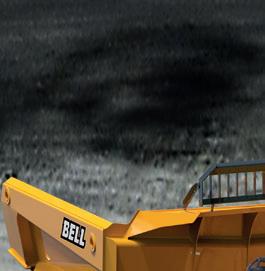
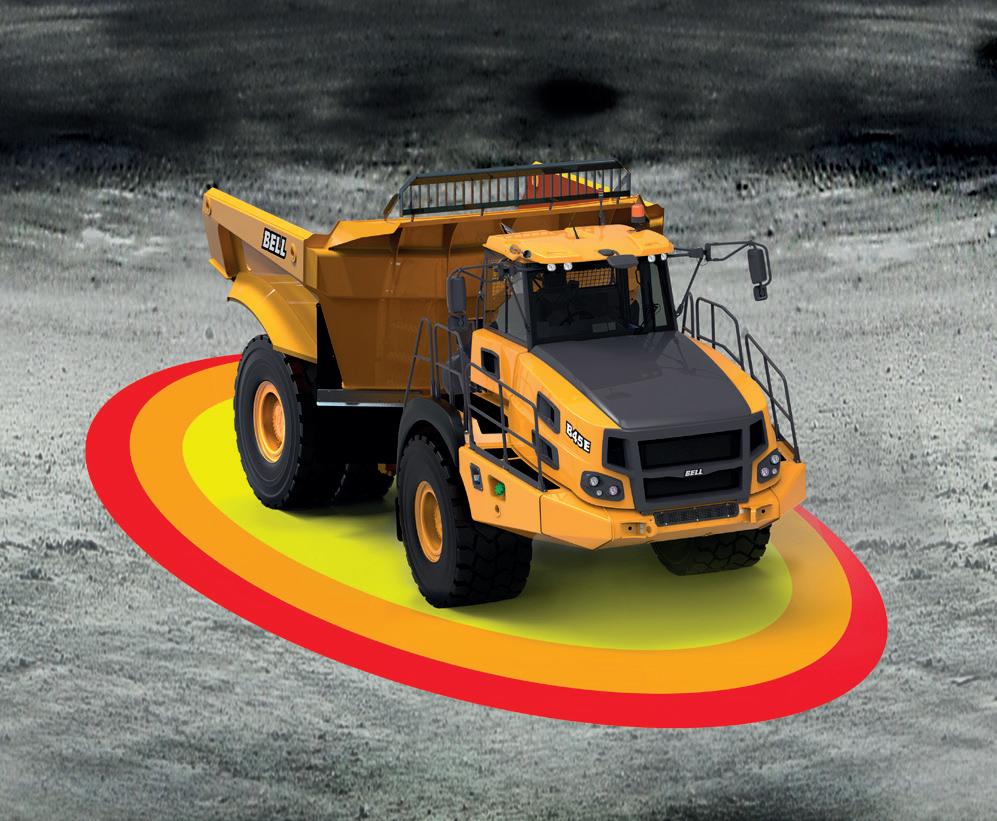



To date, four Namibian engineers have received training at EG LNG, owned by Marathon Oil, Chevron and the Equatorial Guinean government. In addition to receiving exploration and production training at the facility, the engineers were trained at the associated Methanol Facility and the Turbo Gas Facility at the Punta Europa Complex.
The Namibian engineers also received training on various operational matters from British independent Trident Energy, known for operational efficiency and production improvements. Trident is the operator of Block G, which includes the producing Ceiba and Okume Complex fields, made up of six oil fields in the Gulf of Guinea in shallow and deep water in the Rio Muni basin.
This training has not only signalled a new era of intraAfrican energy collaboration and partnerships, but has opened up significant opportunities for Namibia to position itself as a globally competitive oil producer on the back of south-south co-operation.
With both countries having placed local content at the centre of their developmental strategies, this training initiative marks the start of a new era of hydrocarbon growth in Africa on the back of co-operation and collaboration.
Long-term, Equatorial Guinea is committed to establishing itself as a regional energy hub, leveraging ambitious local content initiatives to develop a strong and competitive hydrocarbon market in-country.
Similarly, Namibia, at the start of its hydrocarbon journey, has recognised the role local content will play in making energy poverty history while kick-starting industrialisation and economic prosperity. As such, the country has introduced proactive local content policies, with the Equatorial Guinean training initiative only furthering this agenda.
“It is good to see energy companies in Equatorial Guinea
taking the lead in the training and development of Namibian youth. EG LNG, Trident Energy, Chevron and Marathon Oil should be given huge credit, incentive and encouraged to do more. It is important for young Africans. Energy companies are our partners, and we must support them as we push for Namibian energy growth,” stated NJ Ayuk, executive chairperson at the AEC.
The training initiative followed Shell’s Graff-1 discovery and TotalEnergies’ Venus discovery made merely weeks apart in February 2022, unlocking up to four billion barrels of recoverable reserves combined. The discoveries were significant, with their associated developments set to double Namibia’s gross domestic product by 2040. Shortly thereafter, the country took a proactive approach to get advanced training from American and regional firms, with the government eager to bring these projects online as soon as possible. In this scenario, Equatorial Guinea emerged as the obvious partner, with the country hosting a suite of global energy majors and large-scale hydrocarbon developments alike.
Owing to sizeable domestic oil and gas reserves, as well as an accelerated drive by the government to monetise regional untapped reserves, Equatorial Guinea has put in motion a series of large-scale projects such as the Punta Europa LNG Terminal —comprising Train 1, producing 3.7 million tonnes per annum (mtpa)
of liquefied natural gas, and Train 2, set to produce up to 4.4 mtpa once completed—the wider Punta Europa Gas Complex comprising Methanol and Turbo Gas Facilities, as well as the Central African Pipeline System. These projects have enabled the country to export gas worldwide, with Equatorial Guinea serving as a key supplier of gas to Europe in the ongoing gas crisis.
In this scenario, companies such as Marathon Oil, Sonagas, ExxonMobil and Panoro have been key, and offer Namibia unparalleled insight into developing and operating large-scale projects.
“What Minister Alweendo and Obiang Lima have done should be commended. They have demonstrated the role that intraAfrican energy co-operation will play in Africa’s energy future,” said Ayuk. “Equatorial Guinea, with its expertise as an oil and gas player, offers Namibia the knowledge and training that the country needs to develop a thriving domestic oil and gas industry. Through this training initiative, both countries have prioritised local content, developing the local industry and getting young people ready to lead oil & gas exploration and production.
“At the AEC, we are proud to see what Namibia and Equatorial Guinea are doing and want to see more African states following suit,” he concluded.
 African Energy Week aecweek.com
African Energy Week aecweek.com



The global gas markets are interconnected. As the recently released report from the African Energy Chamber (AEC), “The State of African Energy: 2023 Outlook” (bit.ly/3NbQLtD), notes, just how closely they are linked becomes more apparent—and more important—during times of strife, such as the war in Ukraine.
Before invading Ukraine, Russia expected to increase its gas production by 800 billion cubic metres (bcm) by 2030, both to expand its presence in the Chinese market and to maintain its European market share. But just as Russia did not consider the possibility of a protracted conflict with Ukraine, it seems it neither predicted the response across Europe: Many customers expressed their outrage by cutting their imports of Russian natural gas.
The significant drop in export volumes to Europe is taking a substantial bite out of Russian revenues, which in turn means that some projects—like developing huge gas condensate resources in east Siberia and the Yamal Peninsula—will be delayed by at least three to four years. The AEC’s latest estimates see Russia’s average production loss at around 140 bcm per year between 2022 and 2030.
As Russian output decreases, global volumes of natural gas are expected to fall in the short term, despite additional production in North America.
Prior to 2022, global natural gas volumes were expected to rise marginally higher. But since the invasion of Ukraine, the AEC report indicates a 150 bcm decrease for 2022 and anticipates a 165 bcm decrease in 2023.
The decline over the medium term is even more striking: The average drop in global output between 2022 and 2030 is estimated to exceed 200 bcm per year.
Because of Russia’s dominance in the oil and gas industry, we will all feel the effects of its decreased production. The resulting squeeze on the global liquefied natural gas (LNG) market likely will continue to push natural gas prices higher around the world.
Micropilot FMR6x: The 80 GHz radar with Heartbeat Technology takes the pulse of your plant and increases productivity.













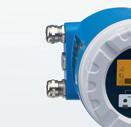





































Promag 55 S: The electromagnetic flowmeter provides high abrasion resistance and integrated solids content diagnostics.













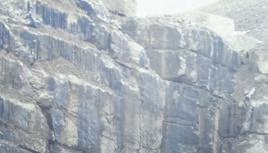




As Russian output decreases, global volumes of natural gas are expected to fall in the short term, despite additional production in North America.
Prior to 2022, global natural gas volumes were expected to rise marginally higher. But since the invasion of Ukraine, the AEC report indicates a 150 bcm decrease for 2022 and anticipates a 165 bcm decrease in 2023.
The decline over the medium term is even more striking: The average drop in global output between 2022 and 2030 is estimated to exceed 200 bcm per year.
Because of Russia’s dominance in the oil and gas industry, we will all feel the effects of its decreased production. The resulting squeeze on the global liquefied natural gas (LNG) market likely will continue to push natural gas prices higher around the world.
What’s more, Europe’s attempt to wean itself from Russian gas has put it in a precarious situation. The region still needs huge volumes of LNG imports to fulfil its substantial energy needs. The chamber’s report anticipates Europe’s LNG demand to increase by 20 to 40 million tonnes per annum (mtpa) through 2030. Europe, wisely, has been considering multiple strategies to replace the gas it had been receiving from Russia, including more imports from Africa.
We expect to see Algeria, Egypt and Nigeria leading African gas and LNG flows to Europe. This seems like a natural progression. After all, as Africa’s largest energy producers, they already supply some natural gas to Europe and have enough capacity to increase production within the next few years.
While our report expects to see Africa’s overall natural gas production dip through 2025, LNG exports are expected to pick up in short term in response to Europe’s need. Algeria, for one, is already supplying fuel directly to Spain and Italy through two pipelines across the floor of the Mediterranean Sea. And with overall gas liquefaction capacity of about 75.3 mtpa, this activity could help solve Europe’s energy crunch in the medium term.
A few other African countries are pursuing some exciting longterm natural gas developments that seem fit to help Europe free itself from its dependence on Russian gas:
• Tanzania and Mozambique —LNG plants capable of sending large volumes of fuel to European markets are expected near the end of the decade.
• Democratic Republic of the Congo—A medium-scale modular project may begin production a few years earlier than planned.
• Mauritania and Namibia —Several completely new grassroots greenfield projects are under discussion.
• Angola—A group of international majors plan to bring new fields online to facilitate LNG production.
• Equatorial Guinea—Fortuna LNG
• Senegal and Mauritania—GTA
What we find quite striking is that, amid campaigns for a carbon-neutral future, the pursuit of independence from Russian energy has softened Europe’s stance on natural gas. European countries, which had been heavily pushing for African nations to make a rapid transition from fossil fuels to
renewable energy sources, have a renewed interest in investing in African gas. The European Union has even started referring to gas as a ‘green energy’. This reversal reveals a key lesson: Wealthy countries will always seek to safeguard their own energy security—at any cost.
I am glad Europe is looking at Africa’s natural gas in a new light. I see its softened stance as a win-win for both continents: one with the potential to speed up the development of African gas infrastructure while helping Europe meet a pressing need.
I would only encourage Western leaders and radical environmental activists from around the globe to stop dismissing Africa’s right to benefit from our natural gas reserves as well. It is time to stop demonising our oil and gas industry and pressuring Africa to stop pursuing new natural gas projects.
In light of our vast energy poverty—a crisis impacting more than 600 million Africans—it is not at all unreasonable to harness our resources for much-needed gas-to-power initiatives. Nor is it unreasonable to use our gas resources to foster economic growth, industrialise Africa, diversify our economies, and create a better future for our rapidly growing population. It is not unreasonable for Africa to set the timing for our transition to renewable energy sources, either.
Those are a few of the reasons that the AEC will continue working, unapologetically, well into the future to foster a thriving natural gas industry for Africa.
AyukNJ
Executive Chairperson African Energy Chamber
We expect to see Algeria, Egypt and Nigeria leading African gas and LNG flows to Europe.
THE DAWN OHSE CONSULTANTS is a 100% wholly female black-owned company that was established in 2015 to service various sector industries across the African continent in Occupational Health, Safety & Environmental (OHSE) Management. The Founder and Managing Director of the company, Dibuseng Maduane-Makobe has been in the OHSE industry for more than 18 years working across different sectors of the industry (manufacturing, mining, rail, automotive to name a few), in both private and public organisations as well as parastatals. A qualified Medical Scientist by profession with an MSc. in Biotechnology from the University of Witwatersrand, instead of applying her skills in the Medical Laboratory, she went and entered into a sector that was mainly

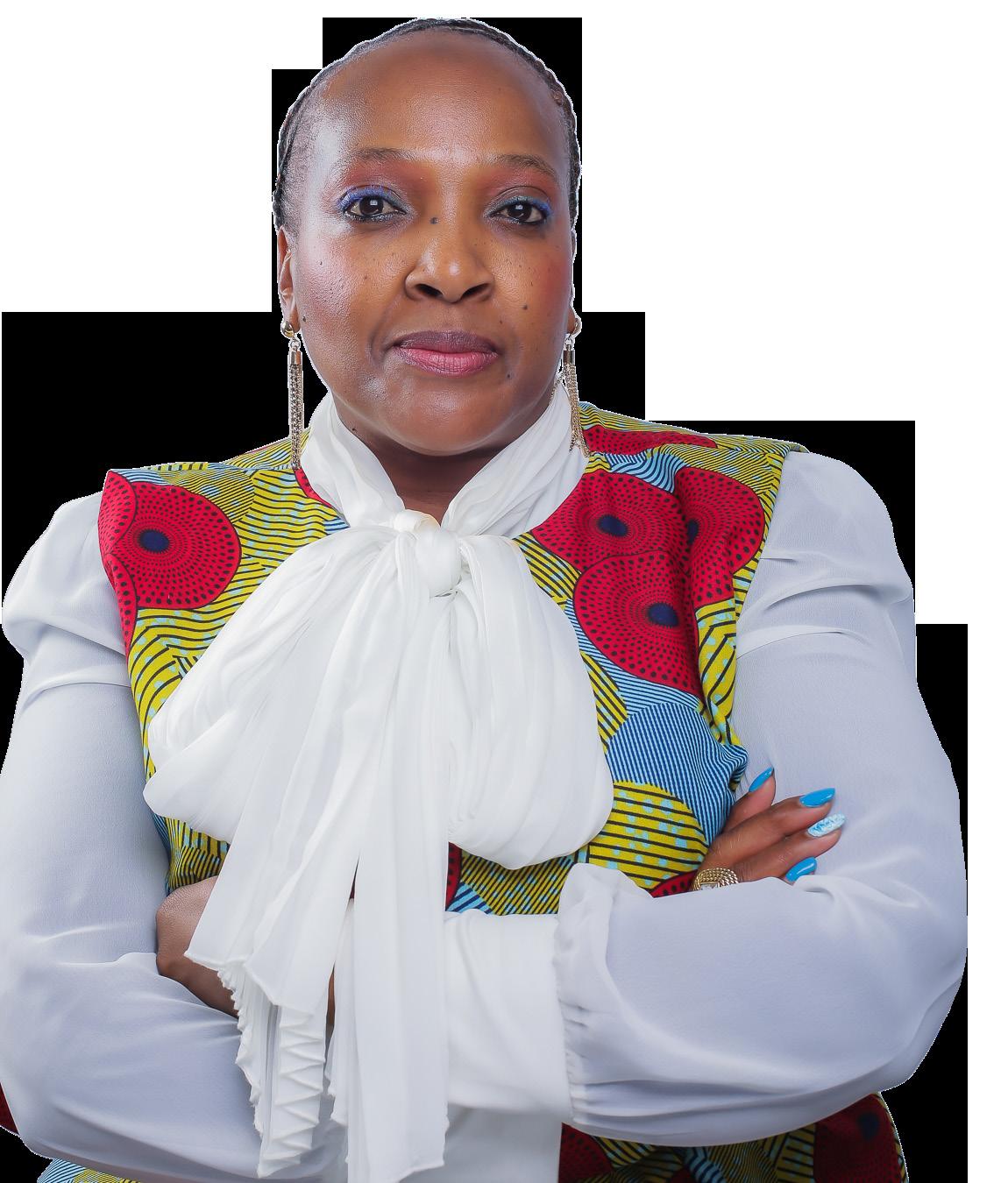
male-dominated with no OHSE experience whatsoever but worked her way up to where she is today. Dibuseng does not like monotonous work and therefore found the OHSE more appealing as no two days are the same.
One of the most important aspect that The Dawn OHSE Consultants focuses on is compliance to OHSE legislative and other related requirements in order to reduce legal liability for employers, for moral obligation purposes as well as for economic or financial benefits. All organisations are expected to conduct their business activities in a responsible manner, with no adverse consequences to any stakeholders, including the public and any other third party. The Dawn OHSE Consultants therefore assists the Public and Private sectors including Parastatals and NGO/ NPOs not only in South Africa but beyond the boundaries of South Africa to comply with regulatory requirements and also to positively change the behaviour of all stakeholders in as far as OHSE is concerned. We believe that The Dawn OHSE Consultants offer expert solutions to occupational health, safety & environmental challenges faced by organisations on a daily basis. Our proven expertise and experience in these fields, combined with
our youth and women empowering business structure and strategic partnerships, make us the logical service provider of choice for any proactive market leading organisation. We understand the challenges and pressures faced by organisations in fulfilling their Health, Safety & Environmental obligations as part of the drive towards sustainability, hence The Dawn OHSE Consultants strives to continuously come up with practical solutions in assisting companies to achieve excellence in occupational health, safety and environmental sustainable performance. We provide professional solutions for Health, Safety and Environmental legal compliance, Risk Assessments, OHSE Management Systems’ development, implementation and auditing (ISO 45001: 2018, ISO 14001: 2015 & ISO 9001: 2015), Responsible Care audits, OHSE Legal compliance audits, Setaaccredited OHSE Training including Legal Liability, Incident Investigation, Hazard Identification and Risk Assessment, Facilitating OHSE Committee & Strategic meetings, Dangerous Goods Training as well as Firefighting & First Aid training among an array of other products and services we offer. The Dawn OHSE Consultants is definitely your ultimate partner of choice in ensuring that both the Employer and Employees’ well-being as well as the well-being of the Environment is protected and preserved.

At a time when Africa most needs its oil & gas resources, the Republic of the Congo is taking the lead: driving an ambitious gas monetisation agenda led by its Minister of Hydrocarbons, Bruno Jean-Richard Itoua—who also served as the president of the African Petroleum Producers’ Organisation for 2022—and national oil company, La Société Nationale des Pétroles du Congo (SNPC), in close collaboration with a suite of regional and global energy majors.
And the most recent achievement saw Italian energy major Eni signing a contract with Wison Heavy Industry for the construction and installation of the Republic of the Congo’s second floating liquefied natural gas (FLNG) facility—an achievement set to significantly increase the production and exportation of LNG. With a capacity to produce 2.4 million tonnes per annum (mtpa) of LNG, the facility represents part of the wider Marine XII gas valourisation plan, and is set to increase LNG production on Marine XII to 3 mtpa by as early as 2025.
The announcement of a second FLNG facility could not come at a better time for both the country and the African continent at large. In addition to reaffirming Eni’s commitment to the country, the launch of a second FLNG platform is set to significantly improve domestic production, consolidating the Republic of the Congo’s position as a regional gas hub.
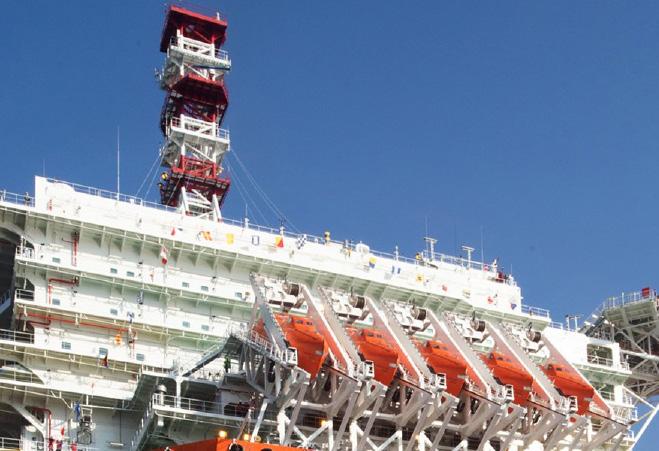
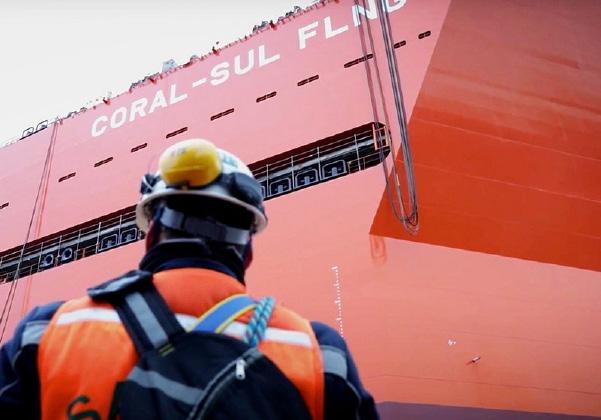
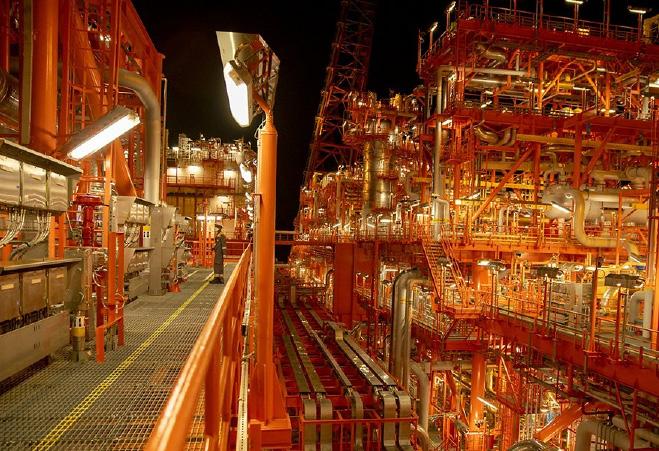
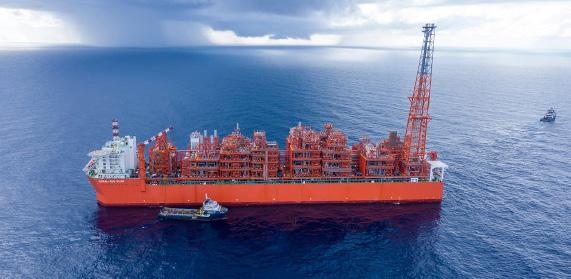
With over 10 trillion cubic of natural gas resources, the development of Congolese gas serves as one of the key solutions to ensuring the regional economy not only develops, but thrives. As such, the government has been focused on investment, creating the right business environment that has allowed majors such as Eni to launch large-scale projects such as this.
“What the Ministry of Hydrocarbons, led by Bruno JeanRichard Itoua, and the SNPC have done in the Congo should be
commended,” states NJ Ayuk, executive chairperson of the African Energy Chamber. “They have been committed to gas, and the results are already showing. The Republic of the Congo has the chance to become not only a regional but global producer of LNG, and the launch of a second FLNG facility by Eni will be key for making this objective a reality.”
For their part, both the Ministry of Hydrocarbons and the SNPC have been resilient, despite everincreasing pressure by global actors for Africa to immediately transition away from oil and gas. Recognising the critical role natural gas has and will continue to play in making energy poverty history, kick-starting industrialisation while driving long-term and sustainable socio-economic growth, the Ministry and SNPC have long been committed to creating an enabling environment for investors—with
the announcement of Eni’s second FLNG facility serving only to reaffirm the efforts taken by the government to do just that.
Under the country’s broader Gas Master Plan—a national framework developed by the Ministry of Hydrocarbons and Wood Mackenzie, and guided by the SNPC, which lays the foundation for the promotion of gas utilisation and the attraction of foreign direct investment—the Republic of the Congo has prioritised an enabling environment, making a strong case for project launches, investment commitments and international partnerships.
In this regard, other African countries should follow suit, as the country serves as a benchmark for other gas-rich nations across the continent.
African Energy Week
aecweek.com

Guaranteed performance and availability
Release guarantees equipment performance and availability
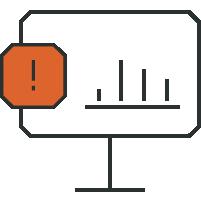
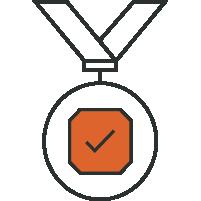
Turn key solar for Mining


Release by Scatec offers a unique eco-system for solar in mining.
We are a reliable risk manager, with affordable leasing agreements of pre-assembled and containerised solar and battery equipment.
Perfect for the mining industry in Africa.
www.releasesolar.com
Solar trackers and bifacial modules for high efficiency
Producing 30% more power than traditional fixed systems at same installed capacity
Quick deployment and installations
Standardised, pre-assembled and containerised equipment reduces design- and installation time
24/7 technical support and monitoring

24/7 support from our Control & Monitoring Centre in Cape Town
www.scatec.com
Your business has something special to offer and our job is to give your customers a way to discover you and your brand online.


We help you develop your story and your voice and connect with the clients who want to do business with you.
We like to talk about your business as much as you enjoy sharing it with others. That means we treat your business like it’s our own. We get down to the nitty gritty and find out as much as we can in an initial free consultation with you where you let us in on the journey you’ve taken up to this point and the goals you have, moving forward.
We’ll be actively by your side all the way because your success is our success.
Let’s chat about your business!

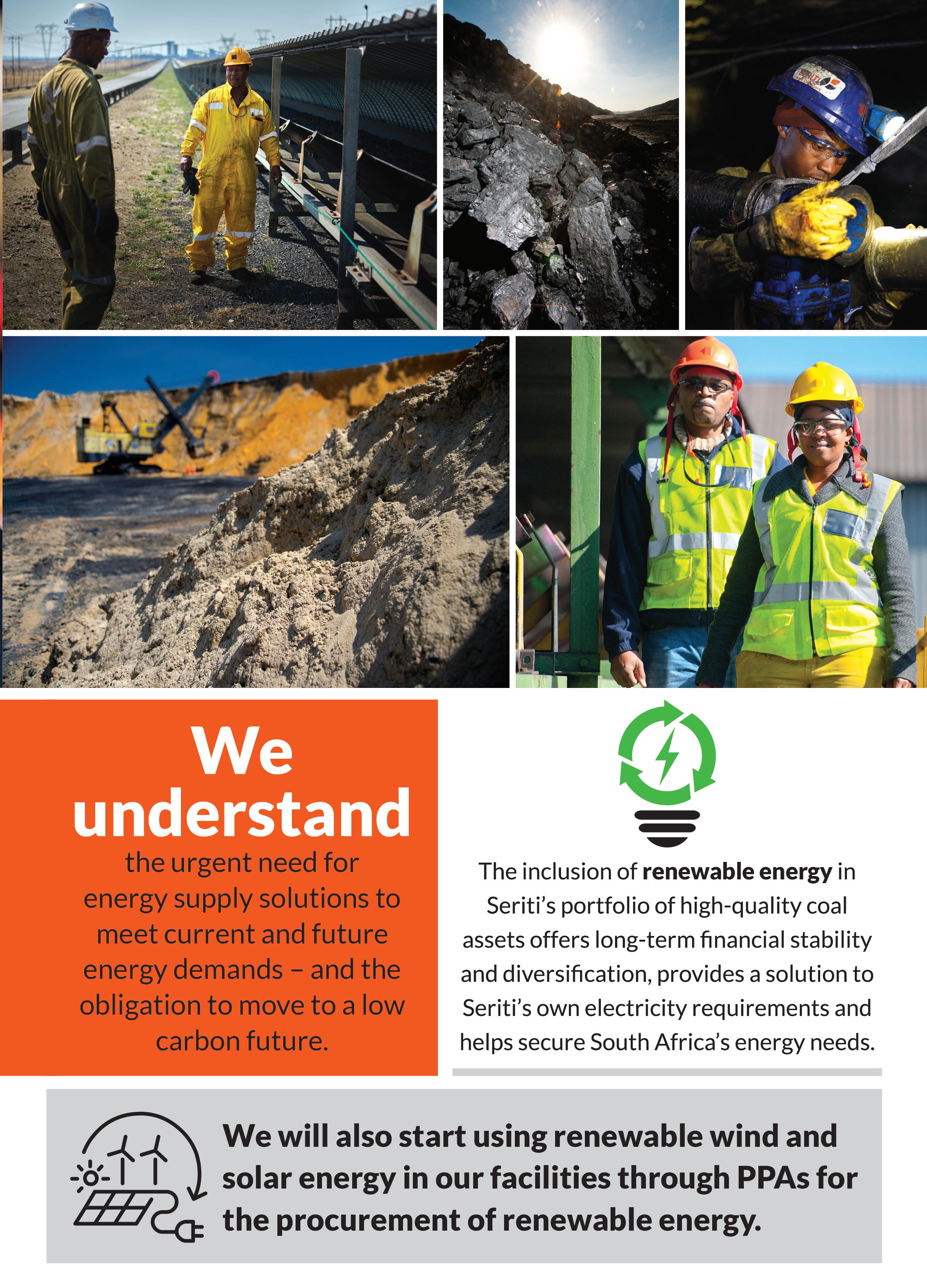
A digitised cloud-based solution is transforming health and safety compliance in the mining industry. HSEC Online is the answer to the often tedious and complex manual health and safety file and is proving to be a gamechanger in how corporates and contractors integrate and manage their compliance.
Pioneered by an electronic engineer, Ingrid Osborne and computer scientist, Julie Mathieson, who are co-founders of Saryx Engineering group, the solution provides a transparent, collaborative workflow platform for companies and contractors to securely capture, store, distribute and manage health and safety document compliance online and in real-time.

“We were looking for a way to simplify a manual process through digitisation – one that would be helpful to both corporates and contractors. If you want an excellent health and safety record as part of your pursuit of zero harm, there must be collaboration between all parties on site. A manual safety file which is checked by a health and safety representative and not checked every day is not collaborative. There is no immediate daily awareness on how health and safety is being managed. The digitisation of this process changes all this,” says Osborne.
Osborne points that the digital solution allows mines to digitise checklists, track the real-time status of pending applications as well as enable operations to proactively send communications and receive automatic reminders on items that require attention. She adds that the flexibility and immediacy of use can go a long way in eliminating human errors
and reducing potential work hours lost in the case of injury, which can ultimately save the company money.
Business compliance is a crucial area of focus for any business, more notably in the mining sector, where accurate and up to date health and safety data is critical. “If there is an accident and you cannot prove that you’ve done everything in your power to protect a person, you can be held criminally liable and possibly fined,” Mathieson adds.
The idea behind HSEC Online came almost by accident. After trying to manually manage different documents which are sometimes industry specific, it soon became clear that the way in which compliance was being managed was not sustainable.
“We decided we might as well develop our own solution which we could use internally. We’ve been building solutions for other people all our working lives, so developing a health safety environment and community solution was a natural progression. The minute development started we could see the commercial value and the potential of the solution. We released our first commercial license in 2017 and from there, the product just took off,” says Osborne.
Saryx’s groundbreaking solution soon caught the attention of the business community, resulting in them being nominated and eventually winning the 2018 FNB Business Innovation Awards.
Since then, they have grown their footprint in both local and international markets, with plans to expand further through the support of EndeavorSA, which is a leading global community of highgrowth entrepreneurs.
“HSEC Online can be designed so that it can be configured to specific requirements, irrespective of sector or country. We have clients all around the world, with requirements that are massively different, and our solution works seamlessly. This is how we know that from a systems perspective, it is simple enough to implement in any country or industry,” Mathieson says.
Osborne believes that the system is an imperative for the mining industry and has already been adopted by a number of major mining companies. Equally important is the fact that it has been welcomed by contractors, aligning the needs of both corporates and the contractor community.
“If you are leader of an organisation and you are aiming for zero harm, you have got to change the way you do things. Digitisation makes this faultless, it takes away human error and creates certainty,” says Osborne.
Saryx Co-founders Ingrid Osborne and Julie Mathieson

Guinea’s massive Simandou iron ore mine project poses severe risks for communities’ land, water and environment, according to Human Rights Watch (HRW). The mining companies developing Simandou have promised to respect strong human rights and environmental standards, but their track record in Guinea means the project deserves the closest possible scrutiny.
Simandou, reportedly the world’s biggest untapped high-grade iron ore deposit (bit.ly/3FSk56G), is being developed by consortia led by Rio Tinto, the AngloAustralian mining corporation, and Winning International Group (a Singapore-based company with roots in China).
Rio Tinto and Winning say the project will generate “a sustainable source of wealth for the people of Guinea for generations to come”
(bit.ly/3huhaYs), with mining in 2018 providing a third of Guinea’s state budget (bit.ly/3BCMPgW). But the Simandou project also threatens surrounding communities’ access to land and water, and will release large quantities of carbon emissions.
“Simandou is unprecedented for Guinea—not only in its size and complexity, but the threats it poses to the rights and environment of local communities,” says Jim Wormington, senior corporate accountability researcher and advocate at HRW. “Inadequate oversight of the project could result in a human rights and environmental disaster.”


Simandou’s deposits, which contain enough iron ore to build more than 500 000 Eiffel Towers, have for years remained untapped due to corruption allegations (bit.ly/3FyWg2c), disputes over ownership, Guinea’s political instability, and the area’s remote and difficult terrain. In August 2022, however, the Winning and Rio Tinto consortia agreed to co-develop the railway and port infrastructure for the project, with mining slated to begin by 2025 (bit.ly/3Yr7Ogx).
The Chinese government sees the development of Simandou as essential to diversifying and securing its supply of iron ore (bit.ly/3j7dNHl), the main input for steel manufacturing. China produces more steel than any other country (bit.ly/3uQN6ZV), and Rio Tinto’s consortium includes Baowu Steel, the world’s largest producer (bit.ly/3htp5Fn).
Extracting iron ore from Simandou, however, means tearing up forest and uprooting communities. The project’s planned railway, needed to transport ore for export, will run 600 kilometres across Guinea. Rio Tinto and Winning say this will create a “strategic corridor” (bit.ly/3huhaYs) with regional economic benefits beyond mining. But a 2021 environmental and social impact assessment commissioned by the Winning consortium states that building the railway will raze more than 100km2 of land and destroy vital habitat for endangered species such as the West African chimpanzee (bit.ly/3j7kXv0).
On the mountain itself, a 2022 environmental and social impact assessment commissioned by Winning for its portion of Simandou anticipates that mining pits will span almost 20km across the mountain ridge.
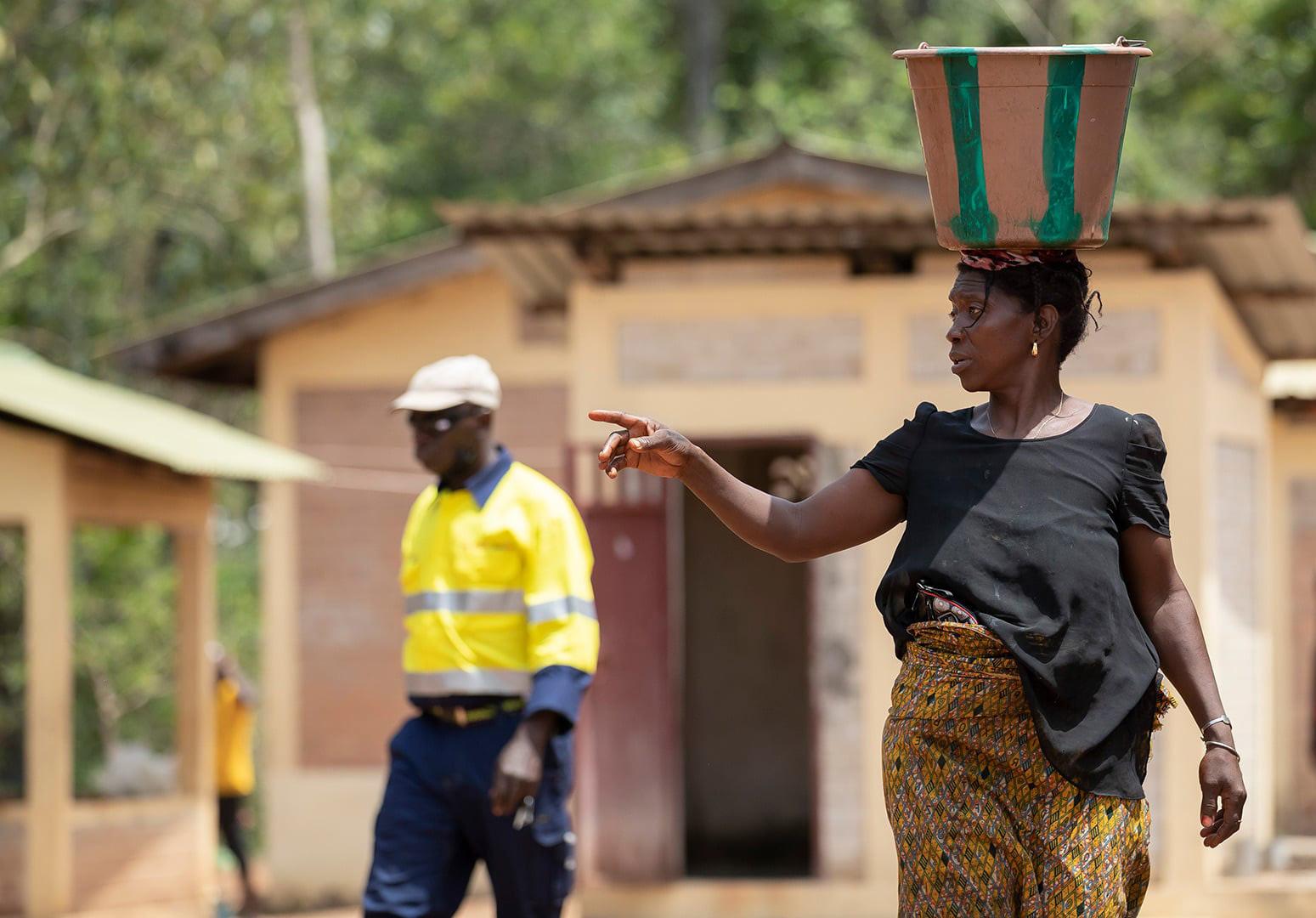
The assessment found that, at Winning’s sites alone, miningrelated deforestation could release up to 271 300 tonnes of carbon dioxide, equivalent to burning 300 million pounds of coal, according to a Human Rights Watch estimate calculated with a tool (bit.ly/3j0yu7L) developed by the United States Environmental Protection Agency (EPA).
Winning’s assessment further estimates that, over the 22-year anticipated life of the mine, it will produce over 19 million tonnes of carbon dioxide, equivalent to burning 21 billion pounds of coal, according to the US EPA tool.
Rio Tinto and Winning told Human Rights Watch (bit.ly/3PrRd8p) that they are still assessing the overall carbon footprint of the project, but are focused on reducing it where possible.
The Simandou project threatens surrounding communities’ access to land and water, and will release large quantities of carbon emissions
Innovation, future fuels and greener solutions are the keys to decarbonising our planet.
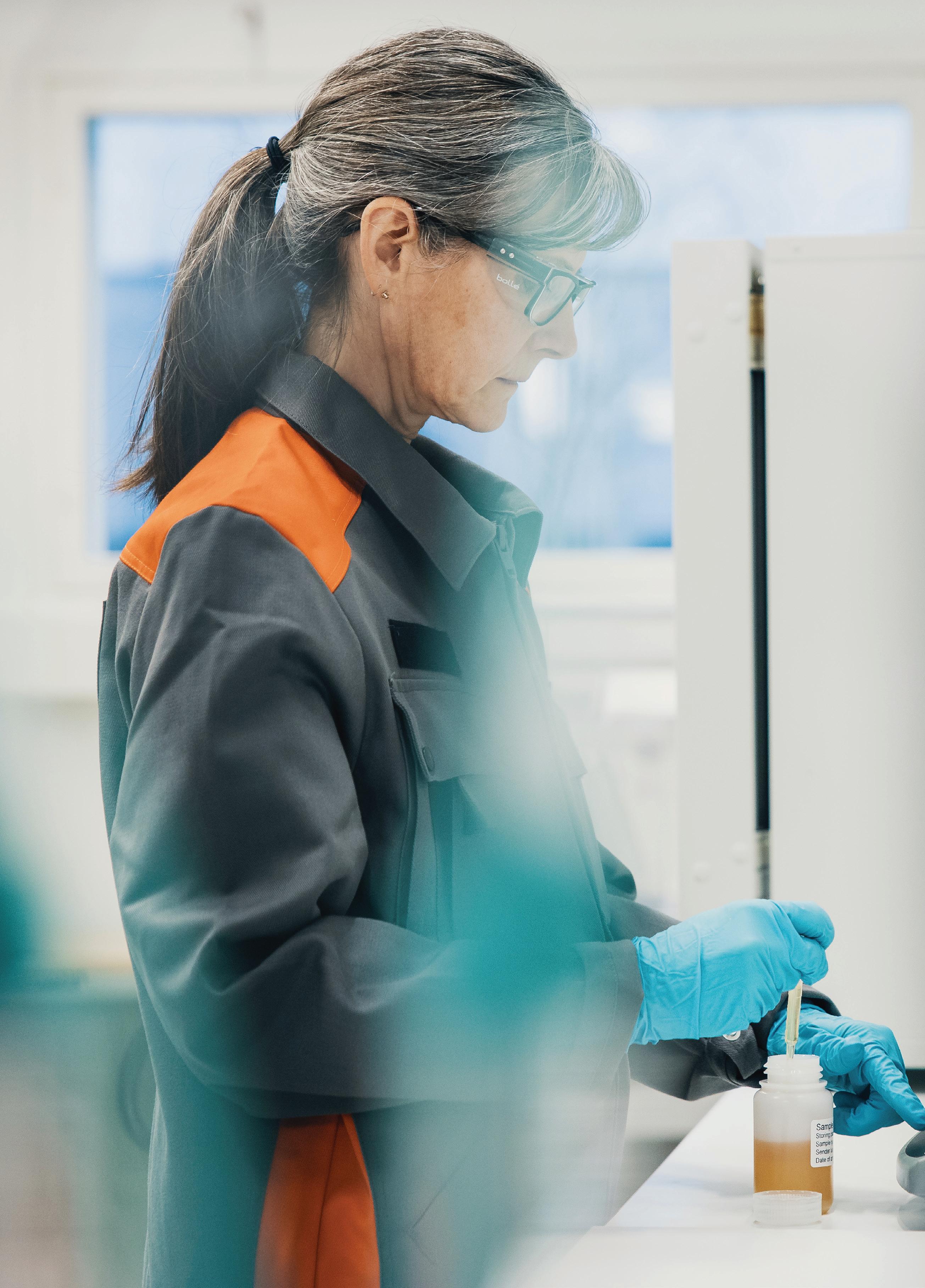
The two impact assessments commissioned by Winning for the railway and mine also suggest that construction will force people in hundreds of households to leave their homes. Even for villages that are not relocated, the assessments warn that deforestation and land loss risks jeopardising communities’ farming, hunting and fishing, with negative impacts on families’ food security. The assessments also state that the project could negatively affect the communities’ already fragile water sources, with Simandou’s mountains a vital source of water for local rivers.
Guinea’s government conditionally approved the environmental and social impact assessments for Simandou’s railway in July 2021 and construction on railway infrastructure has already begun. The government has yet to review and approve Winning’s impact assessment for its mine sites. Rio Tinto is currently updating its impacts assessments for its mining operations and its portion of the rail line.
The Rio Tinto and Winning consortia, in a September 2022 joint letter to Human Rights Watch (bit.ly/3FsnBTT), stated they were committed to developing Simandou in accordance with international environmental and social performance standards and to implementing the United Nations Guiding Principles on Business and Human Rights (bit.ly/3FnRXqw).
Rio Tinto, however, already co-owns a mine in Guinea (cbg-guinee.com) which extracts bauxite, the ore needed to make aluminum. In 2019, 13 neighbouring villages accused the mine of “land grabbing and destruction of their environment and livelihoods” (bit.ly/3j4UhLJ), in violation of conditions set out in a US$200-million World Bank loan. The World Bank is now overseeing a mediation process (bit.ly/3HMKSlY) to try to resolve these communities’ complaints.
Rio Tinto has said (bit.ly/3BB03La) it is monitoring the mine’s approach to environmental protection and human rights and that the consortium that owns the mine, including Rio Tinto, is observing the mediation process.
The Winning consortium controls a mining company that is Guinea’s biggest exporter of bauxite (www.smb-guinee.com). In 2018, Human Rights Watch documented the company’s destructive impacts on nearby communities’ land and environment (bit.ly/3W3GOCk). The company told Human Rights Watch in September 2022 (bit.ly/3BFCVvk) that its bauxite operations are audited annually by the Guinean government and that an external firm had reviewed and updated its environmental and social impact assessment and management plan (bit.ly/3Prcu25).
But the company has repeatedly refused to provide copies of the revised assessments or the updated plan, and Guinean non-governmental organisations continue to report negative effects on communities’ land and water sources.
Guinea’s military government, which took power in a September 2021 coup, has a 15% stake in both Simandou’s mining operations and the railway company that will transport the ore for export. Guinea’s military leadership, criticised by civil society groups (bit.ly/3Fqh38a) for delaying elections necessary for a return to civilian rule, banned public protests nationwide in May 2022 (bit.ly/3HI0KGu) and has deployed the army to suppress demonstrations in defiance of the ban (bit.ly/3WnQ8kn).
Guinea’s security forces have frequently used excessive and often fatal force in suppressing demonstrations (bit.ly/3uUBSUg), including killing six people in 2012 following a protest at an iron ore mine in the same region as Simandou (bit.ly/3Psvzkg).
In their September 2022 letter to Human Rights Watch, the Rio Tinto and Winning consortia acknowledged the Simandou project “will be constructed and operated in a unique environment that presents significant challenges”. The consortia said they are conducting a risk assessment of the project’s rights impacts, developing an independent audit regime to monitor compliance with environmental and social performance standards, and beginning discussions to align their grievance and complaints procedures.
On 23 September 2022, a statement from a coalition of 10 Guinean civil society organisations (bit.ly/3V192MD) welcomed the companies’ commitment to international standards, but expressed concern at “elevated risks” of environmental, social and governance failings.
“Despite Rio Tinto and the Winning consortium’s promise to respect human rights, their history in Guinea raises major questions about their capacity to deliver,” Wormington says. “Guinean communities are yet to see whether the companies’ commitments will translate into meaningful protections for their land, environment and rights.”
Human
Rights Watchwww.hrw.org
Rio Tinto has said it is monitoring the mine’s approach to environmental protection and human rights
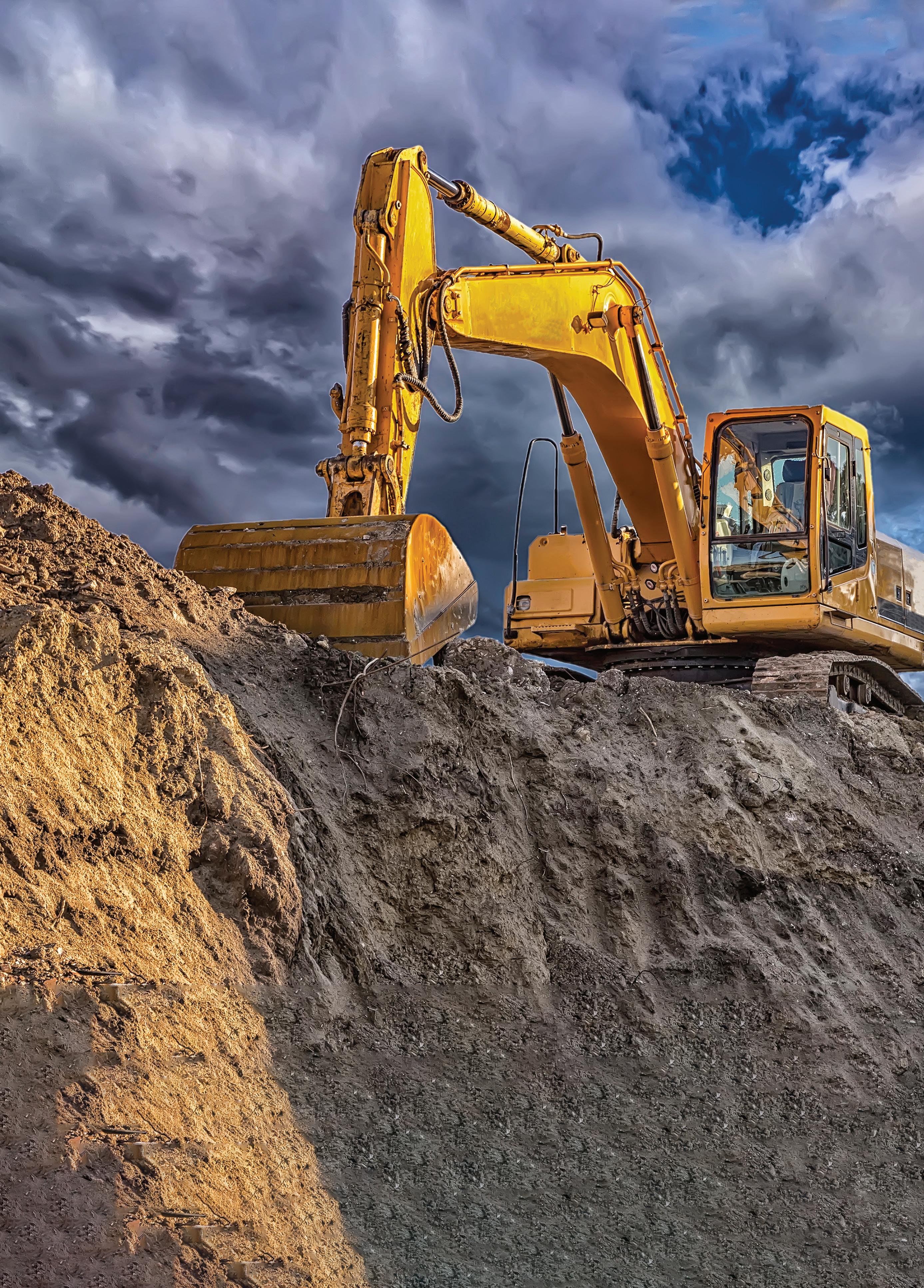



Between 2018 and 2021, Amnesty International delegates conducted research in the Kono District on the impact of Meya Mining’s mining activities. This research revealed several concerns including unsafe water in boreholes constructed by Meya, dangers to communities living in the vicinity of the mine, and other violations of the socio-economic rights of local people.
After Amnesty International raised these concerns with the Sierra Leonean authorities and Meya Mining, the organisation received Meya’s reply in August 2022 to outline the measures it has taken to consult neighbouring communities, and prevent any
harmful impacts from its mining operations, such as water pollution. To date, Amnesty International has not received a substantive response from the Sierra Leonean authorities.
“The authorities must ensure all issues raised have been addressed,” says Samira Daoud, Amnesty International’s regional director for West and Central Africa. “Although the Sierra Leonean Parliament passed the Mines and Minerals Development Act 2022 on 9 August last year, which aims to improve the welfare of communities affected by future mining exploration, the government of Sierra Leone must ensure anyone whose human rights have been violated by any
mining company has access to justice, an effective remedy mechanism, and reparations.”
In 2018, Amnesty International started research into mining activities in Kono District. According to the testimonies collected, many residents claimed they were not engaged in a process of genuine consultation before the mining operations began. Amnesty International recalls that international human rights norms—including the United Nations Guiding Principles on Business and Human Rights— clearly state that communities must give their prior consent for all forms of resource exploitation on their traditional lands, and must also benefit accordingly.

Leone government must
ensuring the human rights of people living close to the diamond mine exploited by Meya Mining are protected
COMPACT. POWERFUL. RELIABLE.
COMPACT. POWERFUL. RELIABLE.
• 10 ton loader
• 10 ton loader
• Ergonomic ROPS,FOPS safety cabin with large legroom, excellent visibility & intuitive controls
• Ergonomic ROPS,FOPS safety cabin with large legroom, excellent visibility & intuitive controls
• Highest tipping height in class at 2.5m
• Highest tipping height in class at 2.5m
• Excellent loading performance with z-link optimized for loading all 30 ton mining trucks in the market
• Excellent loading performance with z-link optimized for loading all 30 ton mining trucks in the market
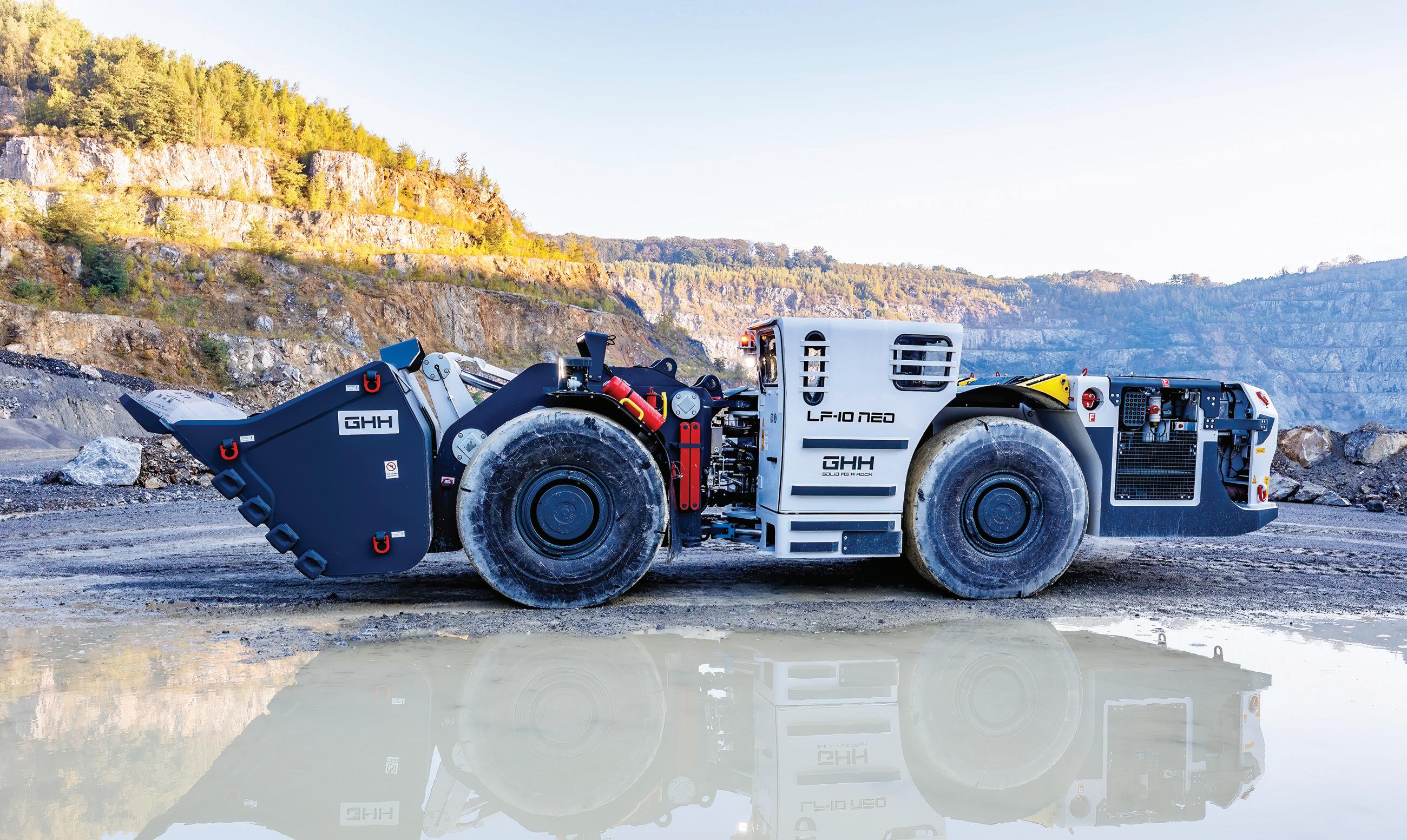

info@ghhmm.co.za, www.ghhmm.co.za
info@ghhmm.co.za, www.ghhmm.co.za

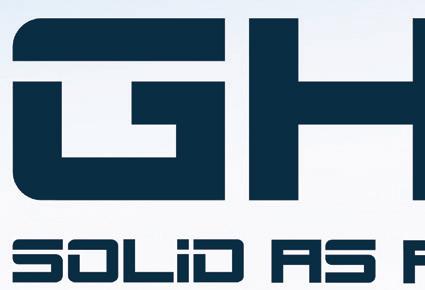
“The place where the Meya Mining’s plant is located used to be a swamp. [We] had a plantation there. Everything is gone now,” says a woman from the Simbakoro community. “I used to survive on my plantation, to feed myself and get money to pay school fees for my children… We do not benefit from any of their activities. They gave me only US$98 for the swamp and the plantation.”
In 2019, Amnesty International also took water samples for testing from two boreholes constructed by Meya Mining in the Koaquima community. The results revealed high levels of nitrates in both samples (110mg/l for sample 1 and 120mg/l for sample 2), which were well above safe levels (50mg per litre) recommended by the World Health Organisation.
At that time, residents from the Koaquima community were complaining about Meya’s borehole: “We cannot use the borehole water provided by Meya for drinking. It contains Spirogyra [a type of algae]. We see them in the water. It is poisonous. We use the water for washing and cooking because it has a taste—it is salty,” said one resident.
Meya Mining confirms it also tested the water in the boreholes the same year, and did not contest the high level of nitrates.
After the communities receive notification from the company, the explosions of the mines take place. Before these explosions start, inhabitants explain that they are forced to evacuate their homes and take shelter in the different structures made by the company until the blasting is over.
In the Simbakoro community, at the time of the investigation made by Amnesty International, the wood-and-tarpaulin structure constructed by Meya
Mining in which inhabitants sought shelter was covered in holes and in a state of disrepair. It could not hold more than 300 people, when the community has more than 2 000 members. Simbakoro residents do not feel safe under this structure when blasting takes place. As one of its members says: “The shelter is not suitable for human use. It is like a pig shelter. It’s for animals.”
Amnesty International is also concerned that no sufficient steps were taken to ensure the safety of the mine sites, despite their proximity to local communities that include children.
Reacting to the concerns raised by Amnesty International, Meya Mining said it had taken measures to mitigate some of the impacts of diamond mining.
According to the reply received in August 2022, fences will be built around the mining site to increase the safety of residents. Still on the security side, a permanent blast shelter will be built to replace the temporary one whose shortcomings were highlighted in the Amnesty International findings.
Meya also asserts that it has put in place water filtration and purification systems to reduce the level of nitrate in the boreholes. It argues that it made sufficient consultation with the local community and notified Amnesty International that a socio-environmental impact assessment has been carried out to better mitigate the societal and environmental impacts on local communities.
“While welcoming Meya’s commitment and new measures to improve community rights, Amnesty International encourages the Sierra Leone authorities and the mining company to do everything possible, together with the local
communities, to alleviate their suffering related to the mine’s activities—ensuring that United Nations Guiding Principles on Business and Human Rights are always implemented,” Daoud concludes.
Amnesty International www.amnesty.org
On 19 July 2019, the Government of Sierra Leone granted Meya Mining—a diamond mining firm, 35% owned by Sierra Leoneincorporated Germinate (SL) Limited and 65% by Namibian-incorporated Trustco Group Holdings—a licence company covering a period of 25 years to extract an estimated US$850 million worth of diamonds.
During its research, Amnesty International interviewed 128 people in nine communities affected by Meya Mining’s operations. The organisation also spoke to national and local authorities, as well as senior employees of Meya Mining.
The organisation has twice written to the government—in August 2019 and February 2022—to raise concerns about the human rights impact of Meya Mining activities. In July 2022, Amnesty International also contacted Meya Mining, giving it the right to reply to the findings about the company’s activities.
On 2 March 2022, Meya Mining received a request from the Senior Permanent Secretary at the Sierra Leone Ministry of Mines and Mineral Resources regarding the concerns raised by Amnesty International.
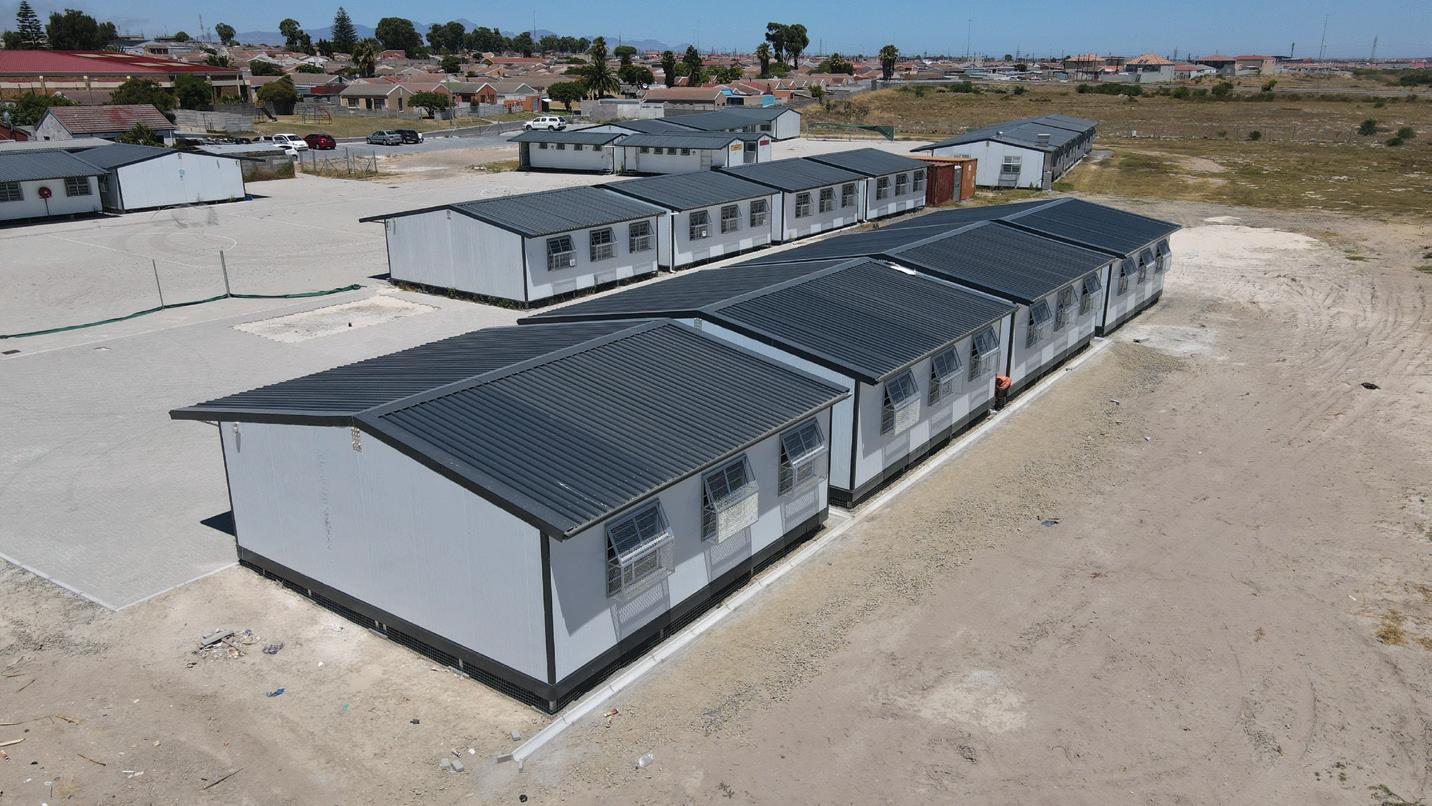
At RICTS Holdings, we are all about possibilities in modular infrastructure solutions.
www.ricts.co.za
www.ricts.co.za
Our full turnkey solution includes research, design, in-house manufacturing, and construction managed by professional staff with a collective experience of over 200 years.
Our full turnkey solution includes research, design, in-house manufacturing, and construction managed by professional staff with a collective experience of over 200 years.
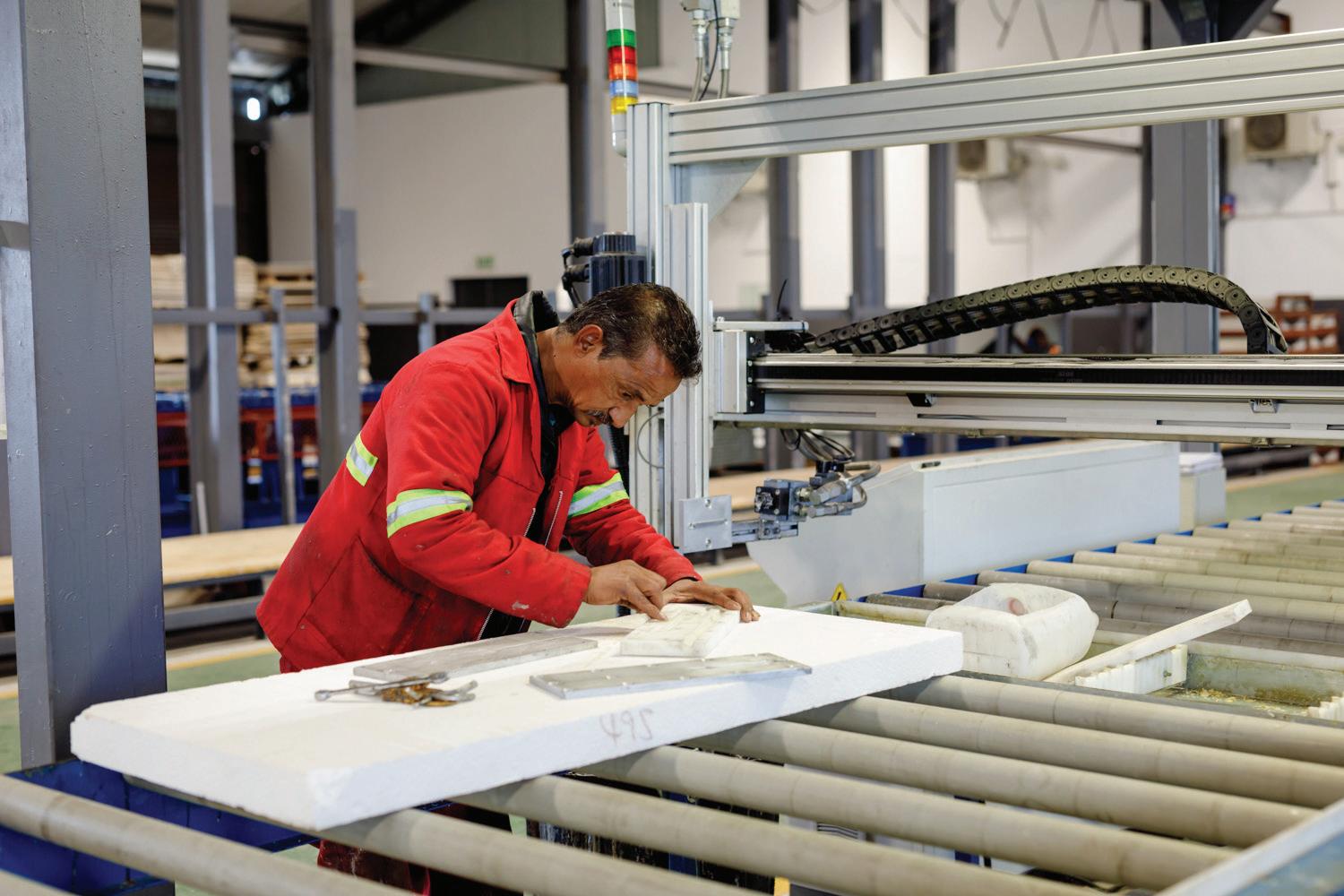
As an accredited and certified company, we subscribe to the highest degree of quality and compliance to ensure you have the right foundation to meet industry requirements.
As an accredited and certified company, we subscribe to the highest degree of quality and compliance to ensure you have the right foundation to meet industry requirements.

Construction services and certifications include:
Construction services and certifications include:




• Civil Construction and Engineering
• Civil Construction and Engineering
• Electrical and Structural Engineering
• Electrical and Structural Engineering
• Plumbing and Architecture
• Plumbing and Architecture
Our 100 000m2 in-house manufacturing capacity includes:
Our 100 000m2 in-house manufacturing capacity includes:




• 97% control of the manufacturing value chain
• 97% control of the manufacturing value chain
• SANS 10400 compliance
• SANS 10400 compliance
• Thermal Dynamics (R-Value) manufactured to client specifications
• Thermal Dynamics (R-Value) manufactured to client specifications
• Robust internal Quality Management System
• Robust internal Quality Management System





• Fully guaranteed workmanship
• Fully guaranteed workmanship
We change communities by empowering SMMEs and entrepreneurs through our in-house skills development training academy to enter the modular space market through mentorship and certification.
We change communities by empowering SMMEs and entrepreneurs through our in-house skills development training academy to enter the modular space market through mentorship and certification.
021 905 0259 info@ricts.co.za sales@ricts.co.za
021 905 0259
Harmony is investing in our country’s youth through education to enable them to survive, thrive, transform our world, and deliver a better future for all of us.
For these reasons, Harmony has awarded 100 top matriculants with laptops and other basic tertiary education tools in recognition of their outstanding performance.

The move to celebrate the achievements of the class of 2022 is part of a joint venture with the Department of Basic Education. “We believe it is important to
recognise excellence among high school graduates who have excelled in their studies,” says Mashego Mashego, executive director at Harmony.
Harmony is South Africa’s largest gold producer by volume, operating in the Gauteng, Free State and North-West provinces. “We hold annual Matric Excellence Awards in Gauteng, North-West and Free State provinces, where the best performers are awarded laptops and other tools to support tertiary education. These provinces represent the footprint of Harmony’s mining communities in South Africa,” adds Mashego.
Harmony is investing in youth education as a means to overcome unemployment and poverty
Harmony considers Responsible Stewardship to be one of the key strategic pillars guiding its social investment plans, with education remaining the main underlying priority.
This is why Harmony’s CEO Financial Support Programme was introduced in 2021 to support the so-called “missing middle” i.e. learners who have passed

Matric and are in their first year of university, who did not qualify for bursaries and are unable to qualify for a loan from the National Student Financial Aid Scheme (NSFAS). Harmony invests R3 million each year in 30 firstyear students who did not qualify for a scholarship and are not eligible for the NFSAS loan. All these efforts are over and above the company’s Social and Labour Plan commitments.
“Although our support for learners goes back decades, in the last five years we have
implemented over 900 school projects, sponsored over 350 bursaries, and offered internships to 349 students in the various disciplines of our company—all of these beneficiaries are from our mining communities,” shares Mashego.
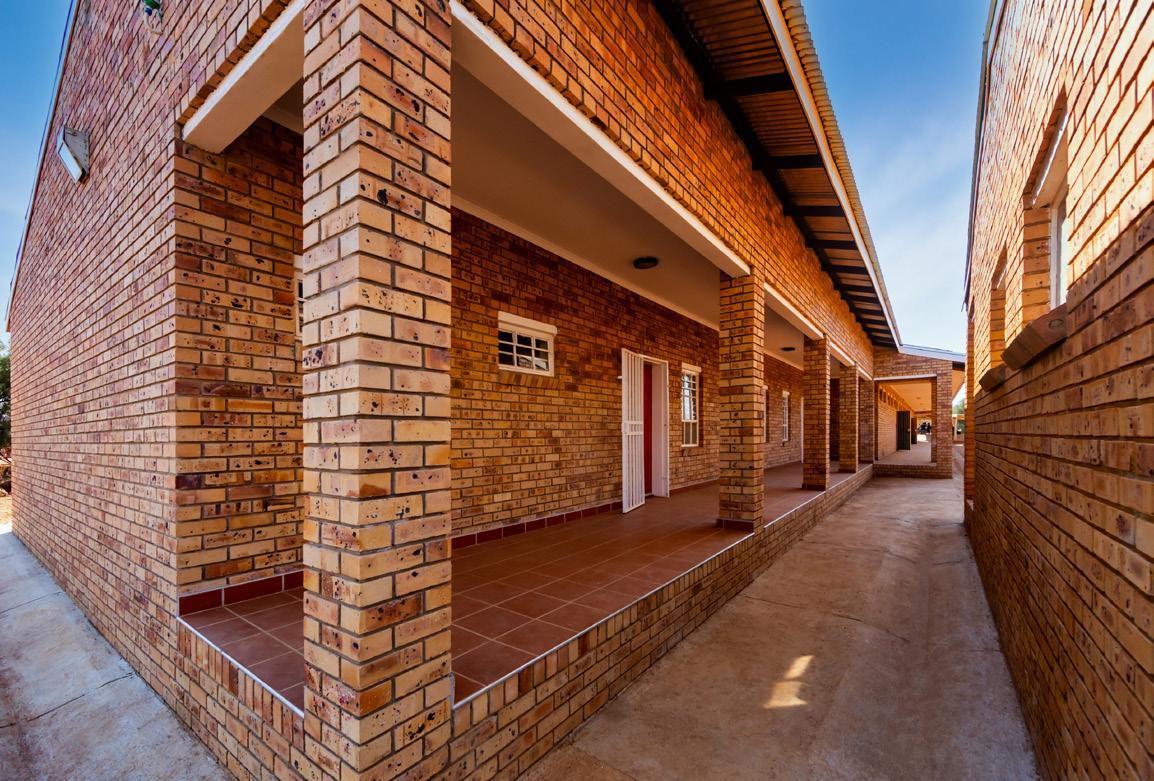
He also thanked the Department of Basic Education and local community representatives who have continuously assisted the company in identifying students and schools that need help and support. “You have helped us reach out to students in childheaded households, students participating in school feeding programmes, schools in need of science and computer labs, students in need of learning support, and the list goes on.
“Thank you for joining Harmony in creating a better world for these students.”
We believe it is important to recognise excellence among high school graduates who have excelled in their studies.
F o r o v e r 7 0 y e a r s ,
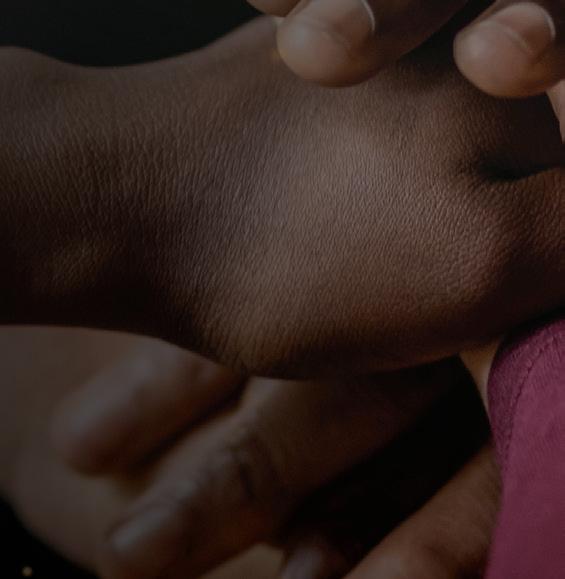

t h e gold w e m in e




h as i m p r o ve d
li ves , buil t
c o mm uni t i es a nd
gi ve n p e opl e t h e
c h a n ce t o rea li se
t h e i r d reams .

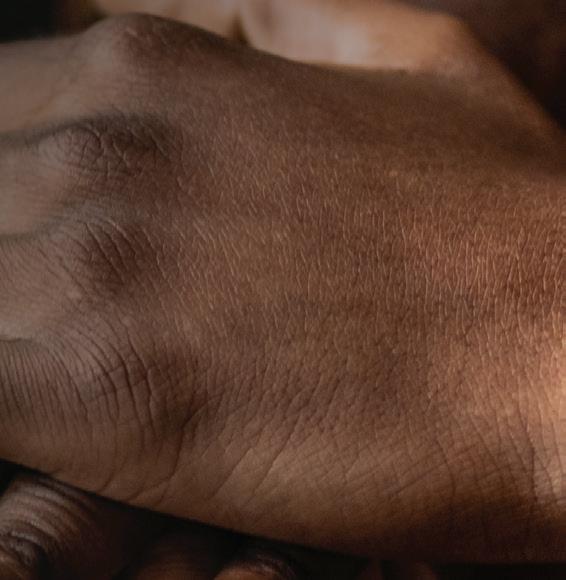

We h a ve c o n s is tent ly de m o n st r a t e d c ar e a n d h a v e a l wa y s p ri o ri t i sed t h e s a fet y a nd w e ll- b ei n g of ea c h of ou r peop le . W e be li ev e in e m p o werin g com m un i t ie s th r ough a ct i ve e n g a ge m e n t a n d fo r g i ng st r ong r e l at i on s h i p s b u il t o n t rus t a n d i nteg ri ty. A t Ha r m o n y , su s ta i na bl e m ini n g e ns u res w e s afegua r d the f u tu r e o f ou r children and t he pla n et th r ough sa fe, p rofitable o u nce s. N o w , wi t h the i n trodu c tion of co p per int o o ur p r o duc t m ix , we will fu r ther our g reen a mb i t io n s , cr ea t in g e v e n m or e v alue f o r all o ur s ta k eh o lde rs .



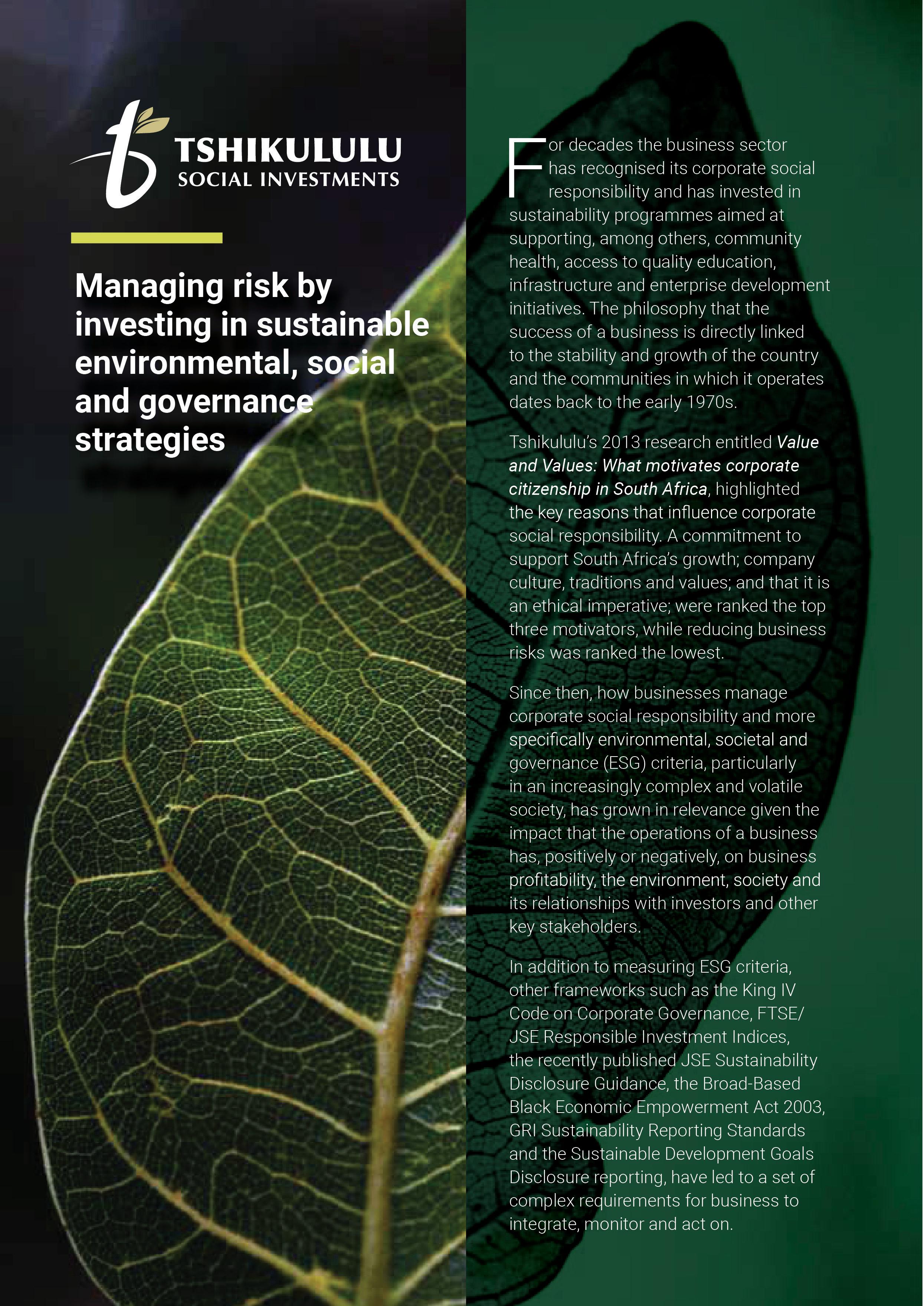
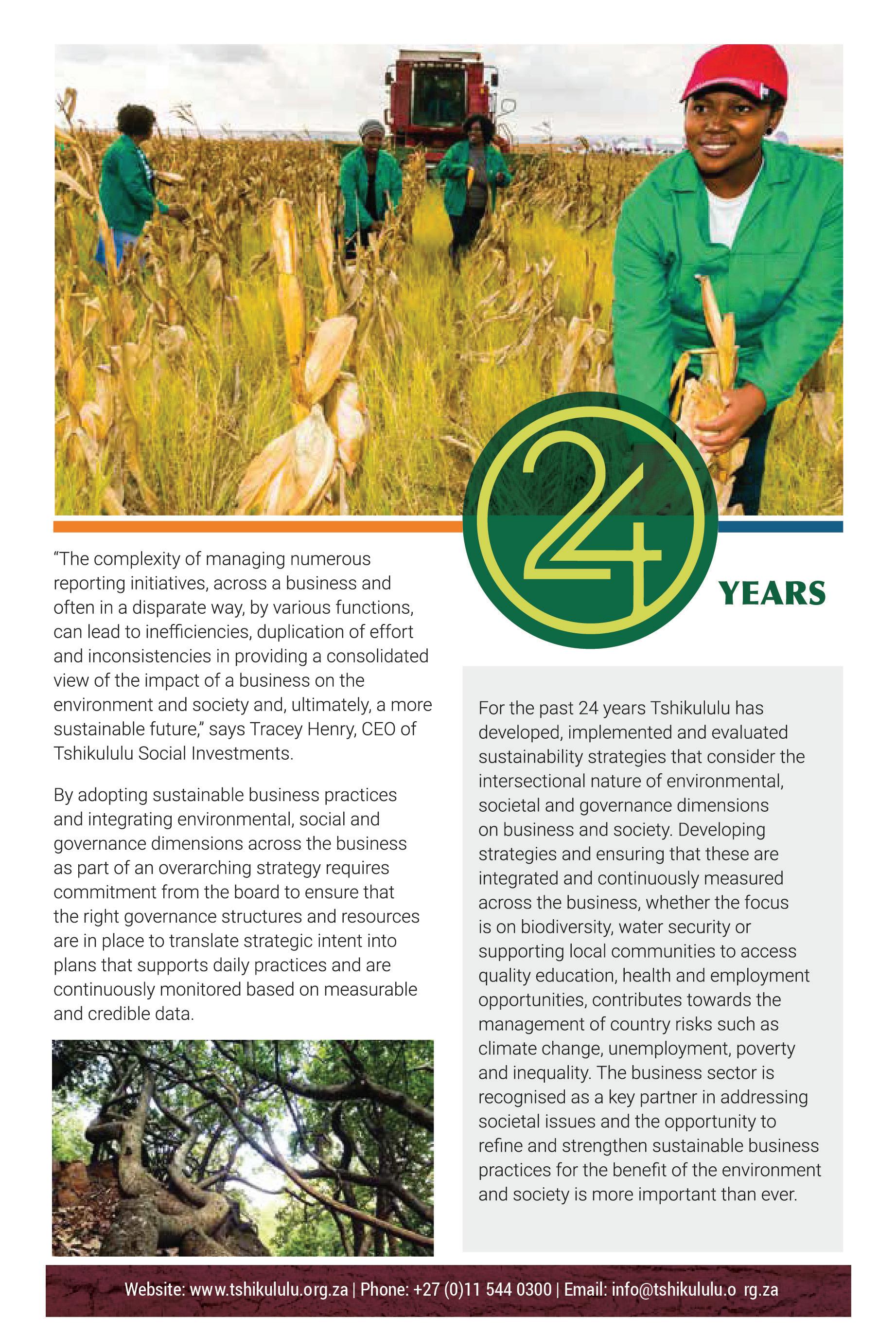
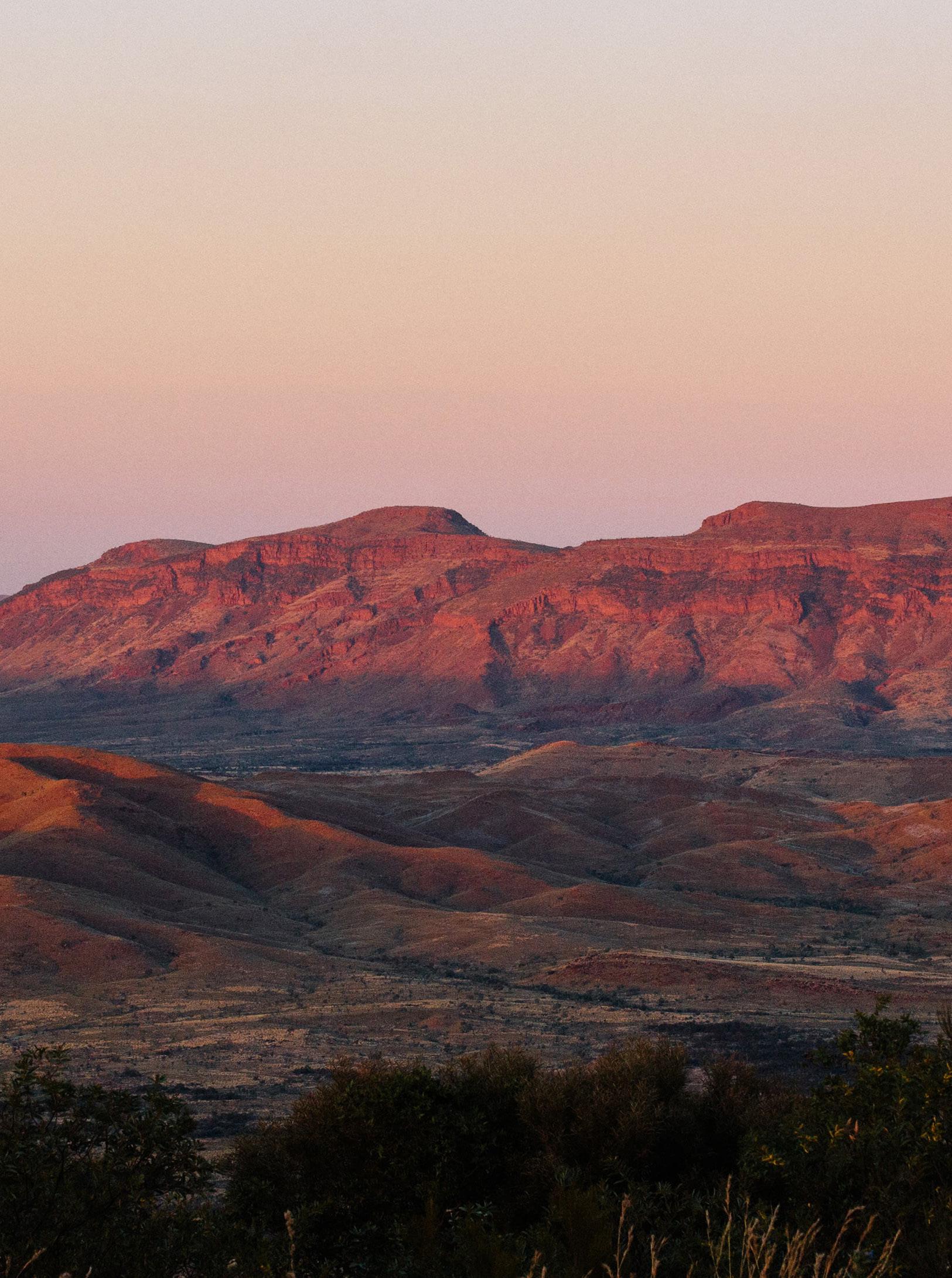
Vast quantities of minerals (bit.ly/3UYiTTt) are needed to accelerate the transition to a clean energy future. Minerals and metals are essential for wind turbines, solar panels and batteries for electric vehicles. But Indigenous peoples (bit.ly/3UZzC90) have raised concerns (bit.ly/3YnuwX5) about more mining on their lands and territories.
Our new study (bit.ly/3Py3TKT) supports First Nations peoples’ concerns. We identified 5 097 mining projects involving about 30 minerals needed in the energy transition. Some 54% are located on or near Indigenous peoples’ lands. These lands are valuable ecologically and culturally (bit.ly/3FwTKJL). Their soils, and land cover such as forests, store
carbon—which helps regulate the planet’s climate. Typically, the lands are also intrinsic to Indigenous peoples’ identity and way of life.
Energy transition minerals are essential to tackling climate change. But First Nations people must have a genuine say in where and how they are extracted.
The International Energy Agency projects (bit.ly/3FTOWj3) lithium demand for electric vehicle batteries will grow 40 times on current levels by 2040. Our study found 85% of the world’s lithium reserves and resources overlap with Indigenous peoples’ lands.
Demand for nickel and manganese is projected to grow
20 to 25 times. We found 75% of manganese and 57% of nickel reserves and resources also overlap with these lands.
Copper and iron ore are essential for power generation, as well as its transport, storage and use. Some scenarios (bit. ly/3VYyofF) predict an increase in copper demand of more than 250% by 2050. We found 66% of the world’s copper and 44% of iron reserves and resources overlap with Indigenous peoples’ lands globally.
Overall, across the 5 097 projects in our study, 54% are on or near Indigenous peoples’ lands. And almost one-third are on or near lands over which Indigenous peoples are recognised as having control or influence for conservation purposes.

The Council for Scientific and Industrial Research (CSIR) has its eyes set on revolutionising the future of mining operations in the continent and globally. As the partner of choice for public and private mining companies, original equipment manufacturers and the international mining community, the CSIR through its suite of scientifically backed mining solutions, prides itself in being able to respond to industry needs with agility.
The CSIR offers the mining sector a variety of bespoke services and solutions for different parts of the mining value chain, this includes:
• Competency based safety training using immersive technologies
• Independent safety compliance testing services , in support of Zero harm mining dive,
• Technical services such as Rock engineering , High-resolution geophysical tools and platforms to support zero harm, efficient operations and maximise resource use,
• Digital and Automation capabilities which includes but not limited to digital twinning technologies, data analytics services,
• Supporting mining operations with creating an environmentally substantiable industry with leading on topics such as Mining environmental control services, Circular economy, hydrogen mining mobility.
Virtual Reality Training Technology provides mining trainees with non-real emergency experiences. The CSIR had developed a

competency-based training to improve the occupational safety of mining employees through the application of immersive 4IR technologies such as (Augmented Reality and Virtual Reality (AR&VR)), The use of these technologies provides mining workers with a simulated, immersive, and experiential training which recreates a safe training environment that increases information retention of workers. o. This approach intends to contribute to the safety of South Africa’s mineworkers as it is designed to enhance the trainees’ knowledge in responding to hazardous underground incidents. The newly adopted technique puts the worker in near-real emergency situations, such as underground fires and explosion and enables the personalized performance response to be evaluated to ensure that a miner is competent to respond adequately to the risk exposure.
The CSIR-developed a near real time risk prediction tool in support of collision prevention of Trackless Mobile Machine (TMM) which digitally predicts the performance of traffic management systems, enhancing safety and productivity in mines.
The Risk based digital platform is designed to enhance safety in underground and open pit mines while balancing production requirements, through creating a digital map of the traffic interaction activities. This novel technology uses digital twin, artificial intelligence, machine learning, and other data analytic techniques and can be used for both production and strategic decision support in existing operations, brownfields, or greenfield projects to evaluate existing control measures and plans in optimizing for both safety and production. Examples of these are assessing the effectiveness of traffic management systems and plans, optimising mine layout in relation to safety risk exposure, and fleet management. Acting like a training assistant, the TMM technology possesses an astounding ability to identify customised driver training requirements for productive workforce.
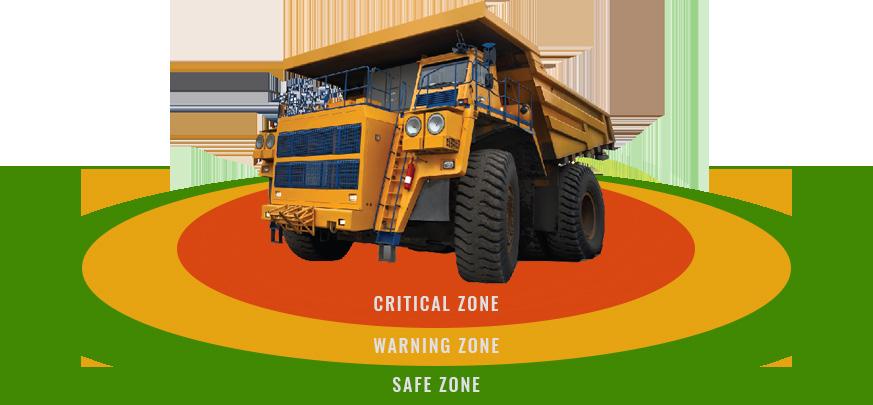
In 2021, Indigenous groups from around the world signed a declaration (bit.ly/3YnuYof) calling on climate negotiators at the COP26 United Nations Climate Change Conference to commit to sourcing transition minerals more responsibly.
They also called on governments and corporations to obtain the “free, prior and informed consent” (bit.ly/3uVzooR) of Indigenous peoples in decisions that affect them. This type of consent is enshrined in the UN Declaration on the Rights of Indigenous Peoples (bit.ly/3BC70f4). It means Indigenous peoples should be able to accept or reject mining on their traditional lands, and to negotiate conditions such as protecting natural and cultural heritage.
Mining has hugely complex repercussions and can cause severe harm to societies, the environment and human rights (bit.ly/3uTngEF). Consultation and consent processes take time. Companies and governments seeking to extract resources in haste are likely to fail to meaningfully engage with communities (bit.ly/3Pr0QUZ).
If new mining projects are fast-tracked (bit.ly/3FTyZJD), there is a huge risk of corners being cut. Without proper consultation and legal protections, the future supply of transition minerals could put Indigenous peoples’ lands at greater risk.
Australia has a shocking track record in protecting Indigenous heritage and obtaining consent.
In May 2020, Rio Tinto destroyed 46 000-year-old Aboriginal rock shelters in the Juukan Gorge (bit.ly/3WeYdre) to mine iron ore, against the wishes of the traditional owners: the Puutu Kunti Kurrama and Pinikura (PKKP) peoples.

The traditional owners said the destruction was a tragedy for their people, all Australians and humanity (bit.ly/3VZzBDl). Alarmingly, the destruction was legal.
In November 2022, responding to a federal parliamentary inquiry into the Juukan Gorge incident, Australian Environment Minister Tanya Plibersek said the destruction of the rock shelters had been “completely wrong” (bit.ly/3j3ry9W). She acknowledged the massive power imbalance when traditional owners negotiated with mining companies, and the lack of resources they can draw on.
Plibersek said legal reform is urgently needed to stop such destruction happening again. In this vein, the Commonwealth has signed an agreement (bit. ly/3WnI7fh) with the First Nations Heritage Protection Alliance (culturalheritage.org.au) to codesign new cultural heritage laws.
Initiatives such as Dhawura Ngilan (‘Remembering Country’) (bit.ly/3VfCteh) set a collective vision for best-practice heritage standards and legislation.
Companies and investors should apply these protocols while Australia’s laws catch up. In the meantime, other heritage sites in Western Australia are threatened by existing development approvals (bit.ly/3YoLfJx). And the new Aboriginal Cultural Act (bit.ly/3UUH31j) still vests the minister with ultimate power to decide the fate of Aboriginal heritage (bit.ly/3HHUfn4).
Indigenous leaders remain deeply concerned (bit.ly/3V5gEhc) that tragic incidents such as Juukan Gorge could happen again.
To avoid a dual climate and cultural catastrophe, First Nations groups in Australia and elsewhere are joining forces and making their voices heard on the world stage.
At COP27, the International Indigenous Peoples Forum on Climate Change (www.iipfcc.org) hosted an Indigenous pavilion (www.iipfccpavilion.org) in the ‘Blue Zone’, where advocates gather to network and discuss important issues. Such global First Nations solidarity (bit.ly/3PvREOR) is becoming vital in the fight against climate change and achieving a just energy transition (bit.ly/3Fz9BHQ).
Indigenous peoples must also have access to the latest data and information— including what future mineral wealth lies on their lands. This is one practical step toward addressing power imbalances.
Solutions to the climate crisis must be found, and energy transition minerals are an important part of the puzzle. However, First Nations aspirations for maintaining the natural and cultural integrity of their lands and territories, and participating in decisions about mining, must be at the forefront.
Deanna Kemp Professor and Director Centre for Social Responsibilityin Mining
The University of Queensland
John Owen Professorial
Research Fellow Centrefor Social Responsibility in Mining
The University of Queensland
Kado Muir
Chair: National Native Title Council
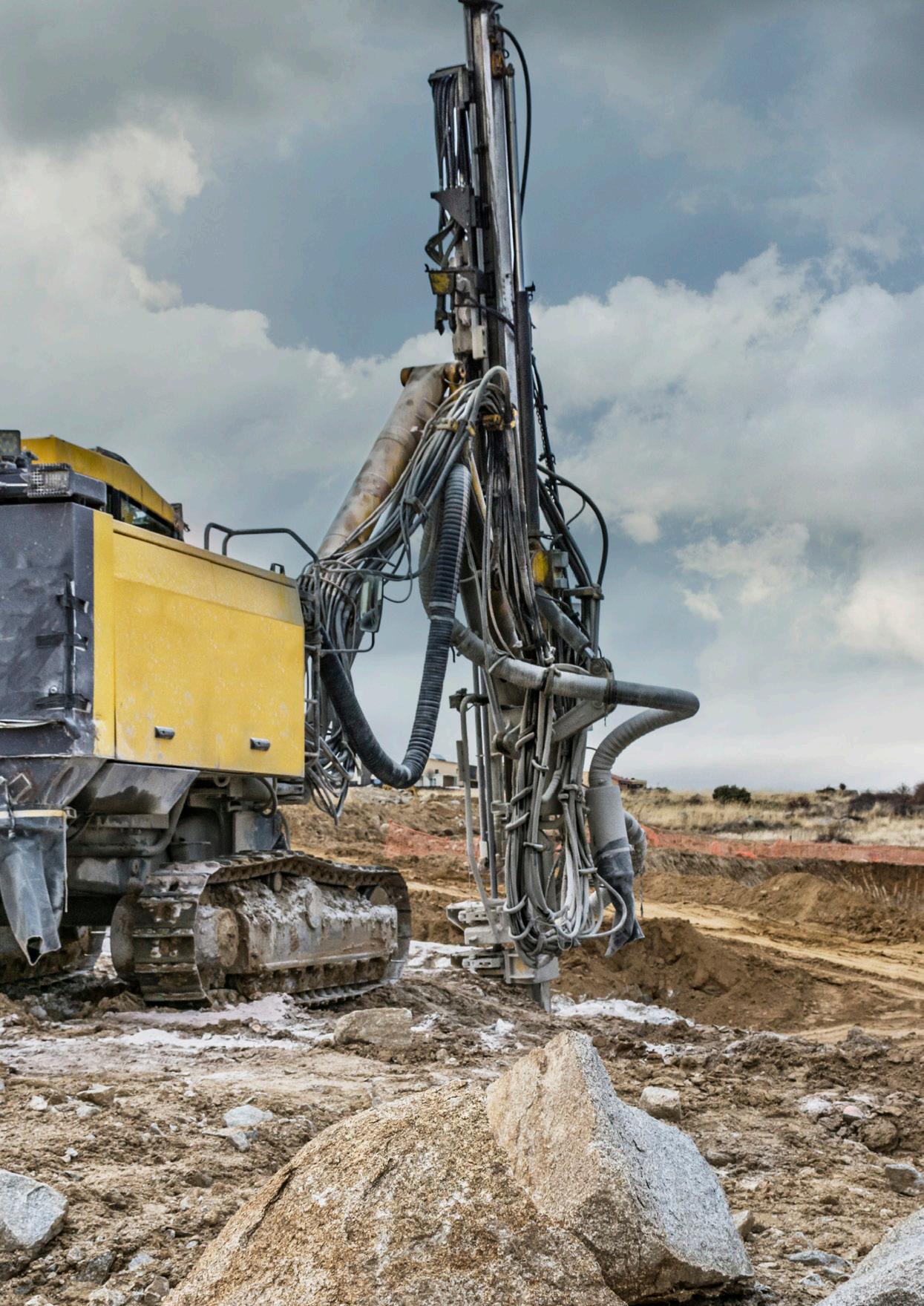


It didn’t surprise me when TGS, the Norwegian seismic data company, announced last May that it would work with the National Oil Company of Liberia (NOCAL) to reprocess more than 5 100 square kilometres of 3D seismic data captured in the offshore Liberian basin. After all, the company has a 20-plus year history working in west Africa. TGS has helped countries strengthen their petroleum laws and supported authorities’ efforts to promote licensing rounds and farm-outs.
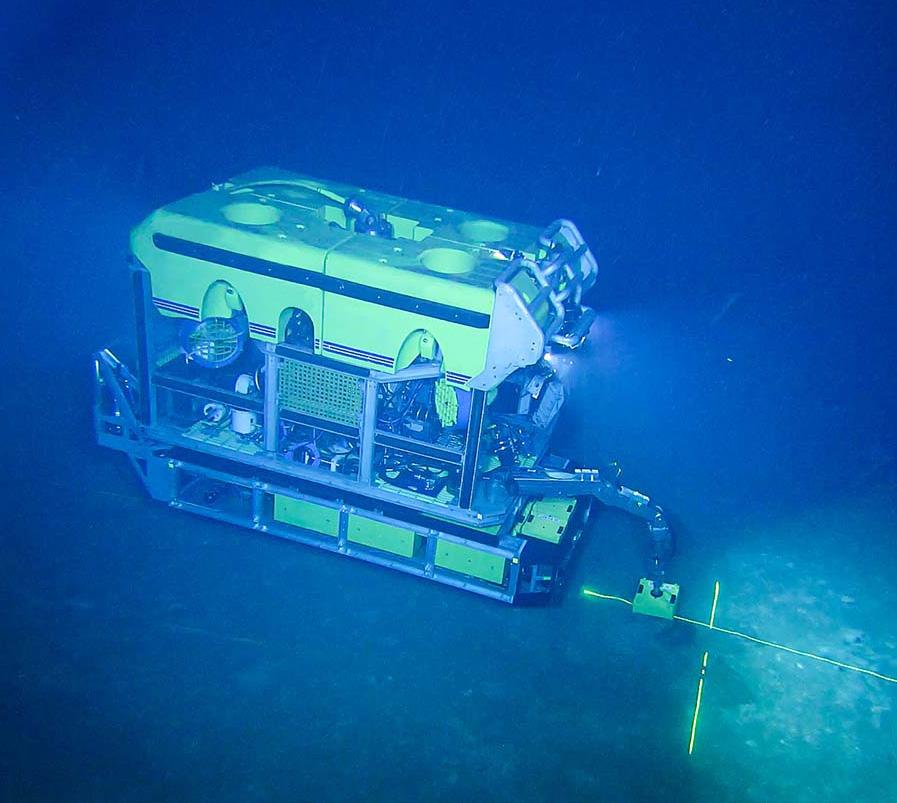
But the comments from one TGS leader struck me. In a simple sentence, the remarks from executive vice-president for the Eastern Hemisphere, Will Ashby, expressed both pride in the company’s African involvement and the company’s steadfast promise to continuing its work on the continent. “TGS has been active in acquiring data over the West African Transform Margin for the past two decades, and this update of a key 3D survey demonstrates TGS’s ongoing commitment to exploration success in the country.”
This very public proclamation was made amid a seemingly endless stream of calls by Western voices and environmental activists to halt in Africa to support global zero-emission goals. As a result, I find it particularly encouraging
to hear someone say they want to help our energy industry succeed. Fortunately, that’s typically the sentiment I hear from geoscience providers in Africa. These companies, along with the Houston-based EnerGeo Alliance —the global trade alliance for the energy geoscience industry—have been willing to stand alongside African energy stakeholders, even as others try to demonise them. The geoscience providers here understand why we advocate for African countries to continue capitalising on their petroleum resources: They’ve seen the devastation of energy poverty for themselves and recognise the good that oil and gas can do for African countries, businesses and communities.
investments.
Companies large and small— including TGS, CGG, Fairfield Geotechnologies, Petroleum GeoServices, PXGEO, SAExploration, Shearwater GeoServices, and Azimuth GeoSolutions—are valued, impactful members of Africa’s energy industry. The work they do helps drive exploration. It improves Africa’s prospectivity and helps us retain our role in the global oil & gas market.
And that importance will continue in the years to come as companies strive to produce the natural gas Africa needs to power electricity generation, industrialise and create a pathway to a just energy transition.
Geoscience firms allow oil & gas companies to locate and measure the quantity of natural resources, minimise risks and maximise the return on their
The company emerged from the unbundling of the Atlantis Group of Companies (an international mining contracting company that specialised in Raise Boring for over 22 years) in 2018.
With a number of remarkable milestones under its belt, Laone Mining continues to make waves and has now formed a historical footprint in the Raise Bore Drilling Industry within its 5 years of existence.
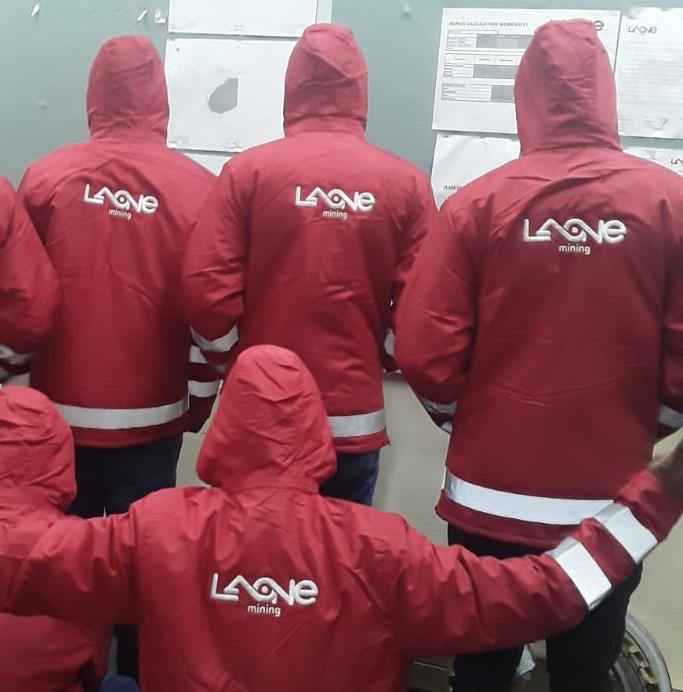
Founded and shepherded by Managing Director, Thapelo Mothibinyane (Professional Engineer) and Executive Director, Tshepiso Mothibinyane (Professional Scientist); the company boasts a solid blueprint of expertise; skills and knowledge across the Engineering, Mining and Science industries, along with a dynamic and highly skilled Team.
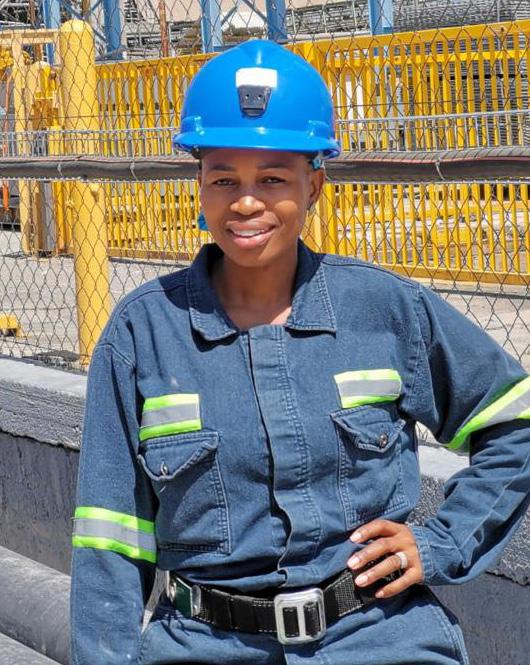
The expeditious growth of the business highlights the company’s mission which strives to add value and growth to all its stakeholders. The assortment of skills that contribute greatly to our business acumen, include interpersonal skills which are imperative for the intention to fulfil our Vision in becoming the leading South African mining solutions provider which services clients globally.
OUR SERVICES: We offer a plethora of services nationwide; ranging from Raise Bore Drilling, Cover/Diamond Drilling, Percussion Drilling and Labour Contracting.
1. UNDERGROUND DRILLING SERVICES:
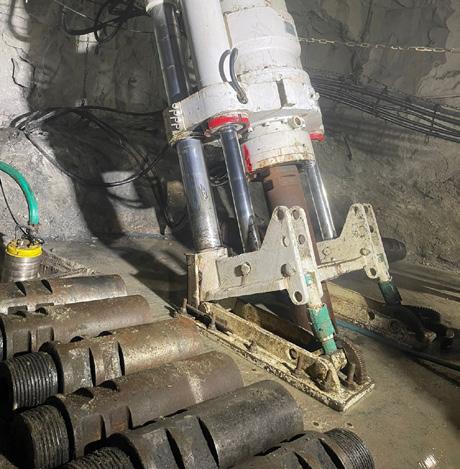
• Raise Bore Drilling (228mm - 2.1m diameter with nominal depth of up to 280m): Drain holes, box holes, ventilation holes, ore passes and draw bells
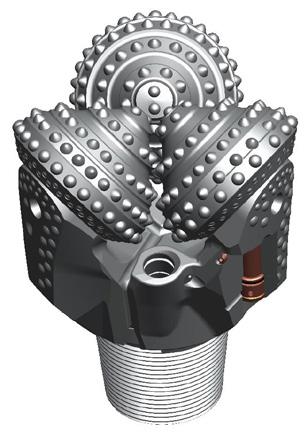
• Percussion Drilling (64mm – 152mm diameter with nominal depth of up to 100m): Drop Raise and smaller diameter drain holes
2. LABOUR CONTRACTING FOR UNDERGROUND SERVICES:
• Employ skilled labour back up teams to assist our clients with preventative maintenance, condition monitoring and repairs of underground trackless mobile machinery (TMM) and mine infrastructure systems
CONTACT US:
Tel: 010 210 7305
Email: info@laonemining.co.za
Website: www.laonemining.co.za

• Cover/Diamond Drilling (nominal depth of up to 300m): Geological samples (core sizes: AQ, BQ & NQ)
• Underground Conveyor Belt cleaning services employing skilled and semi-skilled labour back up teams

Laone Mining and Engineering is the first and only 100% black-owned company (with 51% black woman ownership) specialising in Raise Bore Drilling in South Africa.
The tagline of EnerGeo Alliance (formerly the International Association of Geophysical Contractors) is, “Energy Starts Here”—and that’s a great way to describe the energy geoscience industry. Long before companies drill for oil, they rely on geoscience firms to provide seismic data acquisition, processing and interpretation to help them pinpoint where hydrocarbons could lie thousands of feet below the Earth’s surface.
Geoscience firms allow oil & gas companies to locate and measure the quantity of natural resources, minimise risks and maximise the return on their investments. They also help oil & gas companies in Africa make decisions about things like well placement, which minimises risks to people and the environment. They have been the driver of discoveries in Namibia, Nigeria, Congo, Cameroon, South Africa, Mozambique, Equatorial Guinea, Senegal, Mauritania, Ghana, Gabon and many other countries.

Beyond the value geoscience companies provide through their day-to-day operations in Africa, many of them are helping battle misinformation through their membership in the EnerGeo Alliance. In January 2022, for example, the alliance and chamber issued a written response to an anti-seismic advisory issued by the Scientific Advisory Group on Emergencies (SAGE). SAGE had said that seismic surveys to be conducted on South Africa’s Wild Coast—a section of coast in the country’s Eastern Cape—would harm the environment and negatively affect local, small-scale fishing communities.
As the African Energy Chamber (AEC) and EnerGeo Alliance wrote
at the time, those claims simply weren’t true, and the data SAGE released on scientific surveys were based on distortions and misinformation. Nikki Martin, president of EnerGEO, said that, in reality, SAGE was doing more harm than good. “By opposing seismic surveys, SAGE has now aligned itself against South Africa’s pathway out of energy poverty, shutting out the one industry that accelerates the energy transition and supports the country’s net-zero emissions goal,” she wrote. Martin ain’t no punk. She’s the real deal.
The AEC is fortunate to be able to support the views and encourage an organisation that recognises the importance of ongoing gas exploration and production in Africa, and is willing to stand up against attempts to hinder it.
When Africa Oil Week moved to Dubai and pushed for that country to be the home of African energy discussions and dealmaking, it was the geoscience companies that called me and said we must oppose this dumb move and their lack of understanding of Africa and its oil & gas industry. They urged us to create African Energy Week—and it has been huge.
These geoscience companies have not only been friends of the AEC, but they have been our advisers, our teachers, and have worked hand in hand with us on various business development opportunities and have been steadfast in their defence of the work we do to defend our right to drill and explore for energy. I respect the difficult situation they face in some Western countries where radicals will not listen to science but to politics.
Meanwhile, it’s heartening to know that the oil & gas companies operating in Africa have expert geoscience providers working with them— companies that, as TGS’s Ashby suggested, realise how important hydrocarbon exploration is to Africa’s energy future.
As I said, the geoscience companies in Africa are making a positive difference. I respect them for their expertise and for their commitment to our continent. They’ve shown they believe in Africa when others don’t.
NJ Ayuk Executive Chairperson African Energy Chamber




In late 2019, as the African oil & gas industry was looking to the future with optimism, Offshore Engineer wrote that the continent had reason to expect “a more productive 2020”. Instead, the unforeseen happened, and the COVID-19 pandemic had a devastating impact on the oil & gas industry in Africa and around the world.
But even at the end of 2021, during a fairly strong period for oil and gas, the publication mentioned that “delays and hiccups” were impacting licensing rounds—that is, the processes by which investors can seek oil & gas exploration licences from the government—and argued that improvements would have to be made going forward.
This is correct. Licensing process improvements were already needed in late 2019, and now that the oil & gas industry is in the survival mode, it’s more urgent than ever to streamline licensing.
While the details vary by country, the licensing round process has, in general, become too prone to delays and uncertainty. All too often, exploration & production (E&P) companies have to wait one or two years before the exploration projects they propose are sanctioned. These practices, which help protect the interests of oilproducing nations, made sense when crude sold for $100 a barrel and there were no stronger calls to
move away from fossil fuels. But they don’t make sense now. After all, conditions are still uncertain. True, crude pricing forecasts for 2023 are cautiously optimistic, and Goldman Sachs has said brent oil prices could reach $100 per barrel soon, up from the $50-range we saw in 2019. But the outlook for Africa’s petroleum market remains shaky at best. Underinvestment has been the biggest problem, and exploration activity is lagging behind.
And it’s not just Africa: The global oil & gas industry continues to feel the negative impacts of the COVID-19 pandemic, which dramatically lowered demand for petroleum products. As a result, oil & gas companies have made dramatic cuts to their capital spending programmes, resulting i n the postponement and cancellation of numerous E&P projects around the world.
Under these circumstances, it’s up to African oil & gas producers to do everything possible to encourage as much E&P activity as possible, particularly by international oil companies (IOCs). In the long term, of course, African producer states do need to lessen their reliance on oil & gas revenue. But for now, a number of them rely on it for much of their budgets. And as long as they do, they ought to ask for more. They should lobby for knowledge transfers, training, gas monetisation programmes and other significant opportunities
so that their strategically managed oil & gas operations can create pathways for economic growth and diversification.
I’ve made a case for the importance of strategic fiscal policies, from revised productionsharing contract (PSC) requirements to reduced tax and royalty requirements. Some of my friends in government have strongly criticised me for this and called me a sellout. I disagree with them and I still love them, but resource nationalism is not the way to go and it’s actually dangerous. I truly believe these changes are necessary to give IOCs an incentive to explore in Africa during the current downturn.
But we can’t stop there. We need to consider other pain points that discourage foreign operations in Africa and find ways to eliminate those challenges as well.
The licensing round process is one of those challenges. So why not remove this hurdle? Not all countries use licensing rounds; some use direct negotiation to approve E&P rights. I believe it’s time for more African oil and gas-producing states to choose this route. Negotiating with trusted explorers would help them avoid unnecessary delays and bureaucratic red tape. Making these changes would still allow them to emphasise their own priorities—and it may also make IOCs more likely to keep exploring within their borders.

Tiefenthaler is a specialist legal service provider - dedicated to the mining, engineering and construction environment. Over the years, we have been involved in many of the largest and most complex projects across the African continent and throughout the Middle East, Australia, Europe, and Asia.




Our standard is set by our highly experienced legal professionals who pride themselves on tailoring legal services to the needs of each individual client – an approach that, when coupled with a team of legal experts and consultants with diverse backgrounds and experience, leads to an unparalleled level of service.
Our standard is set by our highly experienced legal professionals who pride themselves on tailoring legal services to the needs of each individual client – an approach that, when coupled with a team of legal experts and consultants with diverse backgrounds and experience, leads to an unparalleled level of service.
Our flexible, adaptive, and collaborative style means that we bring value to our clients across many industries and in multiple jurisdictions around the world.
Our flexible, adaptive, and collaborative style means that we bring value to our clients across many industries and in multiple jurisdictions around the world.
Our team has been recognised and acclaimed by the Legal 500, African Legal Awards, Chambers Global, IFLR1000, Finance Monthly, MEA Markets, Corporate Vision, Best Lawyers, and the Lawyers Global.
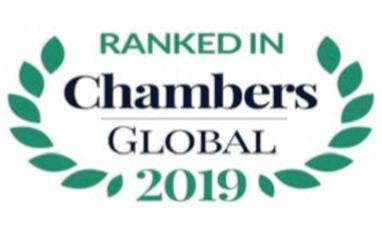

Our team has been recognised and acclaimed by the Legal 500, African Legal Awards, Chambers Global, IFLR1000, Finance Monthly, MEA Markets, Corporate Vision, Best Lawyers, and the Lawyers Global. “Legal solutions driven by industry specialists.”
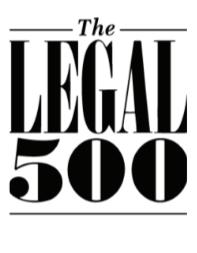
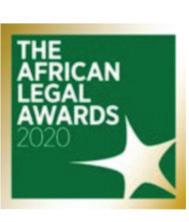
Our focus has always remained exclusively on the mining, engineering and construction environment and has been so for decades.
Our focus has always remained exclusively on the mining, engineering and construction environment and has been so for decades.
We have purposefully kept our approach exclusive to the mining, engineering, and construction environments and, in doing so, we have become true specialists in these fields capable of providing our services with confidence, proven accuracy and unparalleled results. Our services are rendered in many industries, some of which include:
We have purposefully kept our approach exclusive to the mining, engineering, and construction environments and, in doing so, we have become true specialists in these fields capable of providing our services with confidence, proven accuracy and unparalleled results. Our services are rendered in many industries, some of which include:
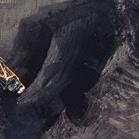

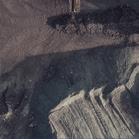
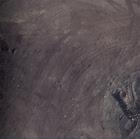



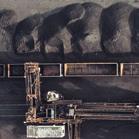


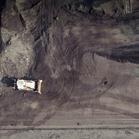


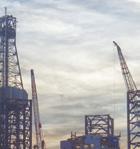
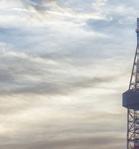



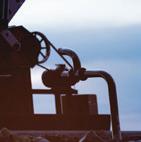

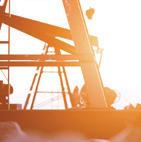


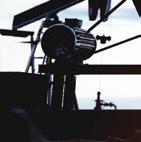
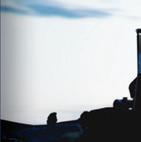
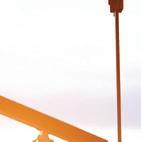
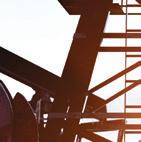

• Mining
• Mining

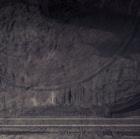

• Construction
“Legal solutions driven by industry specialists.”
- Procurement (Tender) Strategies
- Procurement (Tender) Strategies
- Contract Development
- Contract Development


- Project Risk Management
- Project Risk Management
- Contractual Claim Services
- Contractual Claim Services


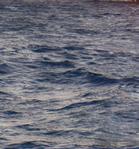














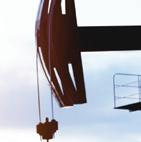
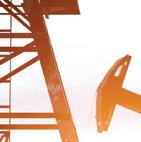
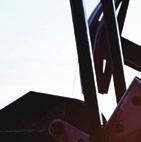





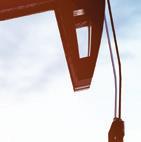
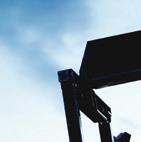











- Adjudication, Arbitration and Litigation
- Adjudication, Arbitration and Litigation
- Tiefenthaler Training
- Tiefenthaler Training
• Construction
• Engineering
• Engineering
• Oil and Gas
• Oil and Gas

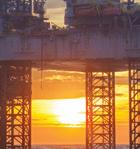

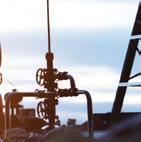

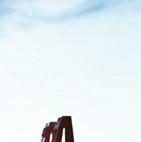

• Renewable and Non-Renewable Energy
• Renewable and Non-Renewable Energy

• Health Care
• Health Care
ABOUT US CAPABILITIES JOHANNESBURG: info@constructionlaw.co.za | CAPE TOWN: capetown@constructionlaw.co.za MOZAMBIQUE: mozambique@tiefenthalerafrica.com | DEMOCRATIC REPUBLIC OF CONGO: drc@tiefenthalerafrica.com www.tiefenthalerafrica.com | info@tiefenthalerafrica.com
• Retail and Accommodation
• Retail and Accommodation
Our capabilities and services in these industries range from project conception and execution to dispute resolution.
Our capabilities and services in these industries range from project conception and execution to dispute resolution.

Generally, during licensing rounds, companies submit bids or grants to issuing governments in hopes of being awarded an exploration licence—that is, the right to search for commercially feasible petroleum deposits. In the case of bids, the highest ones get a licence. Grant approvals, by contrast, are based on prospective explorers’ experience and capabilities. Licences are awarded for set periods of time, and if commercially viable amounts of oil or gas are discovered, the explorers can negotiate contracts with the government for the right to extract what they find.
The licensing round process does have benefits. For participating countries, it helps make sure interested companies have the necessary financial resources and technical capacity to explore successfully. It ensures projects are completed in a timely manner. It also helps E&P companies, since the process lays out their rights.

But again, even with their strengths, licensing rounds can create unacceptable hardships for oil companies: Countries tend to take a long time to make their licensing decisions. And when capex budgets have been slashed, waiting one (or even two) years to learn if an exploration project has the green light just won’t cut it. In today’s economic environment, it just isn’t realistic to insist on putting much-needed resources aside on the chance that they’ll be needed in a year or two.
And if we’re going to be honest with ourselves, we have to admit we’re seeing more and more examples of licensing rounds gone wrong: from extended delays in getting the bidding process started to instances of little to no company participation.
Consider Algeria, where oil & gas production rates were already declining in 2019, before the pandemic, largely because of repeated project delays caused by, among other challenges, slow government approval. During four licensing rounds, Algeria saw minimal interest from investors.
Nigeria, too, is known for the less than speedy pace at which it sanctions exploration projects. Even before COVID-19, its slow movement on this front contributed to a decline in oil production over a 10-year period.
And in 2019, as I mentioned, there were licensing round mishaps in multiple countries. “Some rounds, for example, Ghana’s First Licensing Round, have seen limited successes, while others have suffered delays or suspension,” GlobalData upstream oil & gas analyst Toya Latham told Offshore Magazine. “Gabon’s 12th Licensing Round and Somalia’s First Offshore Licensing Round have been extended in 2020 (in part due to delays in enacting pivotal legislation), while Madagascar’s long overdue licensing round has been suspended.”
And we saw licensing rounds go wrong before that. In early 2018, for example, only one company responded to Cameroon’s licensing round, in which eight blocks had been available. Think about it, just one—and the bureaucrats still think all is right.
These issues haven’t been limited to Africa, by the way. In 2017, only one bidder responded to an opportunity to explore five offshore blocks in Lebanon. Brazil had a couple of licensing rounds fizzle in late 2019: the Transfer of Rights Surplus Round, which only brought in two bids, and the Sixth Production-Sharing Bid Round, which only attracted one bid.
Fast-forward to the oil & gas industry of 2023. In today’s reality, delayed licensing round starts and long waits for decisions are more likely than ever to dim companies’ interest. These challenges aren’t trivial, since operating in Africa already represents significant risks and expenses for IOCs. Companies must, for example, factor in the possibilities of security concerns and lapses in infrastructure along with the risks that come with every exploration project, including the failure to find commercially viable petroleum stores. Then there are the additional expenses of operating overseas, complying with local content policies, supply costs and myriad taxes and fees, among others.
Even with their strengths, licensing rounds can create unacceptable hardships for oil companies
I’ll be the first to trumpet the opportunities for IOCs in Africa, from our vast stores of oil and gas to large swaths of unexplored territory. But we have to be realistic about how businesses work. Companies need to be able to make a reasonable profit in order to justify their outlays. And when the oil & gas industry is in the midst of a downturn, as it is now, excessive risks and expenses are the last things IOCs can consider. So we have to work with IOCs and do what we can to help them profit in order to convince them to choose African sites over other options.
That’s why I think a transition from licensing rounds to direct negotiations makes sense for African countries. For one thing, negotiation periods would not be tied to rigid opening and closing schedules as licensing rounds are, minimising the risk of unreasonably long waits for a decision. Even better, direct negotiations would allow E&P companies to work with countries to discuss, and possibly adjust, the major terms of their production contracts.
With that kind of flexibility, companies with concerns about a country—whether they have questions about tax laws or local content requirements—may be willing to pursue exploration opportunities that they would have turned down, had they been required to participate in the bidding process.

True, even with a different licensing scheme, African countries will have other unique risk factors to address—factors that could make IOCs hesitant to invest in Africa. High on that list are concerns about corruption. That’s why the African Energy Chamber pushes so strongly for meaningful transparency measures. And again, we can’t overemphasise the importance of creating fiscal regimes more favourable to IOCs. Those measures should include, along with fairer tax and royalty requirements, the creation of natural gas–specific PSCs, rather than relying on crude oil PSCs as a one-size-fits-all template. A lot of countries have a difficult time working
with companies to get to final investment decisions on natural gas discoveries. Not only will gas PSCs help make it easier for companies to conduct profitable gas projects, they also could help prevent problems and lengthy negotiations when explorers find gas, rather than crude.
IOCs are, and can continue to be, invaluable allies to African nations. Their E&P activities contribute revenue that many oil- and gas-producing countries rely on now, but we also can work with them to foster economic growth and diversification for tomorrow. African countries need IOCs to create job and business opportunities today, but we also can work with them to achieve capacity building and technological know-how that will pave the way for a better future. It only makes sense to do everything possible to give explorers the certainty, predictability and incentives they need to be competitive in Africa.
NJ Ayuk Executive Chairperson African Energy Chamber
Research, development and innovation (RD&I) not only plays a crucial role in enabling the development of new products and services that lead to survival and thriving in competitive markets, but it also provides crucial knowledge and insights for improvement in existing processes.
The Mandela Mining Precinct (MMP)—a public-private partnership between the South African government’s Department of Science and Innovation (DSI) and the Minerals Council South Africa (MCSA) representing the private sector—was established in 2016 to assist with and co-ordinate the implementation of the South African Mining Extraction Research, Development & Innovation
strategy (SAMERDI). The process of revitalising South Africa’s mining R&D capability is at the heart of this strategy.
The organisation takes the format of a ‘hub and spoke model’ where the MMP is the management hub supported by several collaborating partners such as universities, science councils and industry partners as the research spokes. It is co-hosted by the Council for Scientific and Industrial Research, which also acts as the implementing entity on behalf of the DSI, and MCSA.
The initiative is implemented through five research programmes: real-time information systems, advanced orebody knowledge, mechanised mining systems, longevity of current mines, successful application of technologies centred around people, and several strategic initiatives.
Since its inception almost five years ago, the MMP has worked very hard to establish itself—and in recent years has put a key focus, together with its partners, on developing implementable technologies and solutions for industry.

Setting up an underground testing facility that will operate as an industry site for RD&I and allow for technology demonstration and testing also receives much attention. The test mine is situated 50 kilometres north of Rustenburg, in the North West Province.
Below are some of the MMP’s key technologies currently available for planned uptake by industry:
The Isidingo Drill prototype has been designed, developed and patented by two manufacturers: HPE and Novatek. It is a lightweight drill, which can drill faster than pneumatic drills. It is also hydropowered, less noisy and operated from the back supported area, which allows improved visibility during drilling.
A safer scraper winch operation system that only allows certified winch operators to operate the winch, but also switch off automatically when any person is in close proximity of the scraper or within the scraper’s pathway —detecting the cap lamps, preventing injuries to persons. It further records all activities of these occurrences on a data log system, which can be linked to existing reporting systems.
This technology aims to prove the diamond wire cutting ability to cut sizable blocks effectively and efficiently as an alternative pillar
extraction method to drill and blasting within the platinum ore.
It can illustrate the practical implementation of an automated ventilation solution/system in parts of a mine.
It enables mining specialists to determine and track the impact of data transfer projects on their mining operations’ bottom line, as measured by using typical mining metrics. It also presents the results in qualitative terms.
The integrated thermal acoustic device has been developed as a technology that potentially can assists miners in detecting loose rock by using a non-contact thermal camera method to analyse and display suspected loose rock to the user—which can be further verified using an acoustic method of tapping the rock and analysing the acoustic response. This contributes to ‘zero harm’ objectives by identifying risks associated with geological complexities.
The MMP has developed industry guidelines through its various research programmes on different subjects such as mine modernisation, inclusion of key stakeholders, the application of ground-penetrating radar, among others.
It has also facilitated the development of exemplar training modules to showcase to the industry the ‘art of the possible’ toward modern training for modern mining. The guidelines and course modules are available on the MMP website.

One of the MMP’s strategic objectives is to rebuild and reposition South Africa as a world leader in mineral extraction and supply chain RD&I by building human resources skills, capabilities and capacities. This is also to ensure mining research is seen as a viable career opportunity for new graduates and job seekers.

To this end, the organisation has embarked on several initiatives such as establishing SAMERDI research centres (SRCs) at four local universities and an 18-month internship programme where interns are getting exposed to practical research programmes and to the industry.
The SRCs, launched in November 2022, were established to assist with the process of developing and enhancing mining research capacity and are based at the universities of the Witwatersrand, Pretoria, Johannesburg and the Free State.
Each SRC is led by a research competence leader, who is a suitable qualified individual with sufficient gravitas in both the academic environment as well as within the mining industry, to offer mentorship and guidance to postgraduates.
The research competence leader is responsible for the supervision and development of postgraduate students in the area identified. Each SRC supports at least four master’s or doctoral degree students, of which at least one must be from a historically disadvantaged university.
Taking into consideration current trends and stakeholder requirements, the MMP will continue placing a strong focus on applied R&D and prioritising the transfer of R&D solutions to the industry. The organisation will also put a concerted effort into giving attention to the environmental sustainability and governance issues going forward.
For more information, visit mandelaminingprecinct.org.za
share than goes toward either profits or government tax.
At last year’s US–Africa Leaders Summit in Washington, the United States signed a historic memorandum of understanding (bit.ly/3IBC3w1) with Zambia and the Democratic Republic of the Congo to develop an electric vehicle battery supply chain.
At the summit, Zambian President Hakainde Hichilema also announced that KoBold Metals— an exploration firm backed by billionaires Bill Gates, Jeff Bezos and Sir Richard Branson—will invest US$150 million to develop a new mine in Zambia (bit.ly/3QzgfDi).
Zambia is particularly well positioned to supply what the world needs. It has substantial reserves of copper and cobalt—critical metals for the transition from fossil fuels to renewable energy. Due to their broad uses in wind- and solarpowered technology and electric vehicle production, these metals will play a crucial role in a lowcarbon future (bit.ly/3GwiMcA).
Copper demand is expected to increase up to threefold by 2040, while cobalt demand is expected to rise over 20-fold (bit.ly/3QzgiPu).
Zambia has 6% of the world’s copper reserves (bit.ly/3ZtiZpt), and the metal accounts for up to 80% of its export earnings (bit.ly/3GV93xN).
The coming copper boom presents Zambia with an extraordinary opportunity: to enable mining profits as well as to power inclusive growth.
But, as Zambia’s history shows, this is easier said than done.
Successive rises in copper prices have not translated into reducing poverty nor inequality. Zambia is still the fourth most unequal country in the world (bit.ly/3W347eN).
Based on our published research (bit.ly/3k9H2Kc) and expertise (bit.ly/3GW7RKJ)—including work with the International Growth Centre (www.theigc.org) in the London School of Economics, and engagement with the Zambian government on a research agenda for the country’s mining sector—we argue that Zambia can benefit from the energy transition underway. But it can only do so by harnessing the non-tax benefits of mining.
Non-tax benefits are the opportunities that stem from the mining activity itself. Most mining firms spend the bulk of their revenue on operational and capital expenditures—a larger
A non-tax benefit approach would mean Zambian companies and workers would participate in mining’s value chain, and Zambian communities would benefit from the infrastructure needed to extract and move the bulk materials.
In the past, Zambia has been more focused on capturing tax benefits through changes to the fiscal regime. But a balanced approach of a stable mining taxation policy and the pursuit of non-tax benefits could deliver broader gains.
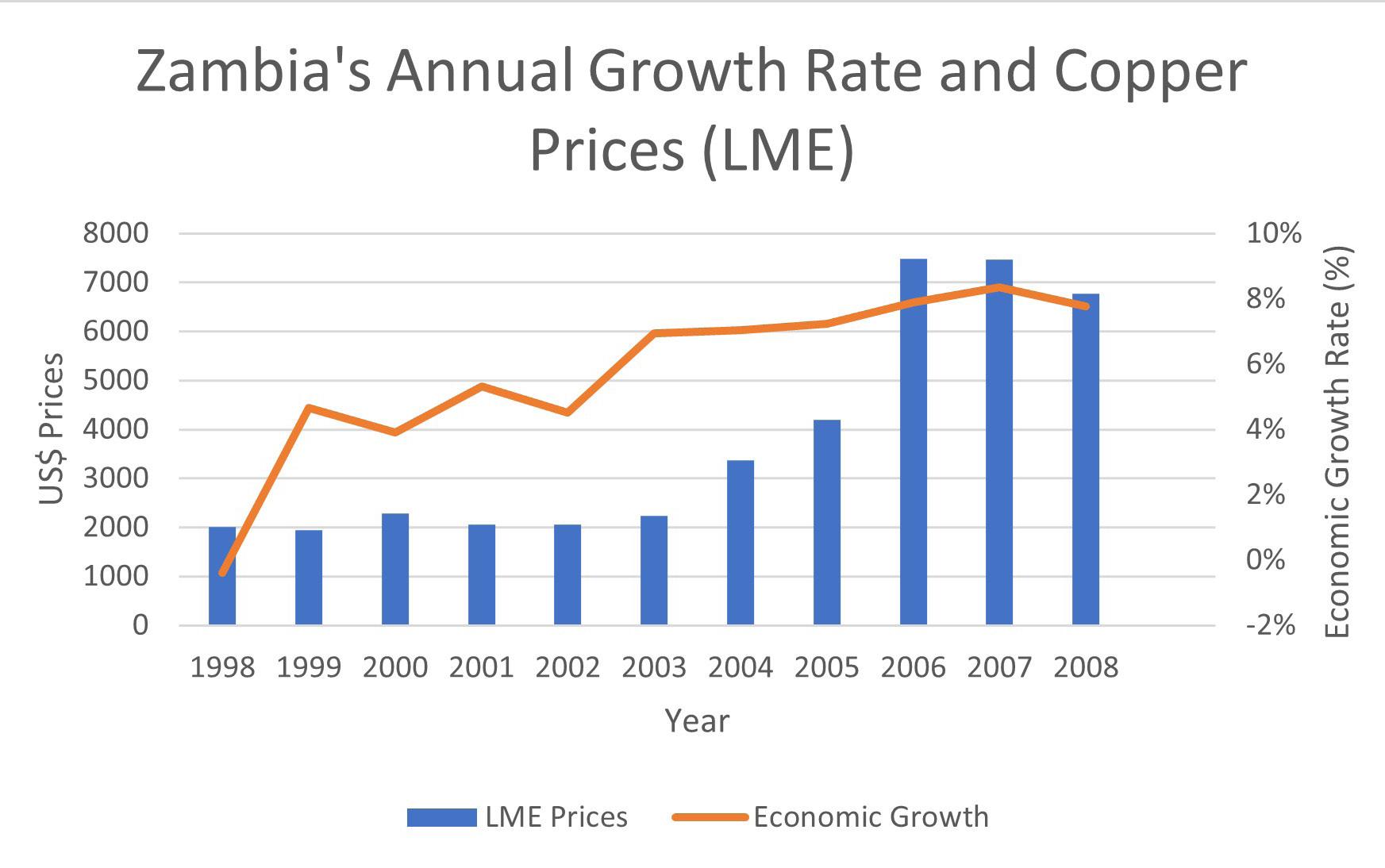
Zambia’s track record for converting commodity booms into tangible benefits is mixed at best.
Take the last commodity cycle. Sparked by growing demand from China, copper prices began to increase in 2004 (bit.ly/3IF1wo8). From 2003 to 2006, the price of copper, Zambia’s main export, more than tripled. Zambia’s economic growth rate took off in response (see below).
Source: Authors’ computations from World Bank Data
Climate change action could set off a copper mining boom: how Zambia can make the most of it by harnessing non-tax benefits
Yet, there was no corresponding impact on poverty and income inequality (bit.ly/3VWmsdm). Zambia’s Gini co-efficient, a measure of inequality, actually rose slightly during the cycle.
Even Zambia’s poverty rate, as measured by the percentage of the population living on less than US$2.15 per day (in 2017, purchasing power parity dollars), rose through 2010 before starting to reverse.
That year, a stunning 68.5% of Zambia’s people were living in poverty in a country where annual gross domestic product per person was a much more impressive US$3 125.52 (also in 2017 dollars) —four times the poverty rate.
During commodity booms, governments may be tempted to focus on capturing shortterm gains, which are frequently understood in monetary terms and primarily as tax benefits. For Zambia, this dynamic was overlaid on top of the disastrous advice the government had received on how to reopen its previously nationalised copper sector a decade earlier.
The Zambian government entered into unfavourable terms with new mine owners, offering generous tax incentives that led to a loss in tax revenue (bit.ly/3VXgo4d) just a handful of years before the copper price rose. This fuelled a fixation on getting tax revenue from the sector.
In 2008, amid the boom, Zambia introduced a windfall tax on mining profits (bit.ly/3Xl2Al9) in an attempt to capture more benefits from the sector. Less emphasis was placed on the largely untapped non-tax benefits.

Non-tax benefits (bit.ly/3Qw1zVi) are where the real potential to drive inclusive growth lies. Figure two (top) is a hypothetical one that illustrates the point. For every $100 generated in revenue, imagine that $70 is spent on operational and capital expenditures, that is, running the mine and expanding operations. This is not unrealistic—margins in the sector are not very high most of the time (bit.ly/3Qw1Do0).
If more of this were spent within the country rather than being sent abroad to import the majority of goods and services, it could contribute to business opportunities for Zambian companies and high-paying jobs for Zambian workers.
In 2012, the costs of goods and services consumed ‘upstream’ by the Zambian mining sector was valued at US$2.5 billion annually (bit.ly/3vZh5zm). Spending more of that domestically would have a much wider impact. It would create income and jobs directly.
Source: Authors’ illustration
And that income would finance further consumption and investment through the local economy.
Non-tax benefits can also emerge from ‘sidestream’ projects related to mining expenditure, adding value to the wider economy. The power, rail and road projects that enable mining activity can provide the backbone to make other economic activities competitive.
‘Downstream’ linkages are also possible: delivering the mining firm’s output to other firms that process it into intermediate goods and final products.

In 2012, 96% of all service were provided by foreign firms. Only 4% were provided by Zambianowned firms. These were mostly supplying non-core goods and services such as catering, security and office maintenance (see previous page).
Capturing more of mining’s upstream value chain in Zambia represents a major growth opportunity. One way to make this happen is through a local content strategy (bit.ly/3vZh5zm) that would give a greater role to Zambian suppliers and workers in the mining sector.

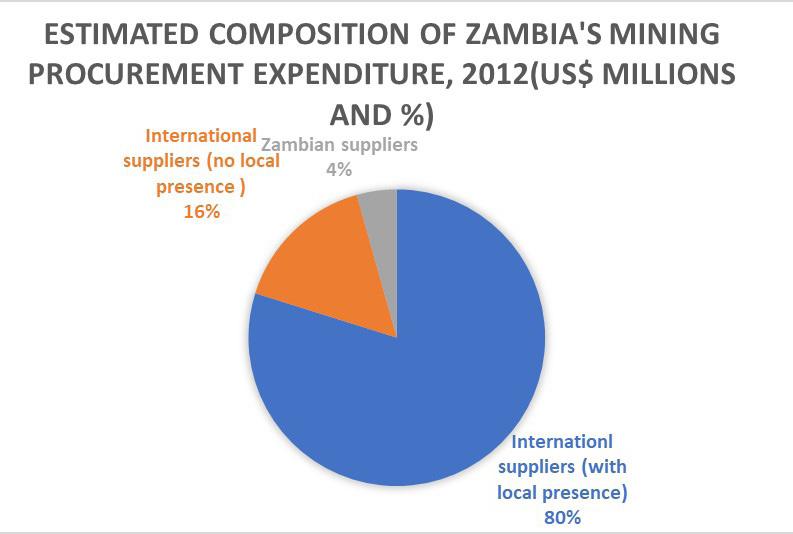
Another growth opportunity is the side-stream linkages with the electricity generation sector. For example, a mining company could sell surplus renewable power to the grid.
By advocating for non-tax benefits, we are not suggesting that taxation be ignored. Copper reserves over time will run out, or copper will be rendered obsolete by some new technology. This is the risk with all natural resources. A government must generate tax revenue from its mineral resources while it can.
Multinational companies can find ways to pay as little tax as legally possible. In the past, Zambia tried to stop this by tinkering repeatedly with the mining tax system—without getting results.
Better would be to leave the tax regime in place and instead focus on monitoring and collection.
Zambia’s government must keep in mind that poor governance will be a constraint to achieving any future— tax or non-tax—benefits.
This was the case during Zambia’s last boom. But the country is currently reaping a governance dividend with a new investor-friendly president, restored donor confidence and a recently secured International Monetary Fund deal.
The conditions are in place for Zambia to use this boom to generate inclusive development.
Twivwe Siwale
Head: Tax for Growth
International Growth Centre
London School of Economics and Political Science
Eric Werker
Source: Lombe 2020, adapted from Fessehaieet al. 2015:53
William Saywell Professor: International Business
Simon Fraser University
Non-tax benefits are the opportunities that stem from the mining activity itself.What would non-tax benefits look like for Zambia? Figure three shows the breakdown of Zambian mining firms’ goods and services expenditure.


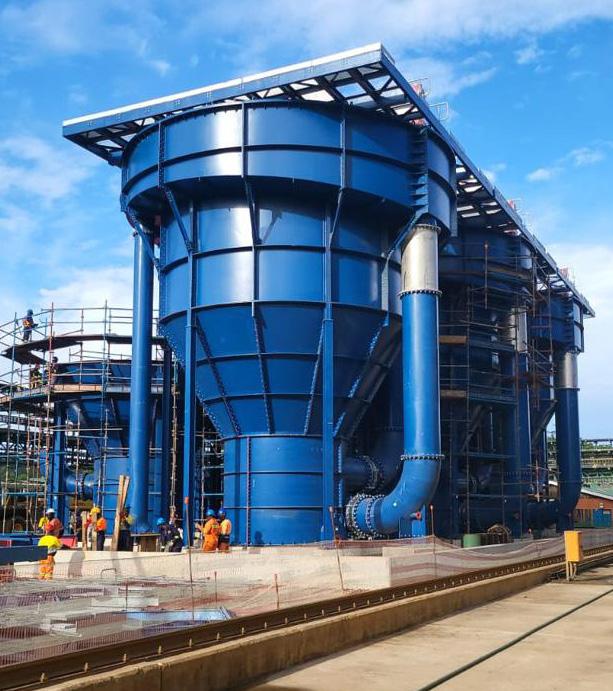


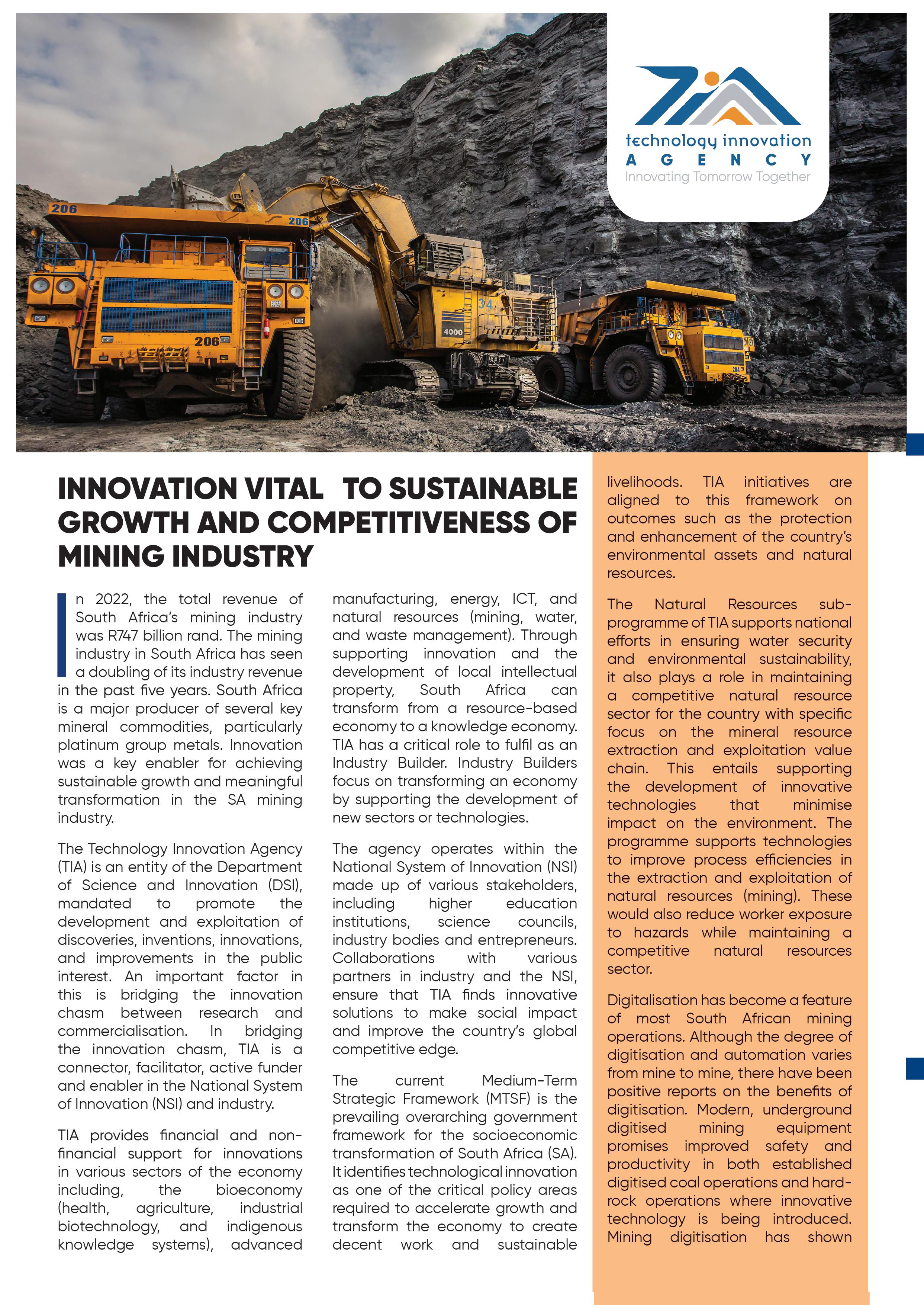
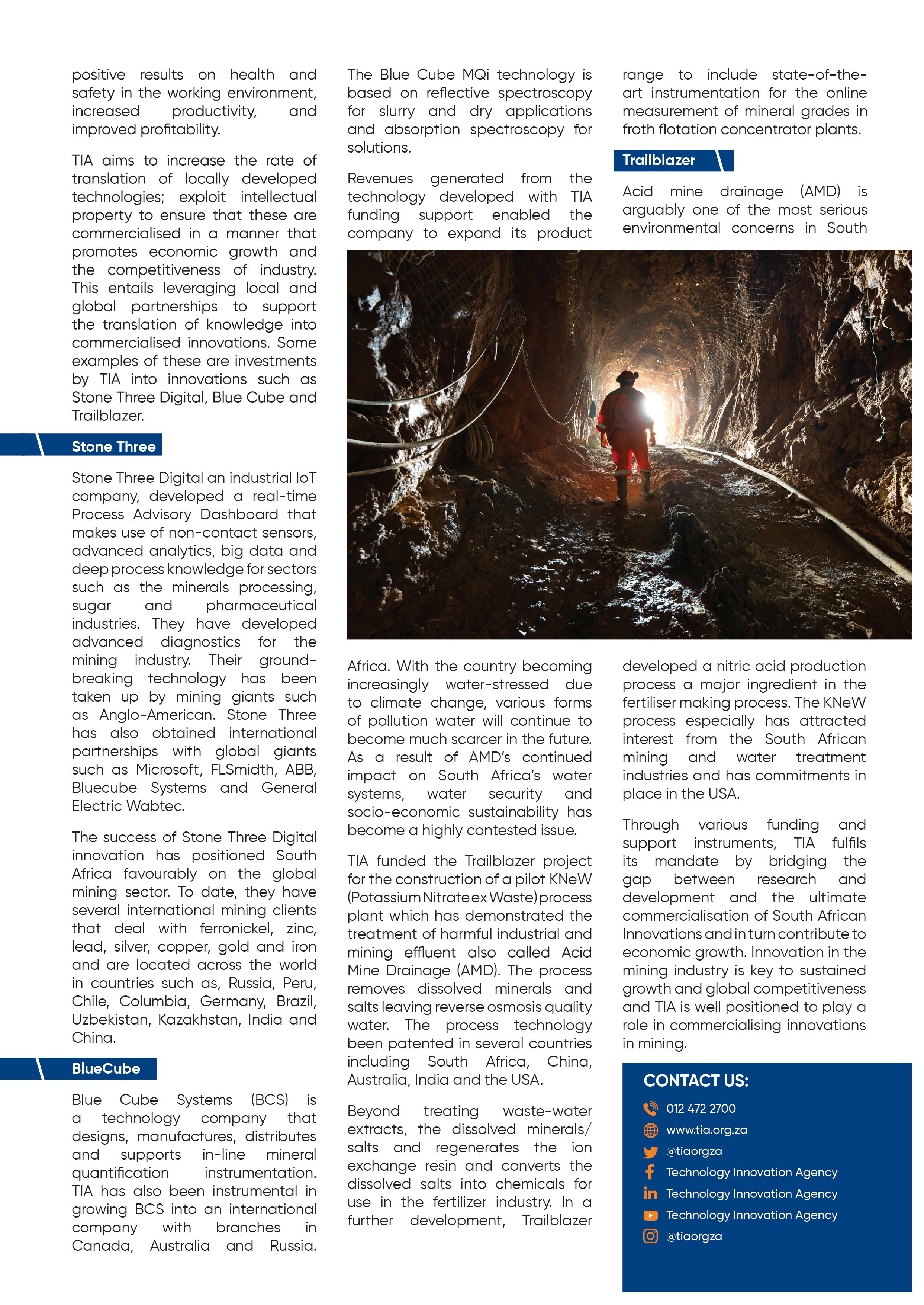
Endorsed by Gabriel Mbaga Obiang Lima, Minister of Mines and Hydrocarbons of Equatorial Guinea, Energy Capital & Power’s fourth-edition “Energy Invest: Equatorial Guinea” represents a complete report on investing in one of Africa’s most attractive energy markets.
All stakeholders are invited to participate in the report.
“Energy Invest: Equatorial Guinea 2023” investigates the country’s long-term development agenda; exploring the pathway to becoming a regional hydrocarbons hub; the intersection of natural gas and the energy transition; the future
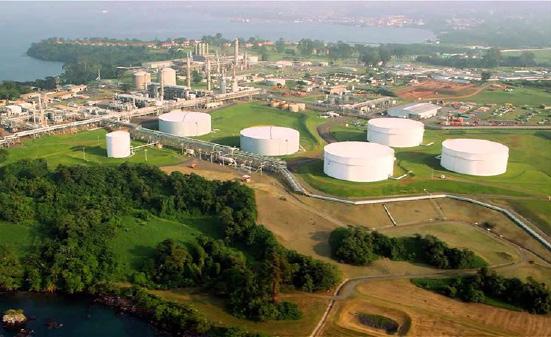
of oil development; and efforts undertaken by the government to develop an interconnected gas network in sub-Saharan Africa.
In 2023, Obiang Lima will act as president of both the Organisation of Petroleum Exporting Countries and the Gas Exporting Countries Forum (bit.ly/3XnZQ6Q). In this position, Equatorial Guinea is expected to play a critical role, shaping global energy dialogue and advancing the interests of African energy producers.
With an extensive expansion strategy currently underway which would see Equatorial Guinea become the processing hub of Central and West Africa, opportunities for investment
The latest edition of the “Energy Invest: Equatorial Guinea” report is the most comprehensive guide to the Central African nation’s diverse energy market
Guinea has taken the lead toward African gas monetisation and is set to play a crucial role in the world’s future energy mix.

are endless. Under the country’s wider Gas Mega Hub initiative (bit.ly/3Gv2S2l)—presenting investment opportunities ranging from power generation to liquid fuels—Equatorial Guinea has taken the lead toward African gas monetisation and is set to play a crucial role in the world’s future energy mix.
Projects such as the $330-million Alen Gas Monetisation project, the Alba Liquefied Petroleum Gas plant, and the Equatorial Guinea Liquefied Natural Gas facility speak to the size of the country’s reserves, investment prospects and future opportunities. With plans to expand exports even further, while connecting leading regional gas producers under the LNG2Africa initiative, Equatorial Guinea offers a series of integrated foreign investment and export prospects. Meanwhile, as a member of the Central African Economic and
Monetary Community, investment opportunities transcend geopolitical borders, with prospects to tap into the wider West and Central African markets open to global and regional investors alike.
Stepping into this picture, the fourth edition of the “Energy Invest: Equatorial Guinea 2023” report serves to ensure the country’s vision of becoming a regional gas hub translates into reality, providing investors with the tools and insight they need to make informed decisions in the market.

Energy Capital & Power managing director Laila Bastati states: “ECP has had the honour of promoting investment in Equatorial Guinea through its series of conferences and investment reports. We firmly believe that Equatorial Guinea has an important role to play in the energy transition and energy security through its resources across the region and internationally.”
The investment report’s fourth edition speaks to the longstanding collaboration between ECP, as the premier investment platform for Africa’s energy sector, and the Ministry of Mines and Hydrocarbons of Equatorial Guinea.
Visit www.EnergyCapitalPower. com for more information on release dates and where to find the “Energy Invest: Equatorial Guinea 2023” report.
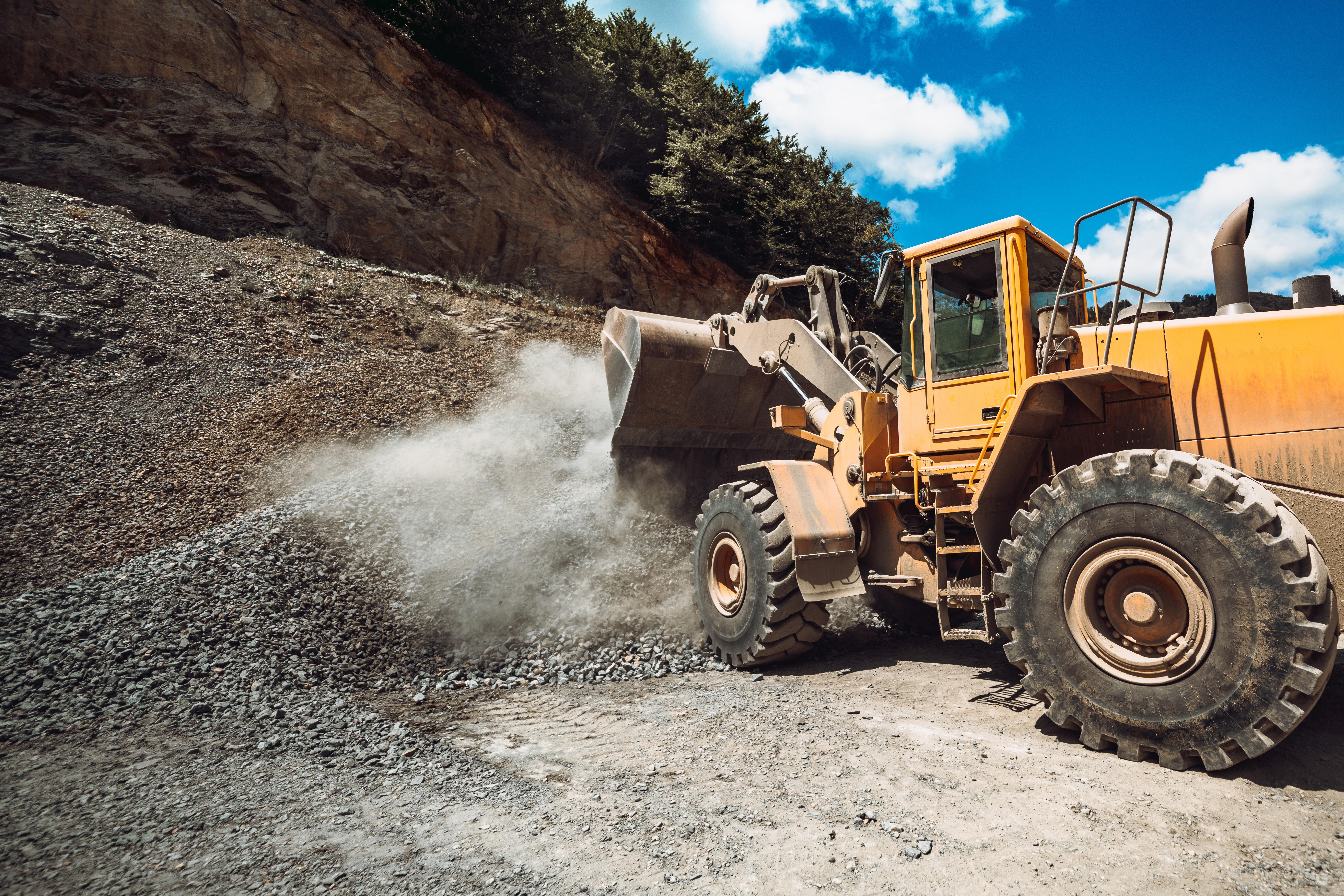


The Democratic Republic of Congo’s (DRC) conflict-affected eastern provinces are home to numerous protected areas. These areas host unique biodiversity and a range of threatened species such as the okapi, forest elephant and mountain gorilla. They are also part of the Congo Basin rain forest, which is a crucial line of defence against climate change (bit.ly/3ZDHsbX).
The same protected areas overlap with globally significant deposits of minerals including gold, coltan and cassiterite. Mining is rampant in these areas (bit.ly/3w4zGuf), including in the Itombwe Nature Reserve, Maiko National Park and the Okapi Wildlife Reserve.
Most of this mining is labourintensive artisanal mining, which makes use of basic technologies. In recent years, however, there has been a sharp increase in semi-industrial mining, which requires significant startup capital for the purchase of intermediate technologies such as dredges and pumps.
Both forms of mining have negative impacts on biodiversity conservation (bit.ly/3iFQX9M). Direct impacts include deforestation, soil degradation and water pollution.
More indirect effects stem from the construction of new roads to make mining sites accessible (bit.ly/3iCH399), and population growth in the vicinity of mines. This leads to further natural resource exploitation such as fuel and construction wood extraction, bush meat hunting and shifting agriculture.
This destructive mining in conservation areas often happens under the protection of state and non-state armed actors who take a portion of the revenues. Thousands of people also depend on such mining for their livelihoods.
The economic importance of mining makes it difficult to stop extraction in protected areas. It is also at the heart of the complex linkages between mining, armed conflict and conservation in eastern DRC. Our study (bit.ly/3ZwypJI) set out to grasp these linkages, which is crucial for designing effective measures to safeguard protected areas.
Based on research in the Okapi and Itombwe reserves, we found that mining sparks conflict between different branches of the state, between entrepreneurs and local populations, and between artisanal
and semi-industrial miners. In a militarised environment, these conflicts can spark violence.
Mining is rampant in protected areas because it generates incomes for citizens, officials and armed actors. Entry barriers are low, and miners’ earnings are higher than those of comparable groups in the population (bit.ly/3WcT9TZ). For many families, mining is one of the few opportunities for social mobility (bit.ly/3ISahvh).
Mining revenue also tops up the meagre wages of numerous administrators, soldiers and other state officials. In the DRC, the official salaries of state workers are low or remain unpaid. Most of these workers make money on the side and extract revenue from citizens through various forms of taxation, protection fees and extortion (bit.ly/3XaVoIK). They are also under pressure to do so from their hierarchy, which expects a share of the income.
Officials from the agency responsible for regulating artisanal and small-scale mining (Service d’Assistance et d’Encadrement de l’Exploitation Minière Artisanale et à Petite Échelle), and the provincial Ministry of Mines often tax mining activities in protected areas.
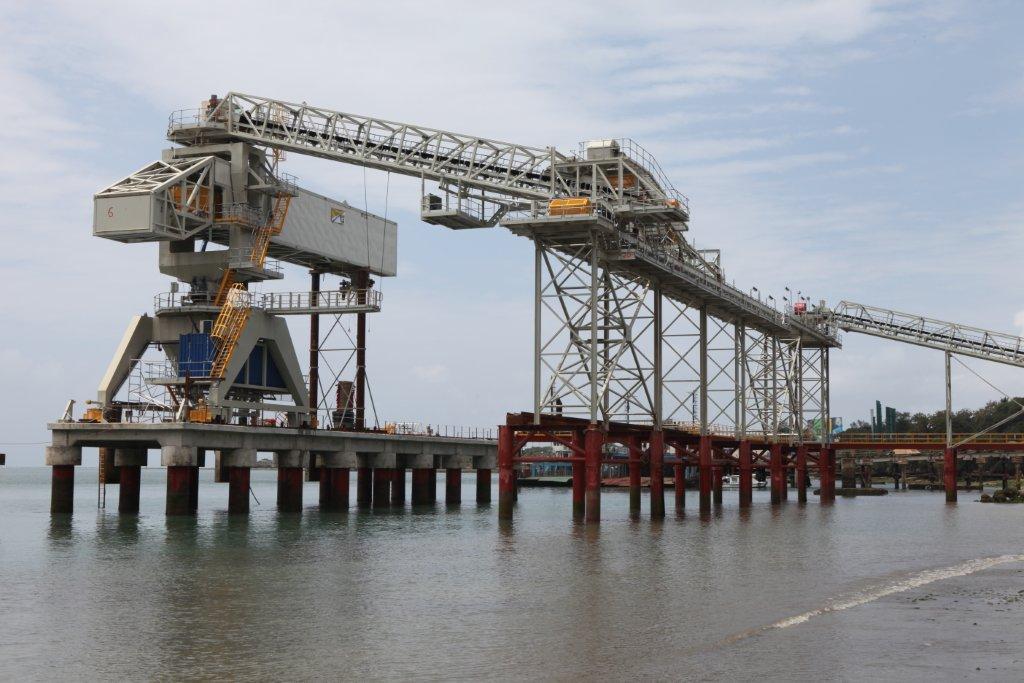
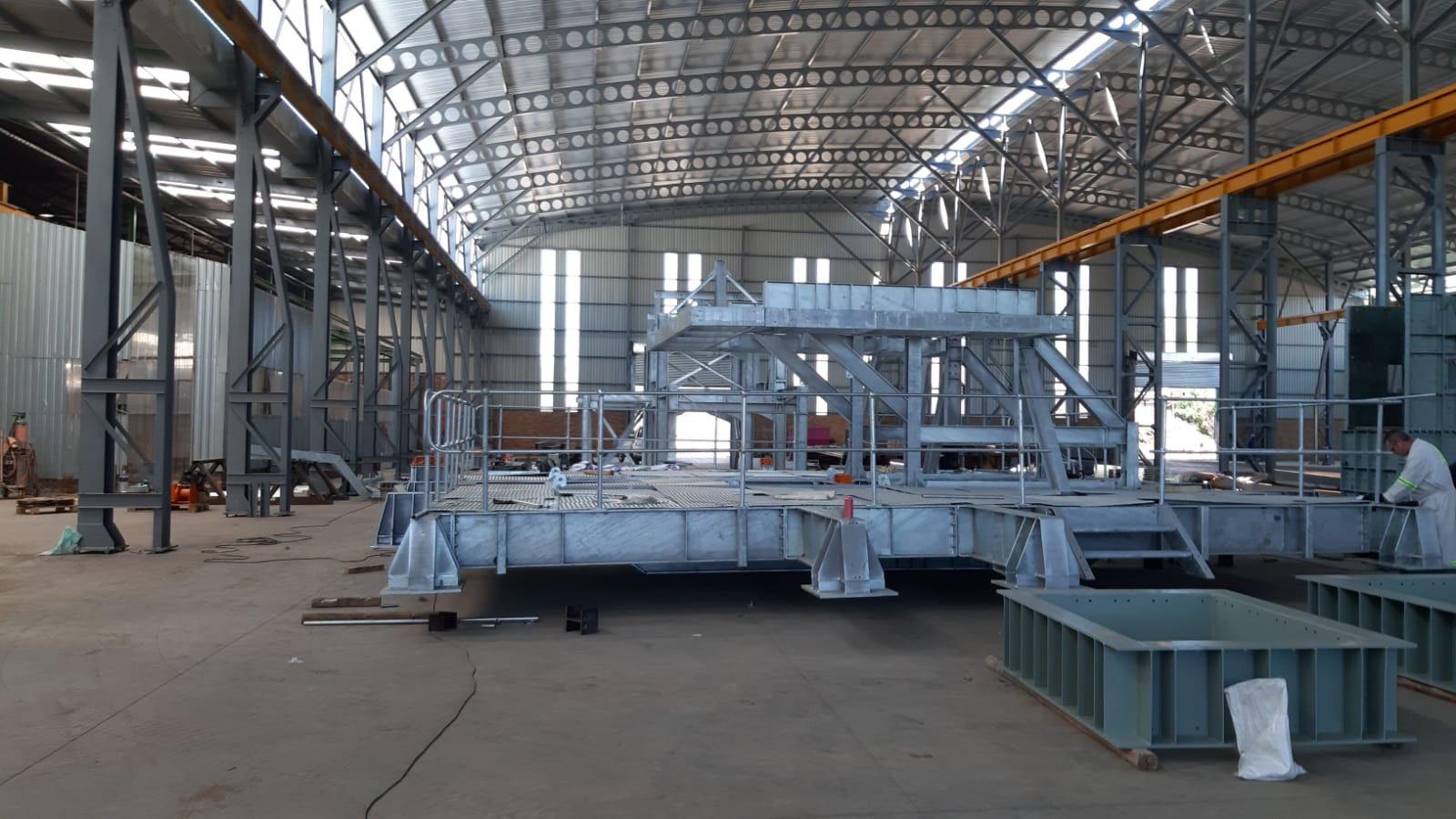

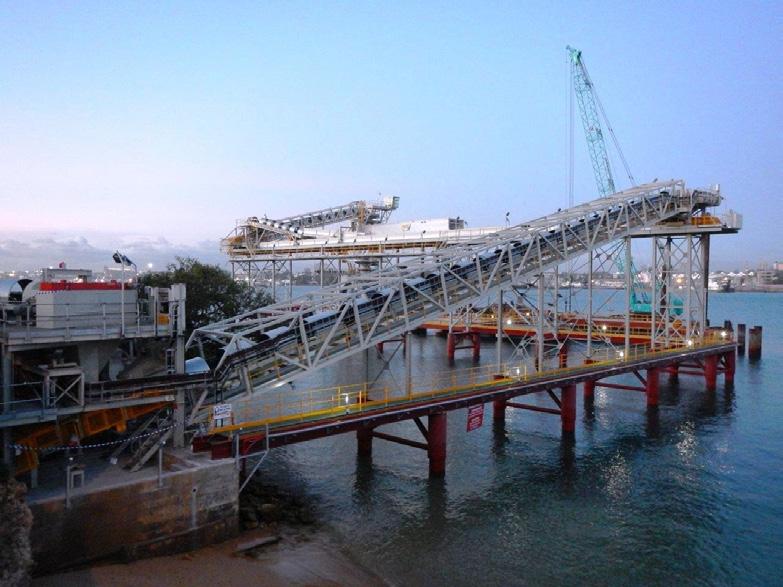

The Congolese armed forces substantially enrich themselves by protecting this mining, which is forbidden in most conservation areas. Armed groups also benefit by imposing taxes in mining sites and at roadblocks (bit.ly/3w8jXtU).
The recent increase in semi-industrial mining, often run by Chinese entrepreneurs (bit.ly/3CTGwGK), has substantially benefited the Congolese army. The senior officers who protect these mining operations deploy army units to guard the installations and seal off the area from unwanted visitors.
The mining administration, too, has benefited from this development. For instance, the Mining Cadastre, the agency responsible for issuing and managing mining titles, has started to circulate a new map of the Okapi Wildlife Reserve with a different perimeter (bit.ly/3k8mZeX). This has allowed the agency to issue concessions inside the boundaries of the reserve, while arguing that they are located outside it.
Because mining is lucrative for many people, our research shows it has considerable knock-on effects on conflict dynamics.
To start with, mining creates friction between different branches of the state and different administrative levels. The environment ministry has contested the new map of the Okapi Wildlife Reserve circulated by the Mining Cadastre. The governor and mining ministry of South Kivu province took measures to regulate semi-industrial mining by Chinese companies around the Itombwe Reserve. These, however, were halted by national authorities who claimed the provincial level did not have the authority to do so (bit.ly/3XebGRj).
On the ground, semi-industrial mining has sparked conflict by prompting the sometimes violent displacement of artisanal miners (bit.ly/3H8RxXd). This has led some
of them to join armed groups, or to an upsurge in violent banditry.
Semi-industrial mining has also led to disagreements (bit.ly/3iA3rA0) between mining companies and local populations around social investments, employment and compensation for the destruction of agricultural fields.
Combined with competition around accessing revenues, these conflicts have contributed to a spate of armed group attacks on Chinese mining operations.
The involvement of high-level officials and the importance of mining income make it difficult to stop destructive mining from taking place in protected areas.
Moreover, closing down artisanal mining operations by force without offering other opportunities to make a living has often proven to be counterproductive (bit.ly/3CQzja6). Displaced miners may simply return to mining sites, sometimes getting the help of armed groups to do this.
Where armed groups and army units lose their income from mining, they may resort to other ways to get money—such as violent banditry.
The fact that different branches of the state are at odds with each other poses further difficulties. It is impossible to curb or better regulate mining in protected areas when national and provincial authorities toe a different line or when the military violates restrictions imposed by civilian authorities.
The Congolese agency for nature conservation (Institut Congolais pour la Conservation de la Nature, ICCN), which is responsible for protected area management, lacks the political clout and resources to make a difference (bit.ly/3GNdoSm).
For instance, the Okapi Wildlife Reserve covers over 13 000 square kilometres, but the ICCN has
only enough rangers to conduct regular patrols in 15% of this area. In some areas, ICCN staff have been found to be complicit in authorising illegal resource exploitation (bit.ly/3Xtyw70).
What can be done to improve this situation? To start with, it is important to differentiate between semi-industrial and artisanal mining. Semi-industrial mining, in particular gold dredging, is more destructive for the environment and benefits comparatively fewer people. Banning it from protected areas is more urgent and more feasible.
Banning artisanal mining appears difficult, so better regulating and containing it may be a more successful strategy in the short term. This is what has happened in the Itombwe Nature Reserve, where artisanal mining activities are still permitted in certain parts.
It is also crucial that different agencies and layers of the state co-operate. To promote such collaboration, international donors supporting administrative and security sector reform need to get the message across that profiting from mining in protected areas is not acceptable.
However, it is ultimately up to the Congolese government to ensure state servants are properly paid and that they respect the law.
Judith Verweijen Assistant Professor International Relations & International Organisation University of Groningen Fergus O’Leary Simpson Postdoctoral Research Fellow Institute of Development Policy University of Antwerp Peer Schouten Senior Researcher Danish Institute for International Studies
Gundo Group — under the leadership of Mulalo Colin Tshivhase —provides dedicated specialised services across the mining , logistics , construction, engineering and environmental services industries
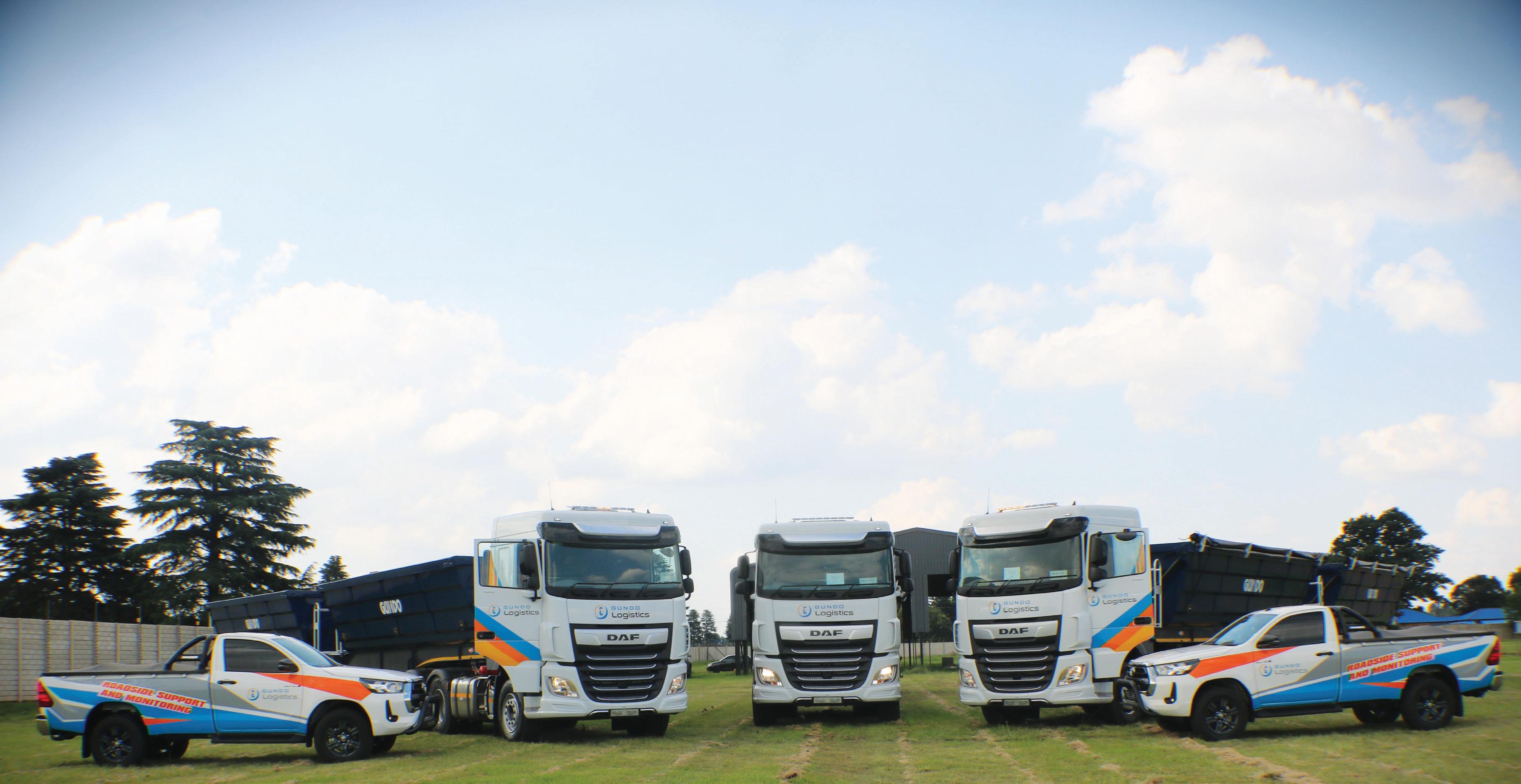
Gundo Group is a diversified group of companies providing industrial business solutions. It prides itself on upholding the highest standards for quality customer service and delivery, by continuously improving its structures and systems, and adopting the latest in technology. The first company to be formed in the group was Gundo Engineering and Projects in 2005, with an initial focus on waste management and
recycling. The company then diversified its offering to include commodities trading, engineering and project management and, most recently, energy management. Gundo Group has developed key strategic alliances with likeminded brands in order to offer customers dedicated specialised services across the mining, construction, engineering and environmental services industries. At the helm of Gundo is group chairperson and CEO, Mulalo Colin
Tshivhase. His professional career includes working for various blue-chip companies such as Anglo American, Mittal Steel and First National Bank—building up vast expertise in mining, logistics, construction, infrastructure development, energy and waste management. Among its diverse portfolio, the following are just a few of the companies under the Gundo Group umbrella:
www.gmplant.co.za
This community-focused mining services and material handling company is based in Mpumalanga. It is 100% black-owned, and more than 60% black women–owned. Furthermore, 30% of the company is owned by woman youth community members. GM Plant Solutions provides a pit-to-port solution by supplying experienced management, equipment, machinery and highly skilled operators committed to adhering to mining safety elements and procedures. Its main focus is on uptime and efficient productivity. The company offers an extensive range of material handling services that include, but are not limited to: ROM feed, discard handling, plant operations, loading and stockpiling of resources. It also provides bulk material handling services. In addition, GM Plant Solutions has a wide range of mining and construction plant equipment that is serviced, maintained regularly, and made available for hire.
www.gundogroup.co.za
Gundo Logistics renders logistics and fleet management solutions for clients in the mining and industrial sectors. It has strategic partnerships with companies that have a national footprint in the logistics space. The fleet consists of side tipper trucks, flatbeds and tautliner trailers. Services include: transportation of bulk commodities; rail siding management; logistics management studies; and warehousing and storage.
www.4am.co.za
Loading, hauling, crushing and screening. 4Arrows moves earth of approximately 6 million tonnes per month. Its team of innovative and creative individuals, paired with the raw strength and stateof-the-art
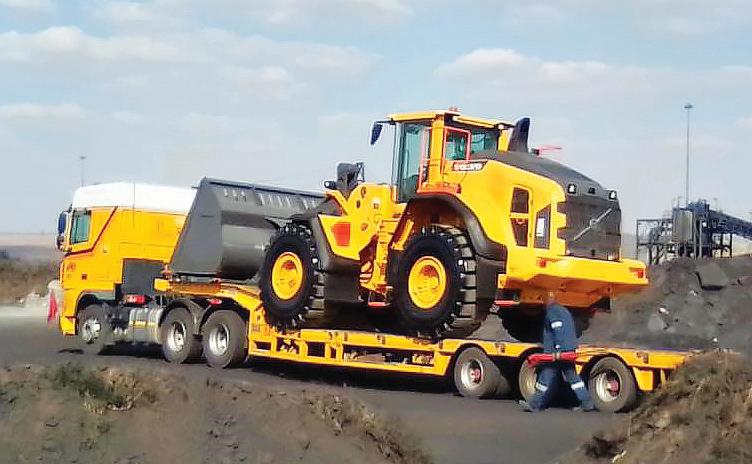
yellow machines, make this possible. This well-established, diverse contract mining and civil engineering company offers mining and beneficiation solutions that are customer-centric and promote environmental sustainability. Its people readily cross disciplines, sectors, environments and territories to drive smarter thinking and solutions, and connect projects with global excellence. 4Arrows eliminates the headachesof maintaining an equipment fleet and moving ore to the plant. From greenfield start-ups to final reclamation, it is the contractor you can depend on to handle all mining-related activities, anywhere in Africa. The core of 4Arrows Mining is loading and hauling of raw materials and on-mine operations in hard-rock mining. It also offers full-service crushing and screening solutions plus ore beneficiation services; construction management tailored to each client’s unique needs; on-mine logistics; specialty engineering services; equipment solutions; asset management; safety; and human resources.
also able to assist with local and crossborder transportation, to the closest proximity of the final destination, of mining spares/equipment and any other legal commodities. All pilots employed by Maverick Air Charters are dedicated and professional, and will meet the highest standards expected by clients. They are subject to ongoing proficiency and capability training, with continual evaluation to ensure they exceed expectations —safety is never compromised.
Maverick Air Charters
www.maverickair.co.za
Maverick Air Charters strives to fill a niche in the air charter and cargo markets, linking various destinations within southern Africa while maximising profits by identifying and serving key customers via key routes. The company removes most of the difficulties that make airline travel so stressful. No rowded airline desks, no long walks through terminals, no long security lines, no overbooked planes. Private air charter is also cost effective, convenient, flexible, safe and confidential. Maverick Air Charters is
• Aviation: Maverick Air Charters

• Petroleum & Energy: NS Energy
• Industrial Services Including Commodity Trading, Environmental Management Services , Energy and Water Management: Gundo Engineering & Projects
• Financial Services: Medaco Revenue Solutions, Revenue Enhancement Agency , Turbine Capital and Musevhe Capital and Mining Solutions
• Mining and Plant Rental: 4Arrows Mining and Engineering , GM Plant Solutions
• Material Processing: 4 Arrows Crushing
• Information Technology: MfundoPedia
• Logistics: Gundo Logistics and Maverick Air charters
• Sanitary Fittings and Plumbing Services: Gundo Evolution
The full Gundo Group and Associates portfolio
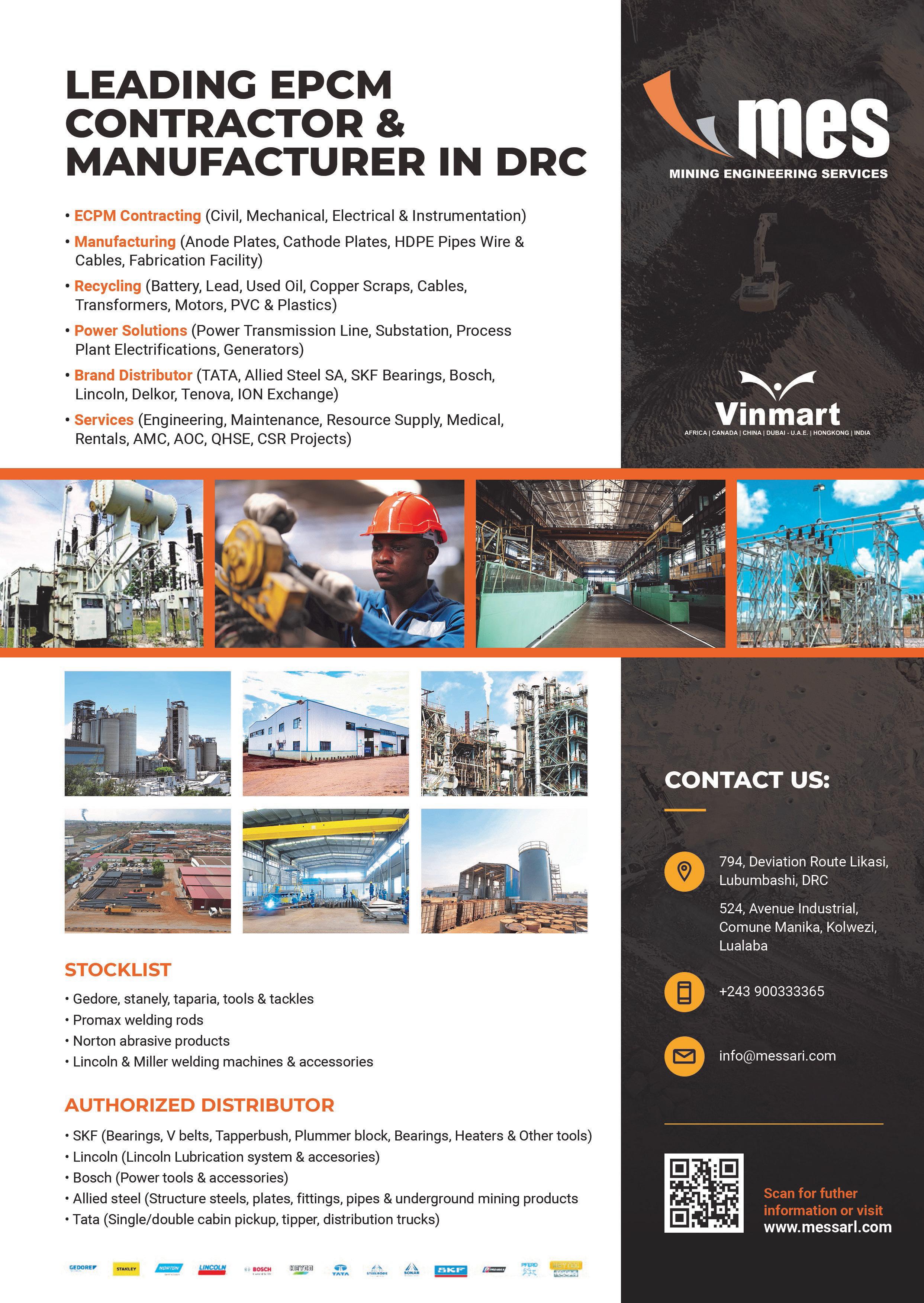
After a year marked by record-smashing floods, fires, heatwaves and droughts, the urgent need to act on climate change has never been more apparent. And yet, the International Energy Agency (IEA) has found that coal burning for electricity generation reached record levels in 2022 (bit.ly/3IO5Q4E).
Why? Largely because rising natural gas prices, due to sanctions on Russia, drove demand for less expensive coal to fill the gap in energy supply. The report, titled “Coal 2022”, finds Russia’s invasion of Ukraine has “sharply altered the dynamics of coal trade, price levels, and supply and demand patterns in 2022”.
The good news, however, is the world’s coal use has peaked—and will soon rapidly decline. This is because new solar and wind power station capacity is being installed 18 times faster than new coal. In many countries, retiring coal power stations are being replaced by solar and wind.
The IEA report, released at the end of 2022, suggests global coal use rose 1.2% last year, surpassing 8 billion tonnes for the first time and the previous record set in 2013. Indeed, China, India and Indonesia —the three largest coal producers— all hit production records.
If there is a silver lining, we have reached peak coal, and it is only down from here. “The world is close to a peak in fossil fuel use, with coal set to be the first to decline—but we are not there yet,” says Keisuke Sadamori, the IEA’s director of Energy Markets and Security. “Coal demand is stubborn, ... pushing up global emissions. At the same time, there are many signs that today’s crisis is accelerating the
deployment of renewables, energy efficiency and heat pumps—and this will moderate coal demand in the coming years. Government policies will be key to ensuring a secure and sustainable path forward.”
However, severe climate damage will result from a prolonged tail end of the coal industry.
The IEA found that, despite high prices for coal, there is no sign of big investment in export mining projects. And this, it says, “reflects caution among investors and mining companies about the medium- and longer term prospects for coal”.

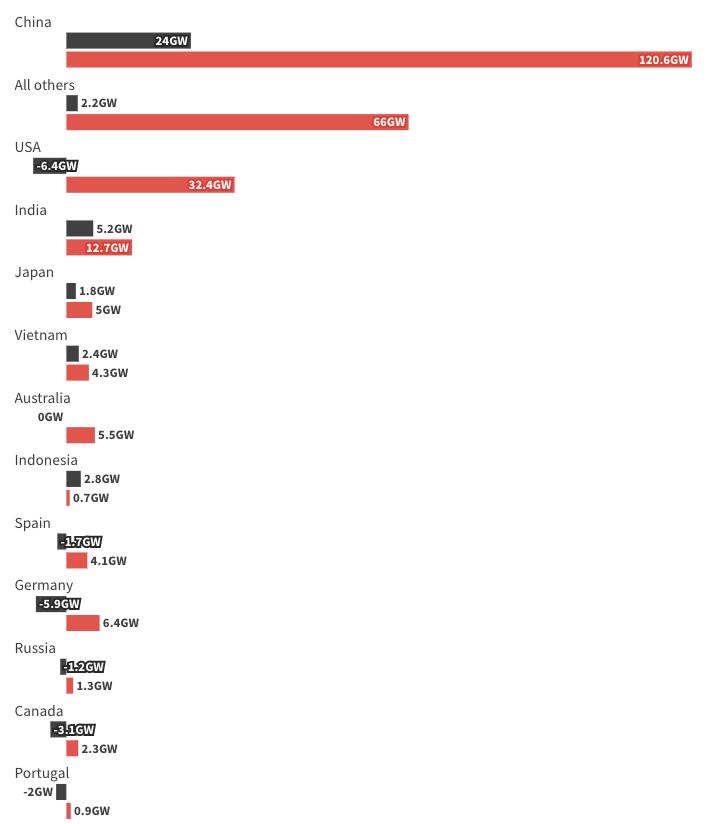
In 2021, about 250 gigawatts of new solar and wind generation capacity was installed worldwide (bit.ly/3QXBAXf), compared with only 14 gigawatts of net new coal generation capacity (bit.ly/3Zyhg2t). Thus, new solar and wind capacity is being deployed 18 times faster worldwide than net new coal capacity.
So, it follows that solar and wind generation will rapidly overtake coal generation, as most existing coal power stations will grow old and retire before 2050.
Source: Authors
Reduce the quantity of road haulage vehicles on the road.

Reduce road accidents and deaths
Reduce carbon emissions
PMT’s using rail reduces bureaucracy and the related costs. The number of permits needed is also reduced
PMT’s using rail eliminates border queuing

Reduce expensive road repairs
PMT’s can be used on standard flat bed trucks thereby opening the SME’s market inclusive of indigenous companies

PMT’s eliminate dead legging: liquid cargo one way, solid cargo the other way...
In many countries—such as Australia, the United States and Germany—old coal power stations are being retired faster than new coal power stations are being built. In most countries, new renewable generation capacity (mostly solar and wind) is being installed much faster than net new coal capacity.
Policy changes around the world have also reduced investment in new coal power stations. For example, the Asian Development Bank no longer lends to build new coal-fired power stations (bit.ly/3H9Xsvc).
The cost of coal per tonne has increased from around US$100 before 2021 to US$400 now (bit.ly/3koXpSY). This is also suppressing interest in the construction of new coal power stations.
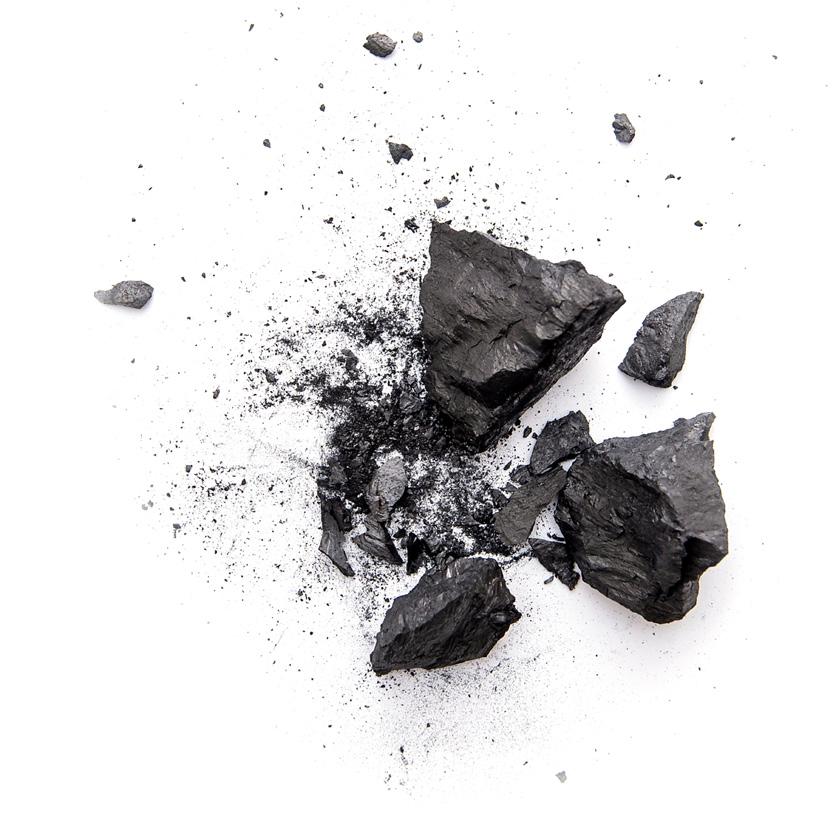
Solar and wind generators dominate new power station construction. Solar and wind generators comprise threequarters of global net new generation capacity. This is because they are cheap compared with fossil, nuclear and other renewable technologies.
This market dominance of solar and wind is compelling evidence that they are the most competitive and practical method of deploying new electricity generation capacity today. Power generation from solar photovoltaics, for instance, increased by 22% in 2021, compared to 2020 levels (bit.ly/3XpZ6Ou).
By 2031, at current solar deployment growth rates of 20% to 25% per annum, we expect the global installed capacity of solar energy to pass the combined capacity of nuclear, hydroelectricity, gas and coal.

Most countries have vastly more solar and/or wind than needed to meet their energy needs without relying on imports—even densely populated countries such as Japan (bit.ly/3XcLXJ1), Indonesia (bit.ly/3X6KxQ5) and Nepal (bit.ly/3w41PBs). Sourcing most energy supplies from their own solar and wind boosts nations’ resilience in the event of war, pandemics, natural disasters and trade disruption.
The compelling economic advantage of solar and wind is now clear. But in many countries, there are impediments to their rapid deployment. This includes fossil fuel subsidies, and a lack of an open electricity market that allows the low-cost solar and wind to be discovered by the energy market. Solar and wind are by far the most prospective options to achieve deep and rapid decarbonisation. Some countries are leading the way, and the rest of the world must soon follow.
Andrew Blakers Professor: Engineering Anna Nadolny Research Officercoal demand, supply, trade, costs and prices against a backdrop of rising concern about energy security and geopolitical tensions. It also provides forecasts to 2025 for demand, supply and trade—by region and by coal grade—and contains a deep analysis of China, whose influence on the coal market is unparalleled by any other country and in any other fuel.
Download the full report at www.iea.org/reports/coal-2022
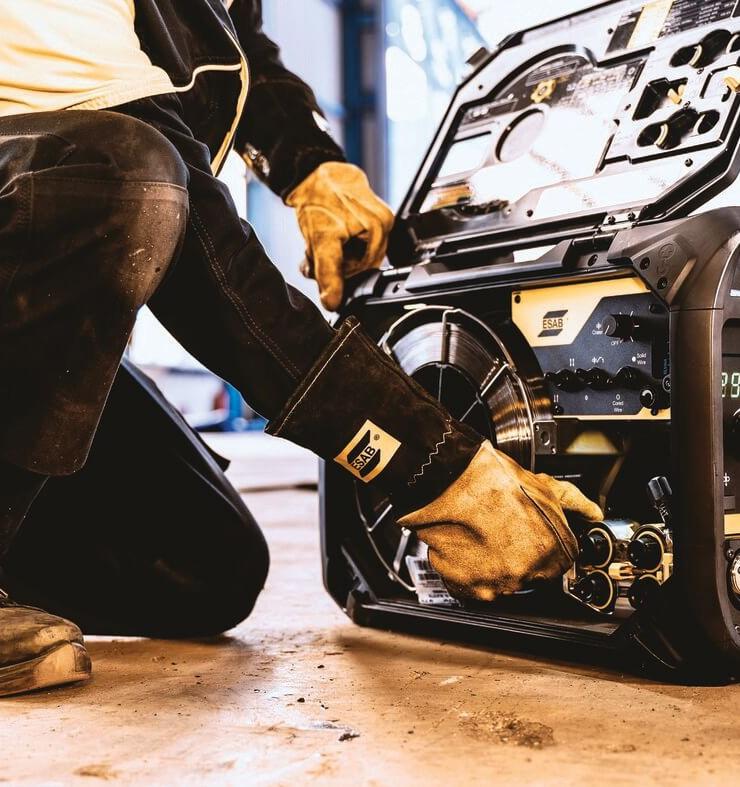

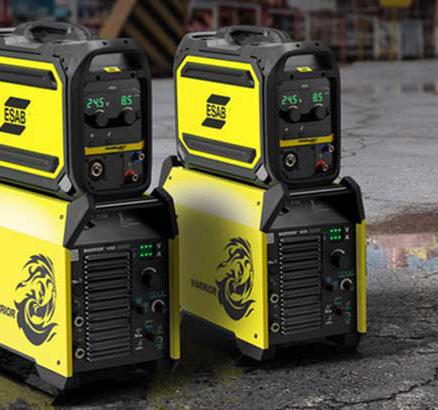
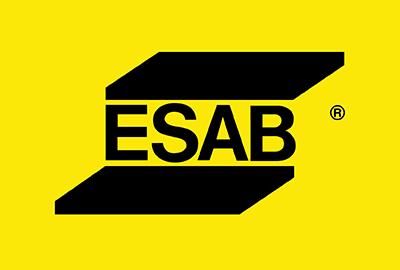

ESAB is a world leader in welding and cutting equipment and consumables. Our innovative, world-renowned equipment and fabrication technology solutions are developed with input from our customers and built with the expertise and heritage of a global manufacturing leader. Only ESAB offers complete welding and cutting solutions for the most demanding industries. From filler metals to a suite of digital services, our products are designed and tested to work together to deliver maximum productivity and unmatched quality.

